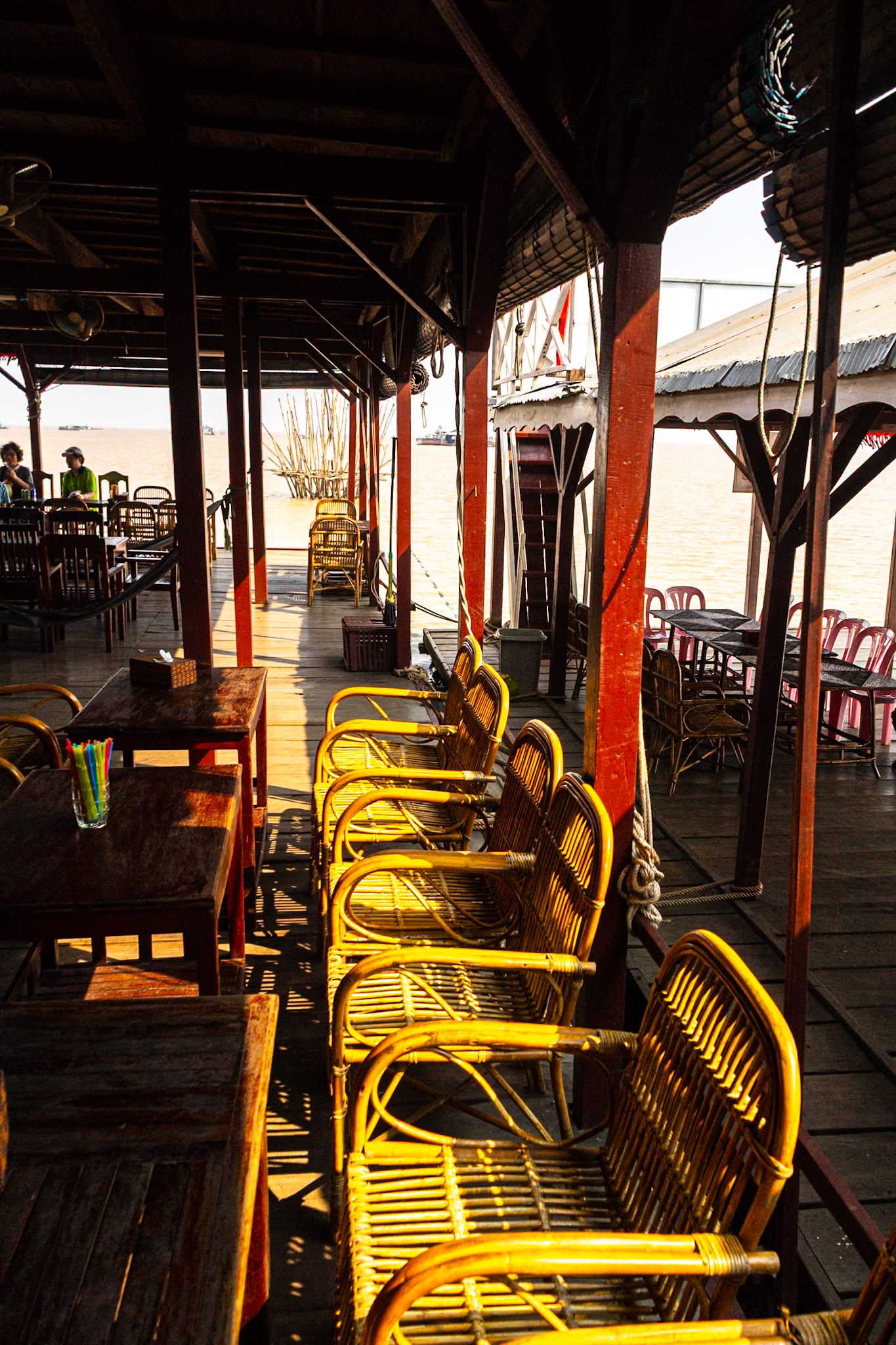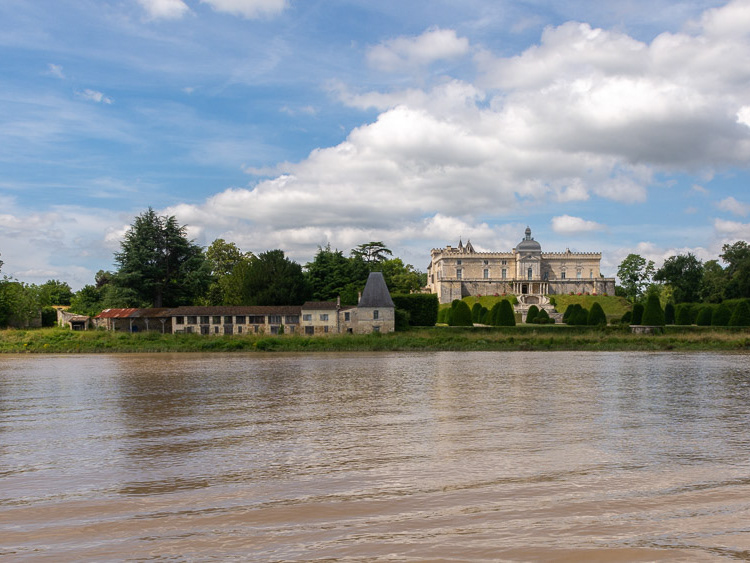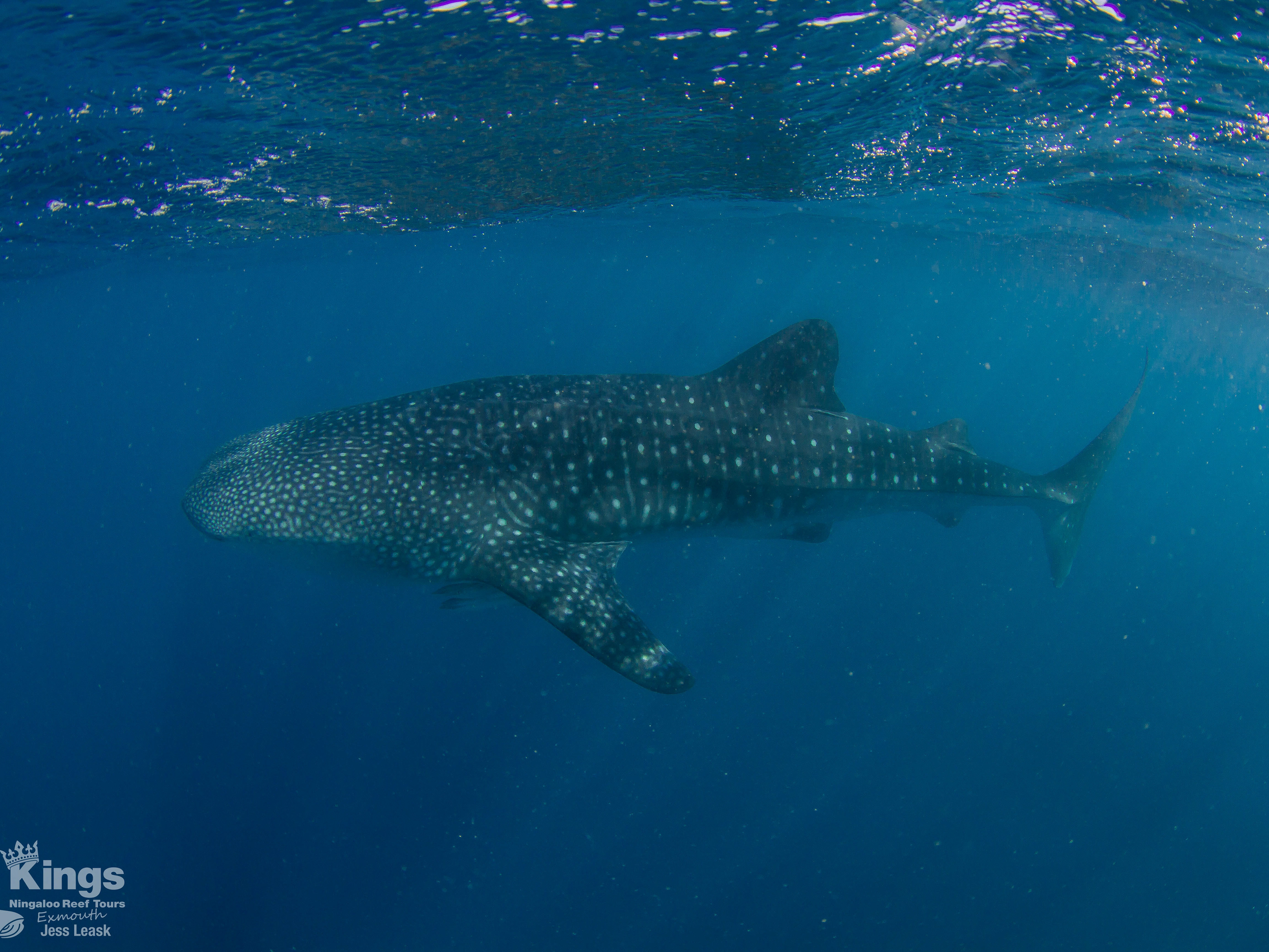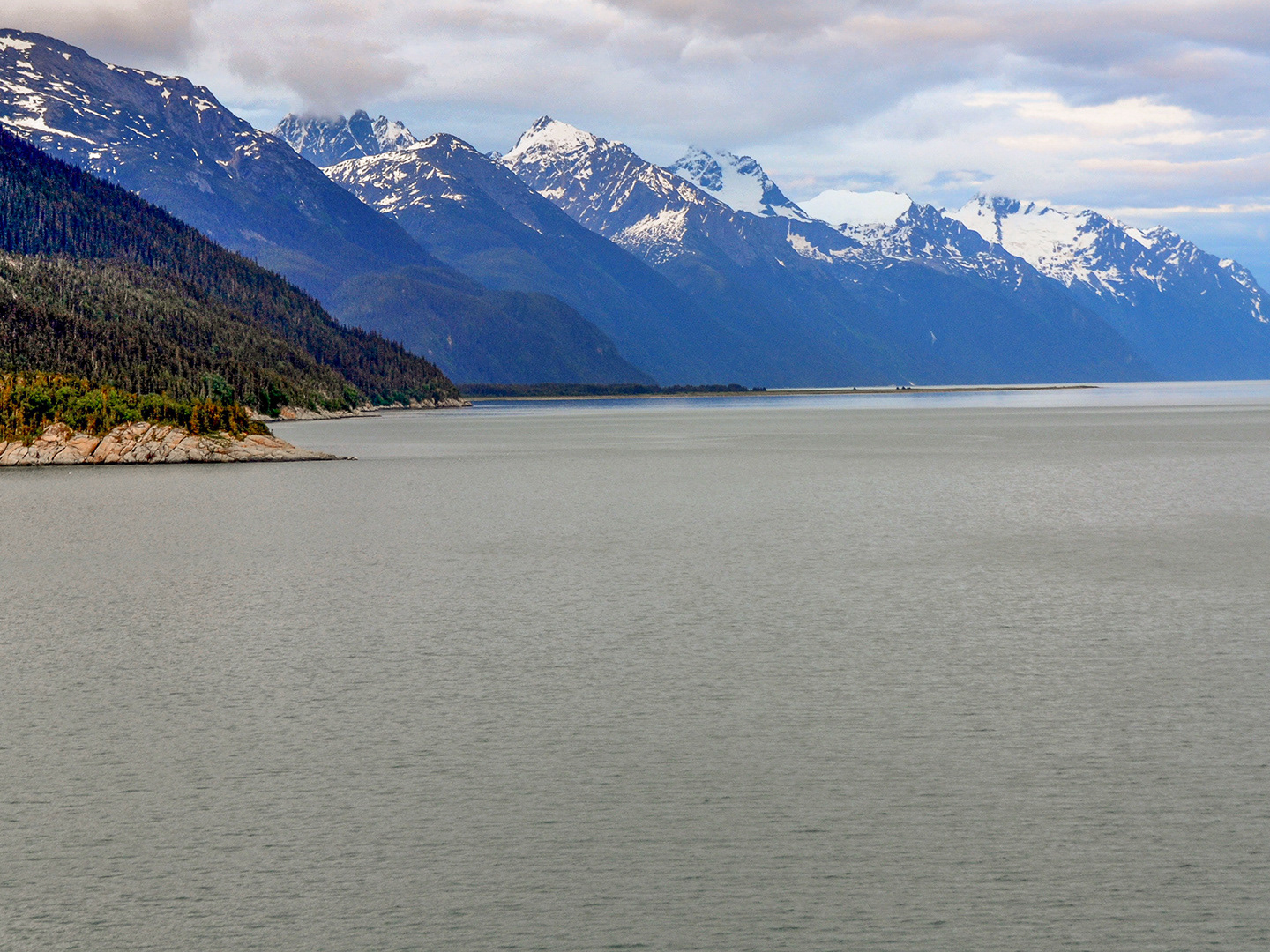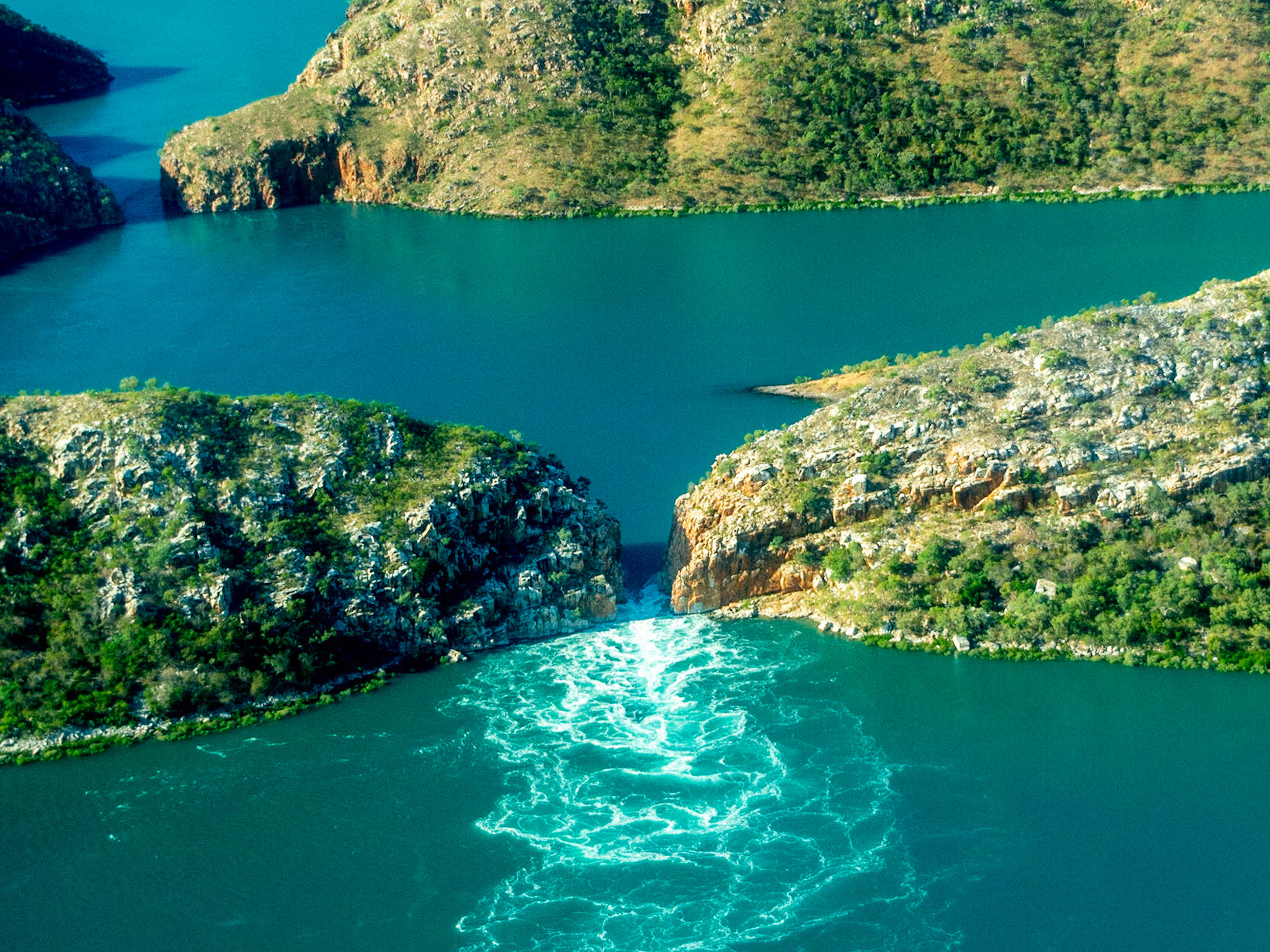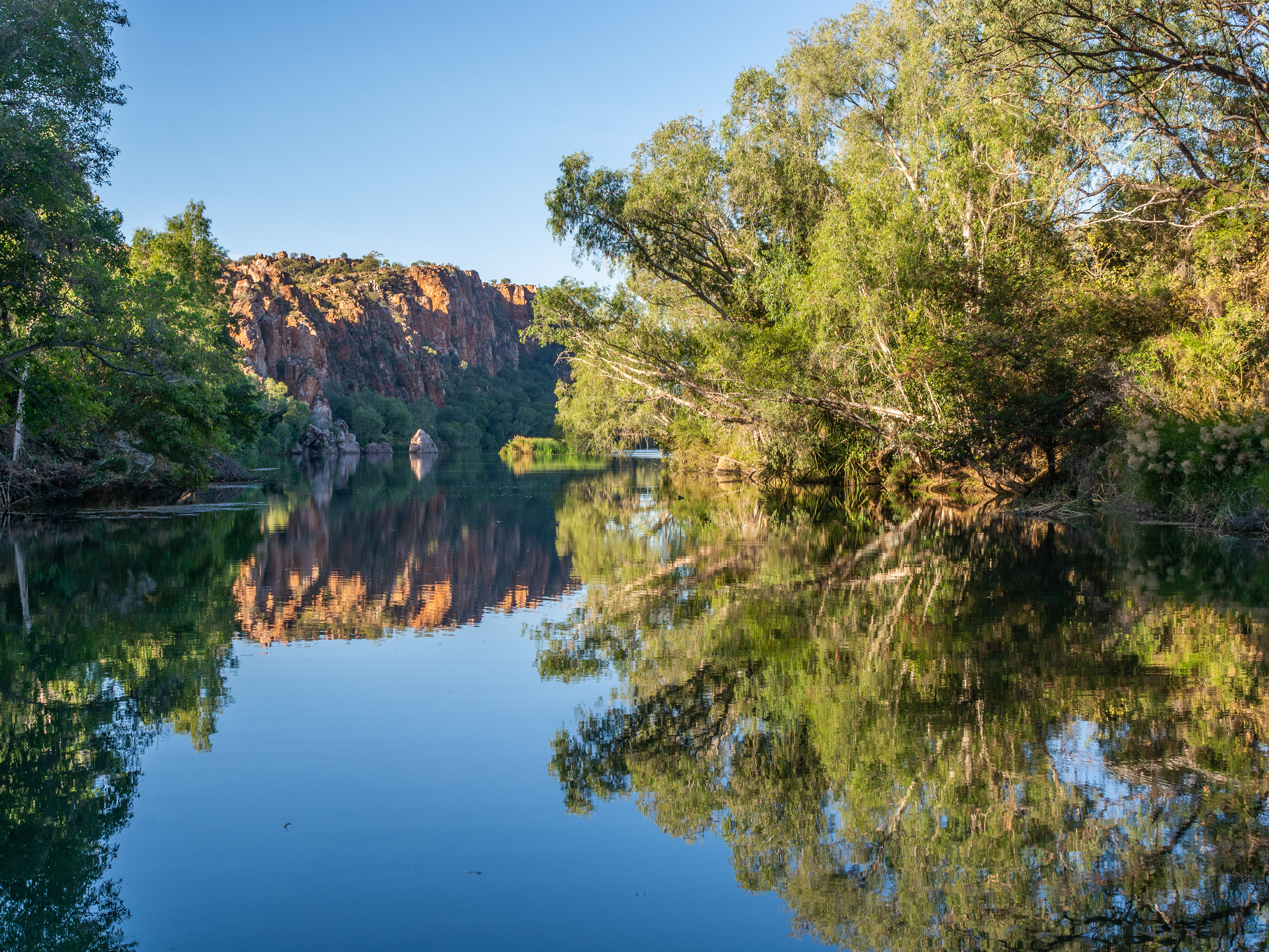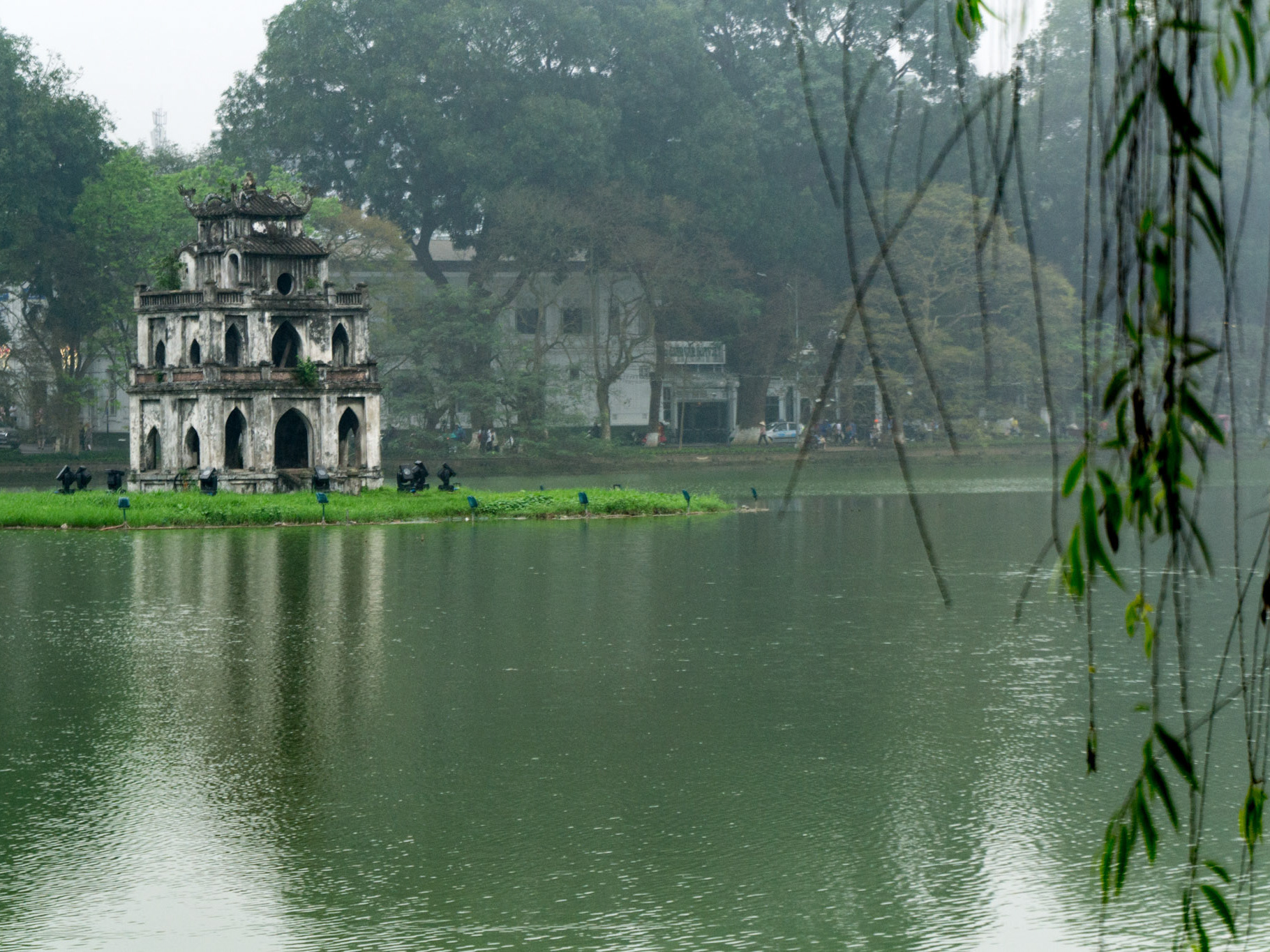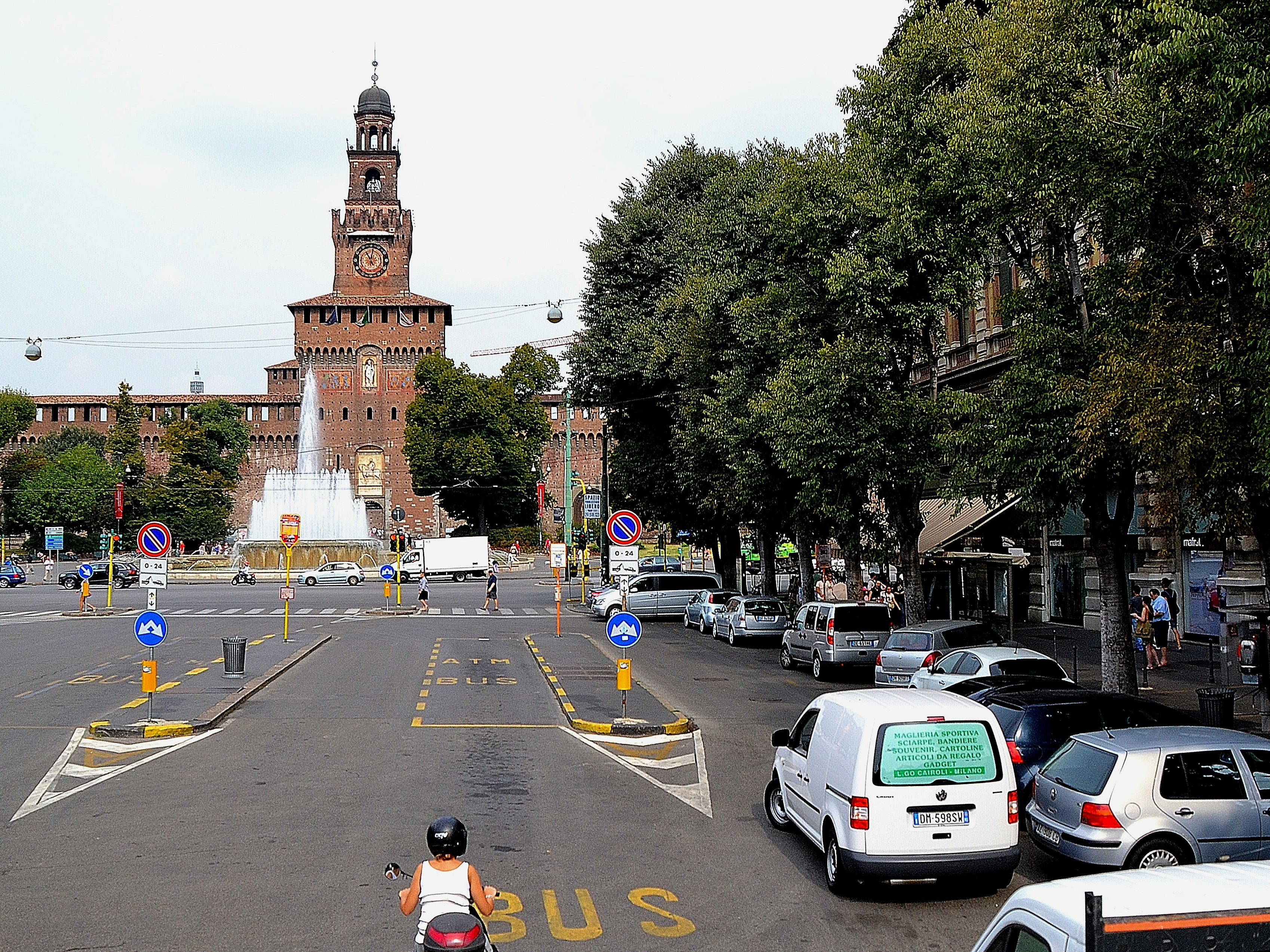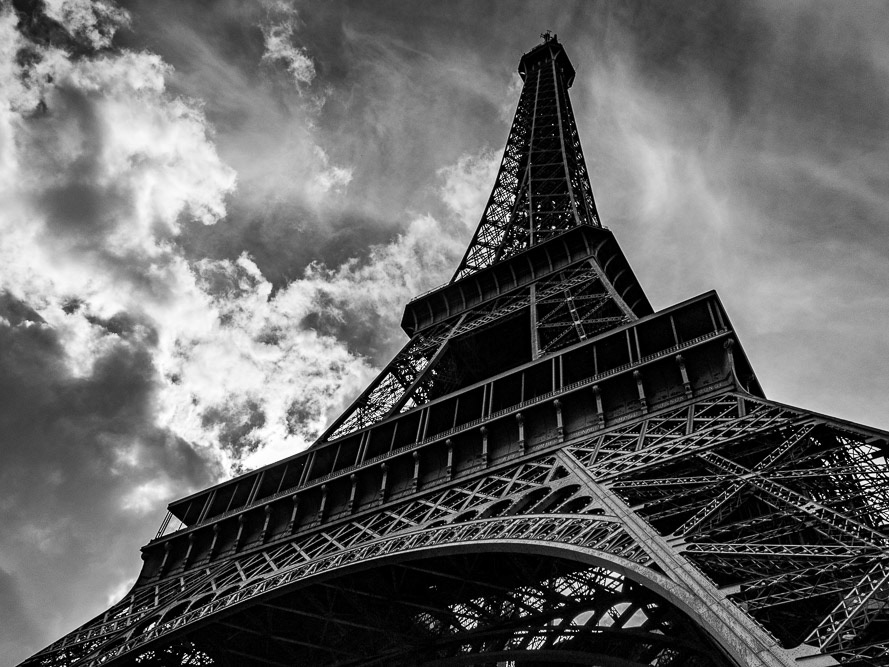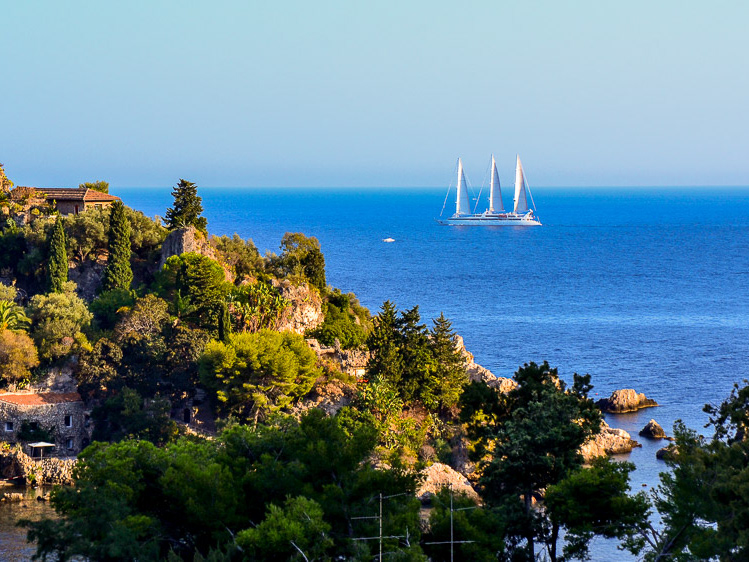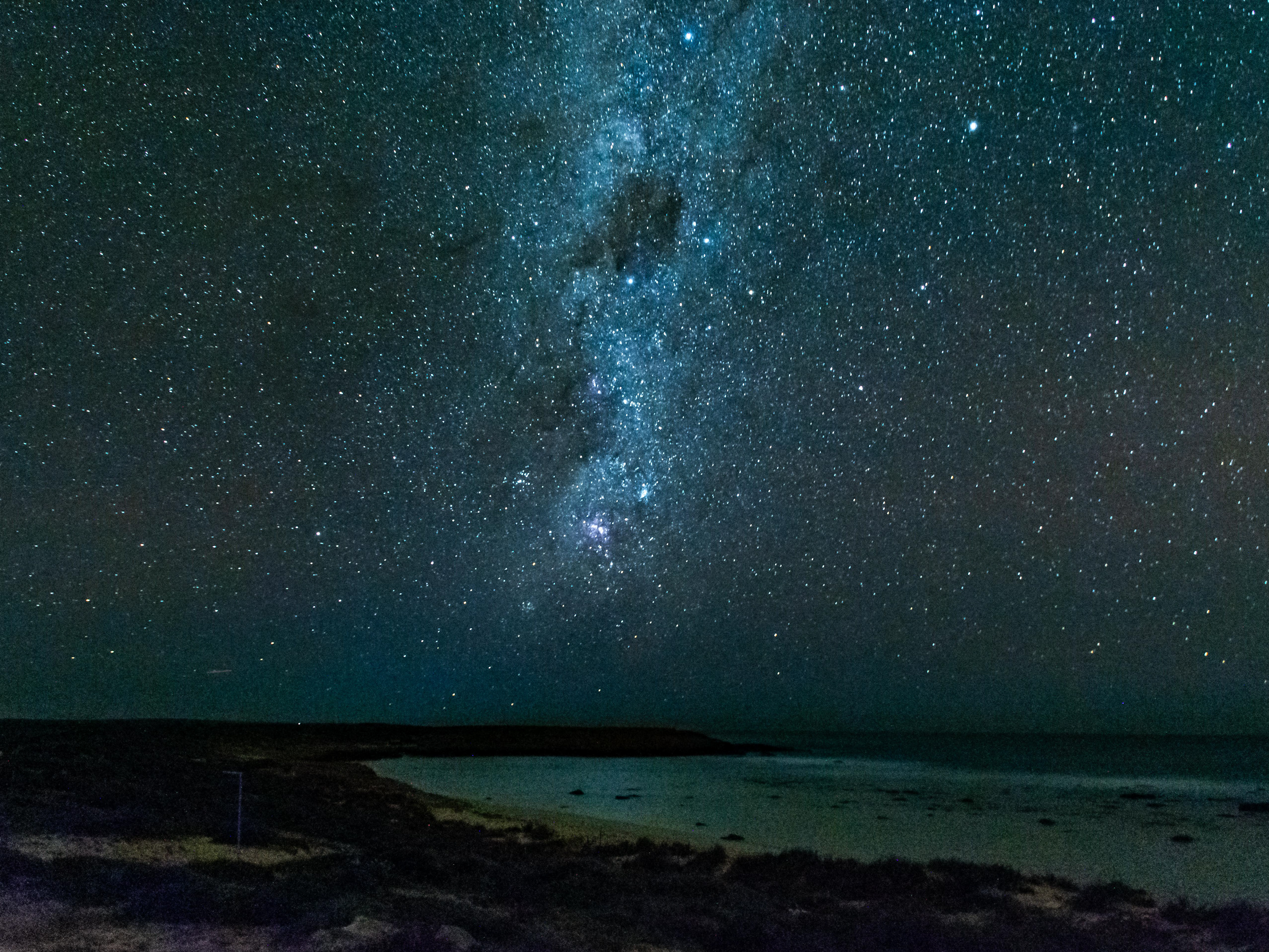Phnom Penh
Our arrival in Phnom Penh, the capital city of Cambodia marks the beginning of our 7-day journey to some interesting cultural and historical places but also several which are a dark, disturbing reminder of gruesome events in recent history. Founded in 1372, Phnom Penh succeeded Angkor Thom as the national capital in 1434. The city earned the nickname the "Pearl of Asia" for its colonial French, New Khmer and Art Deco architecture. Phnom Penh sits at the confluence of the Tonle Sap and Mekong Rivers and is the seat of Cambodia's Monarchy based at the Royal Palace.
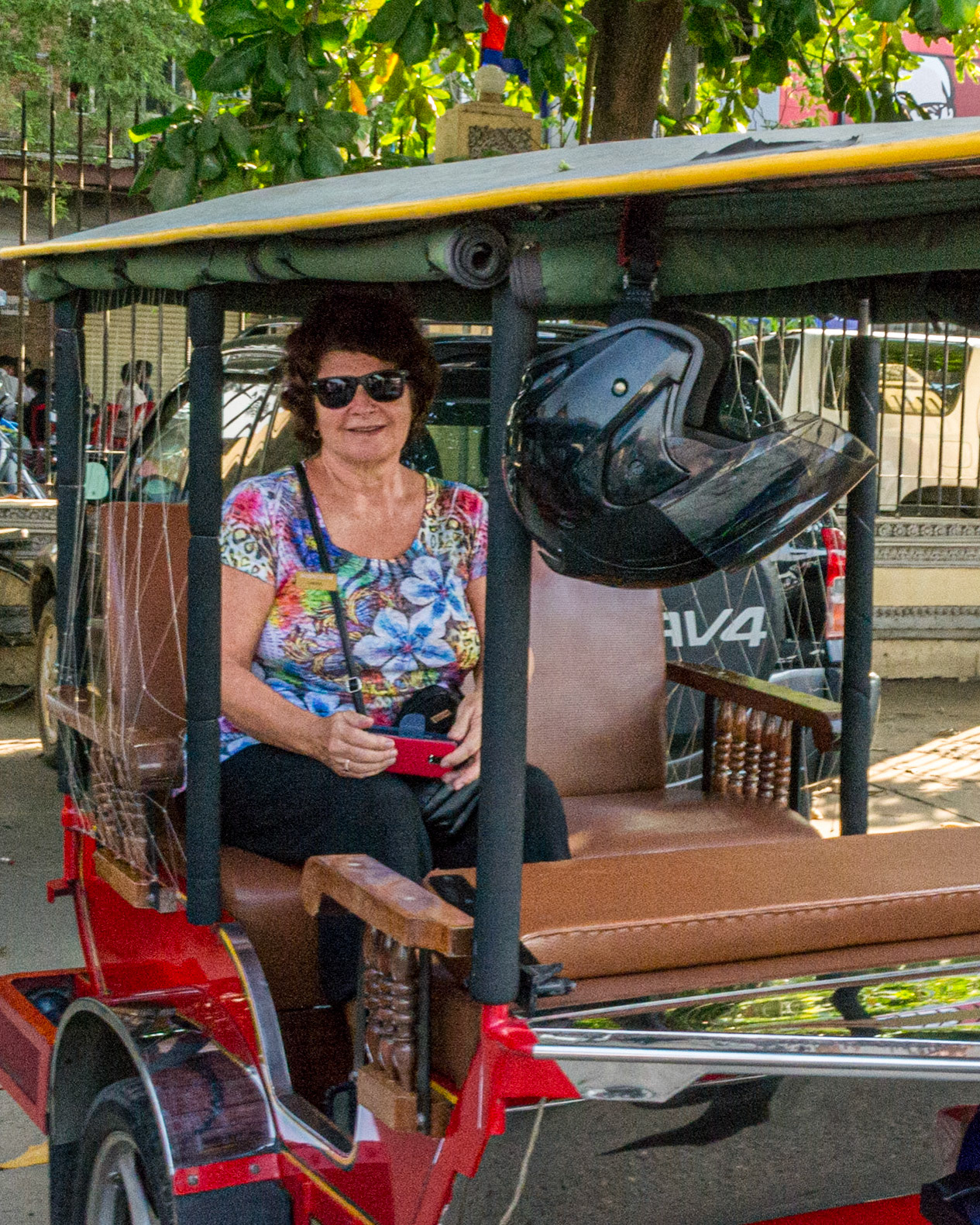
Off to explore Phnom Penh via tuk-tuk.
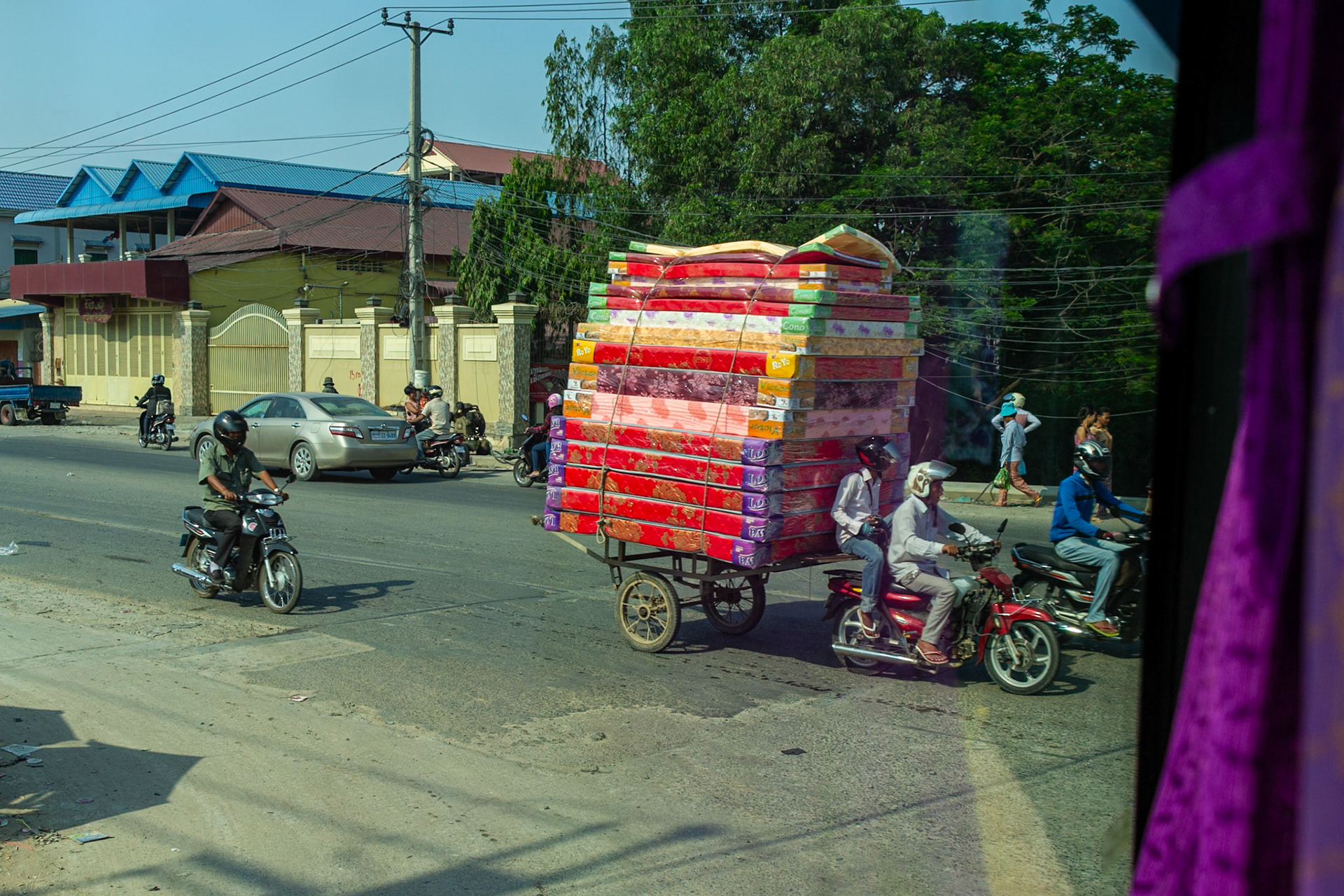
Beds-r-us mattress delivery?
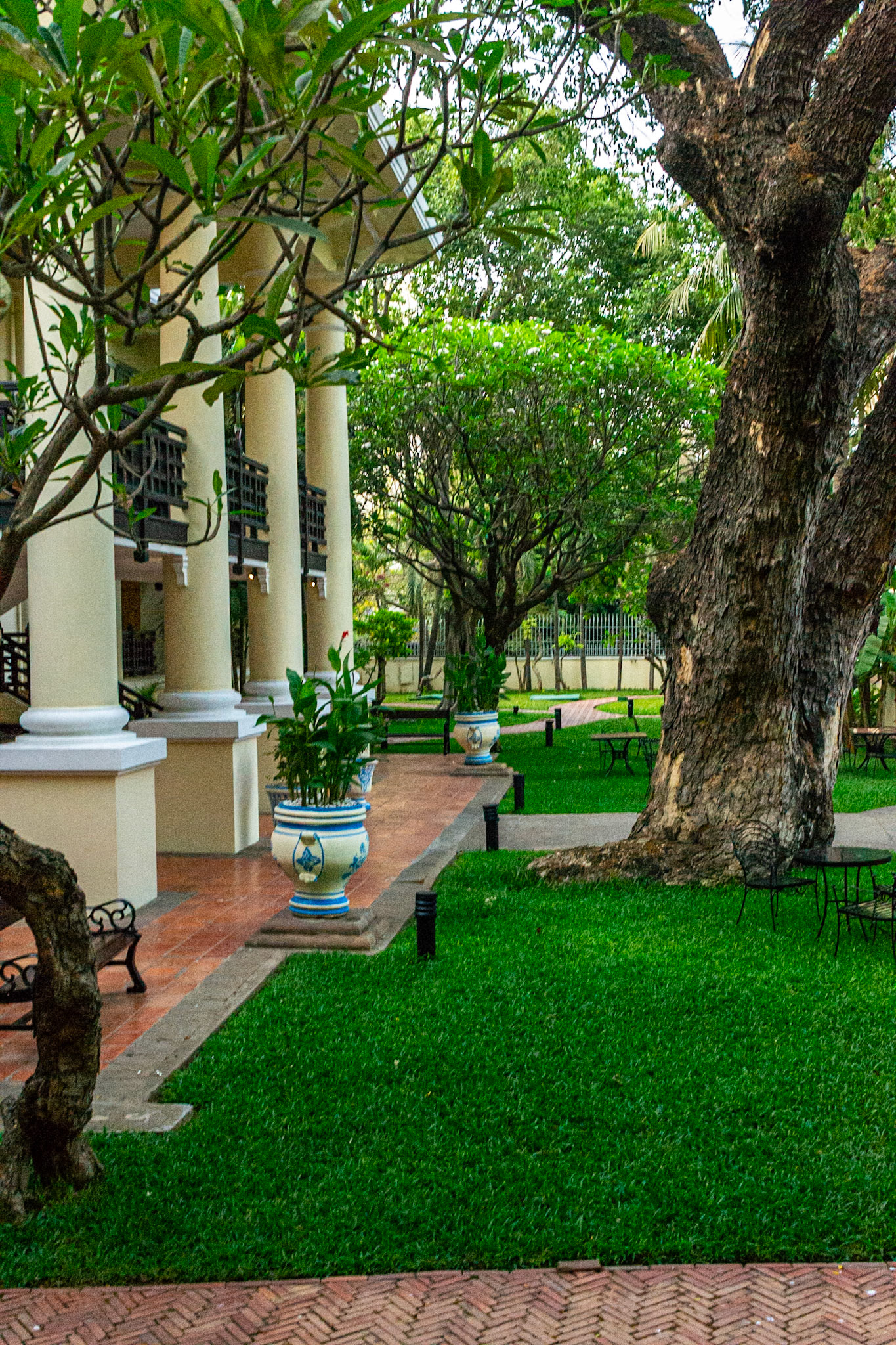
Raffles Le Royal gardens.
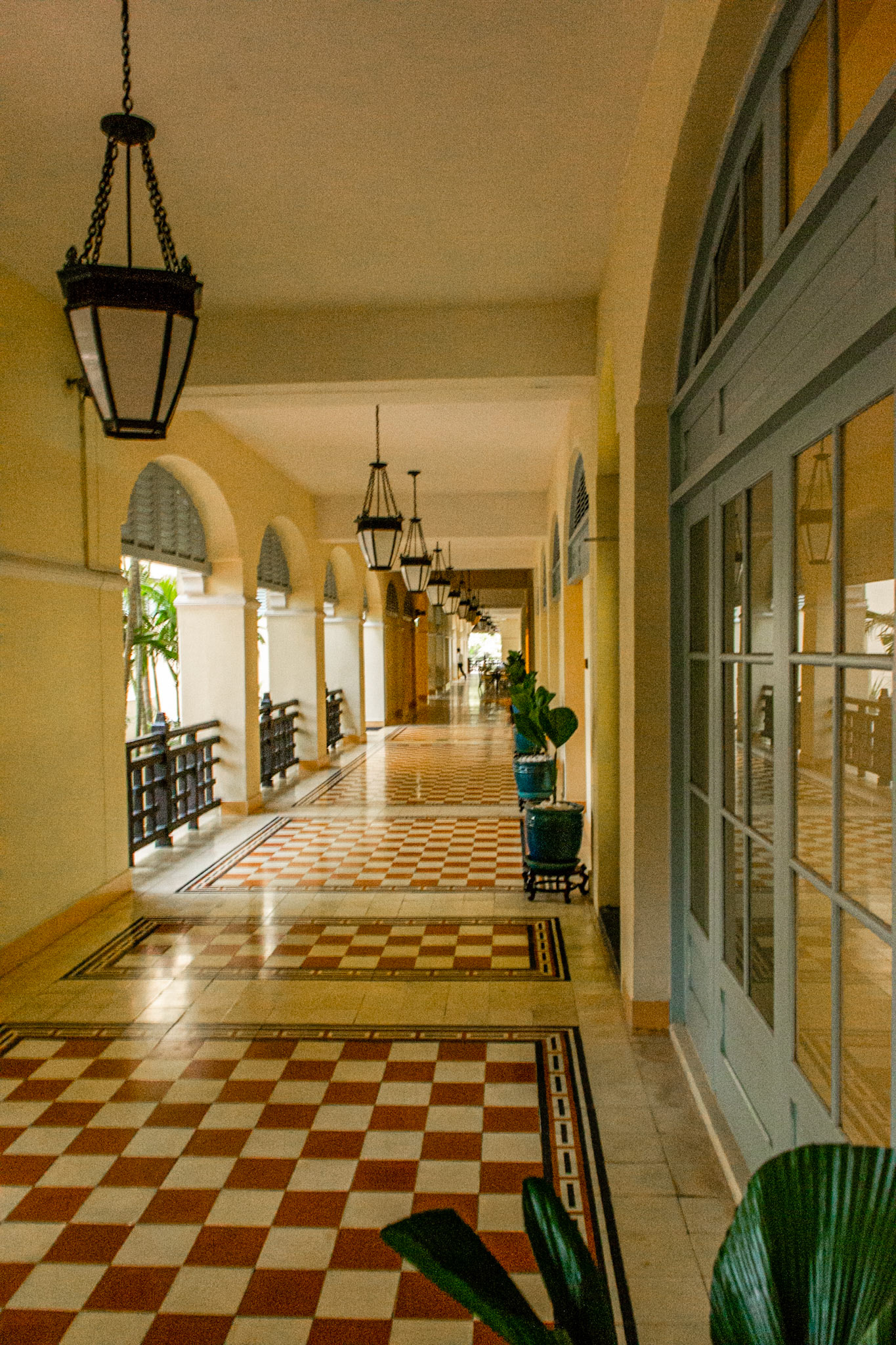
The shaded verandas of Raffles Le Royal provide welcoming respite from the afternoon heat.
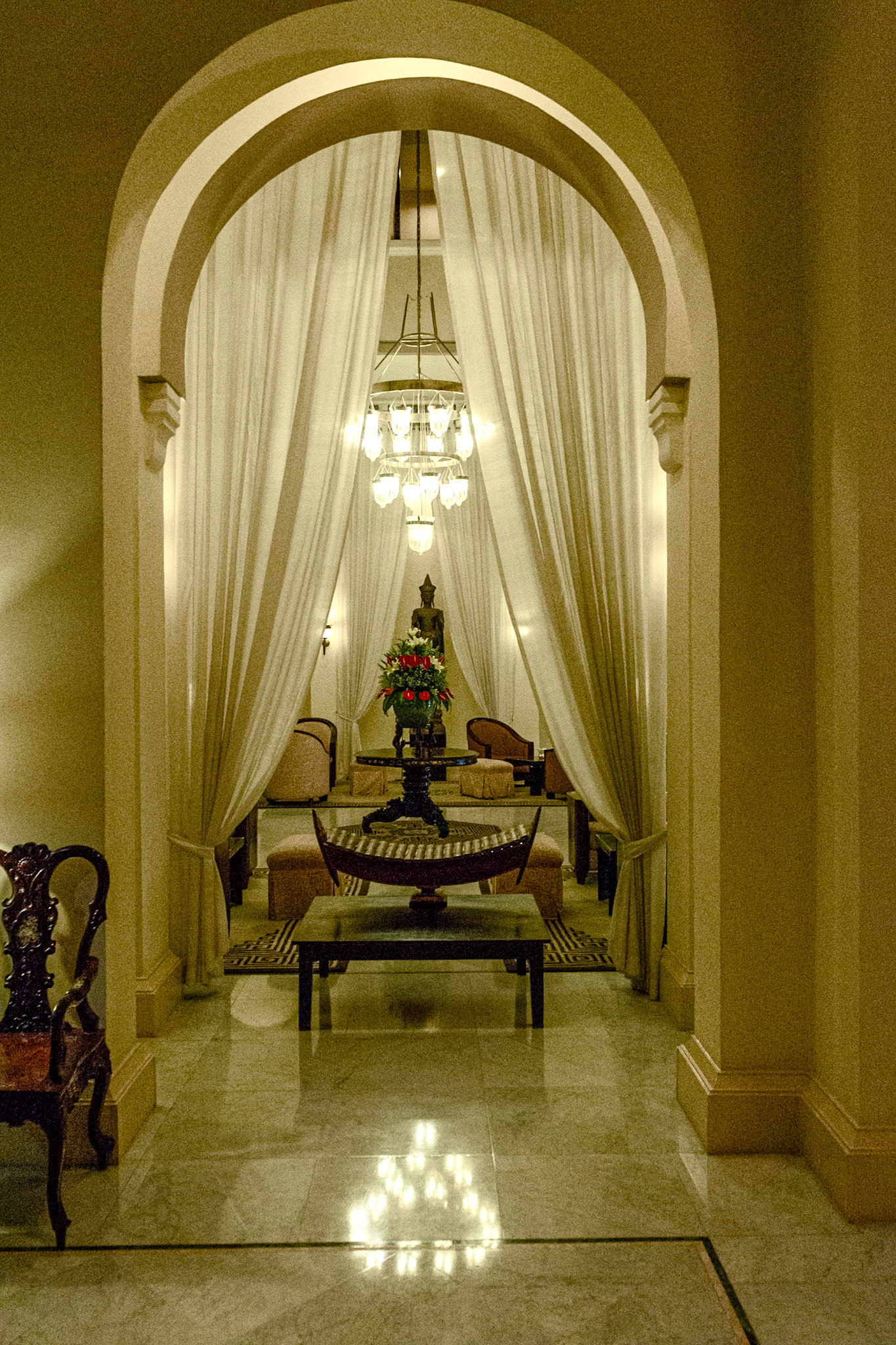
Art-deco inspired decor of a bygone era.
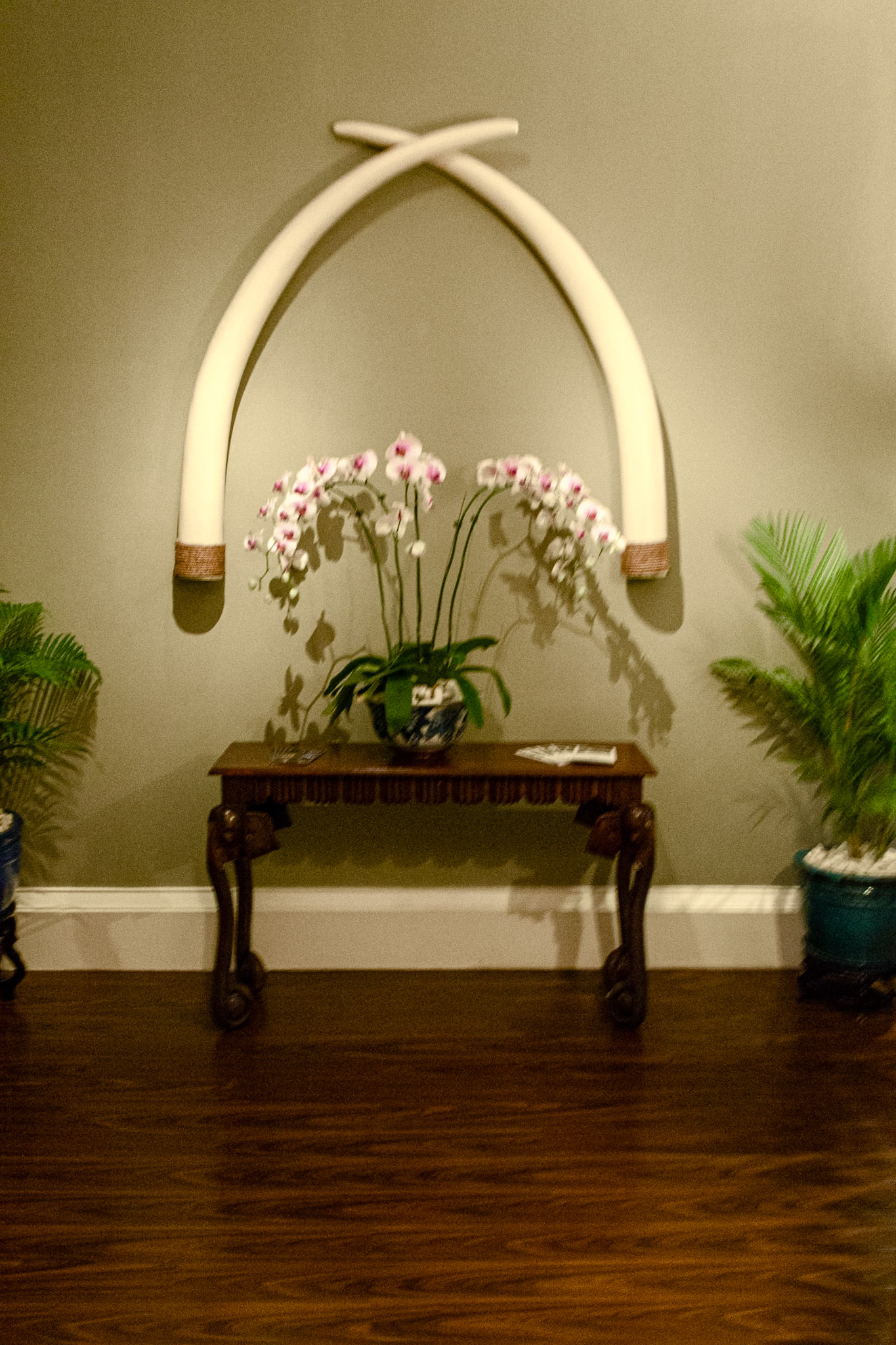
Ivory vs orchids
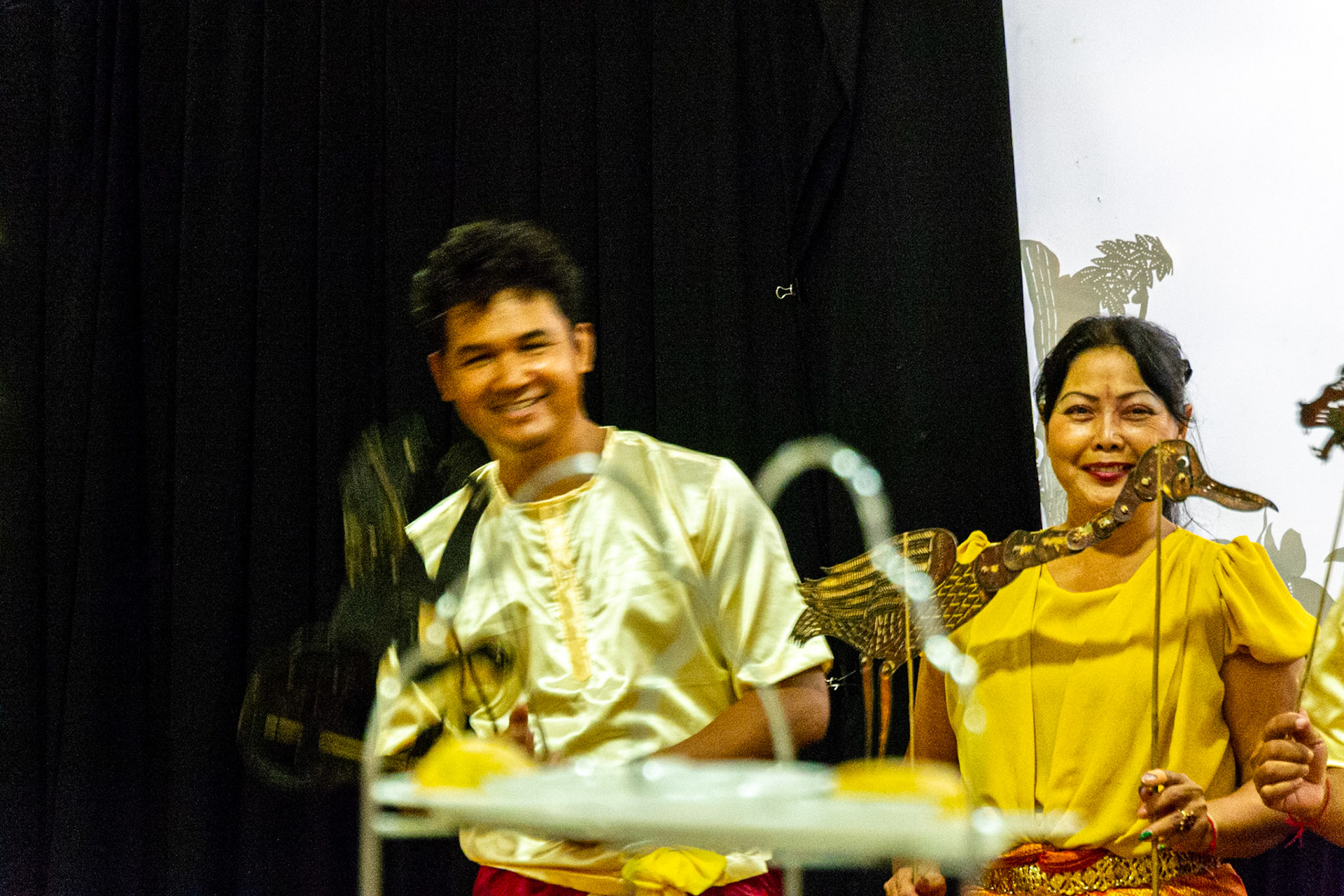
Shadow puppeteers emerge from behind the screen.
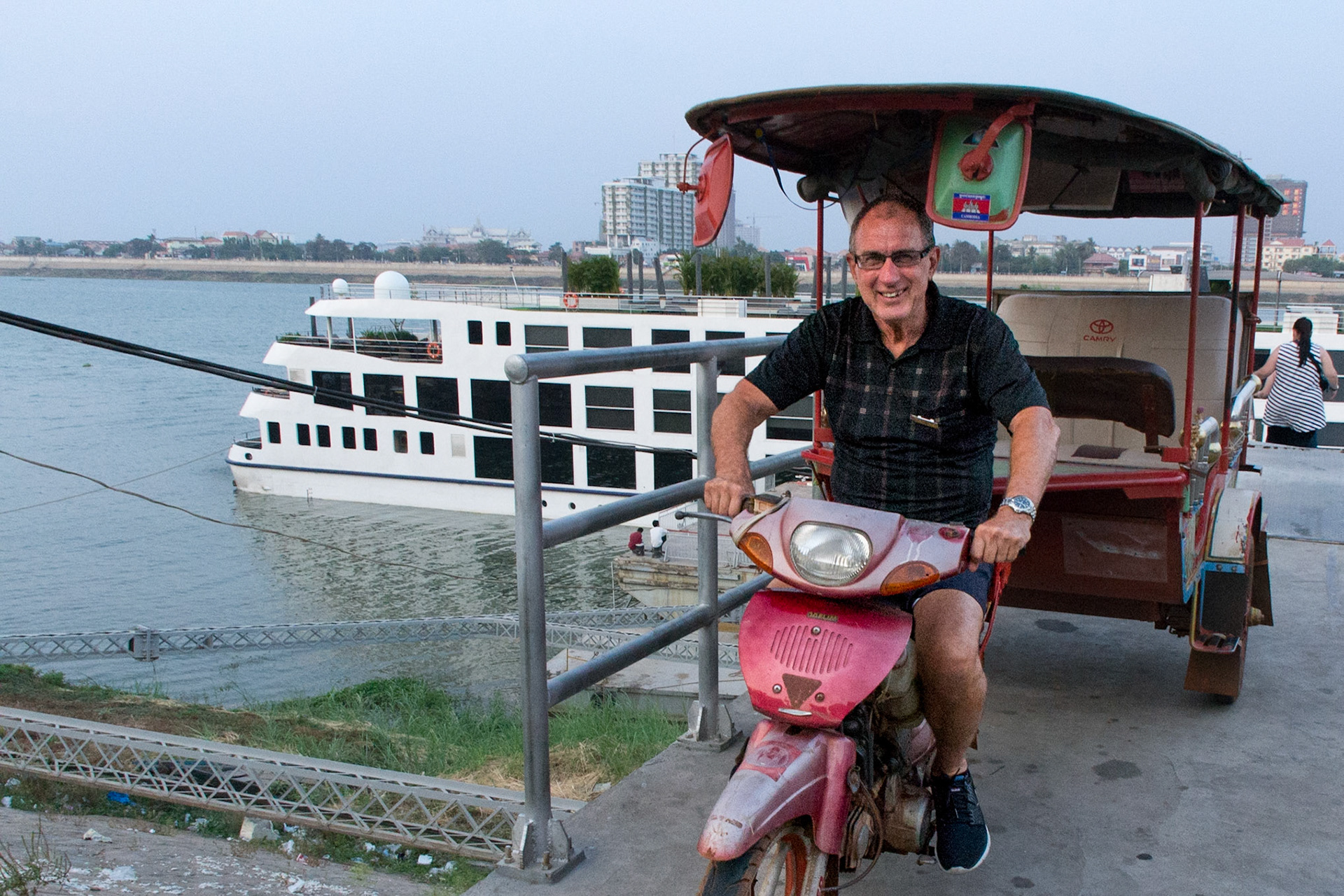
Tuk-tuk relief driver.
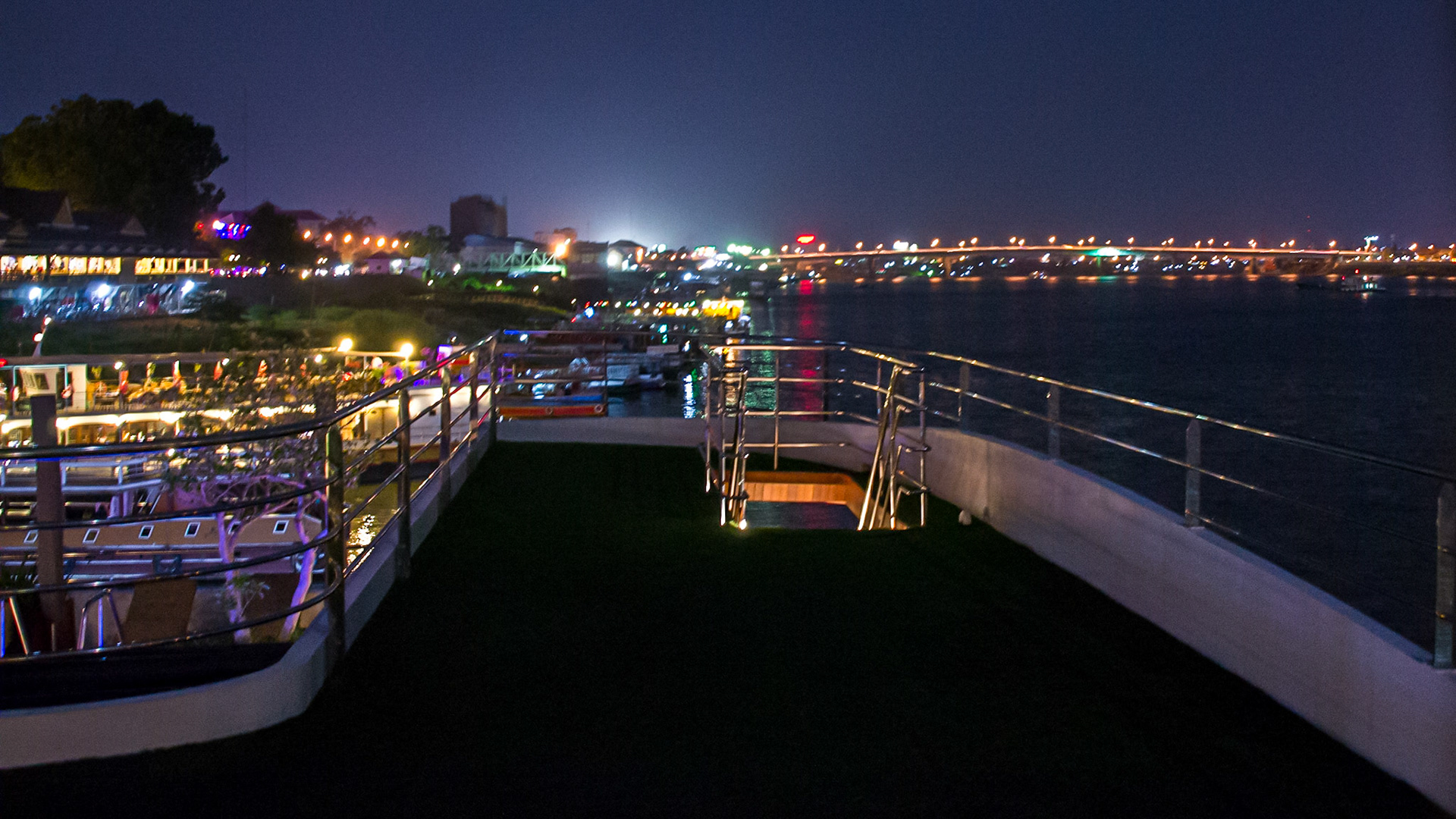
Phnom Penh night lights.
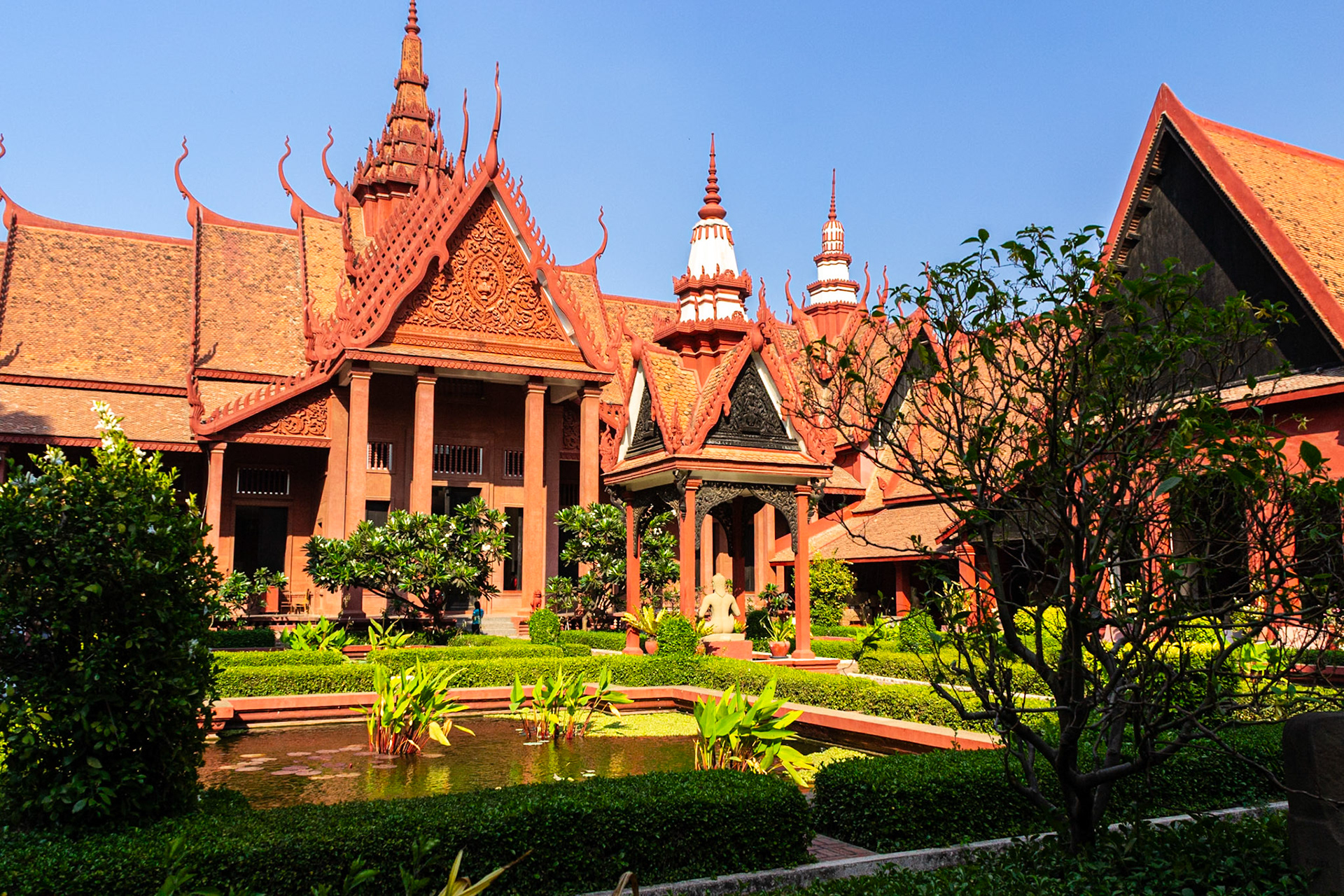
National Museum of Cambodia, of traditional Khmer architectural design.
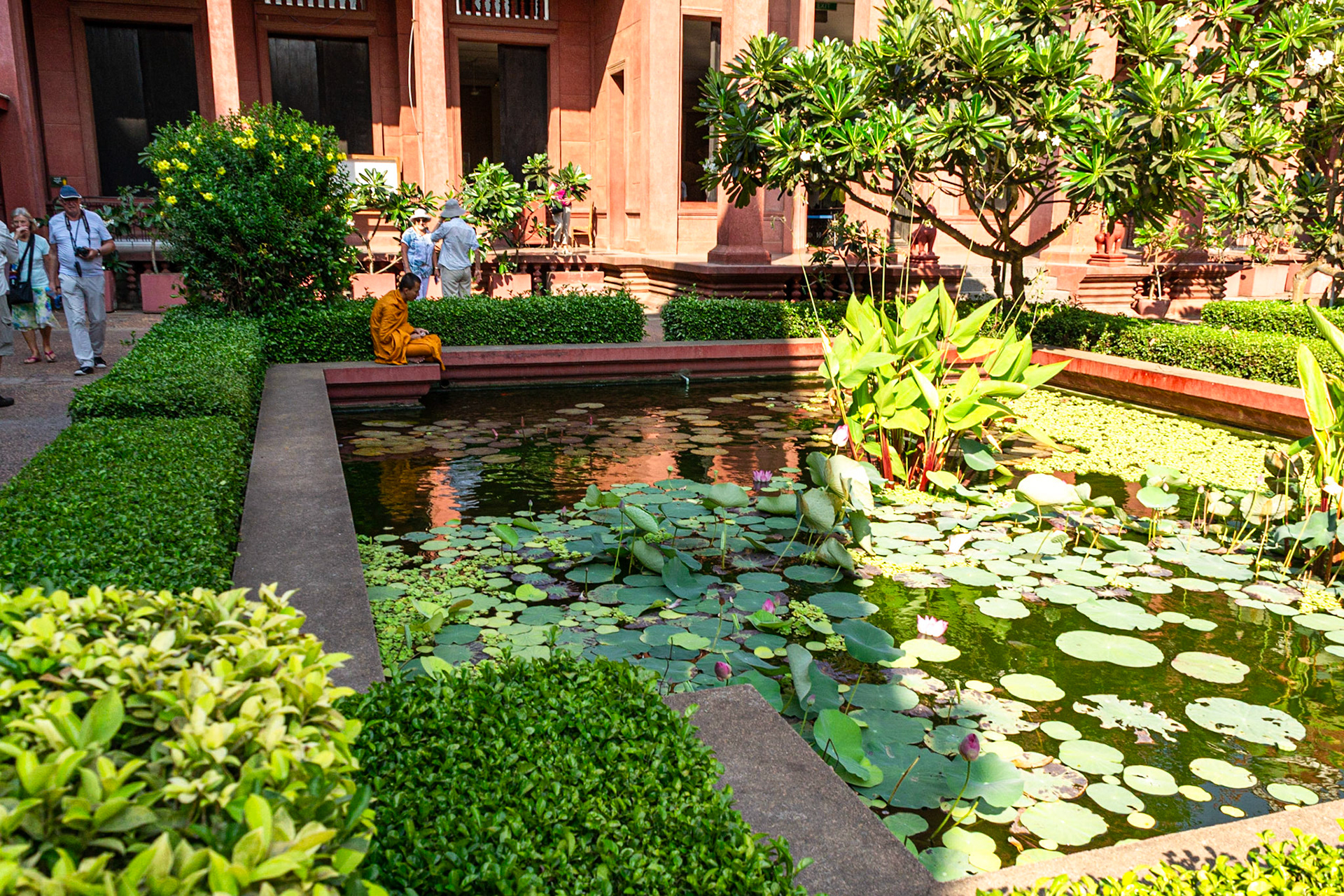
A Buddhist monk relaxes by the cool waters of the lotus pond in the courtyard of the National Museum.
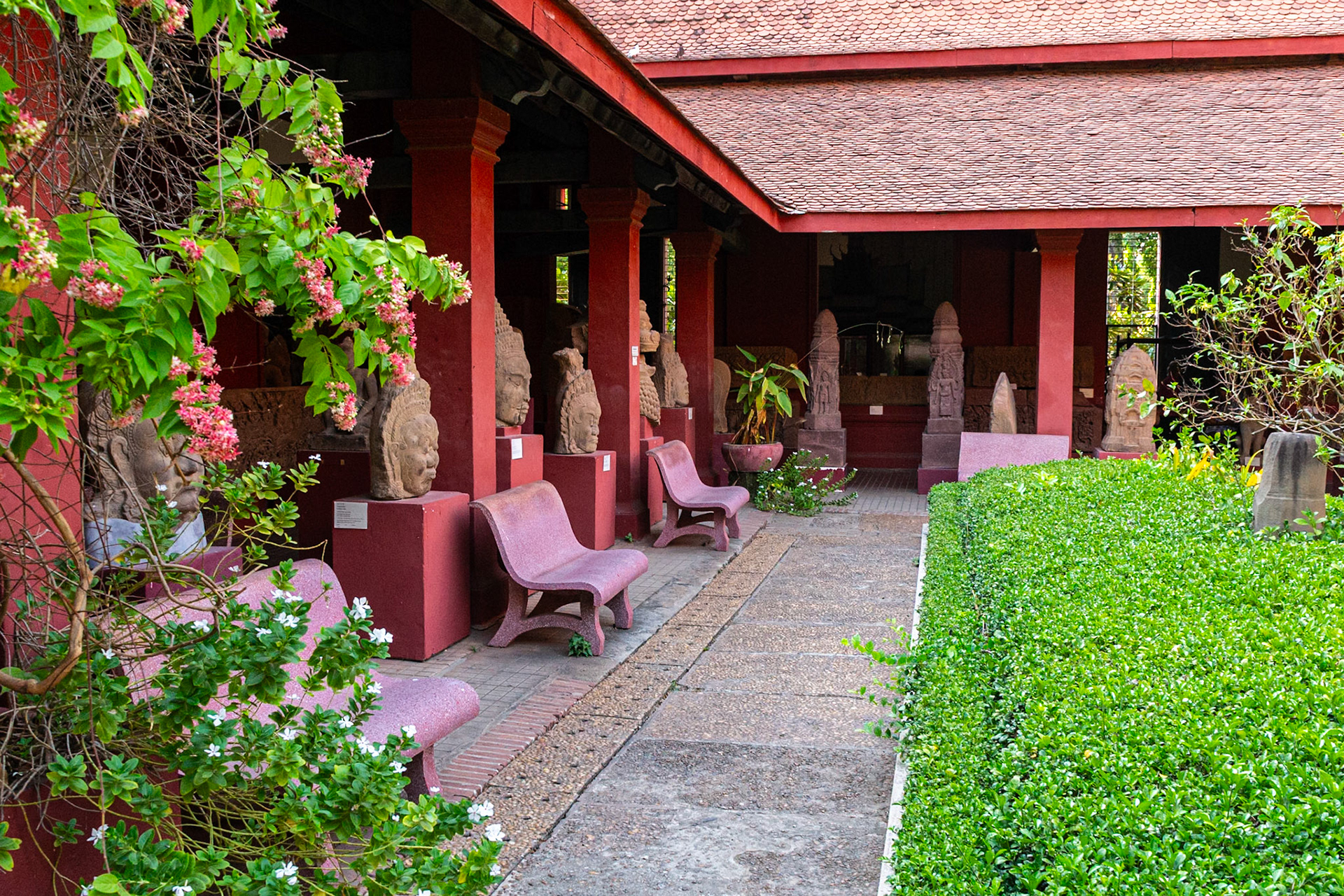
Sandstone bust sculptures overlook the gardens.
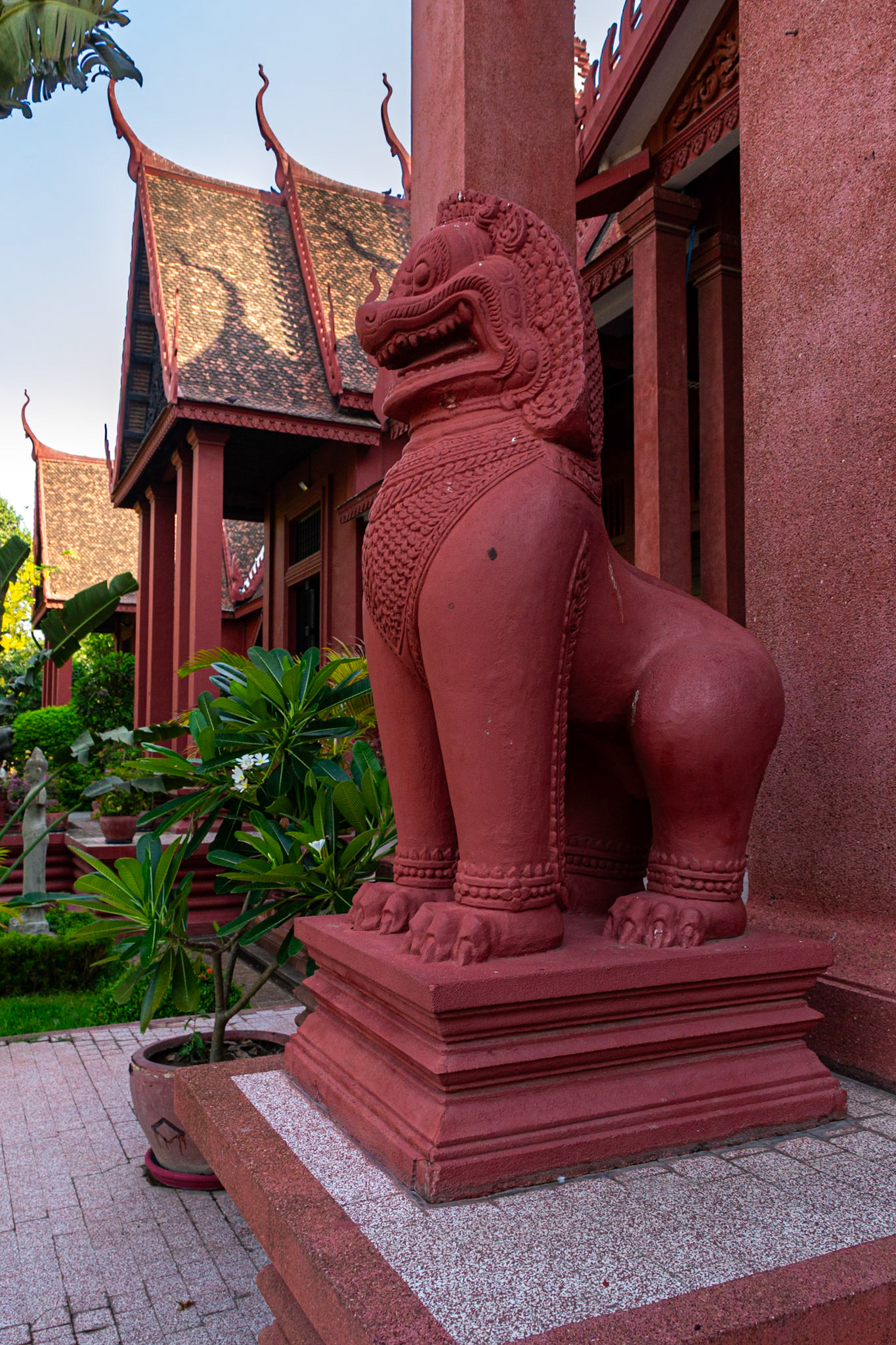
Lion sculpture.
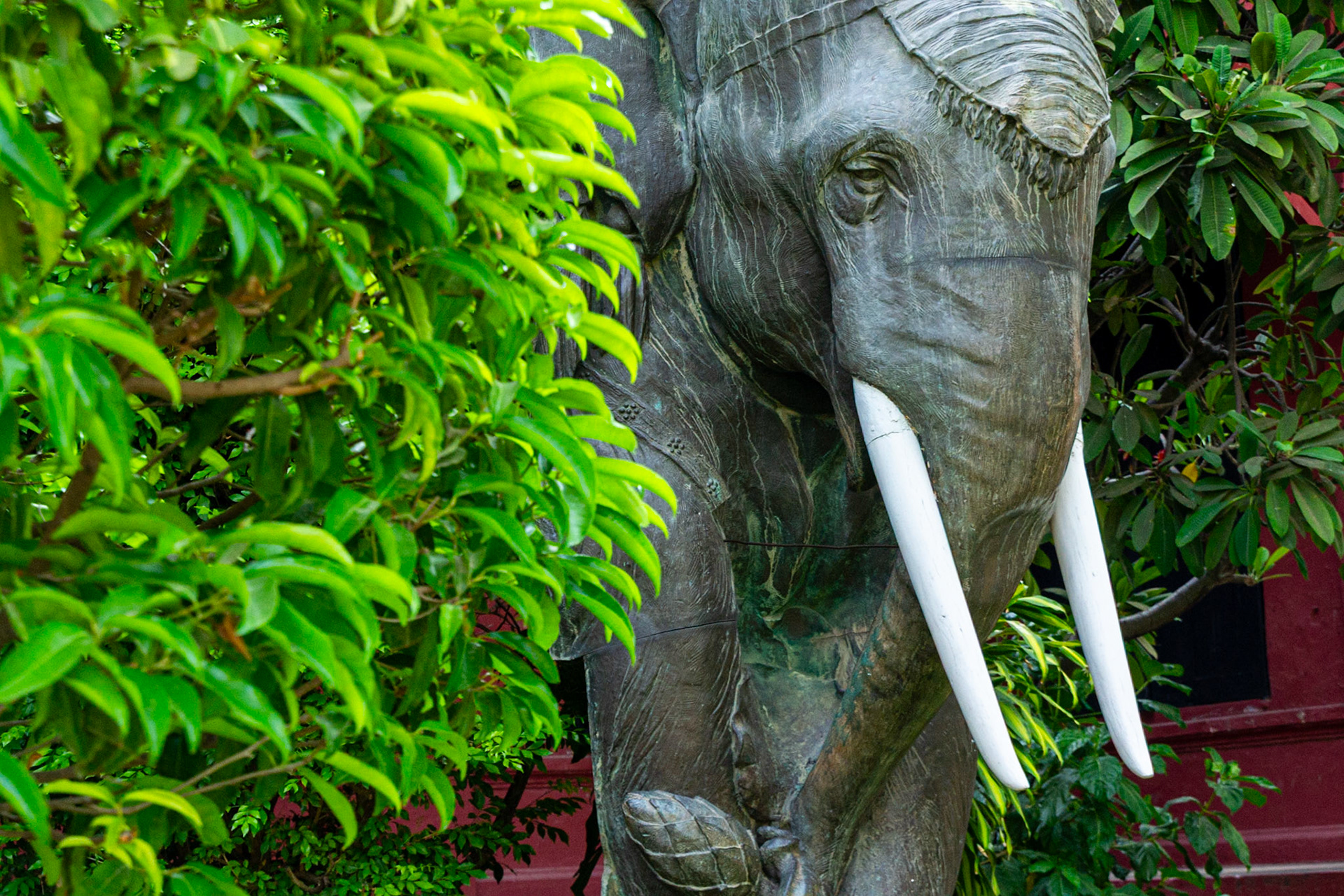
The elephant in the garden.
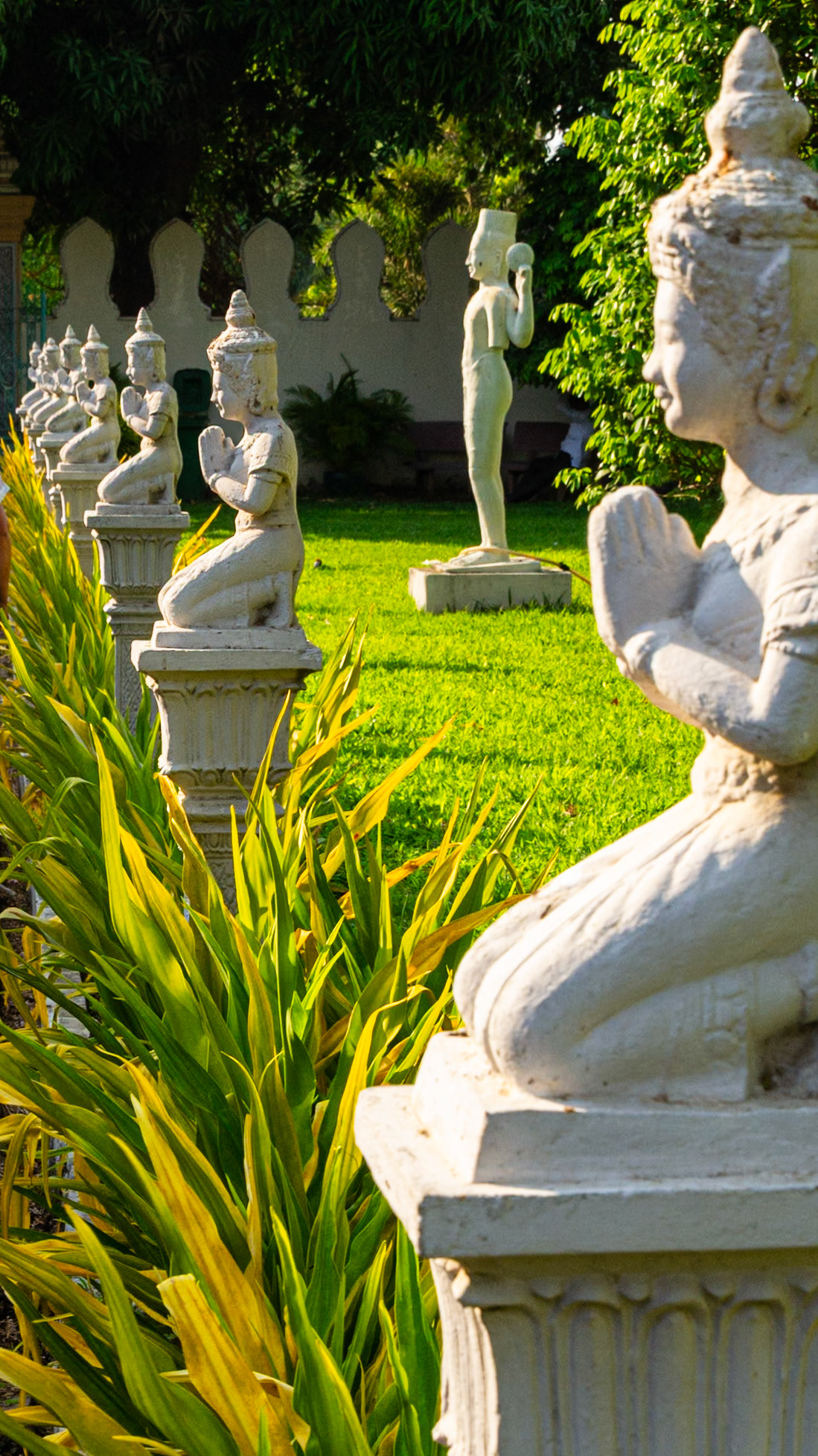
An avenue of sculptures.
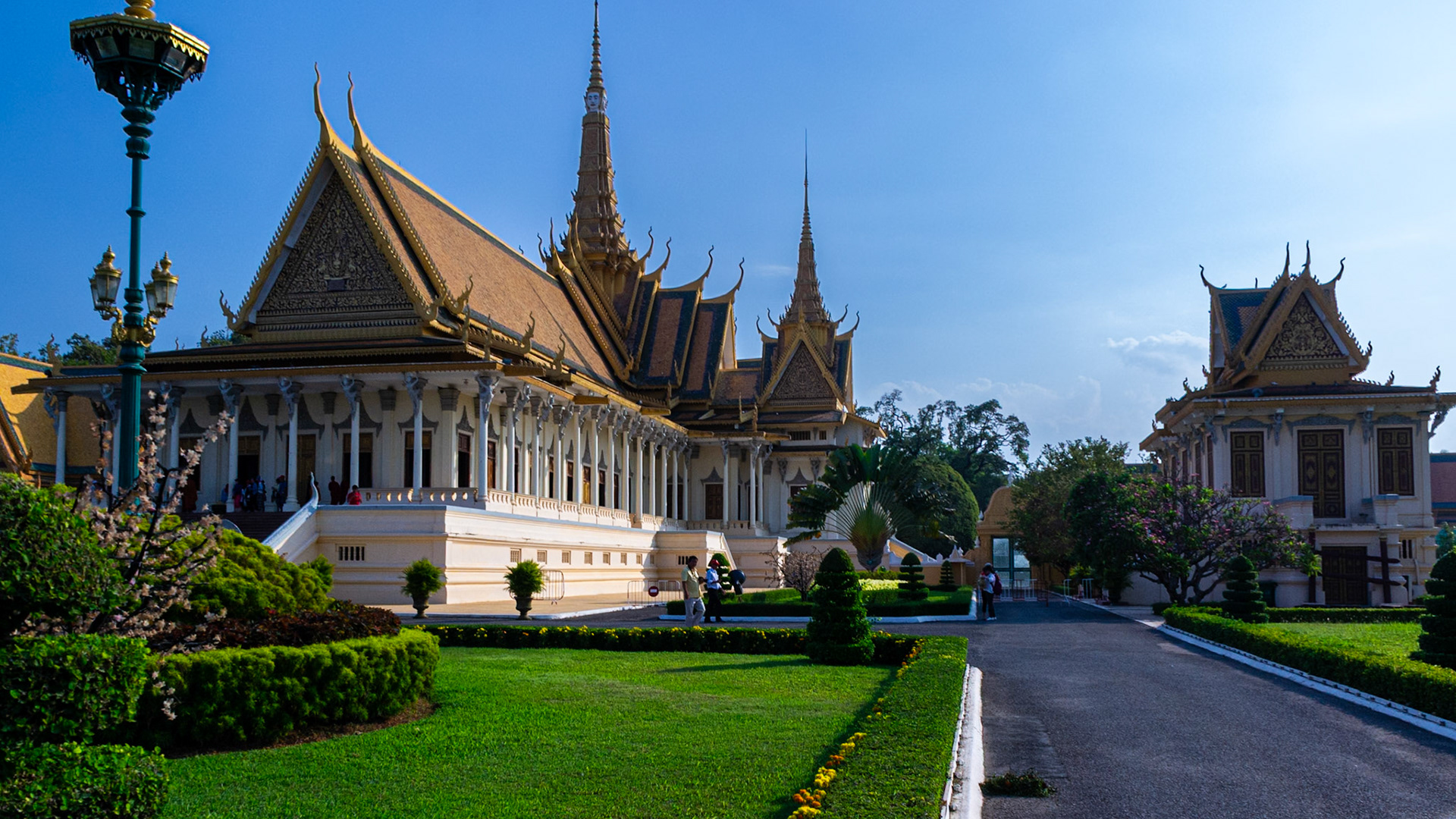
The Throne Hall of the Royal Palace of Cambodia.
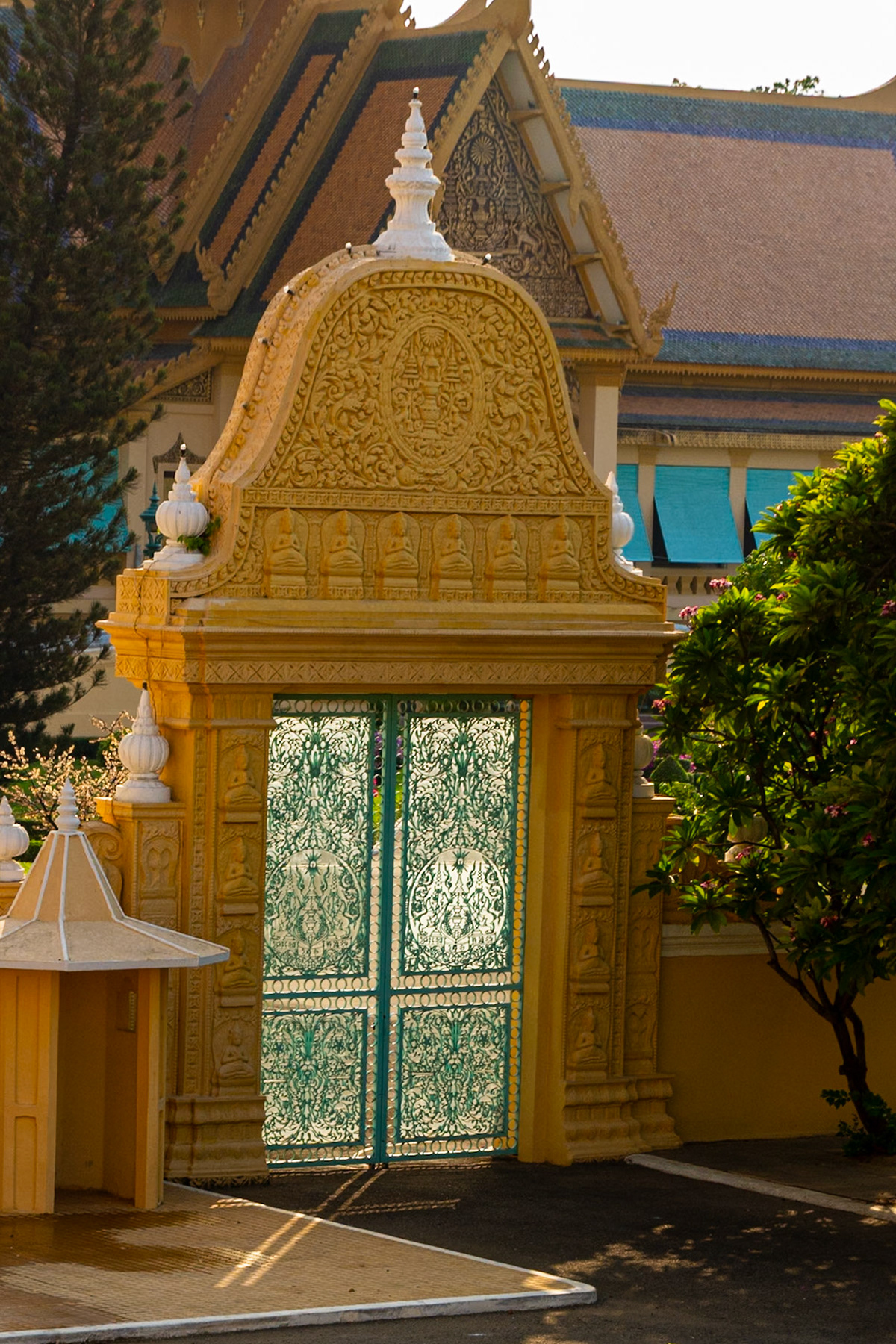
Entrance gate to the Khemarin Palace, the official residence of the King of Cambodia.
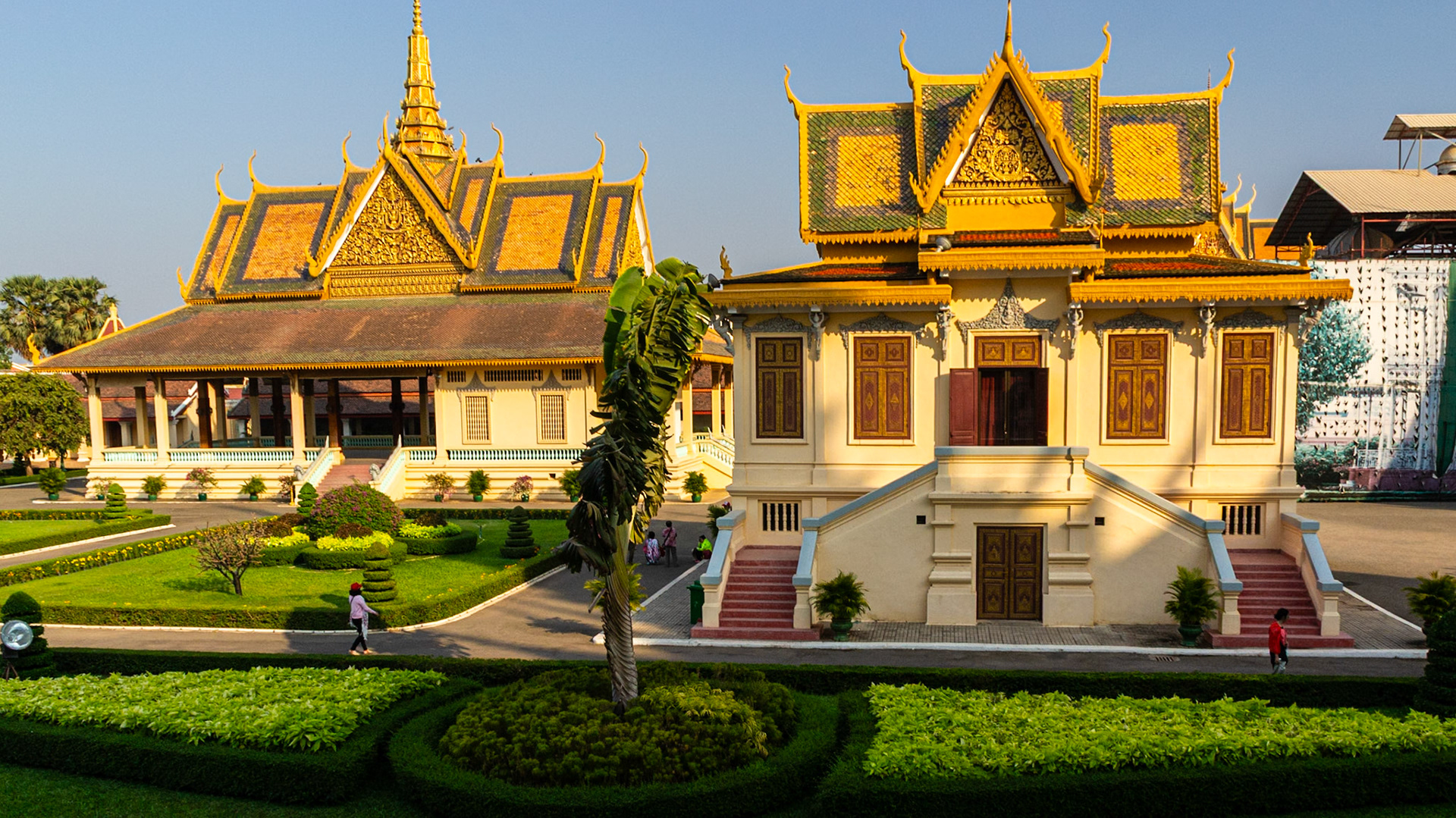
Royal Palace pavilions and gardens.
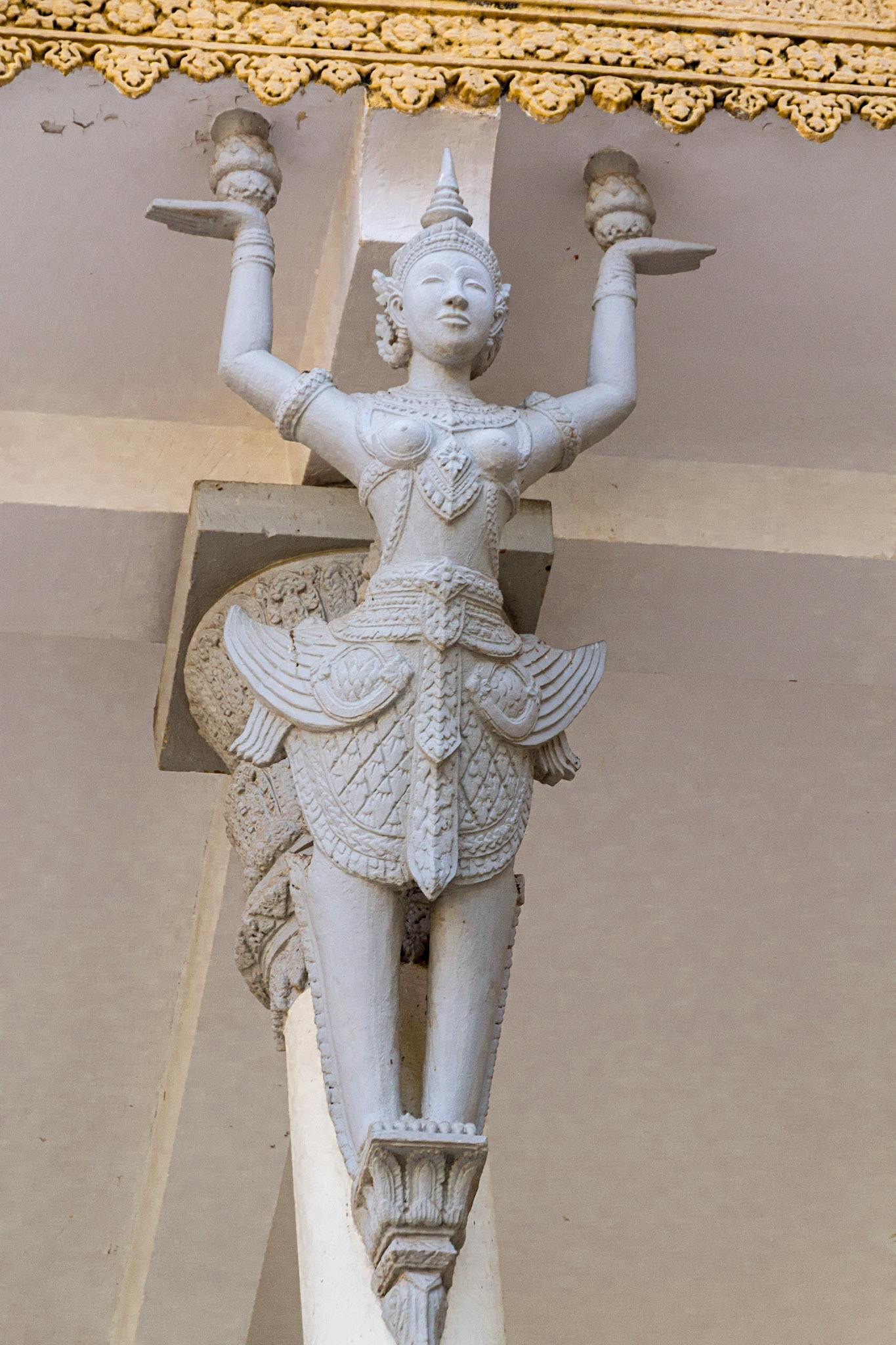
A decorative column figurine (Kinnara).
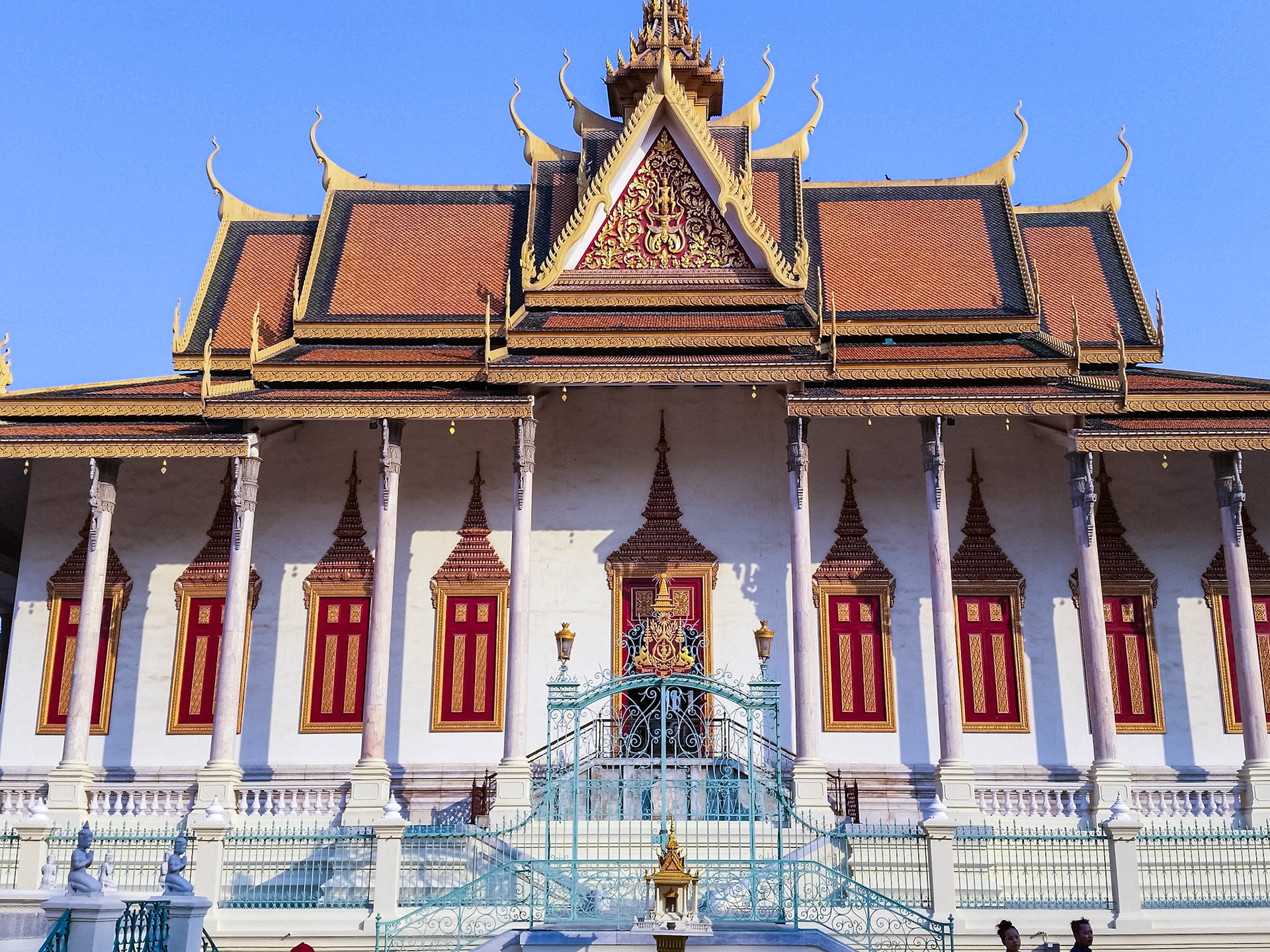
The Silver Pagoda of the Royal Palace.
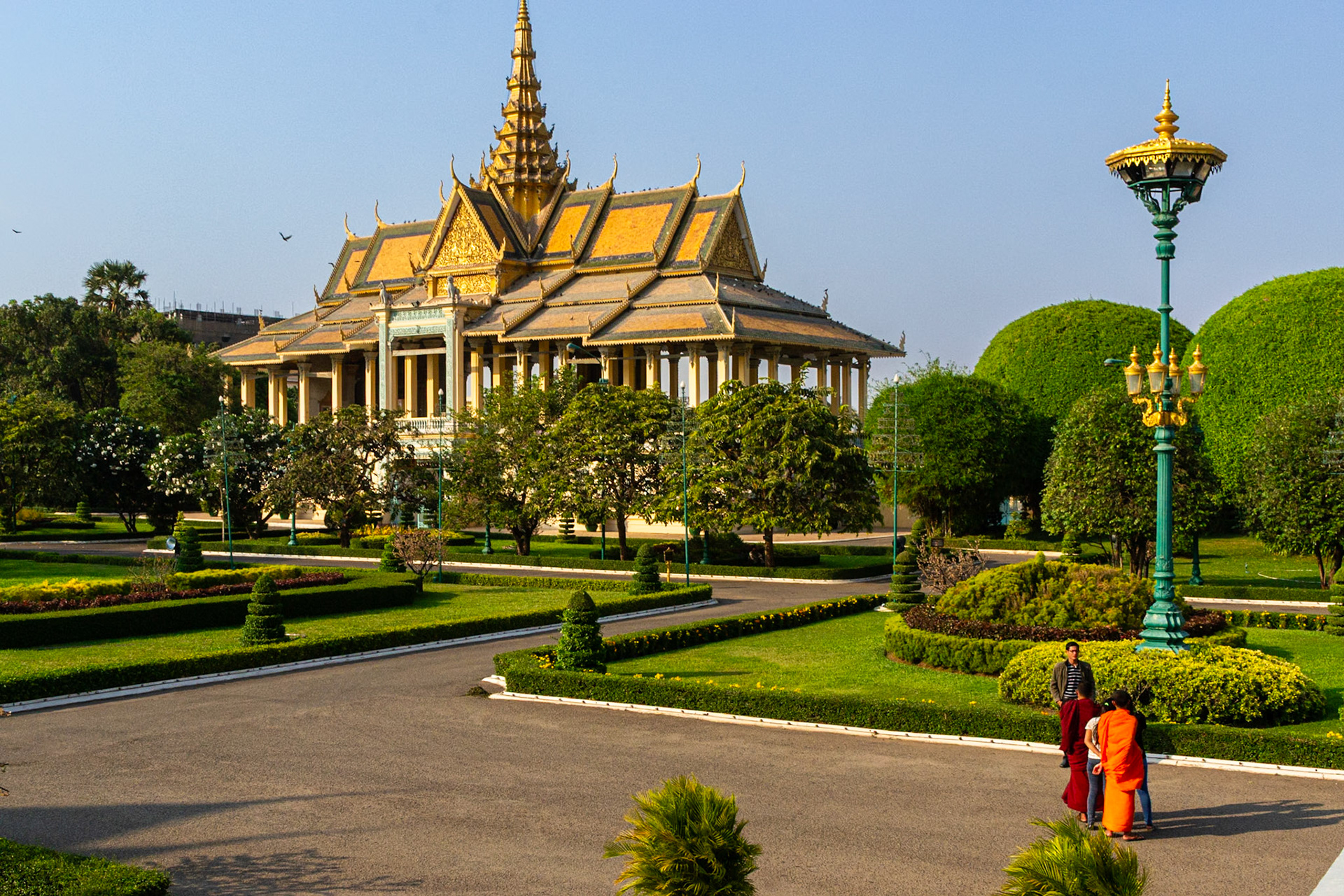
The Royal Palace Moonlight Pavilion and gardens.
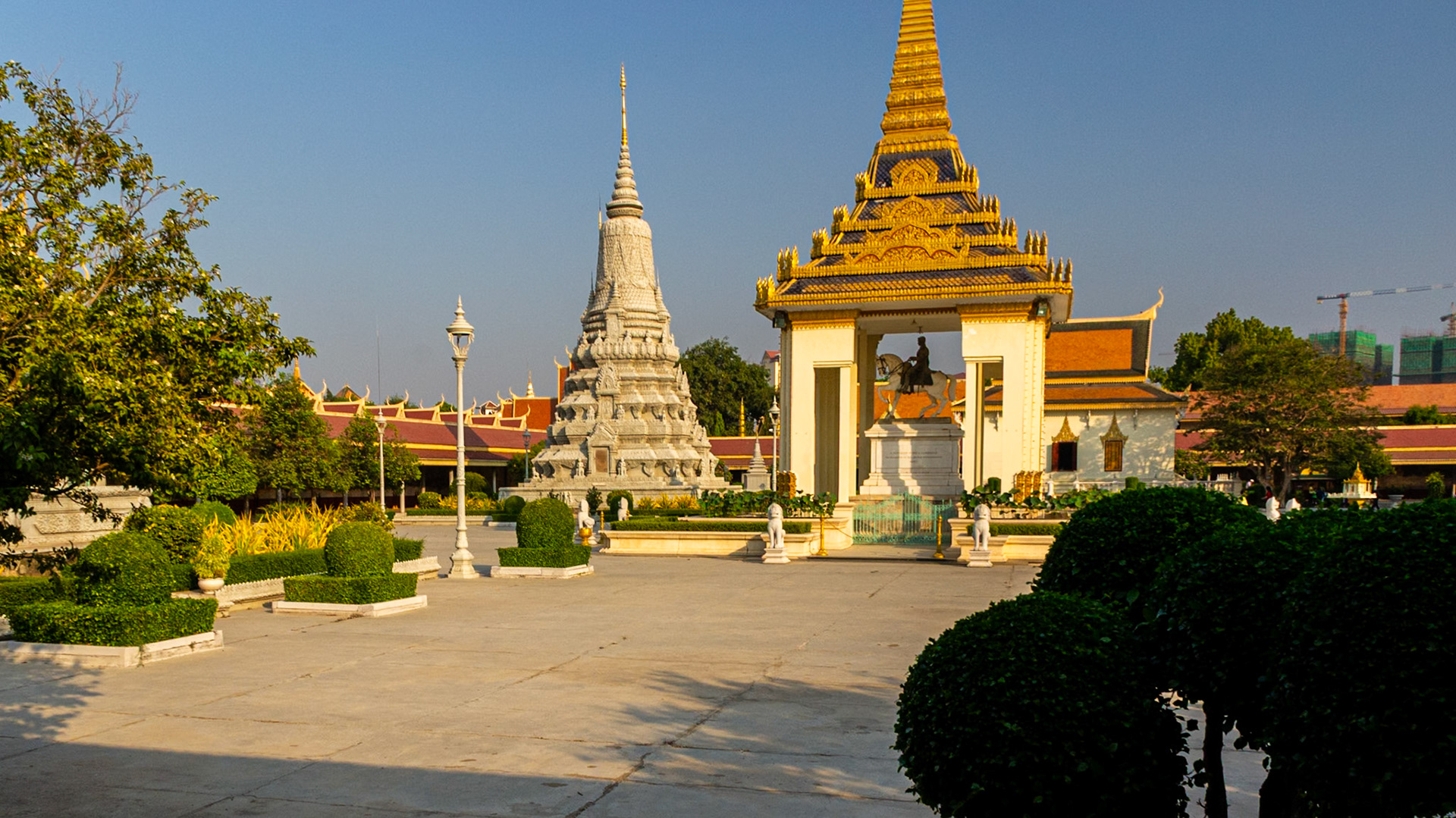
Royal Palace courtyard with statue of King Norodom and his Stupa in the background.
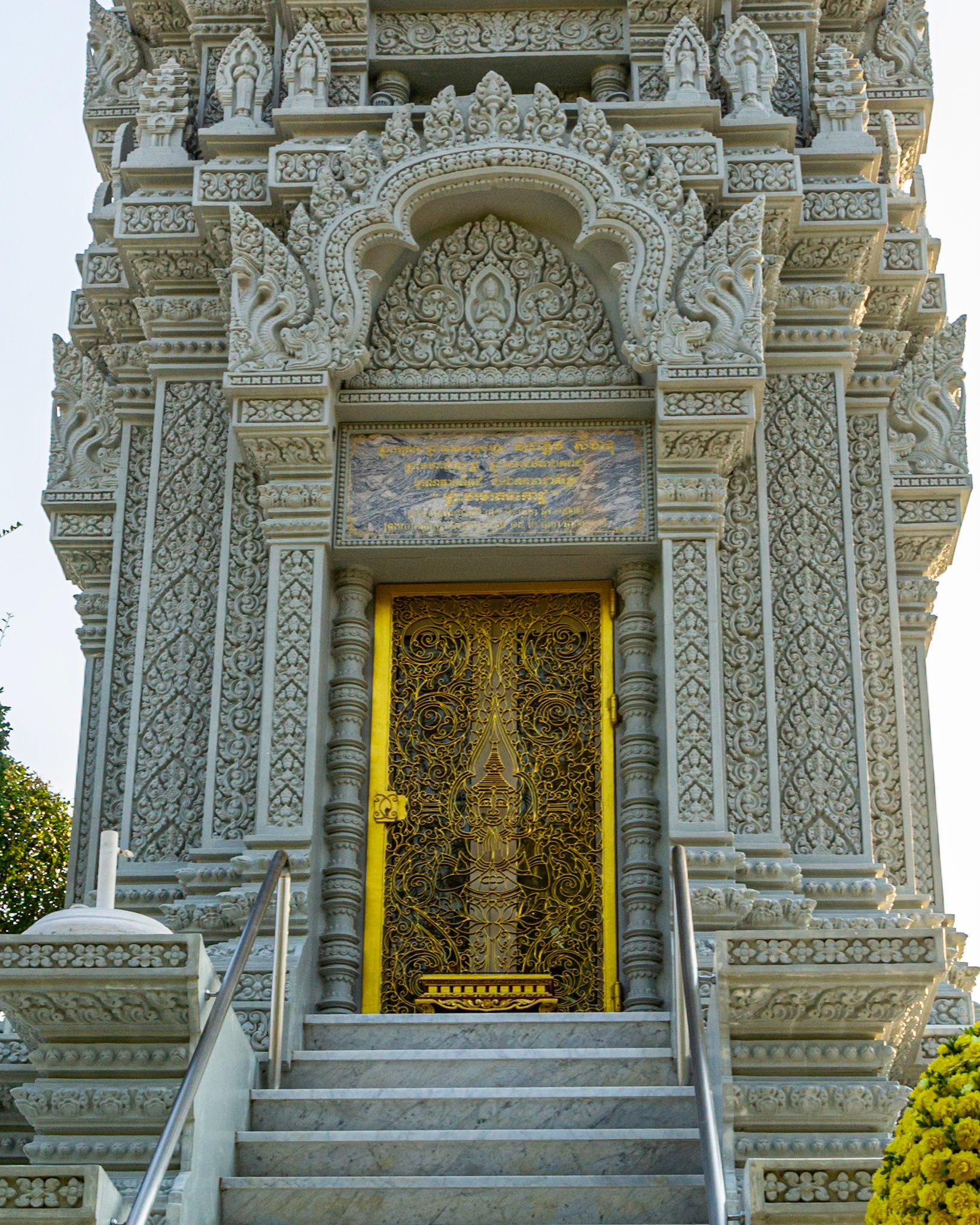
Gilded gates of the Stupa of Kantha Bopha
Choeng Ek and Tuol Sleng
Choeung Ek, formerly an orchid in Dangkao district south of Phnom Penh is the best known of the infamous sites known as "The Killing Fields" where the brutal Khmer Rouge regime executed over one million people and is linked to Toul Sleng, a former secondary school in Phnom Penh which was used as Security Prison 21 by the Khmer Rouge. Toul Sleng ("Hill of the Poisonous Trees" or "Strychnine Hill") is now a museum chronicling the Cambodian Genocide.
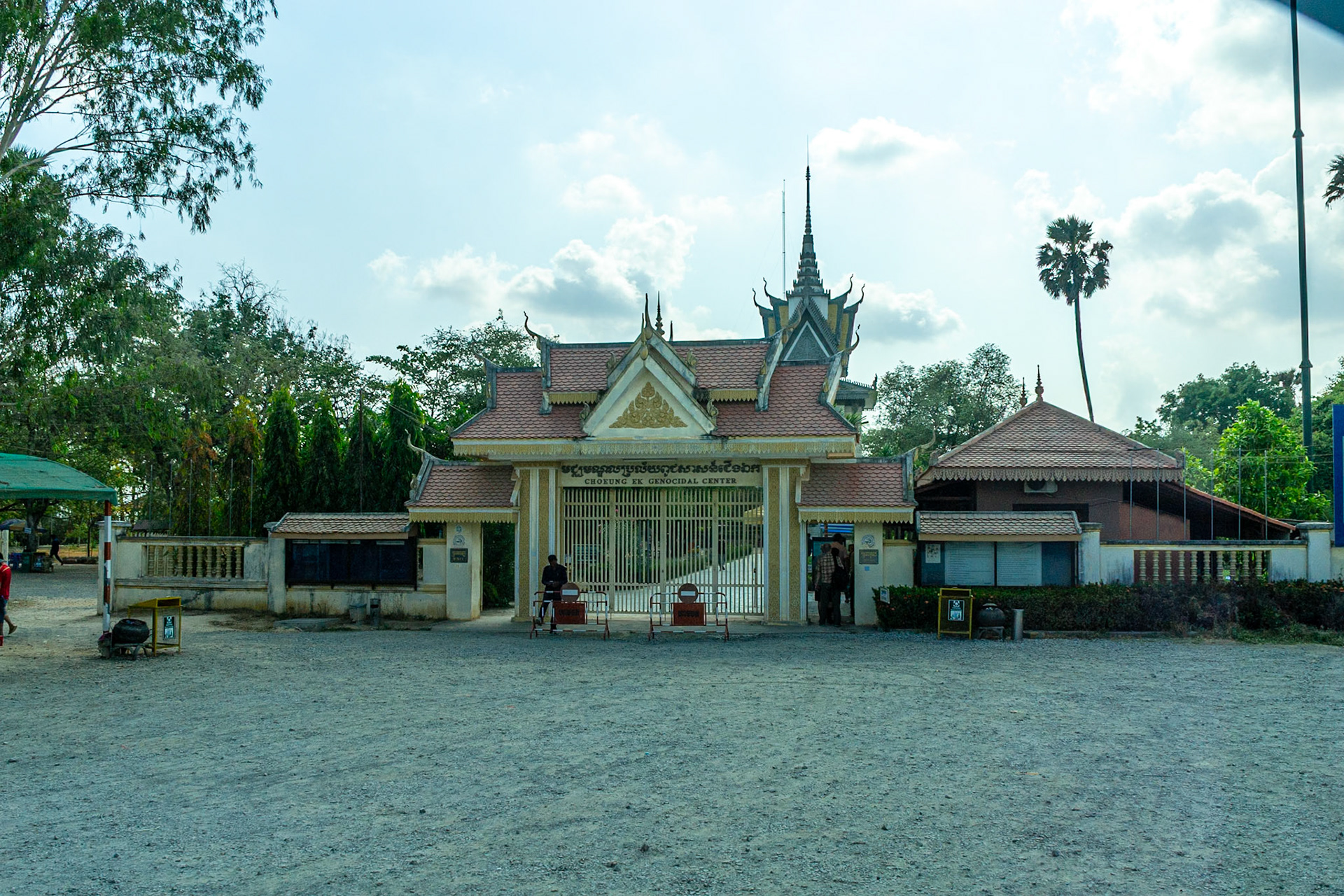
Choeung Ek Genocide Centre. Choeung Ek, once a former orchard is the site of mass graves of victims of the Khmer Rouge regime. Many of the dead were former political prisoners of the Tuol Sleng detention center. Choeung Ek is about 17km south of Phnom Penh.
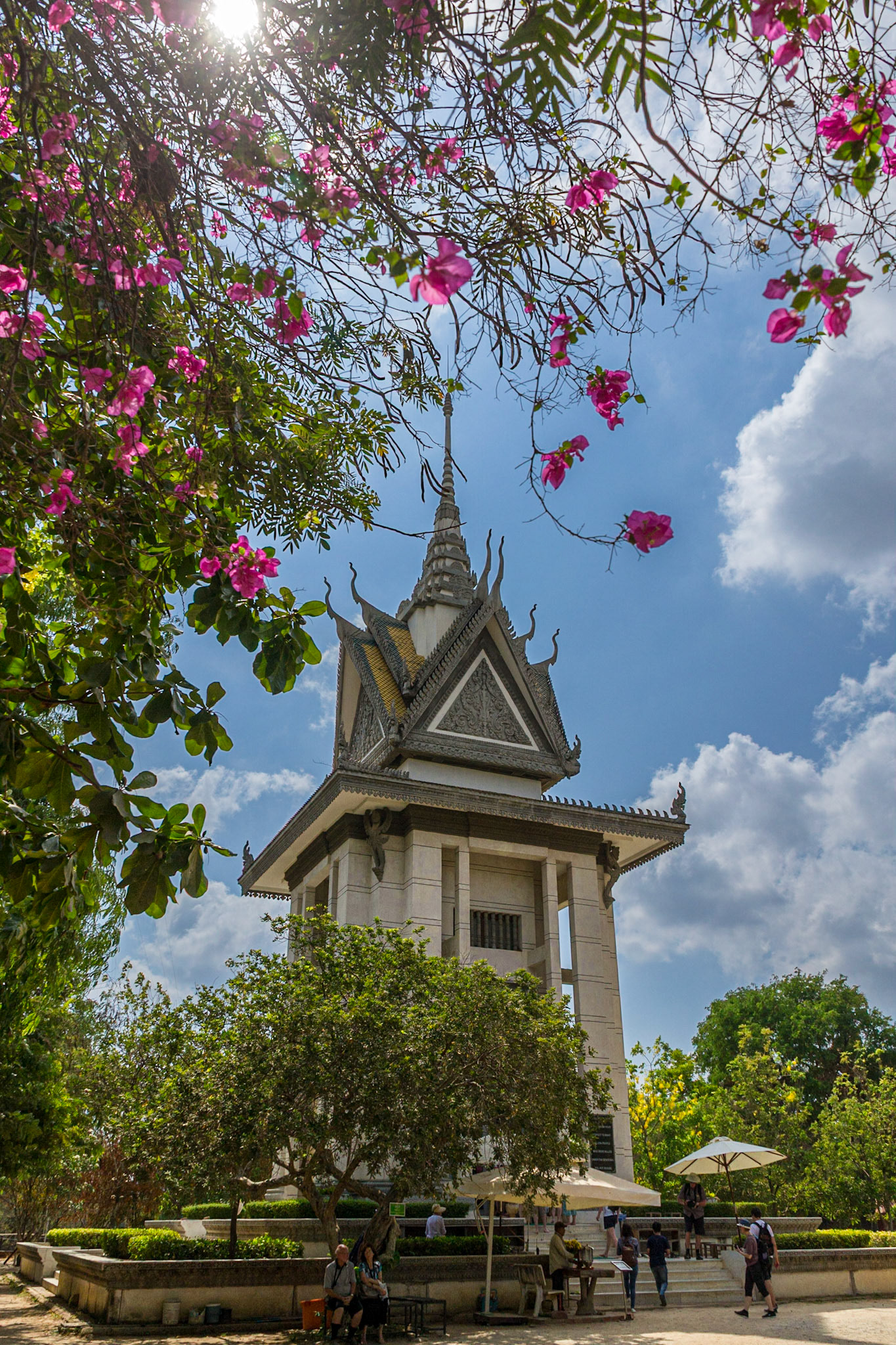
Choeung Ek Stupor gives a misleading first impression as a place of serene beauty.
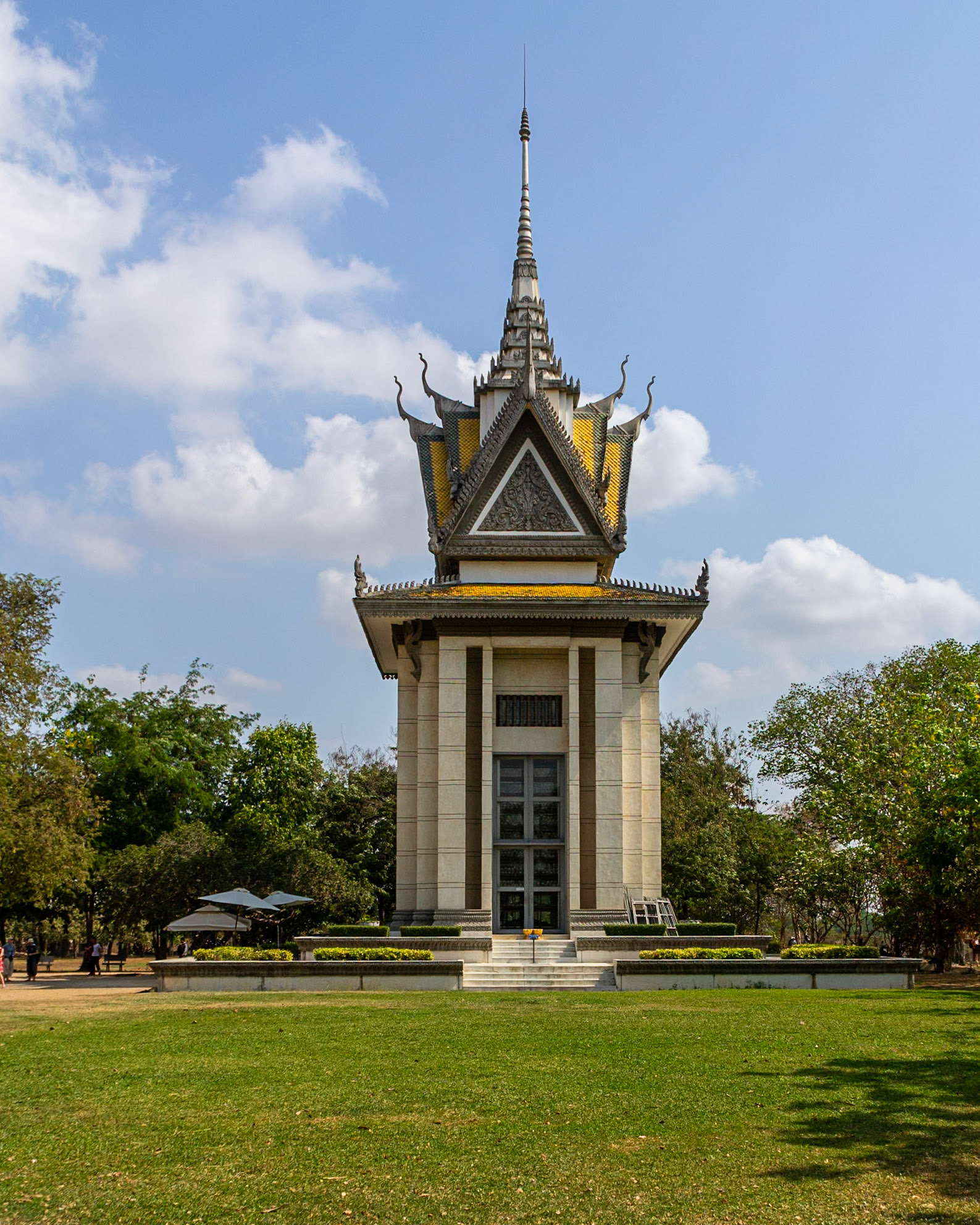
The stupa houses more than 5,000 human skulls of victims of the Khmer Rouge regeime.
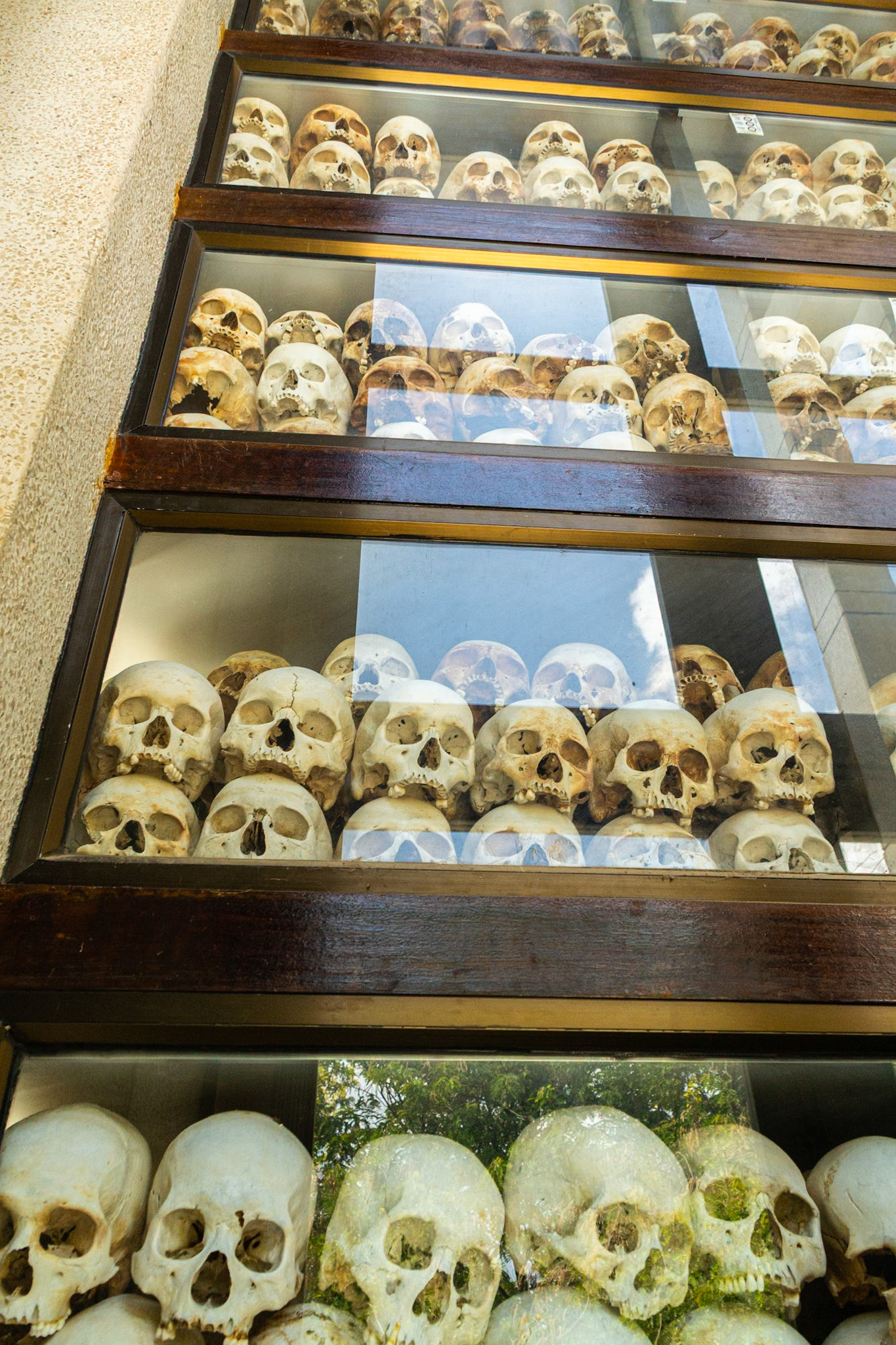
Thousands of bleached skulls lie inside the Stupa serving as a gruesome reminder of the mindless brutality of the Khmer Rouge.
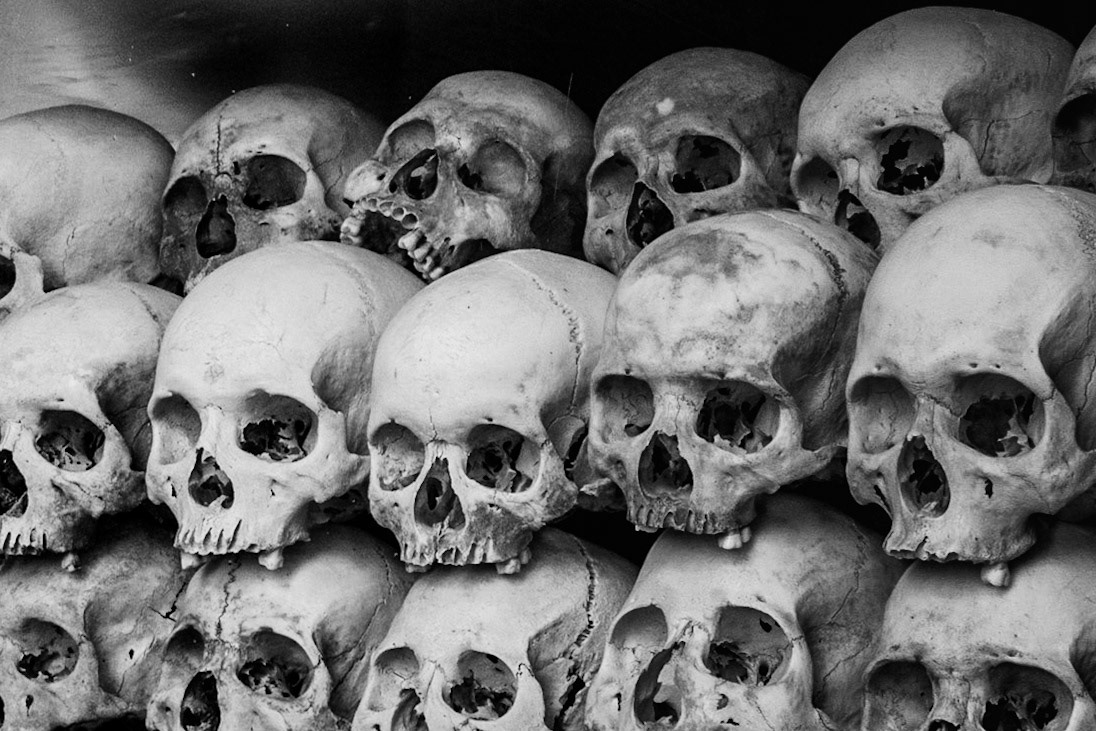
A gruesome reminder of the brutality of the Khmer Rouge regeime.
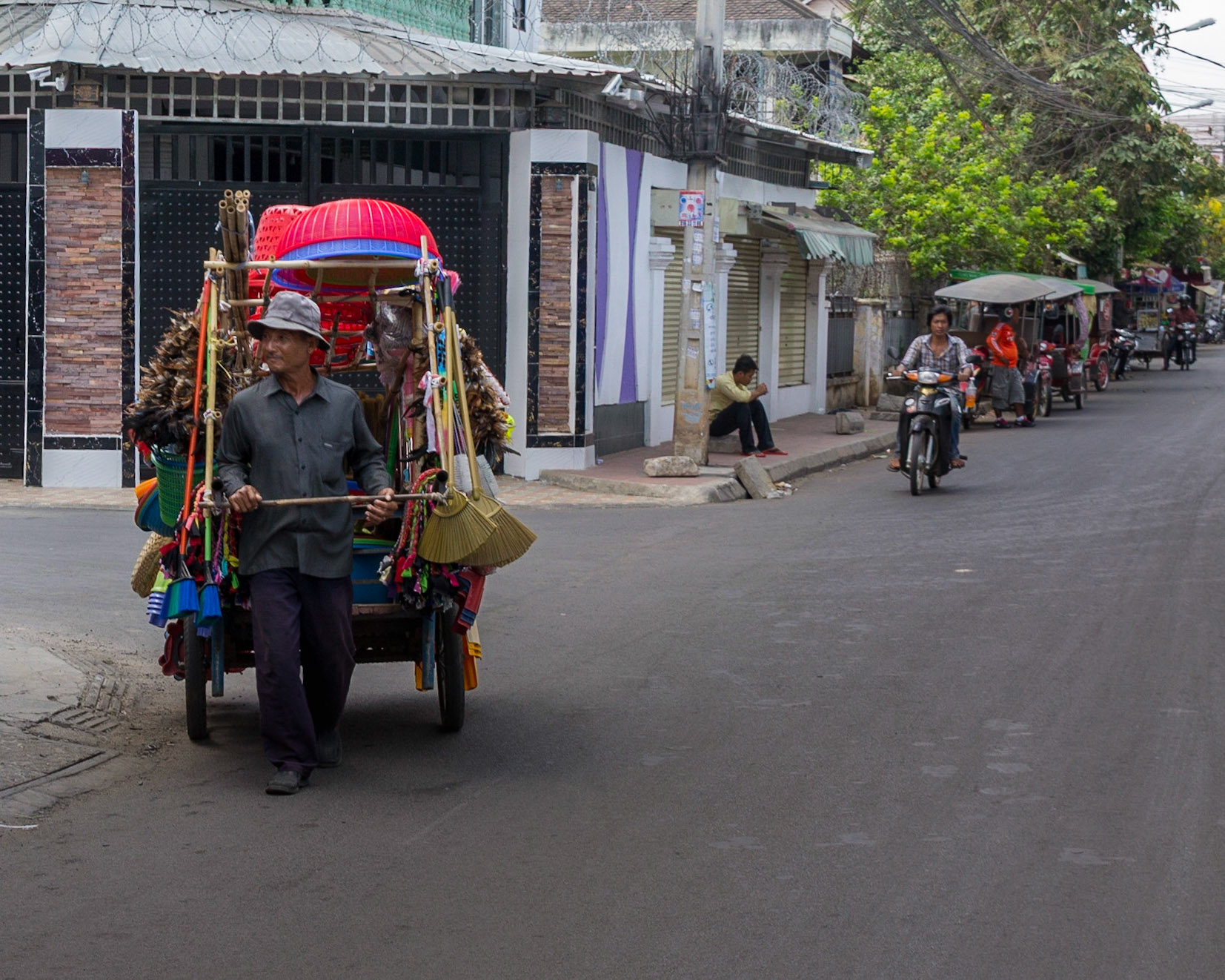
Life goes on, a street vendor wheels his goods through the streets in search of customers.
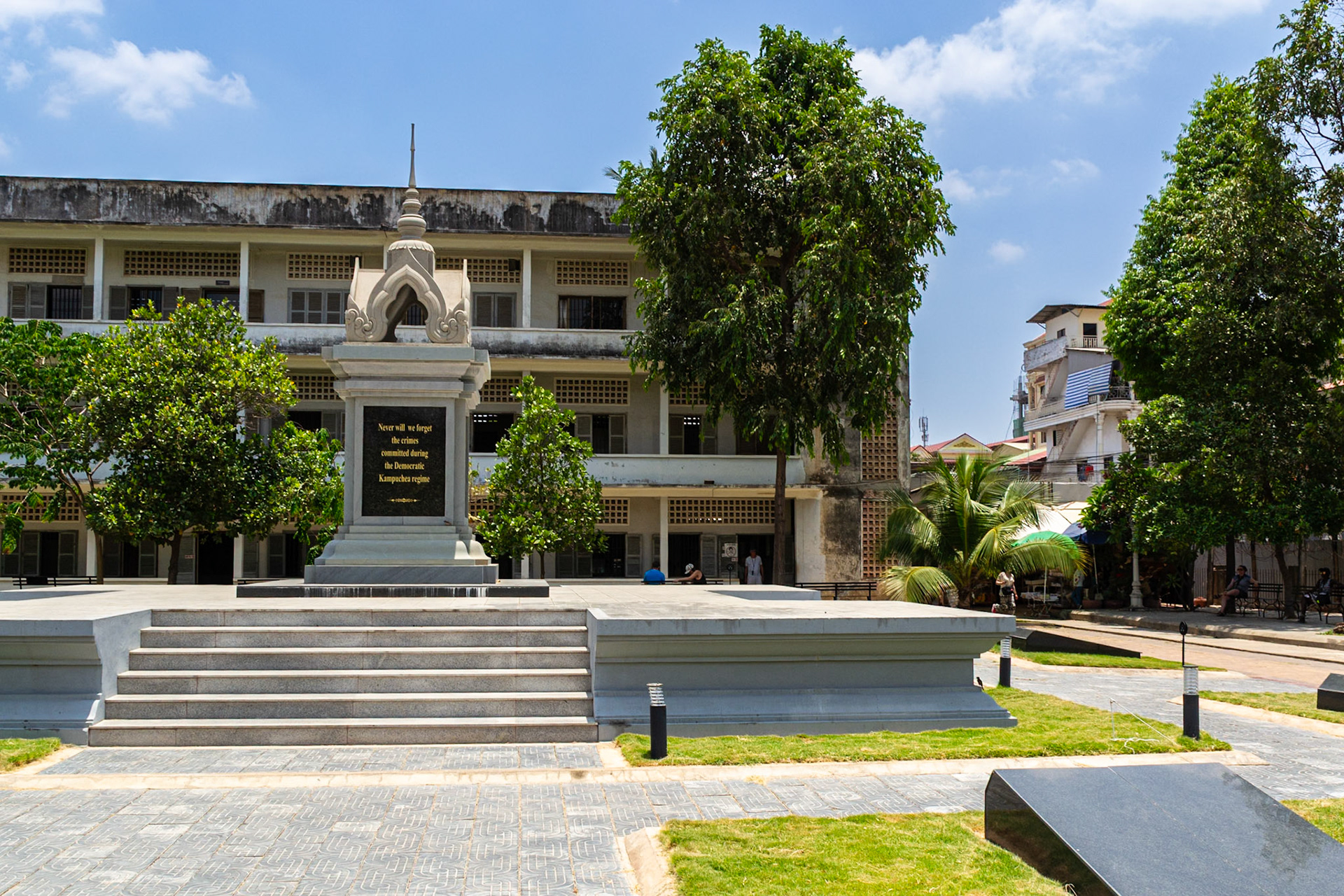
Tuol Sleng Genocide Museum memorial.
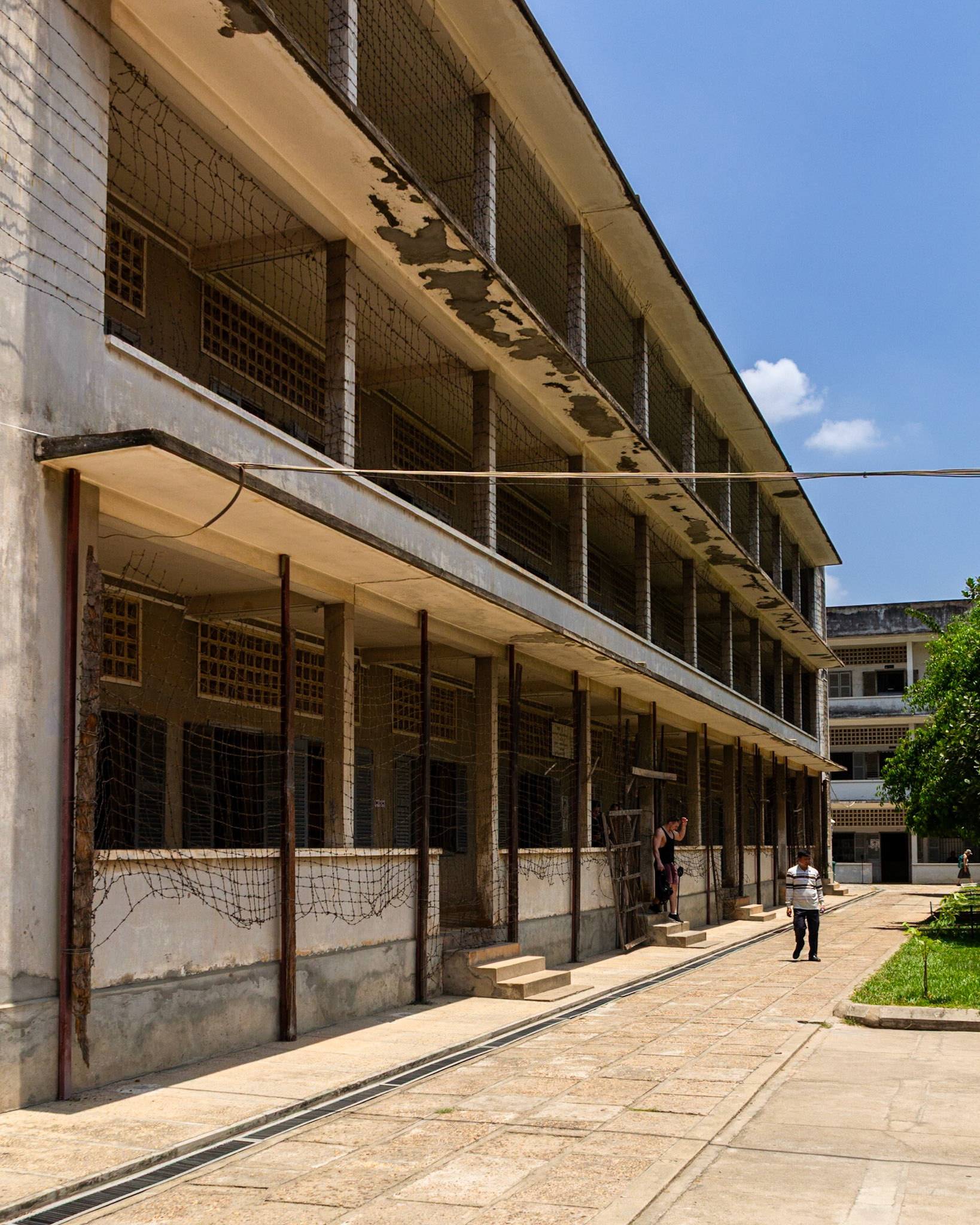
Tuol Sleng Genocide Museum - a former High School used as the notorious security prison S-21.
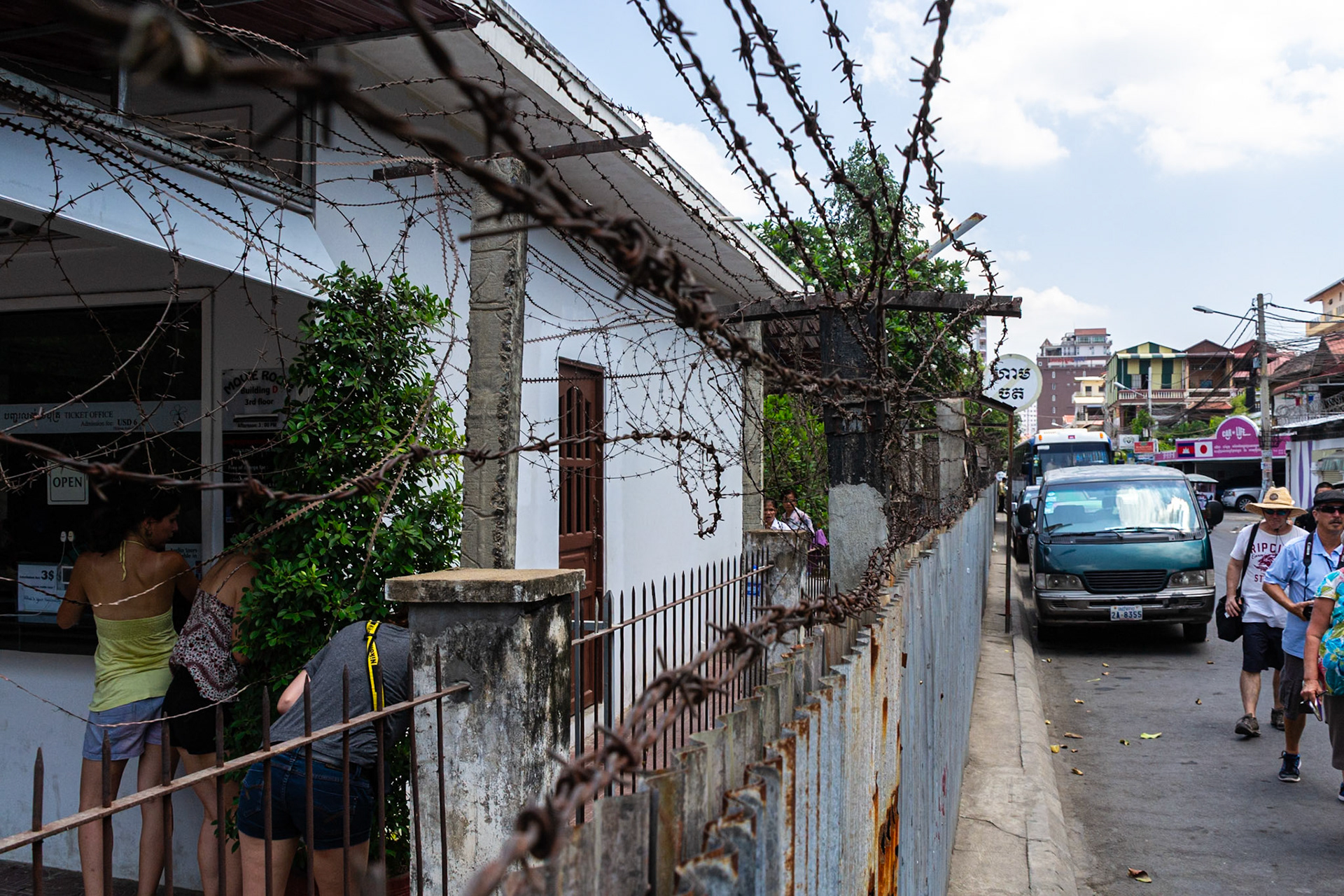
Rusting, tangled barbed wire to the perimeter fencing gives a none too sutle reminder that the premises behind was once a prison.
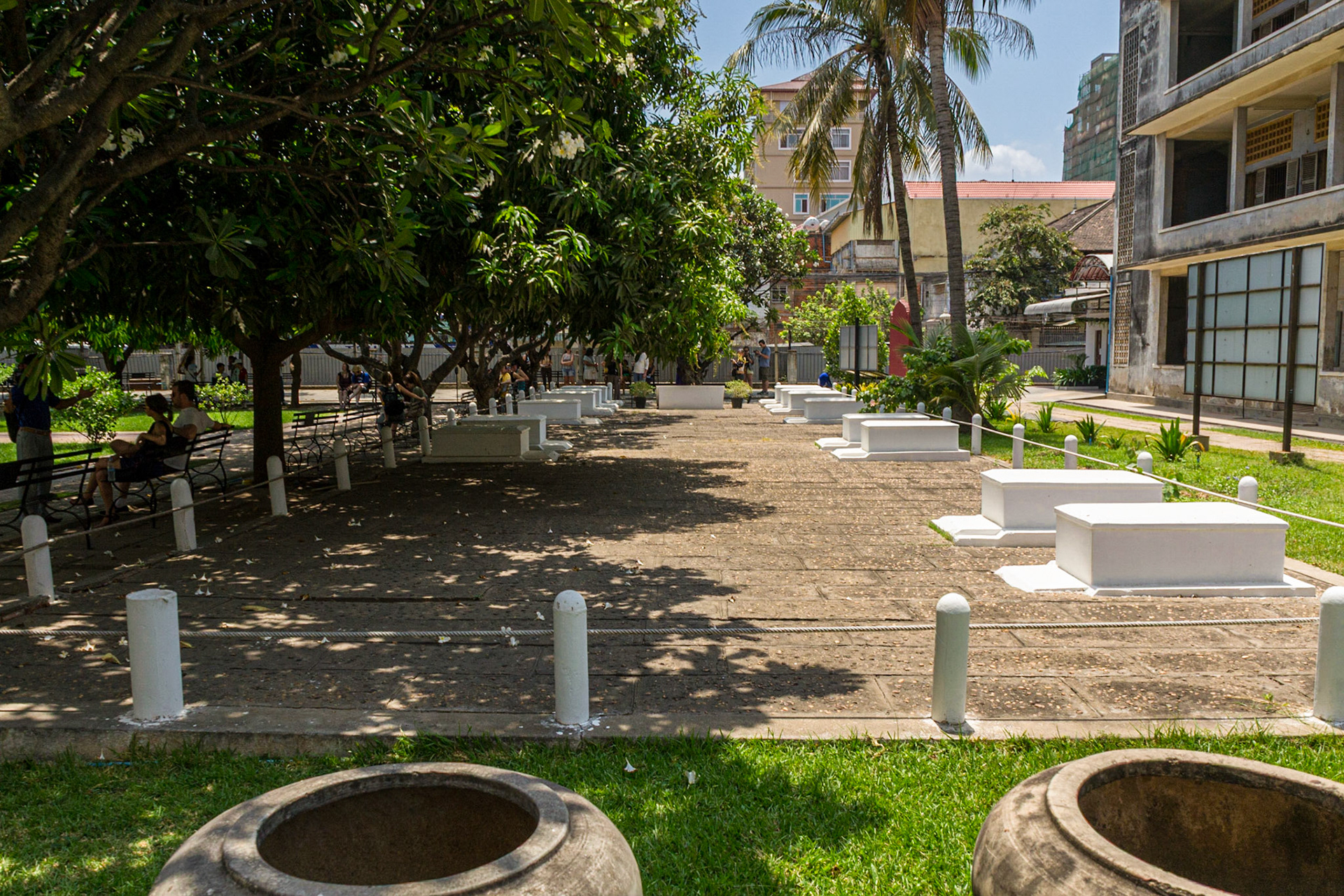
Tuol Sleng Genocide Museum -Graves in the grounds of the former High School used as the notorious security prison S-21.
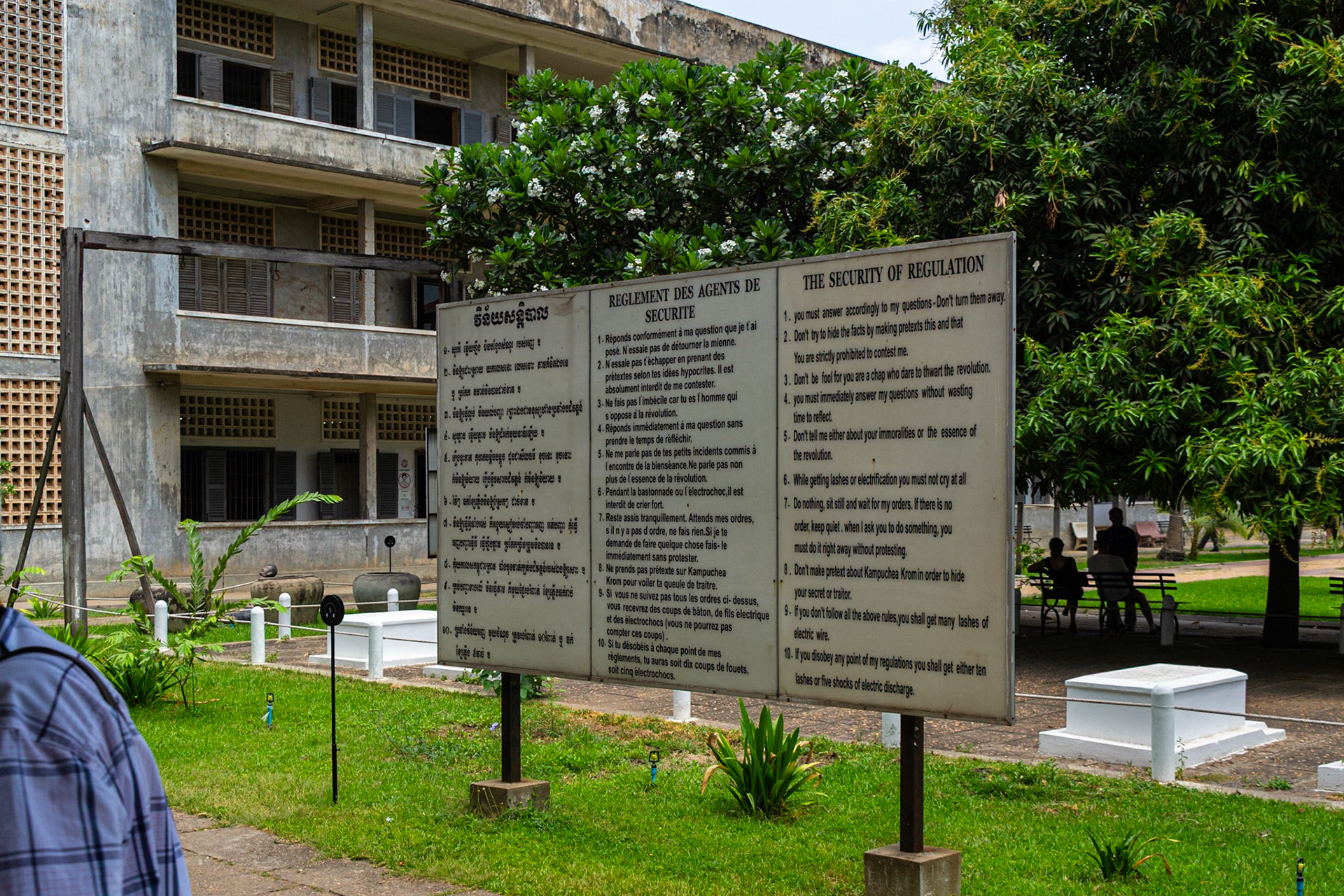
Draconian regulations hint towards the mindless brutality of the regeime.
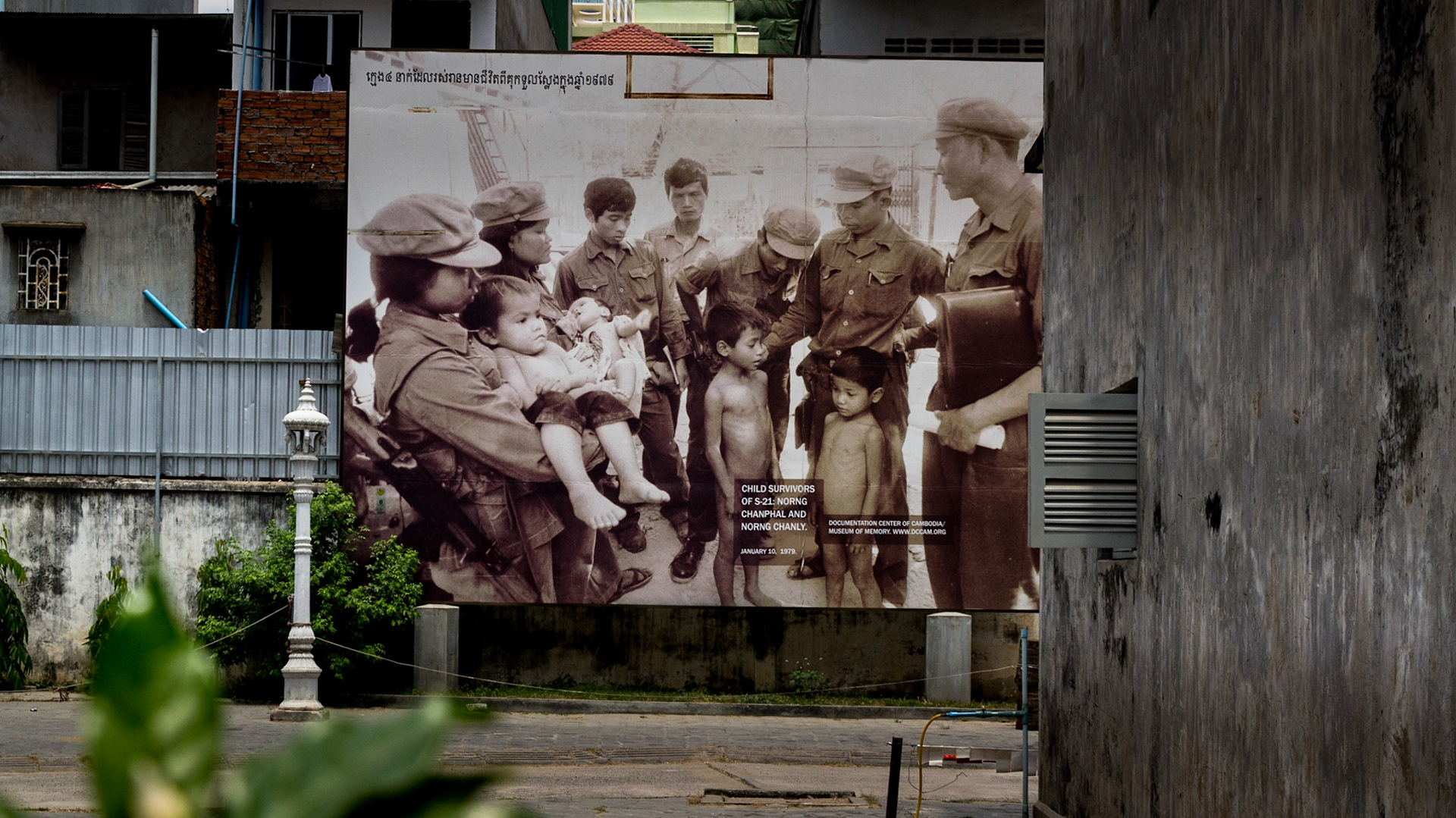
Child survivors of the notorious S-21 prison.
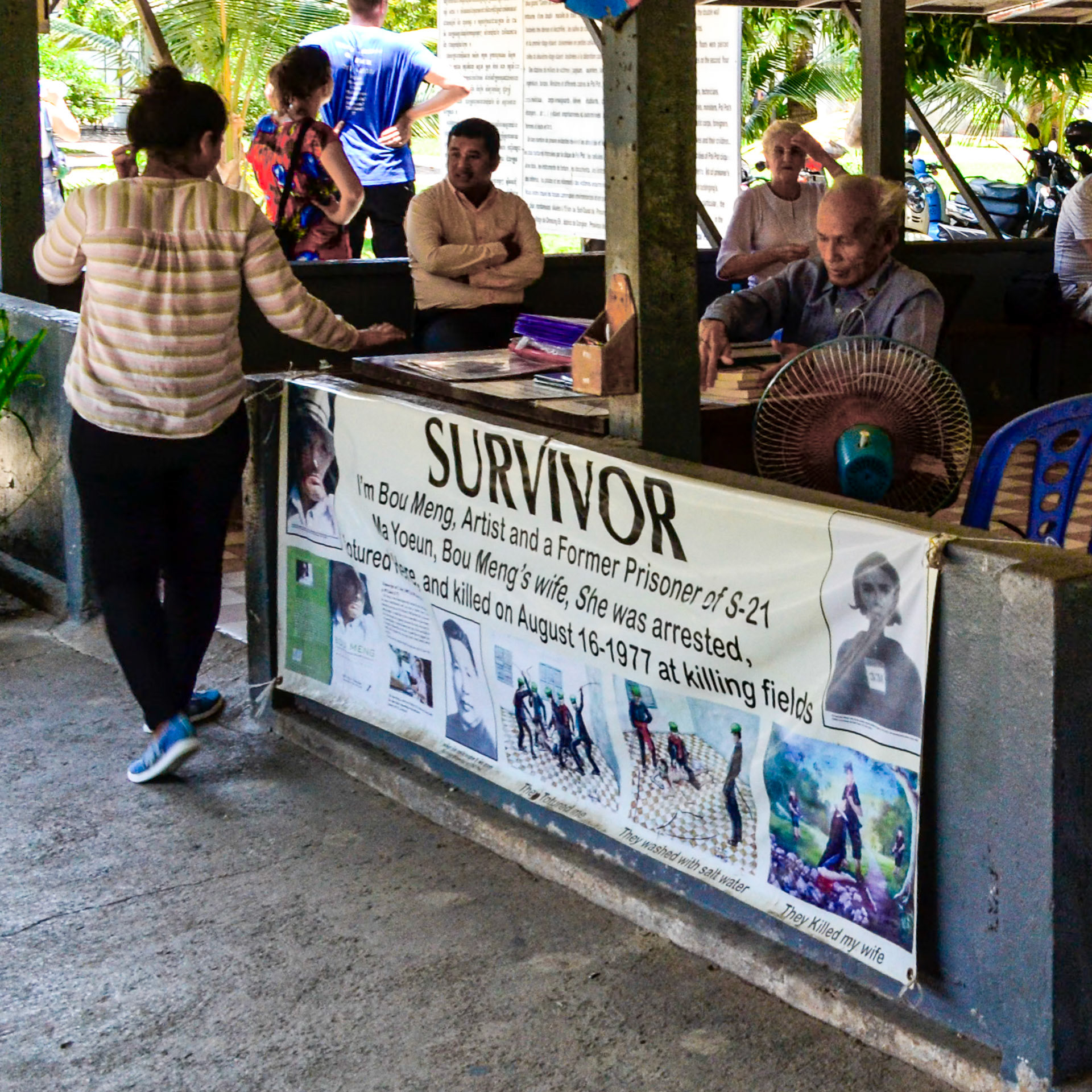
A former prisoner od S-21 tells his story.
Kampong Tralach and Oudong.
Leaving Phnom Penh aboard the "Scenic Spirit" we motor upstream along the mighty Mekong River to Kampong Tralach district where we transfer to land transport (ox-cart) and travel through rural farmland and small villages. Then onward by land (thankfully by air-conditioned coach) to visit Oudong Monastery which is built on what was the site of the original Khmer capital and royal residence for more than 250 years.
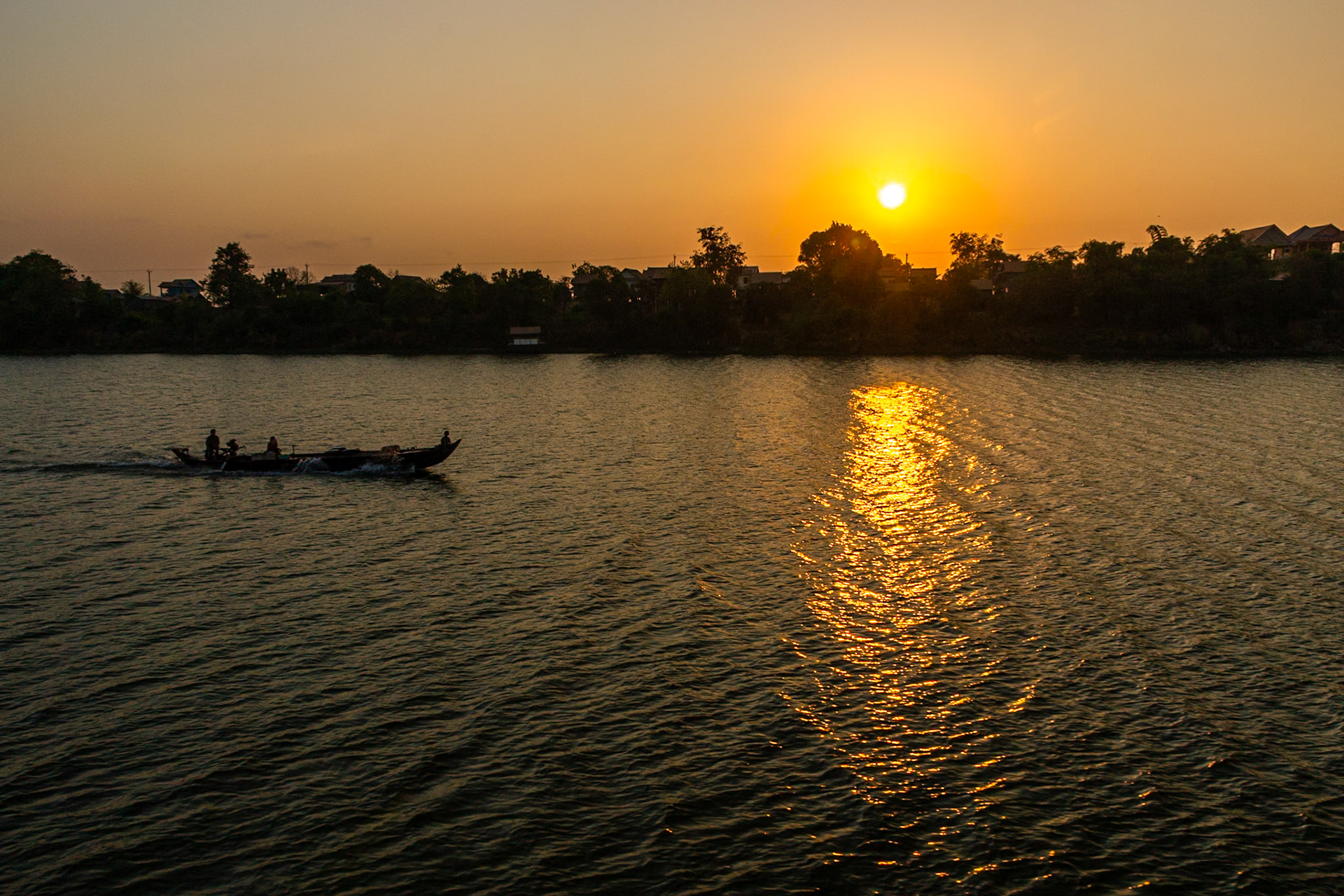
Sunrise over the Mekong River.
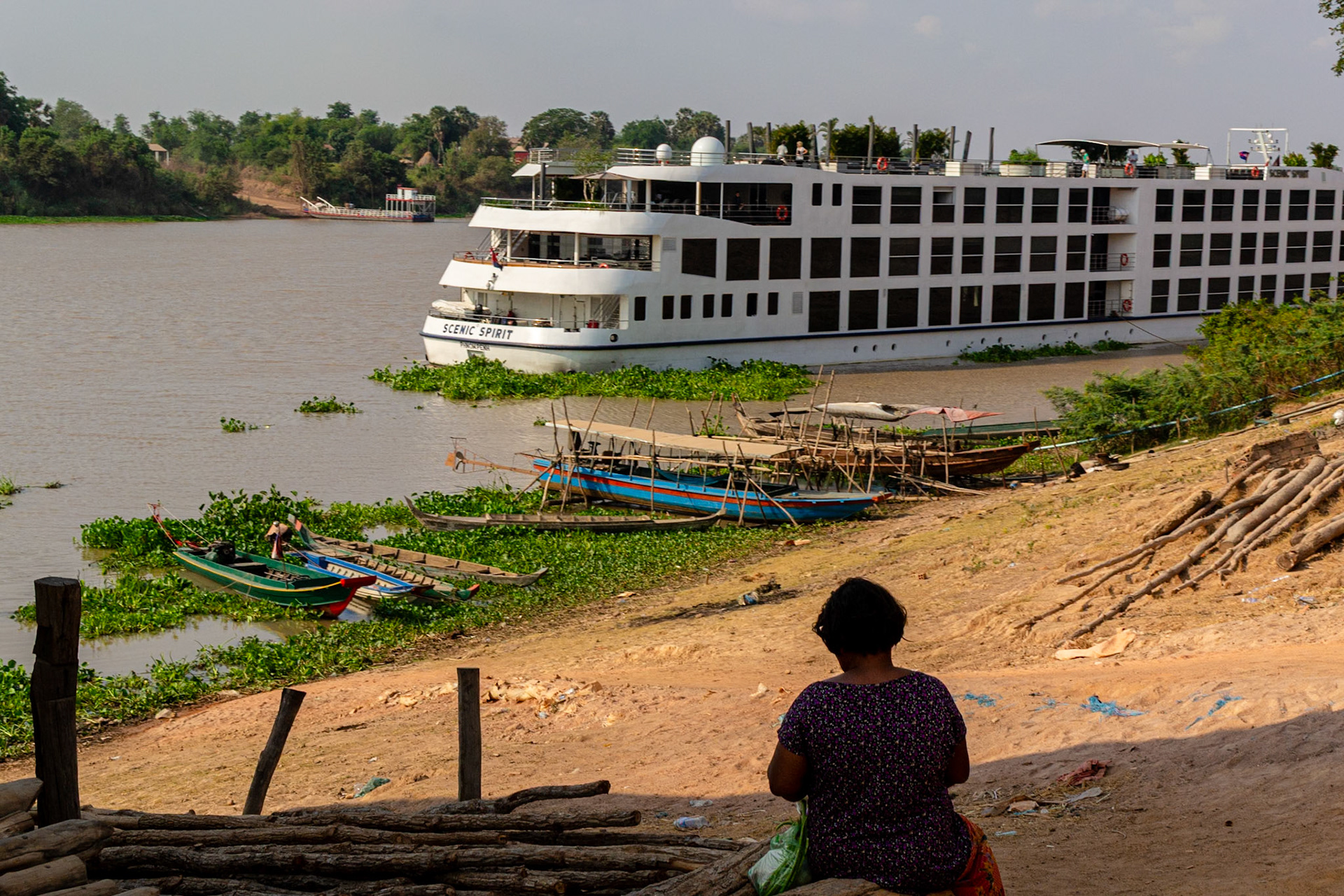
Local boats are dwarfed by the Scenic Spirit moored on the banks adjacent the village.
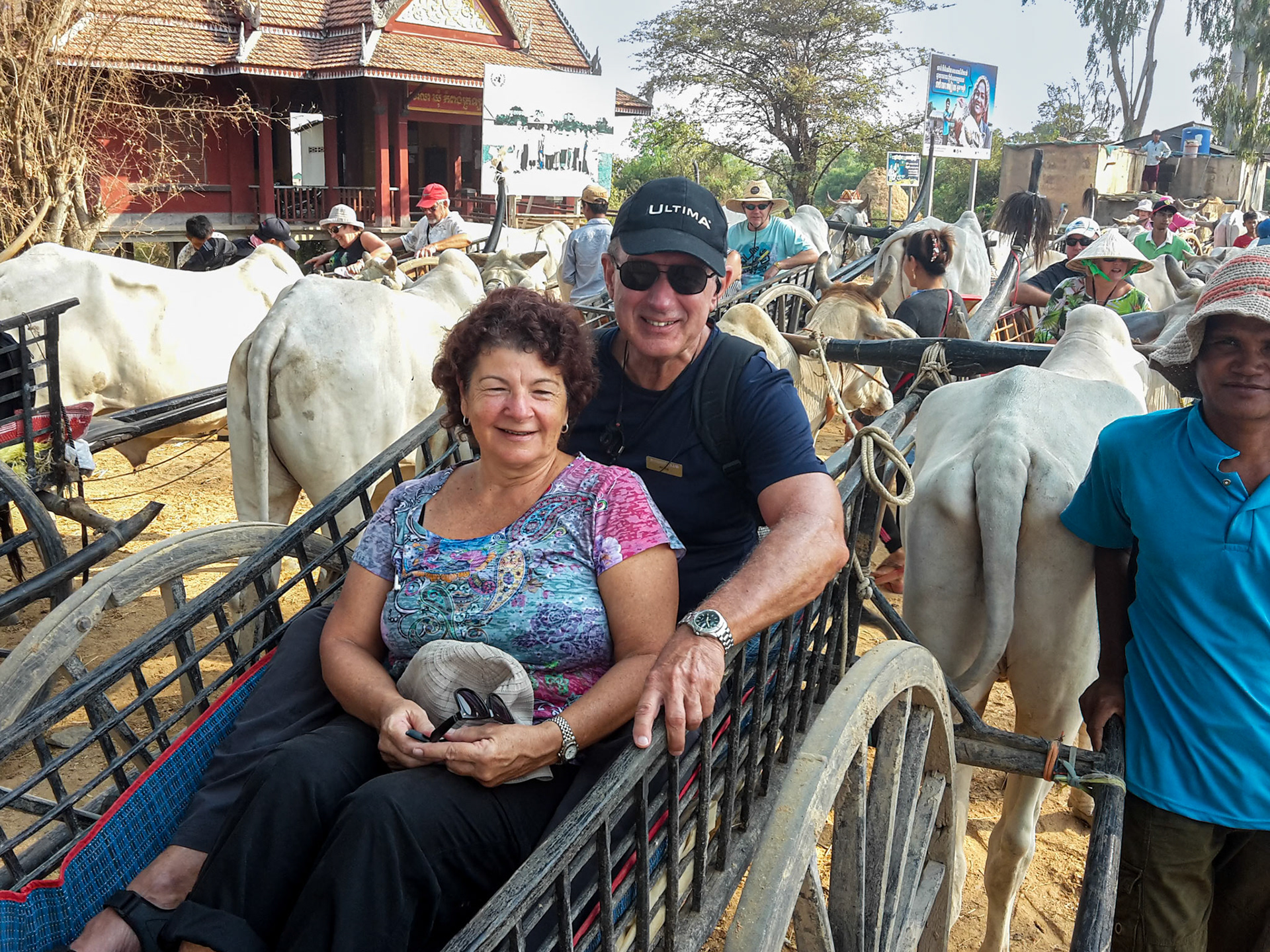
Our carriage, not the most comfortable mode of transport
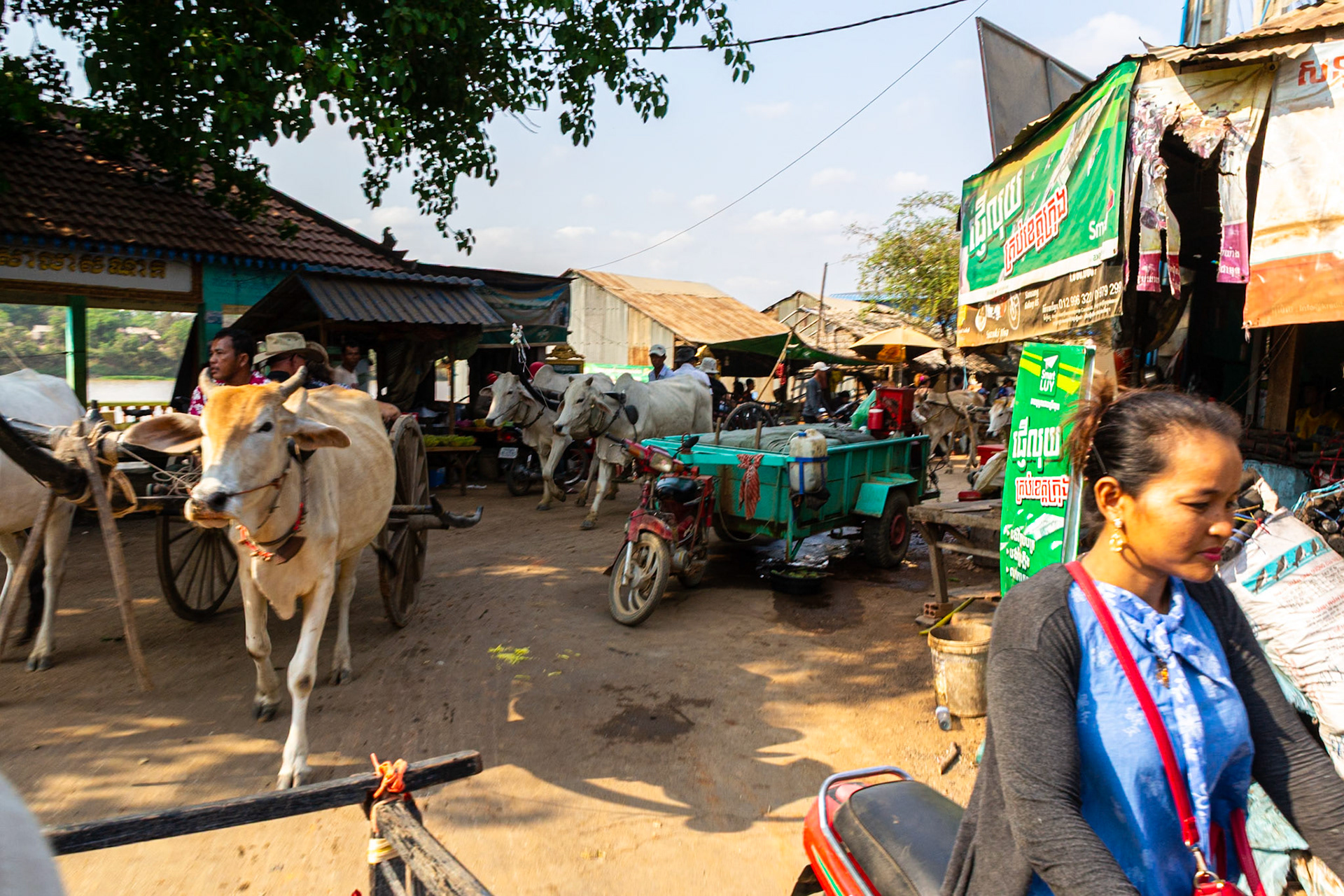
Negotiating the village streets.
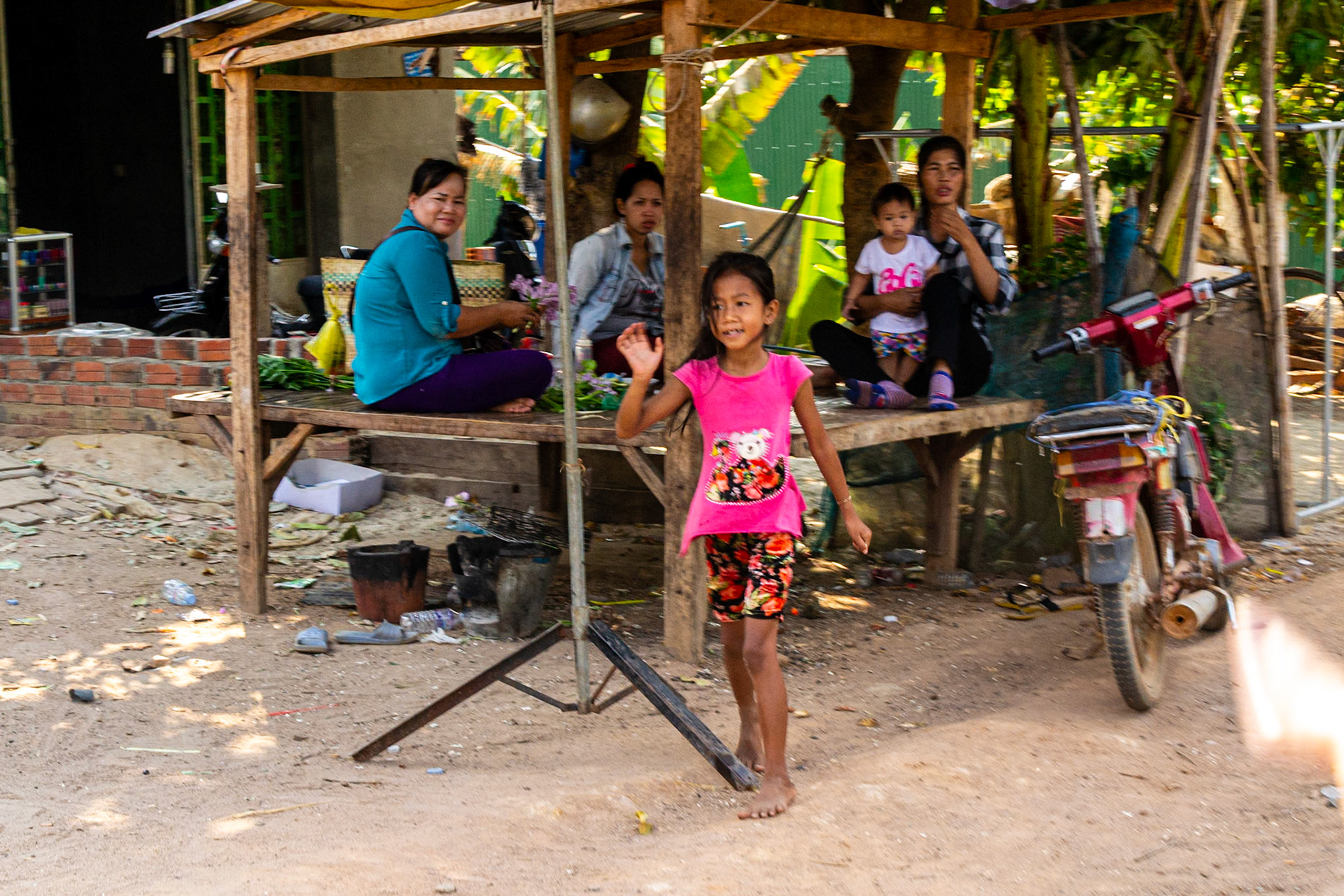
We are greeted by a friendly wave from the village people.
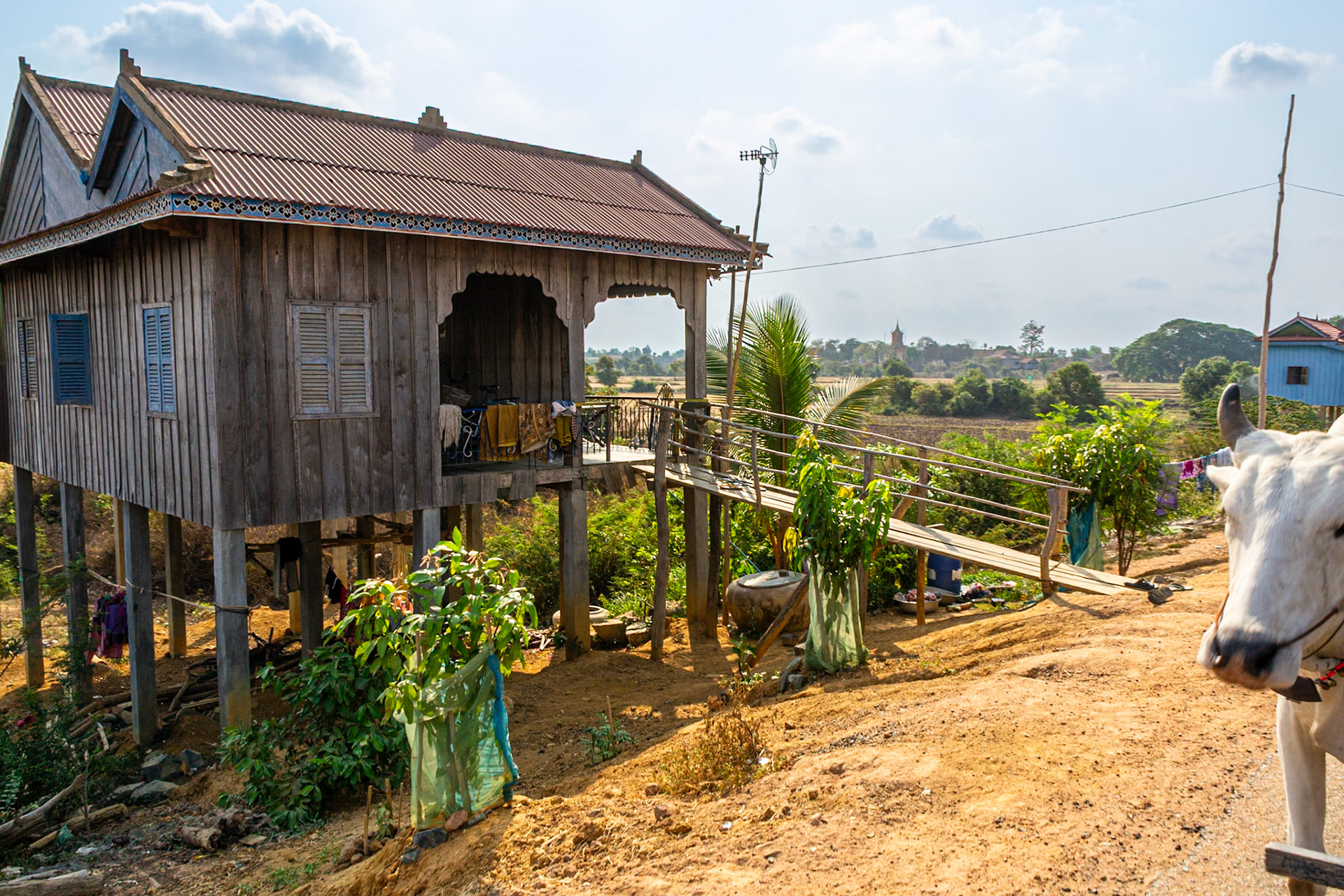
Homes reflect the extreme poverty of the country.
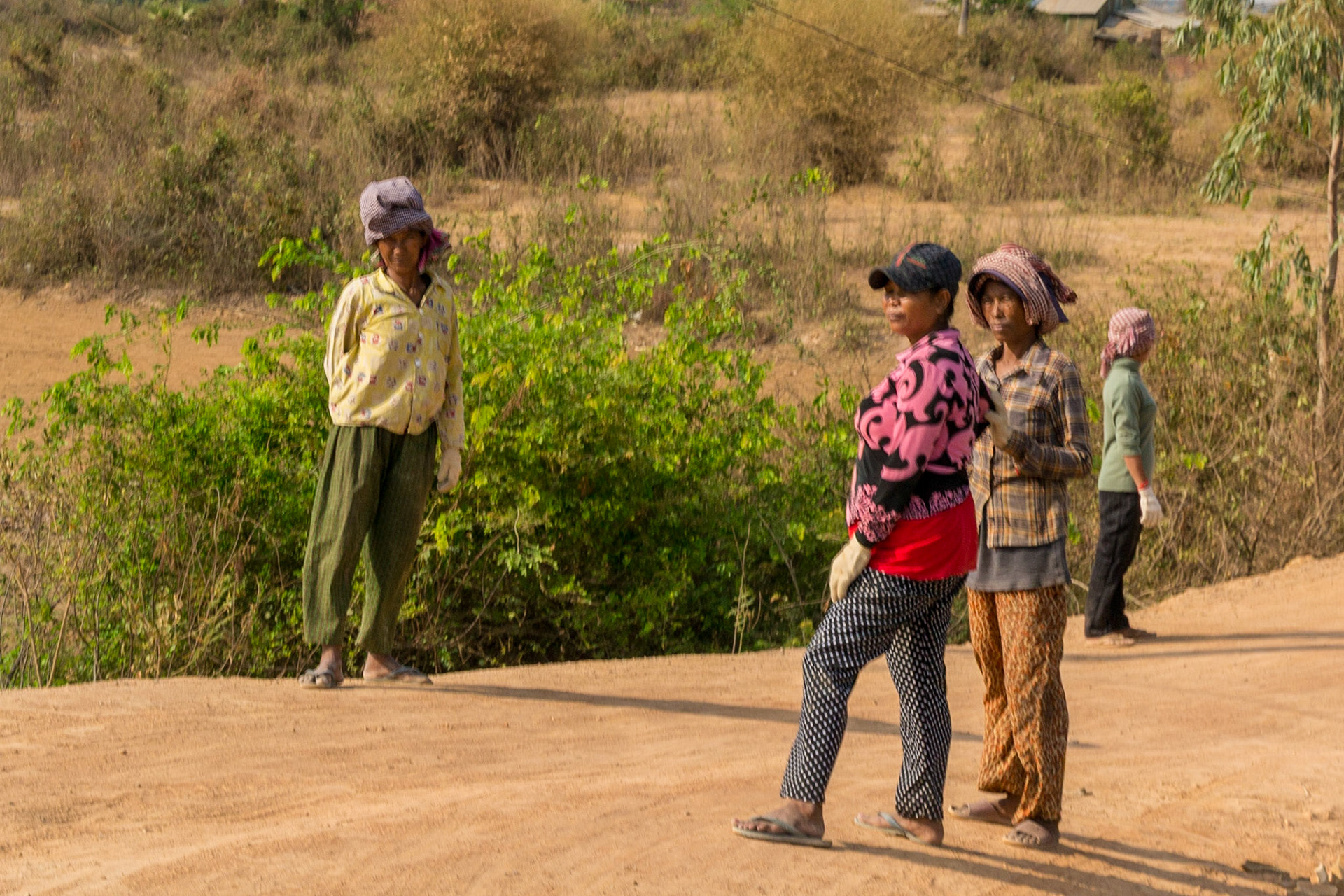
Workers wait for local transport to arrive.
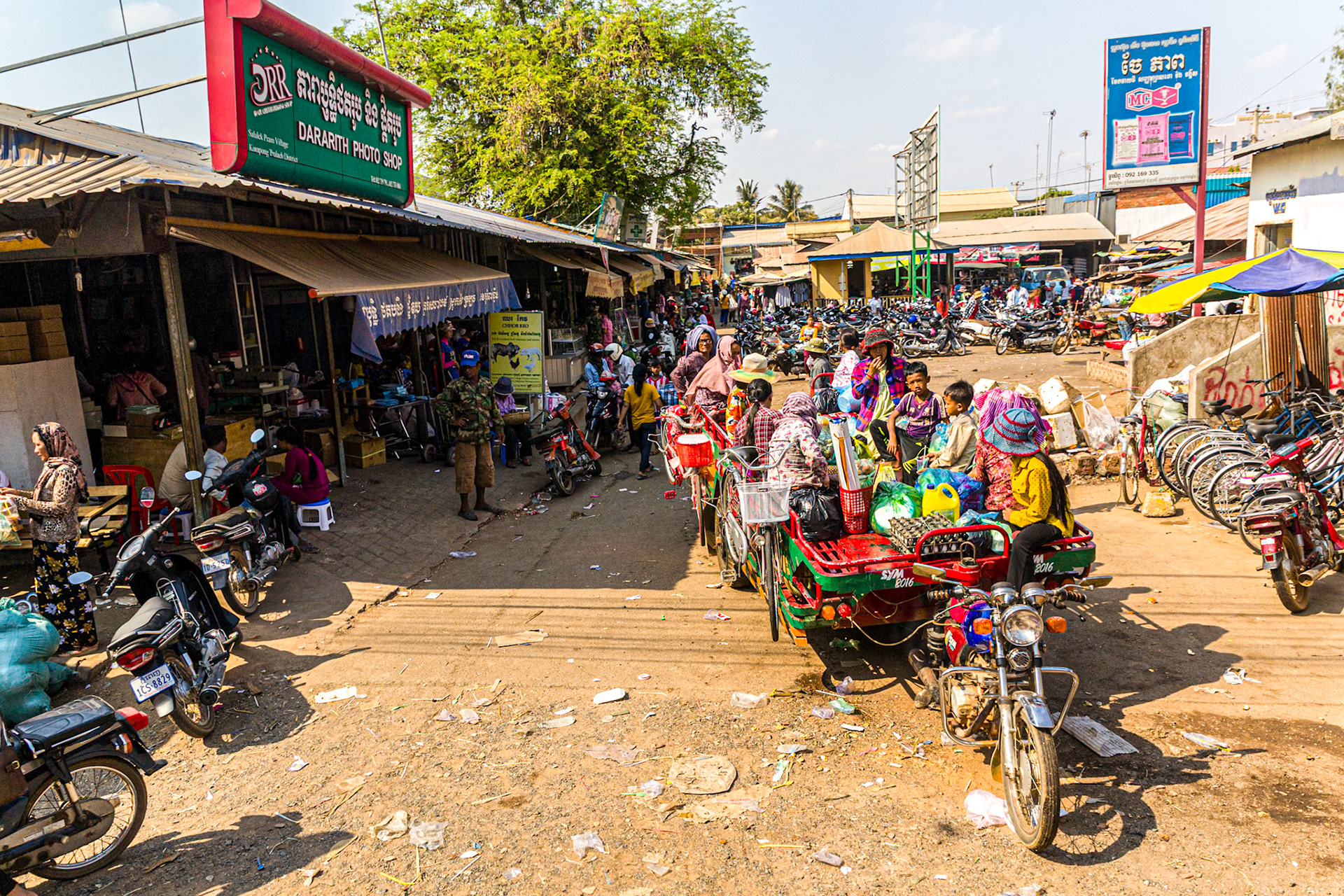
A Tuk-tuk Bus in Salalek Pram Village.
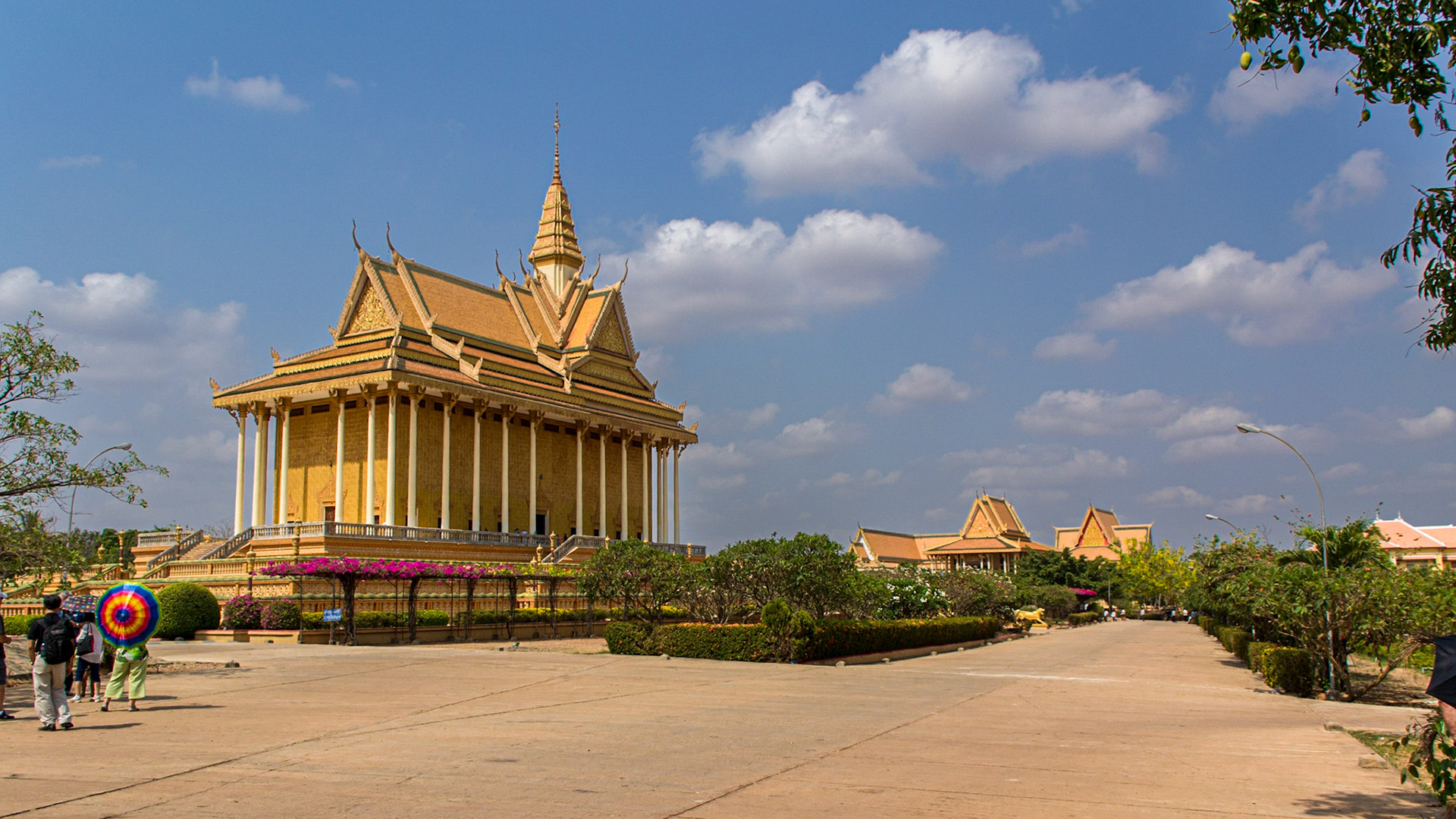
Oudong Monastery is built on the site of the original Khmer capital until 1866 and the royal residence for more than 250 years.
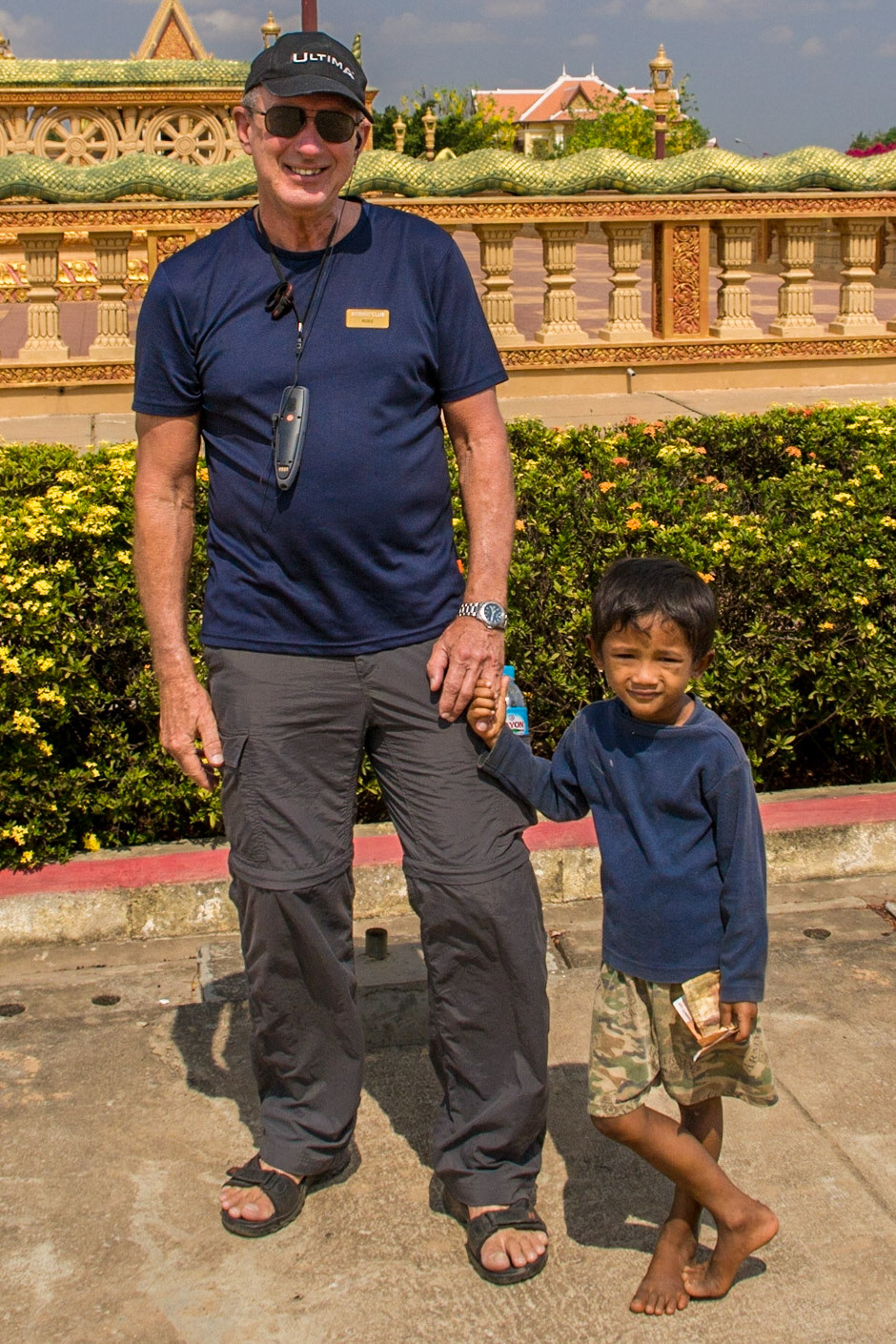
My new friend.
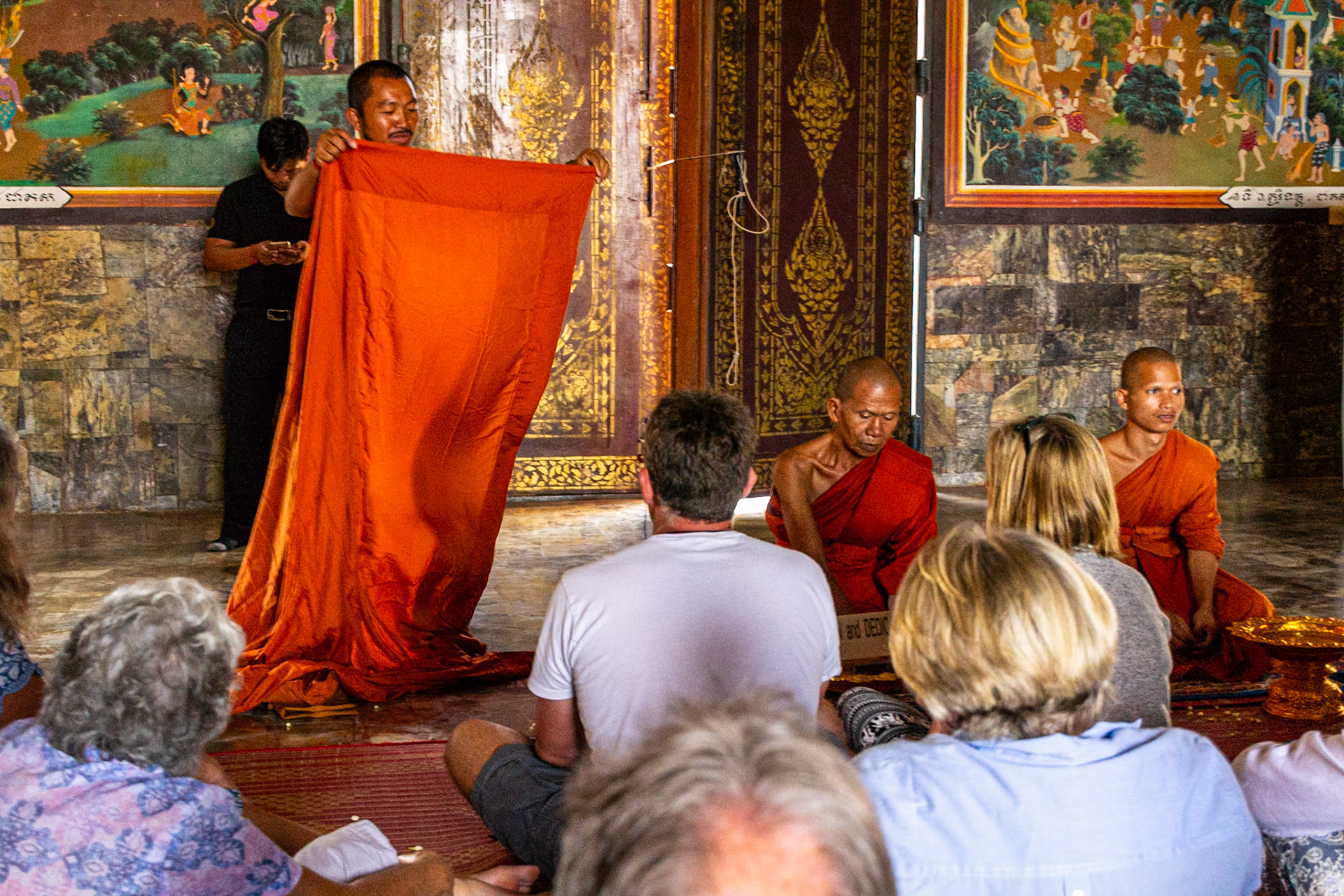
Vipassana Center Buddhist Monastery
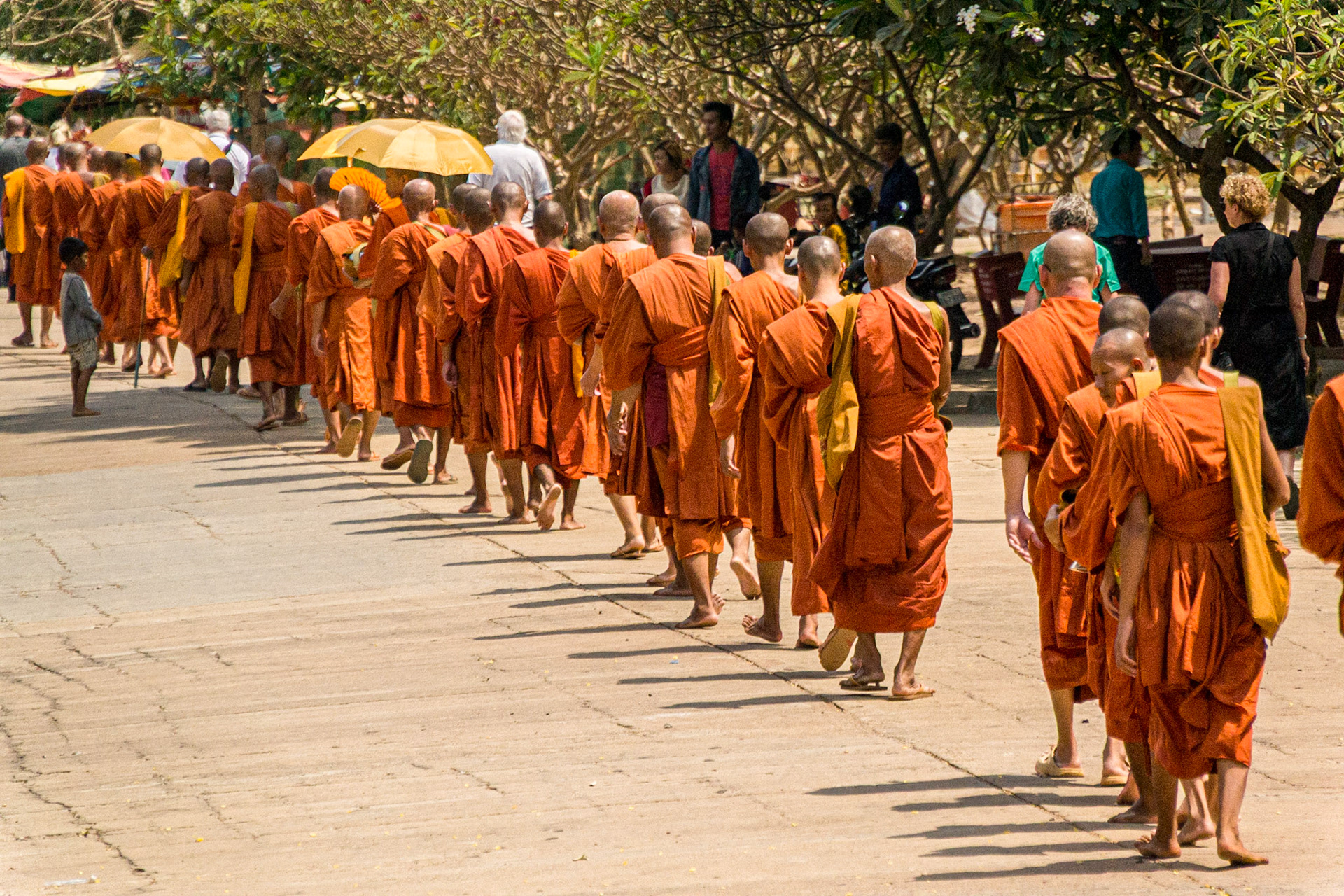
Monks making their way to the dining hall.
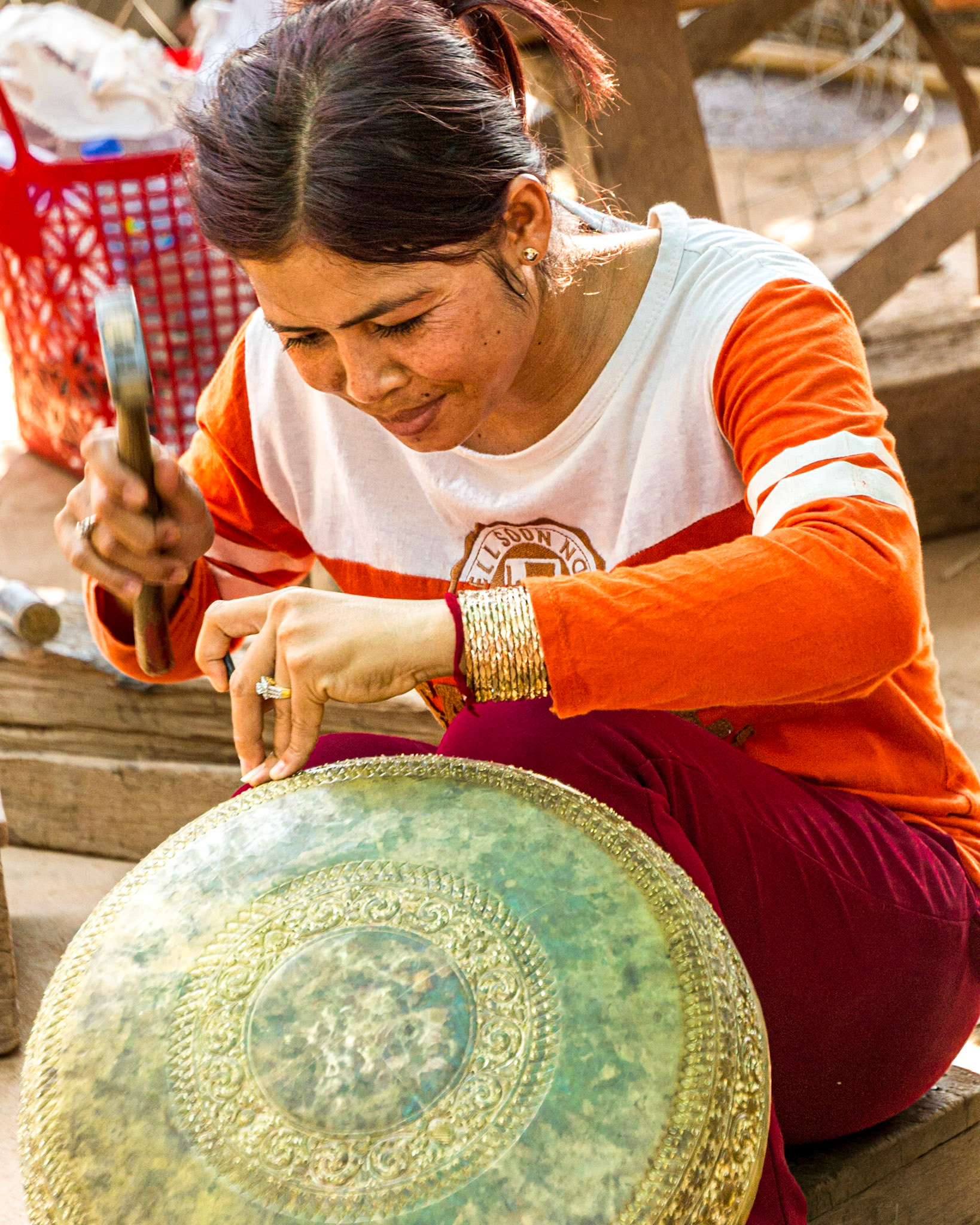
Local silversmith artisan skillfully decorates a silver platter by hand.
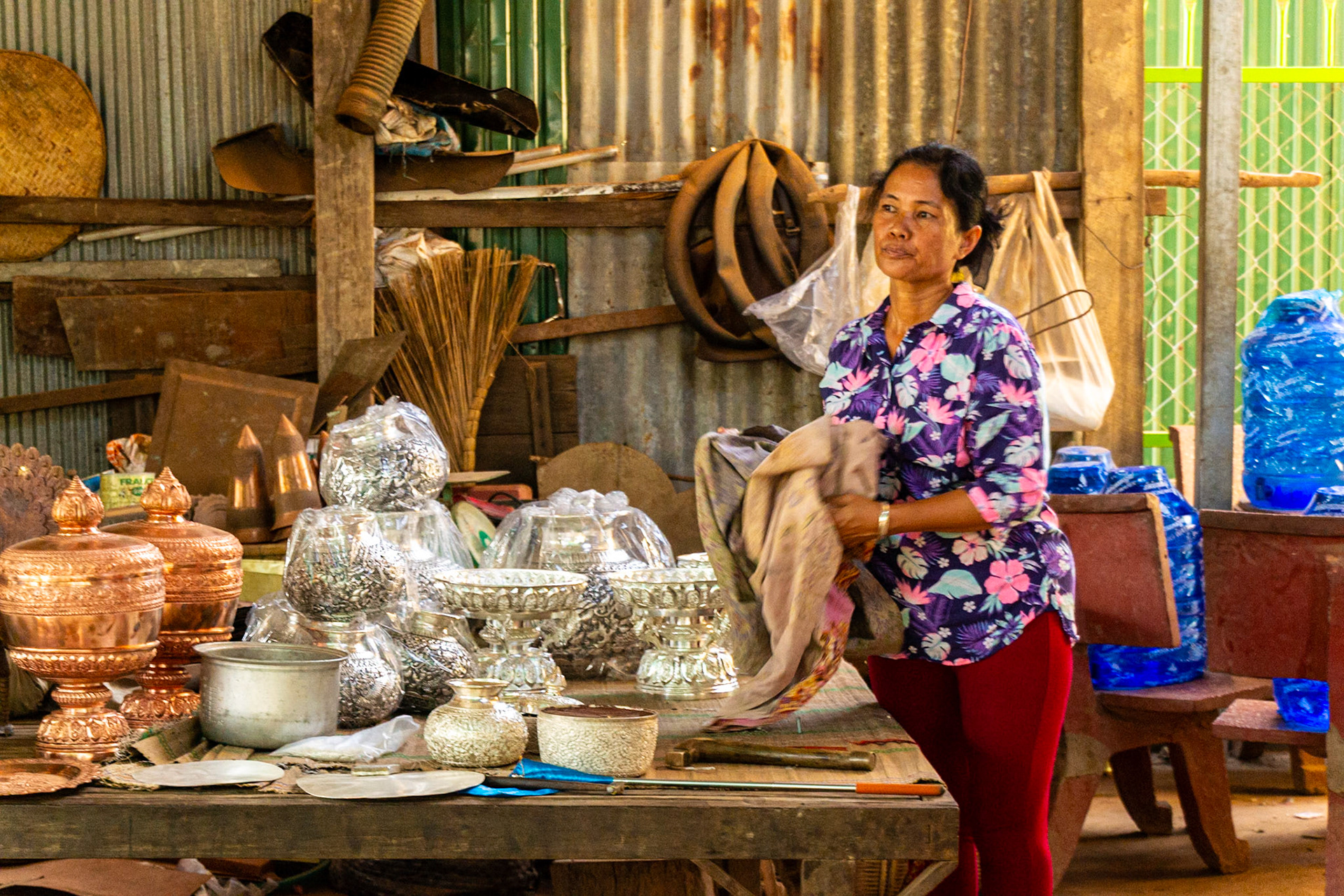
Silversmith Village displays of silver and copper items made on site.
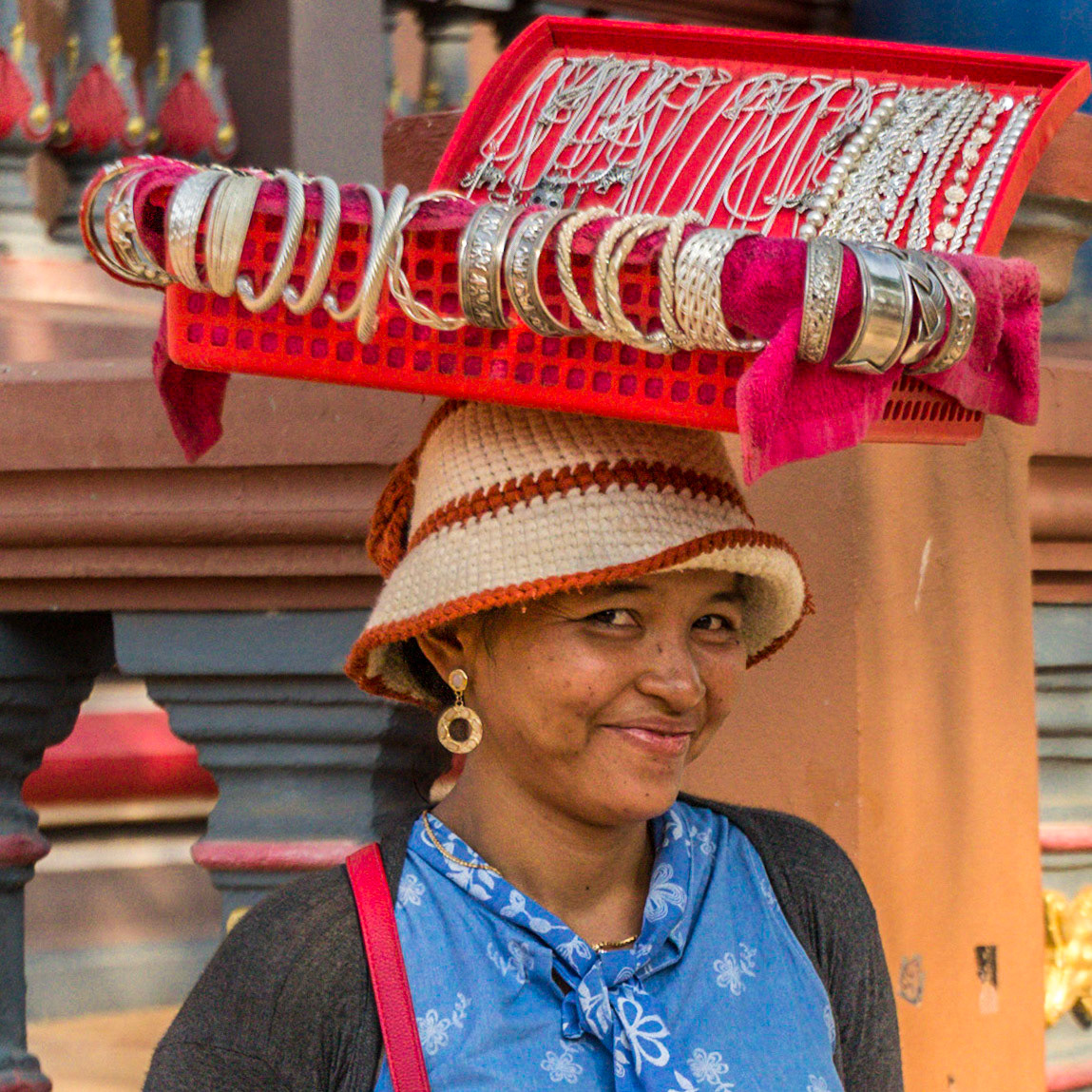
We're greeted with a friendly smile and good balance.
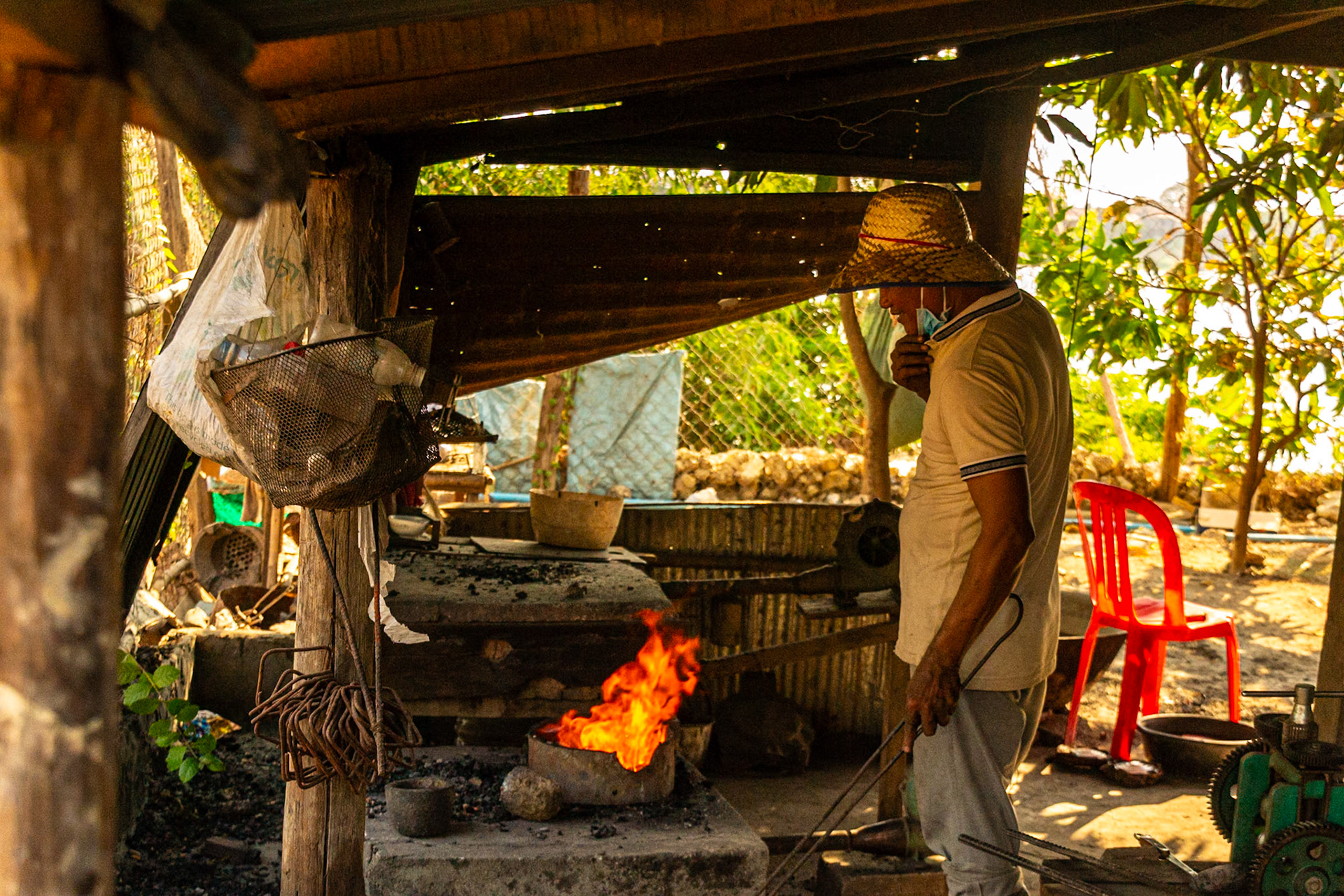
Firing up the forge flames to melt scrap silver.
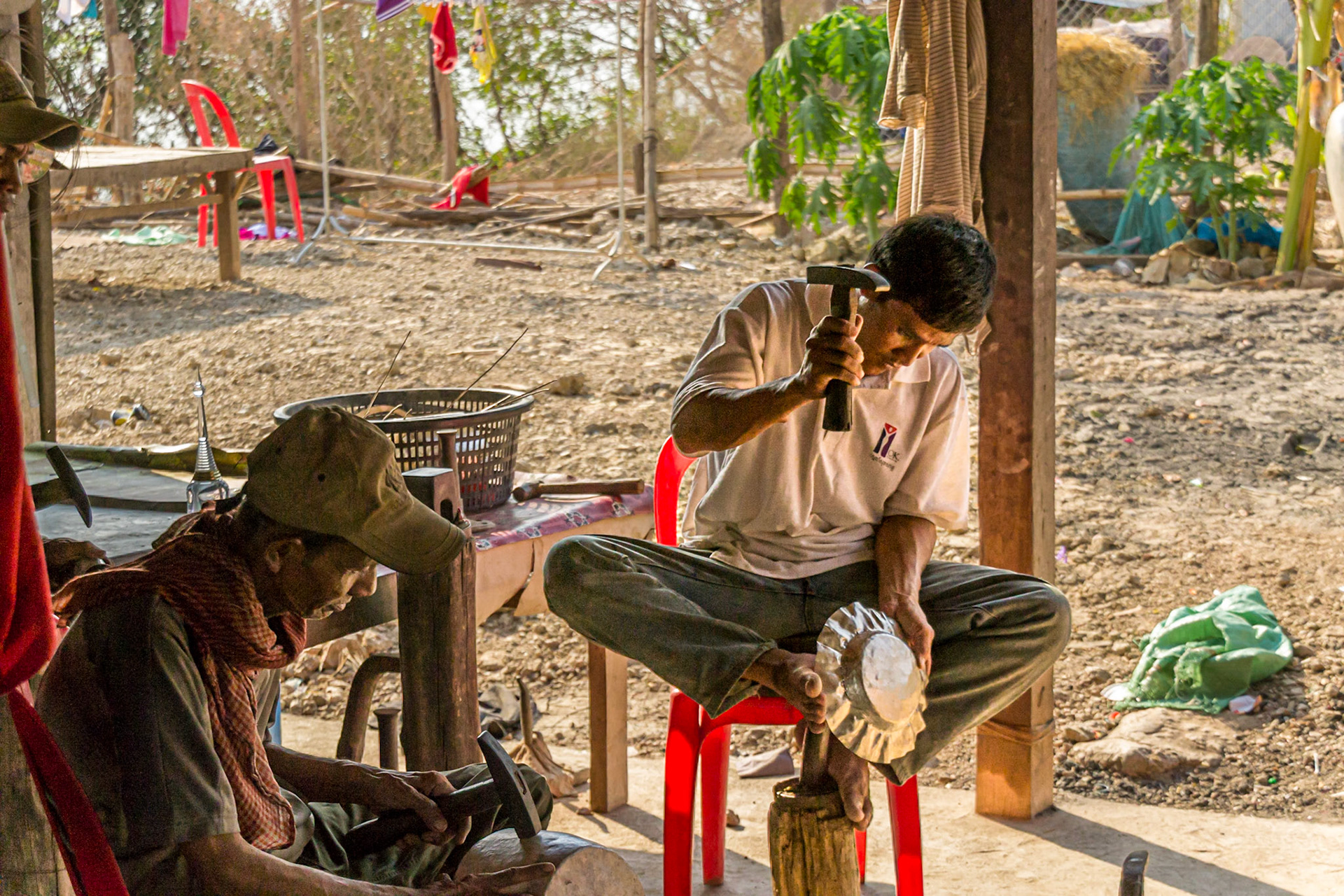
Rudimentry tools produce a rustic product.
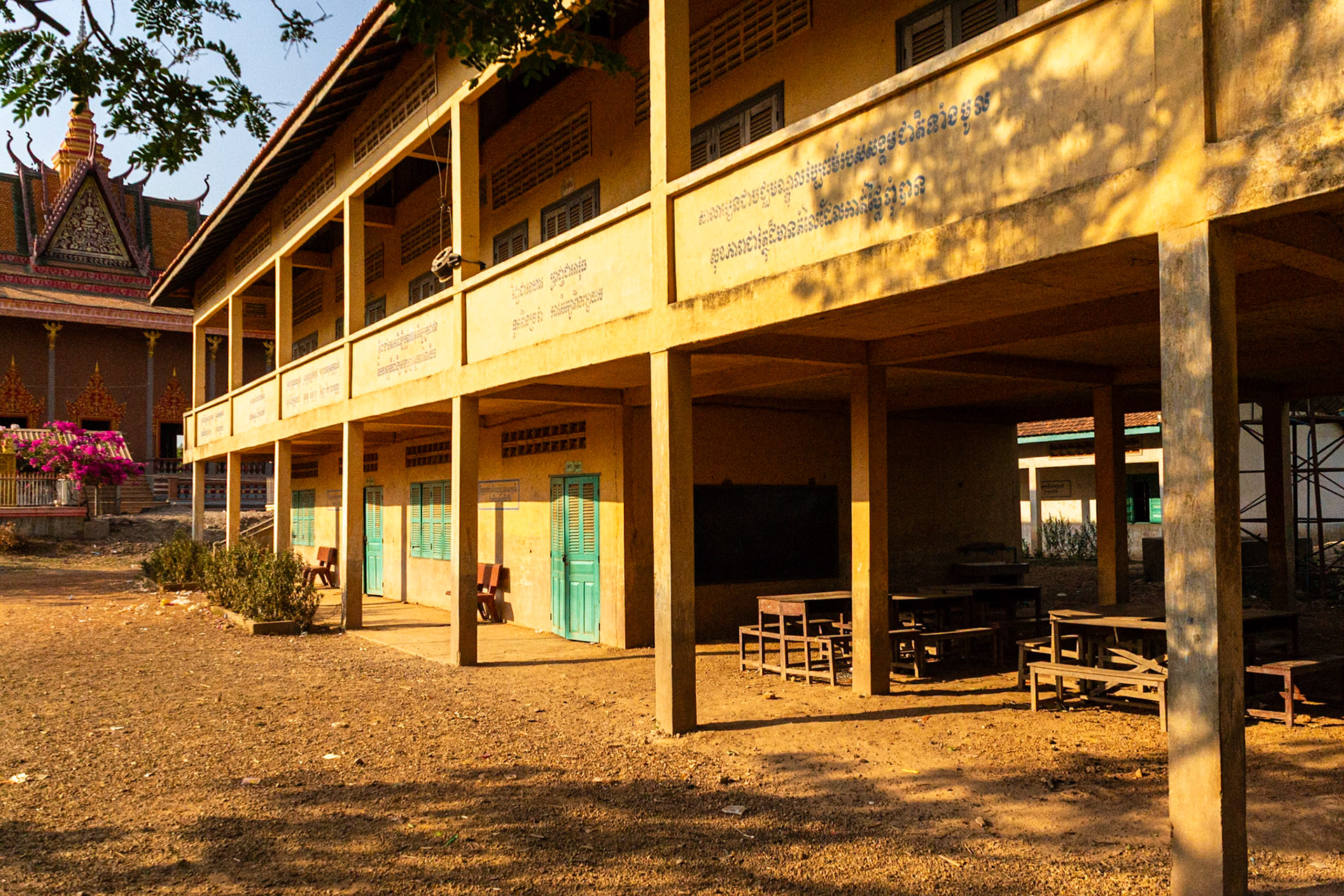
Silversmith Village school rooms.
Wat Hanchey and Kampong Cham
Our next stop along the Mekong was the monastery of Wat Hanchey which overlooks the river. Its hilltop location features ancient structures dating back to the 7th and 8th centuries. The large monastery features numerous sculptures, pagodas, halls and a recreation of an Angkorian era temple with seating. Other attractions we visited included Phnom Srey and Phnom Pros, known as the "Woman Hill" and "Man Hill" respectively these are two iconic hills in Cambodia's Kampong Chhnang province. These are also the names of two pagodas which are situated on top of each mountain.
Paen Bamboo Bridge. Amazingly this elaborate bridge which stretches across the Mekong River to connect Koh Paen Island
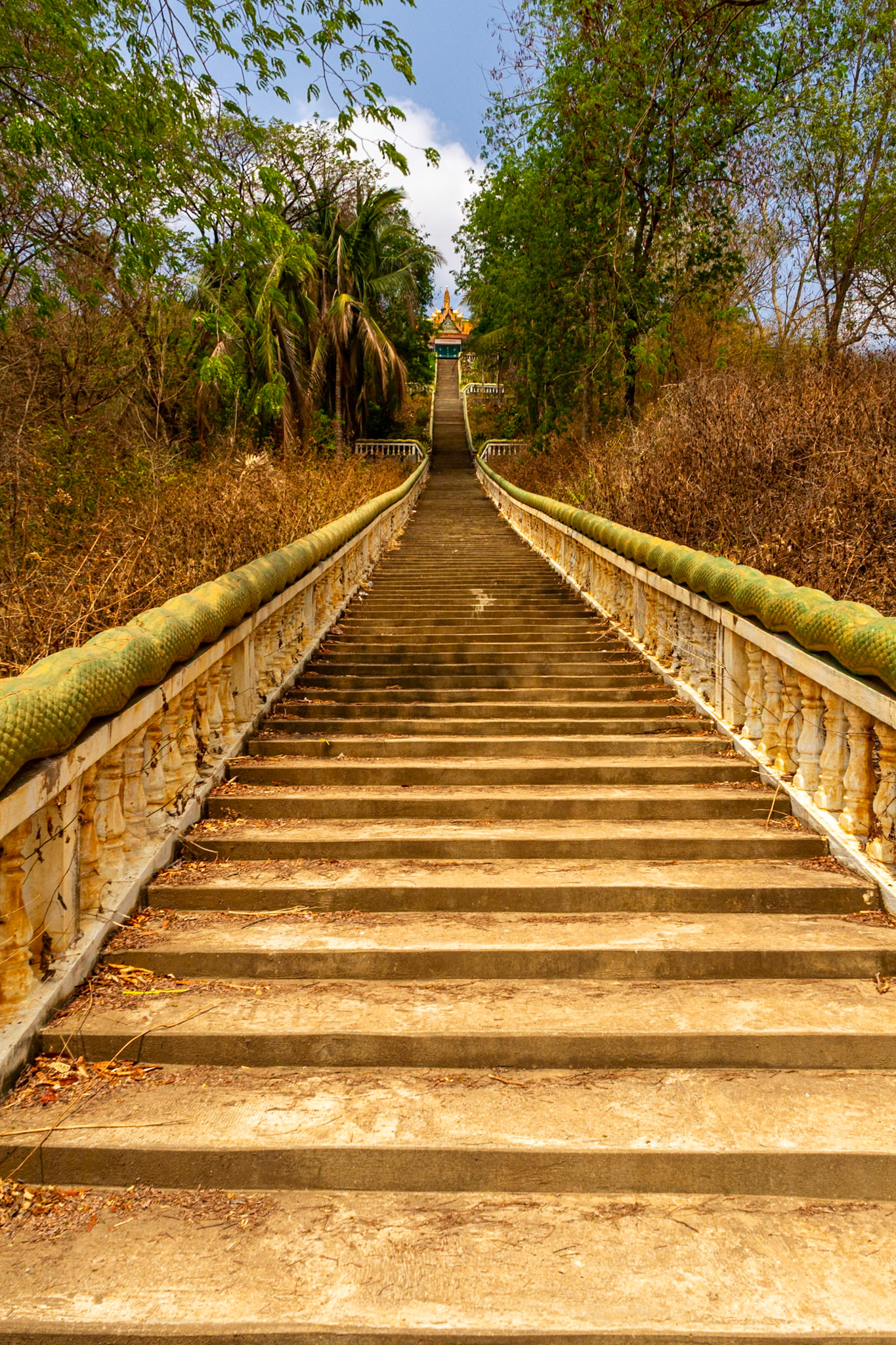
A climb of 290 stairs is a daunting prospect to reach the complex of Hindu and Buddhist temples.
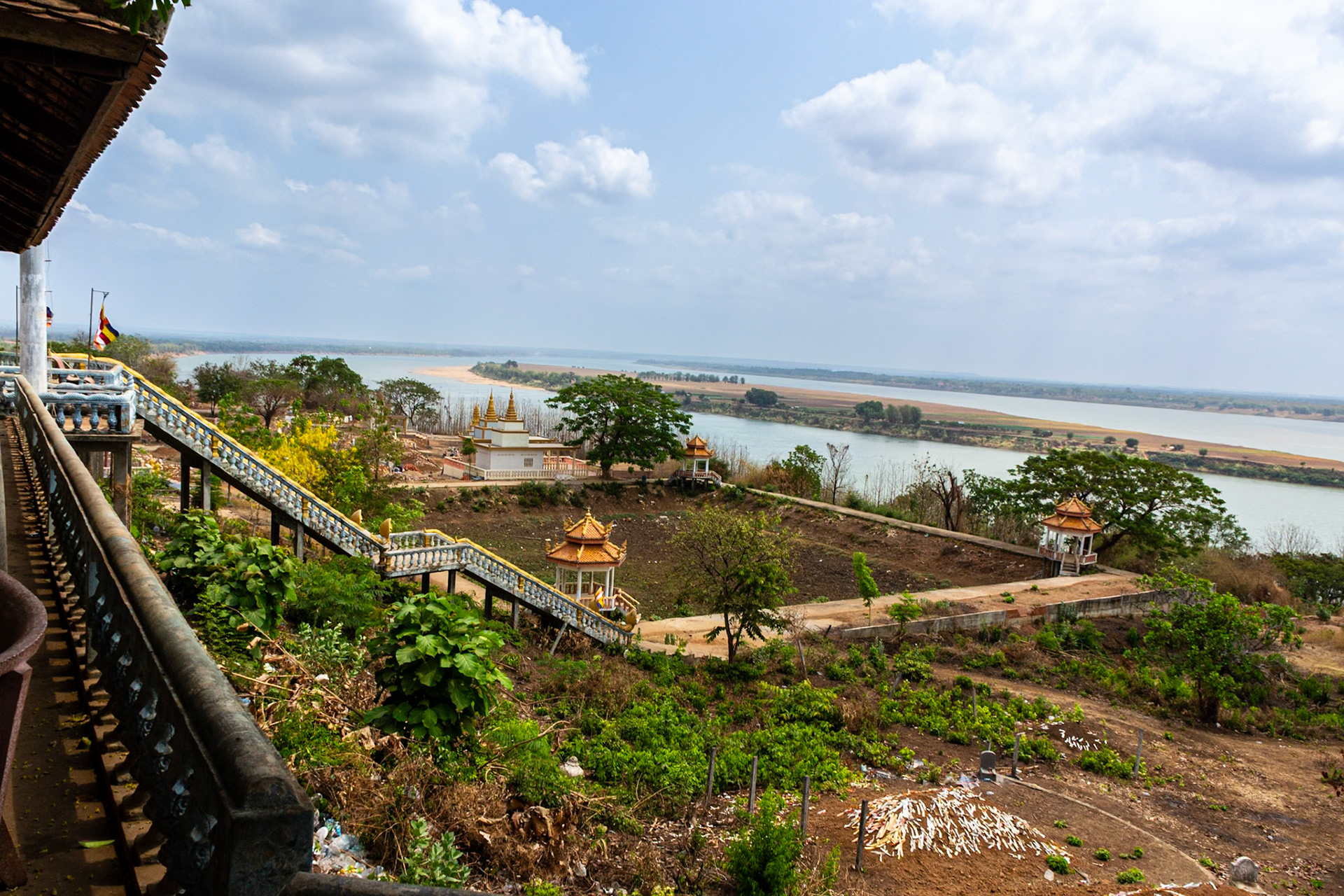
Views over the Mekong River from Wat Hanchey.
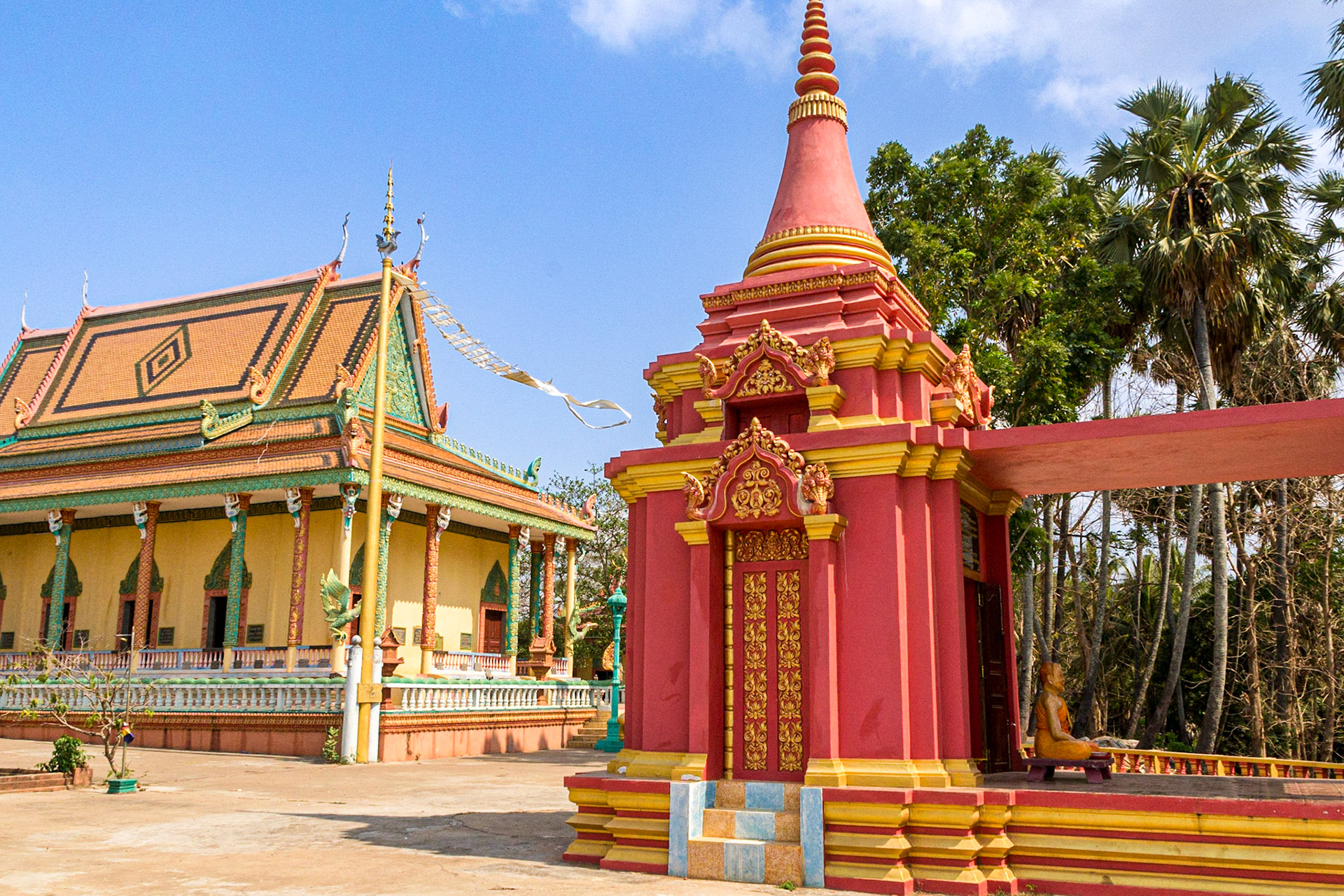
Wat Hanchey is a thriving religious complex of both Hindu and Buddhist temples.
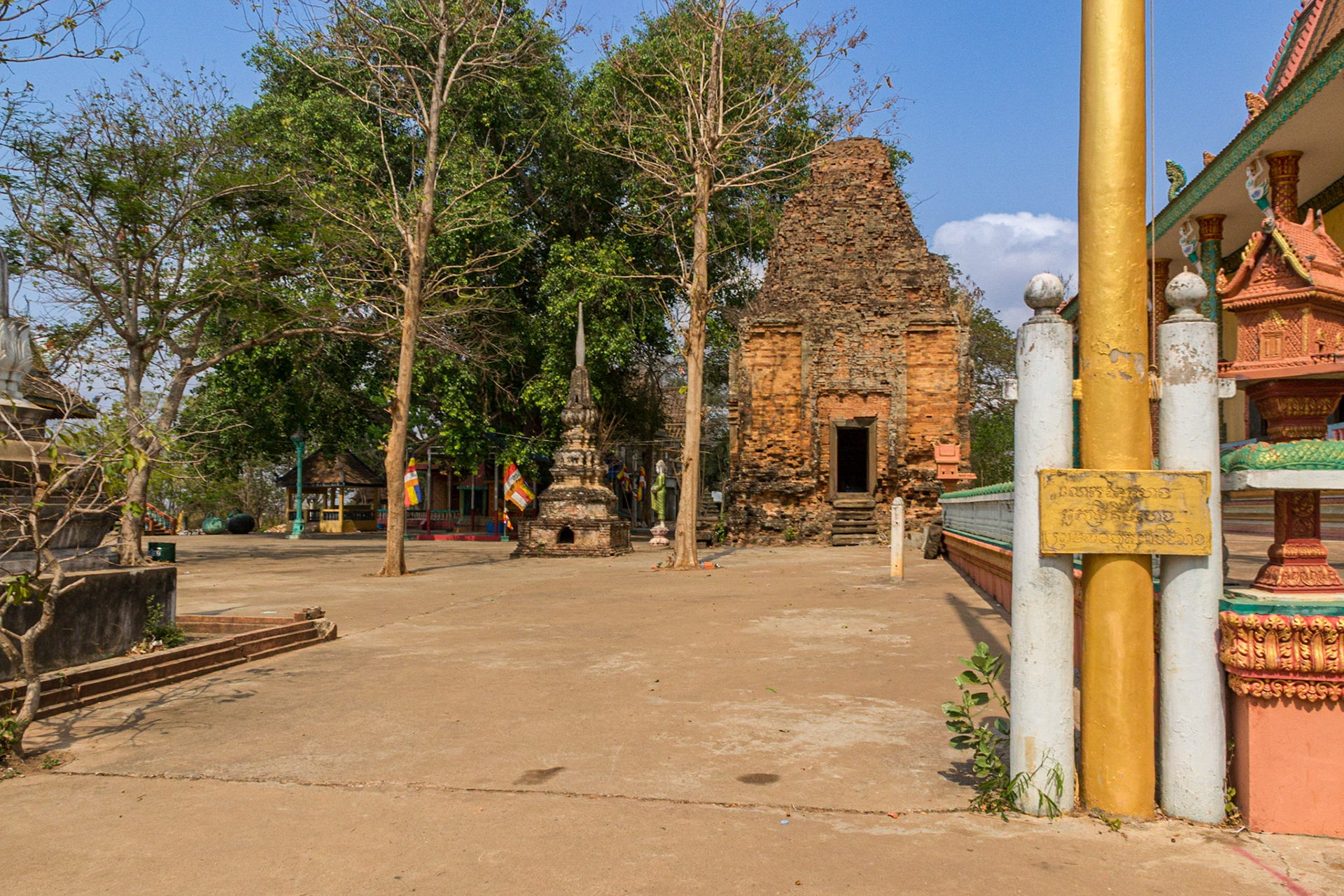
This weather-worn red brick structure was once an ancient temple dedicated to Hirahara, a Hindu god. It stands beside other temples worshiping Buddha.
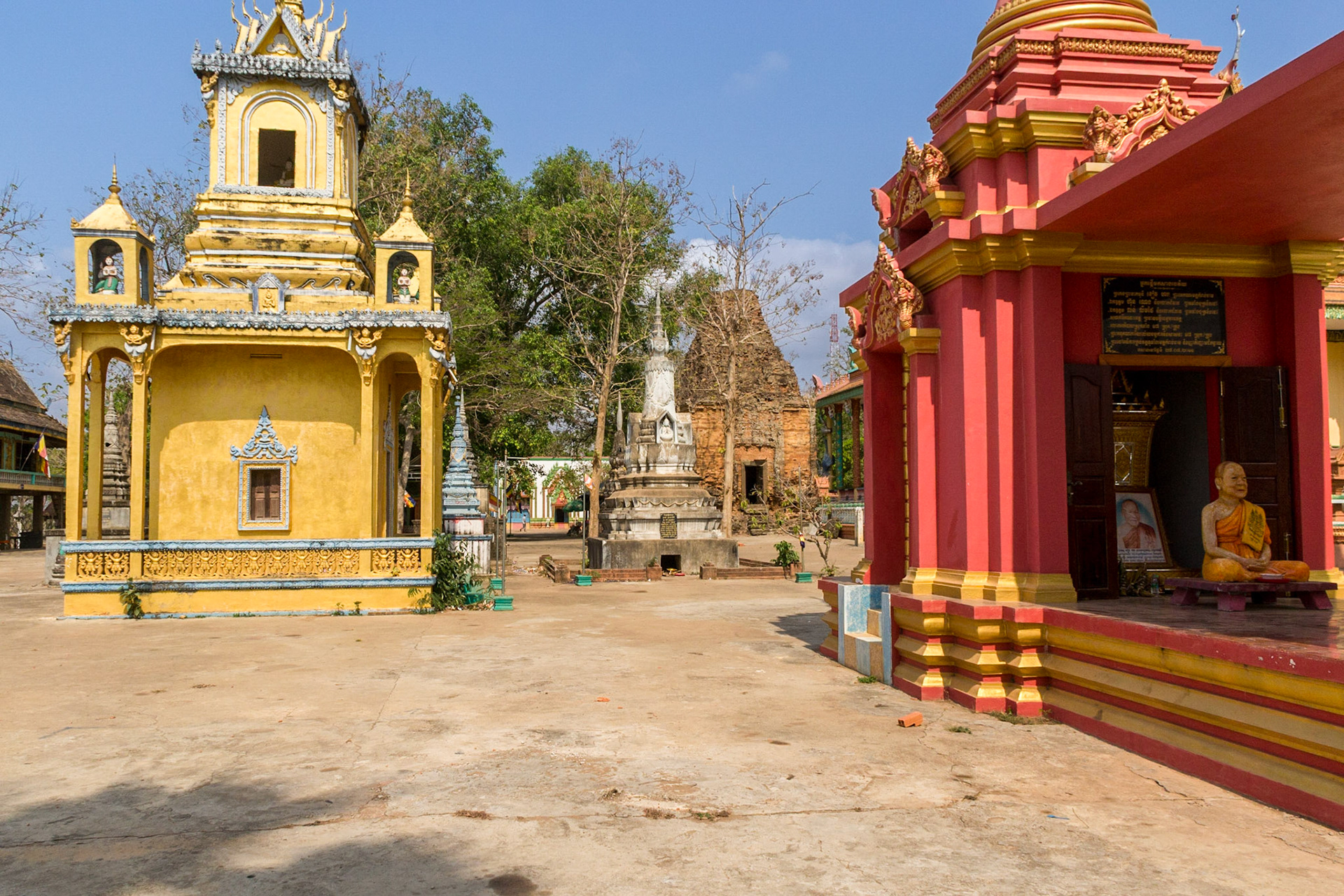
Around the ancient brick structure are more recent brightly coloured temples, pagodas, stupas, houses and statues.
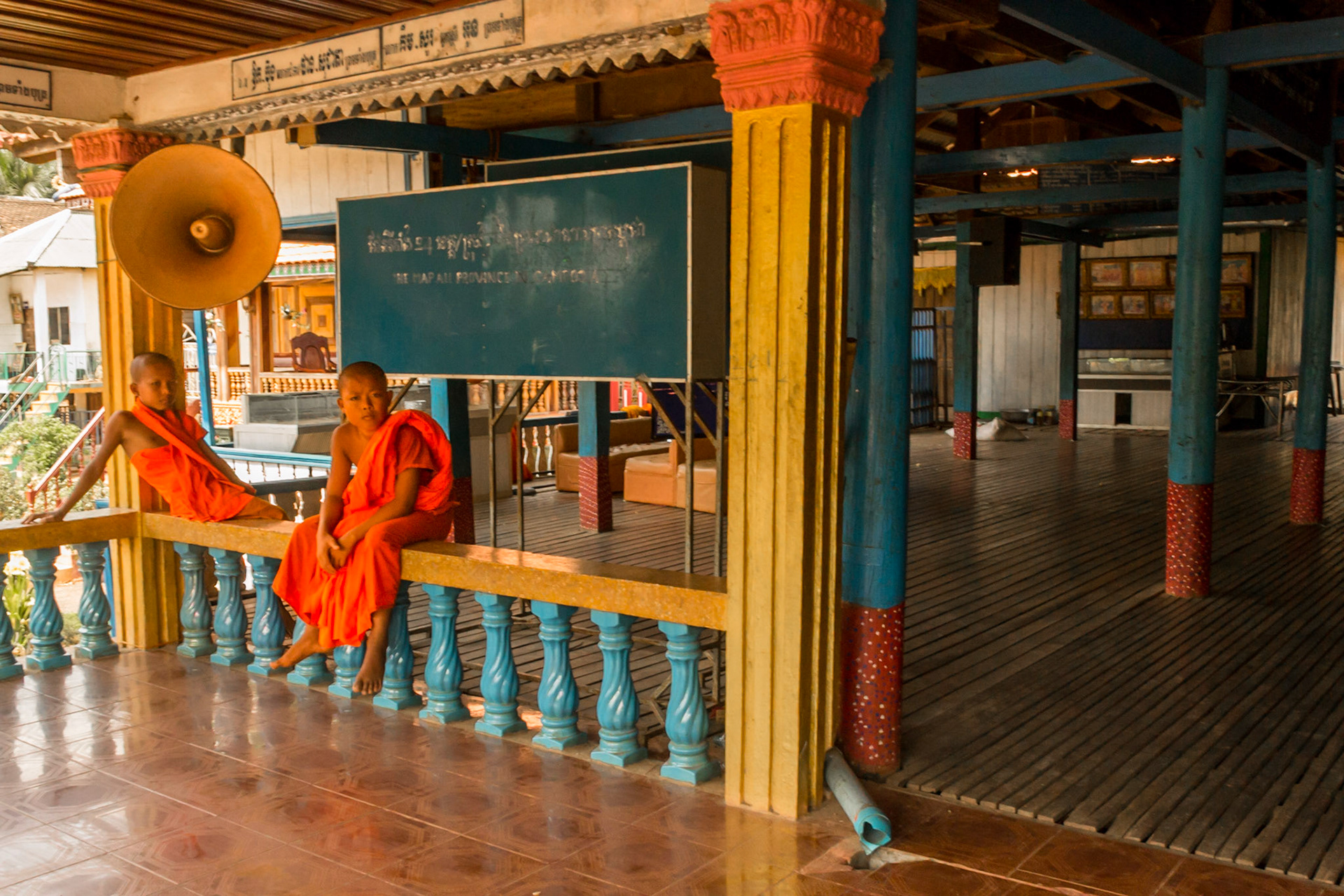
Novice Buddist Monks lounge outside the classroom.
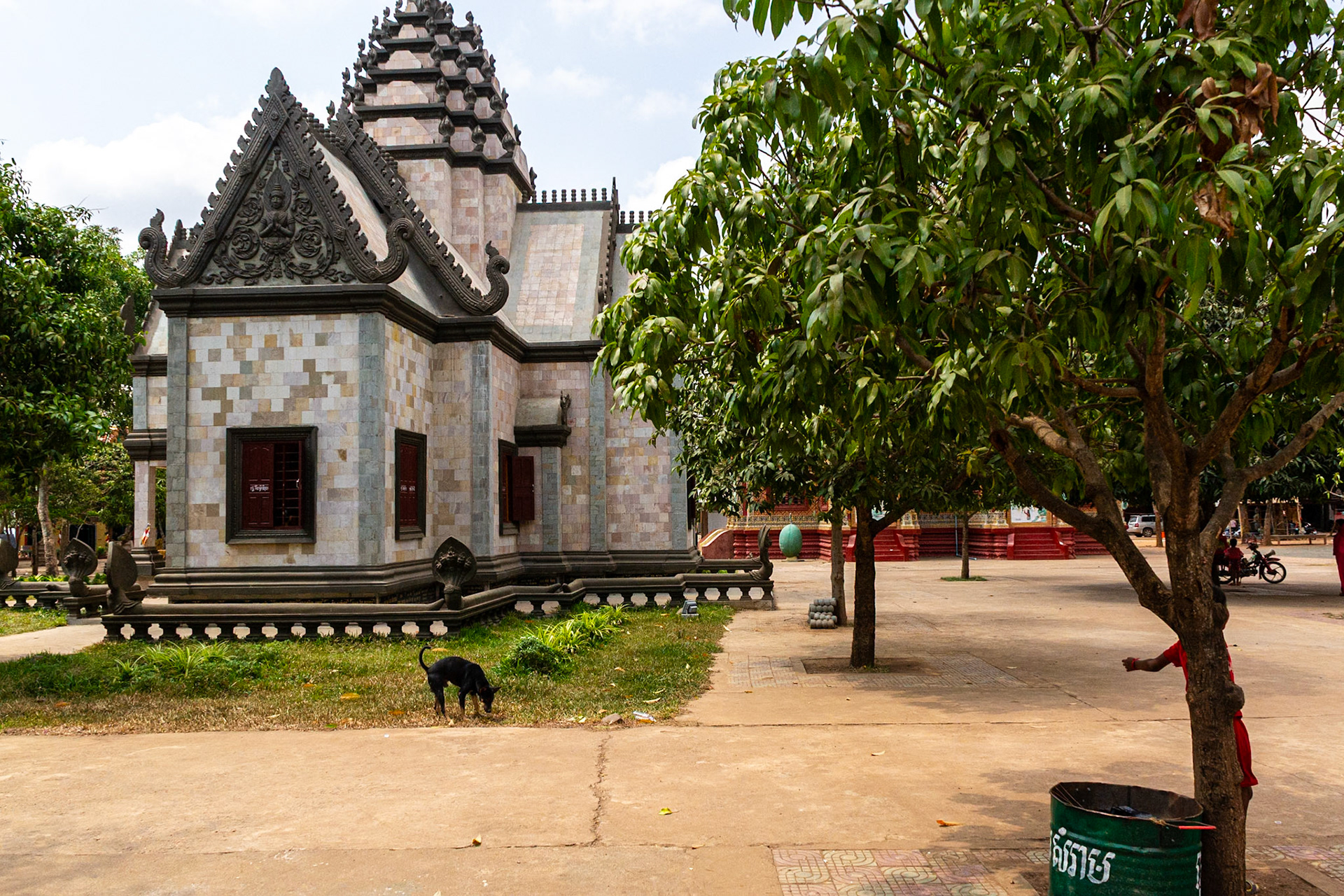
Animals have free range around the temple grounds.
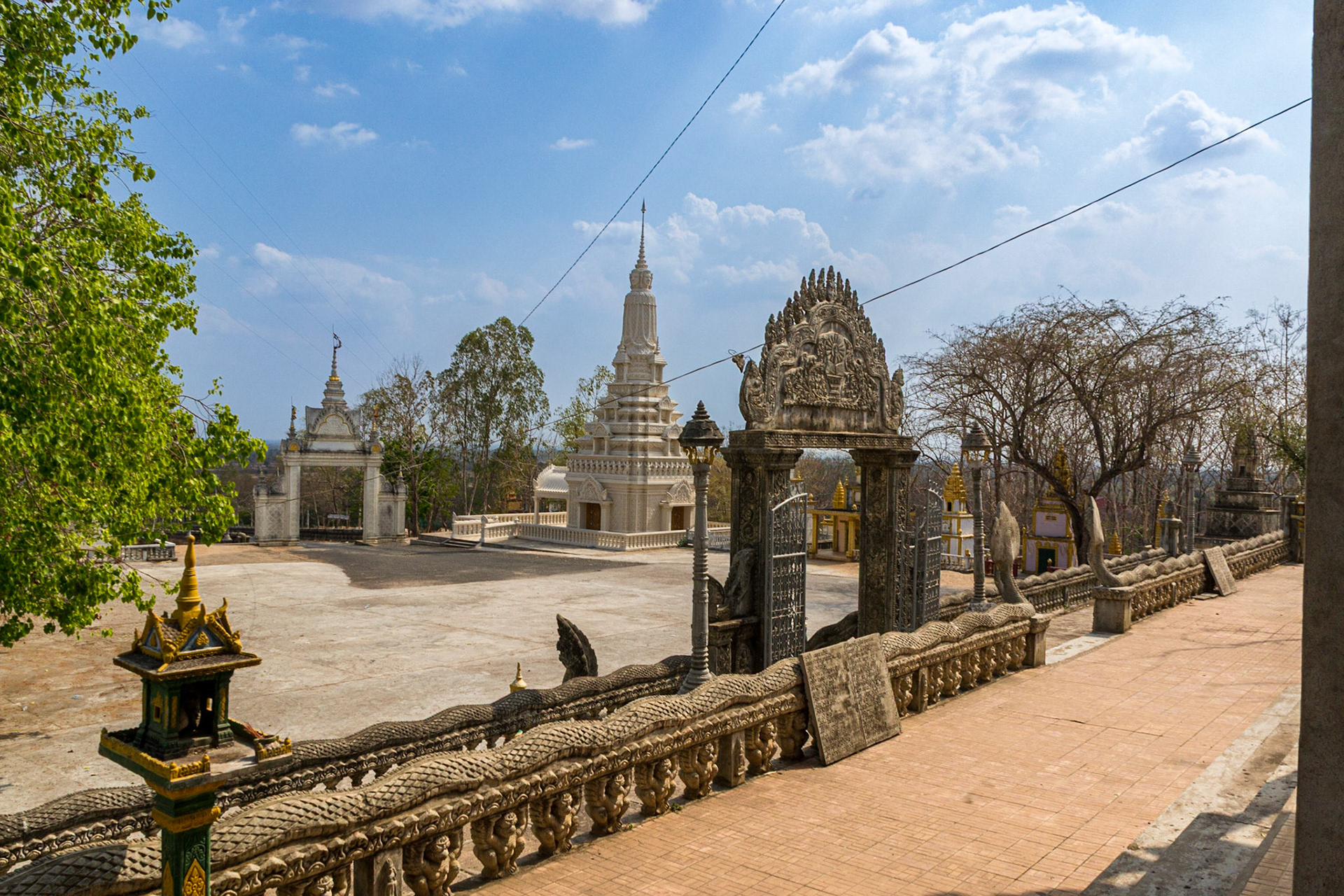
Pagoda at Phnom Pros. Phnom Srei translates into Man Hill and Women Hill respectively.
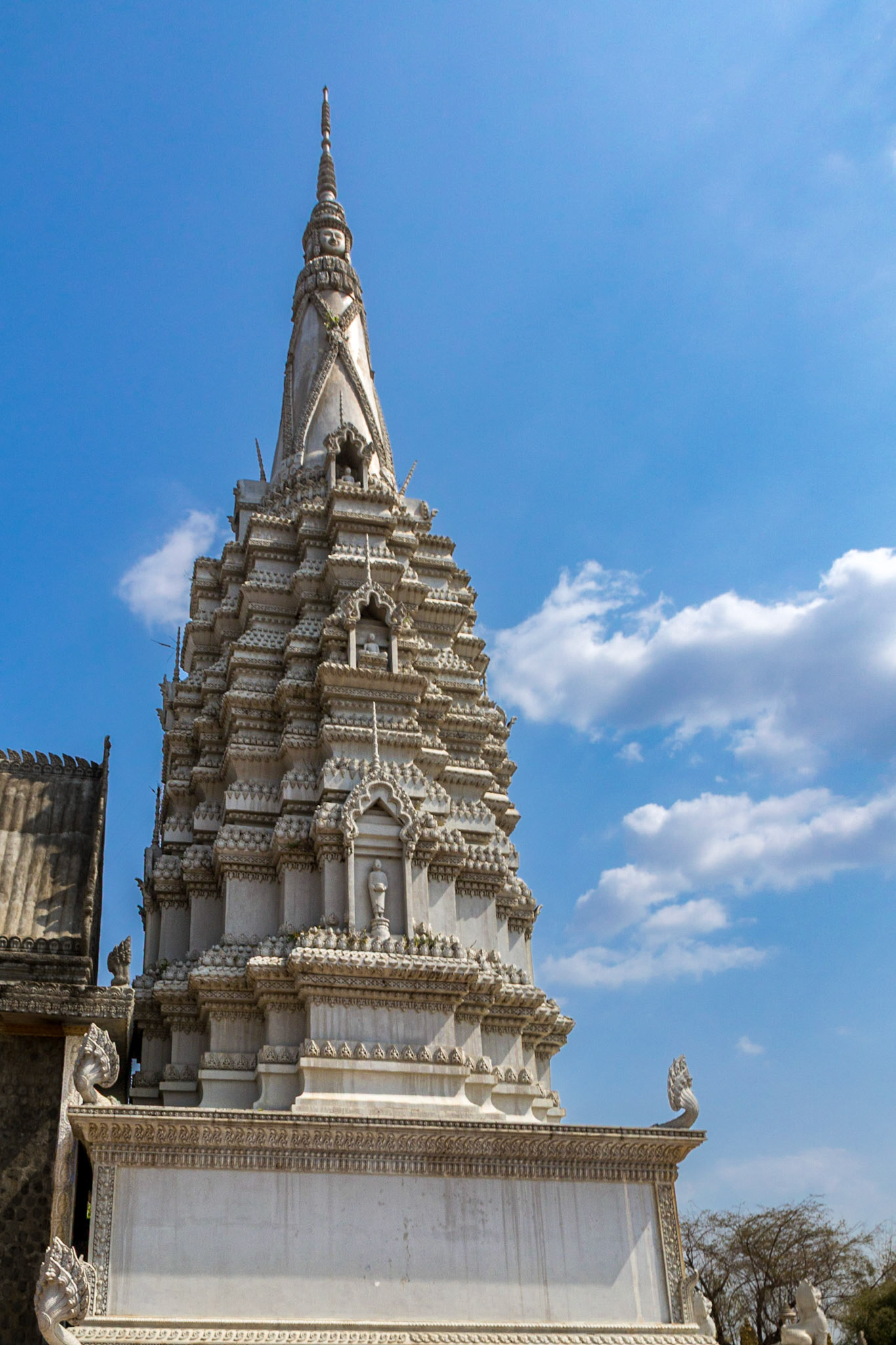
Stupor
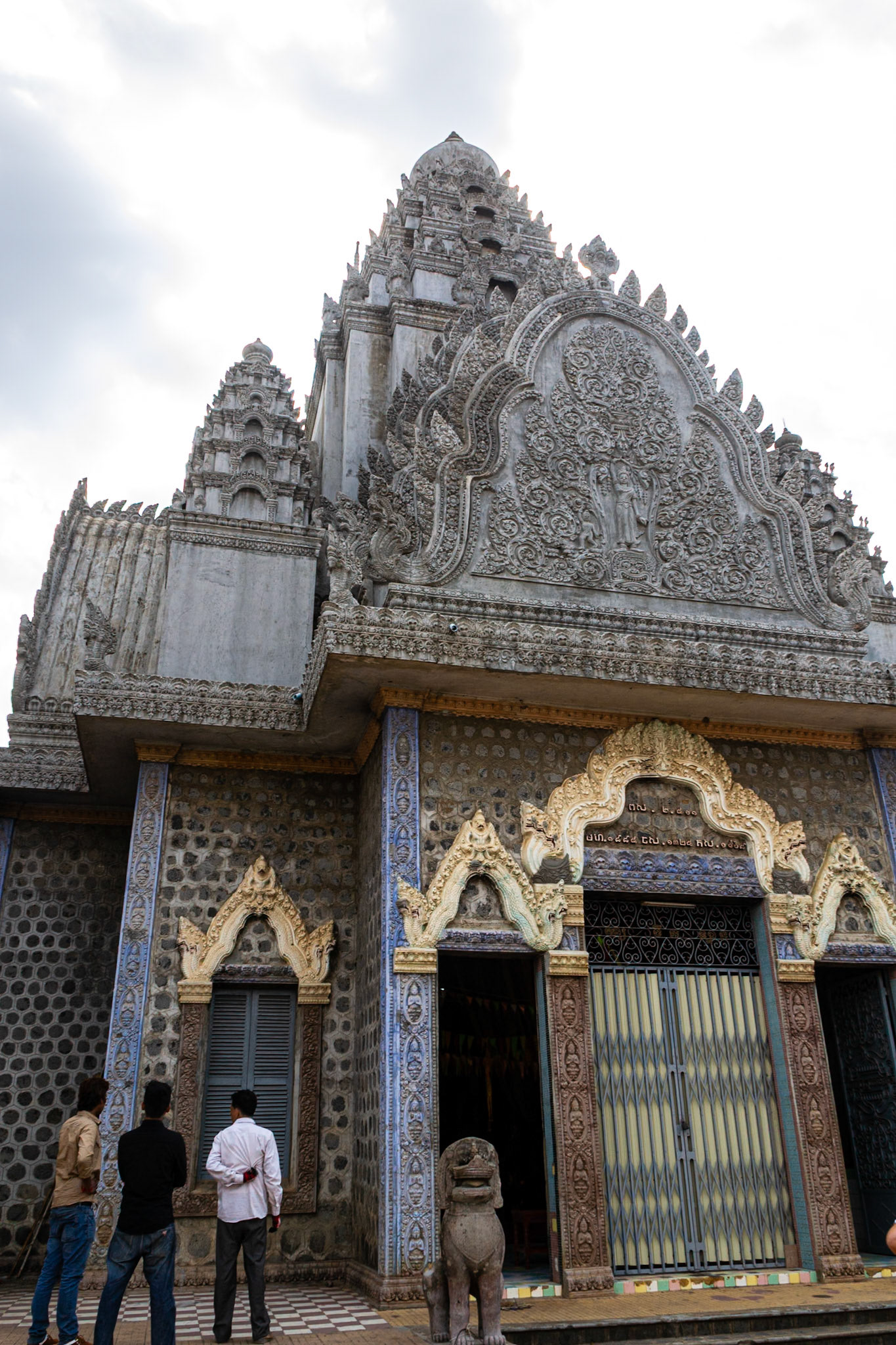
Elaborate carvings adorn the temple.
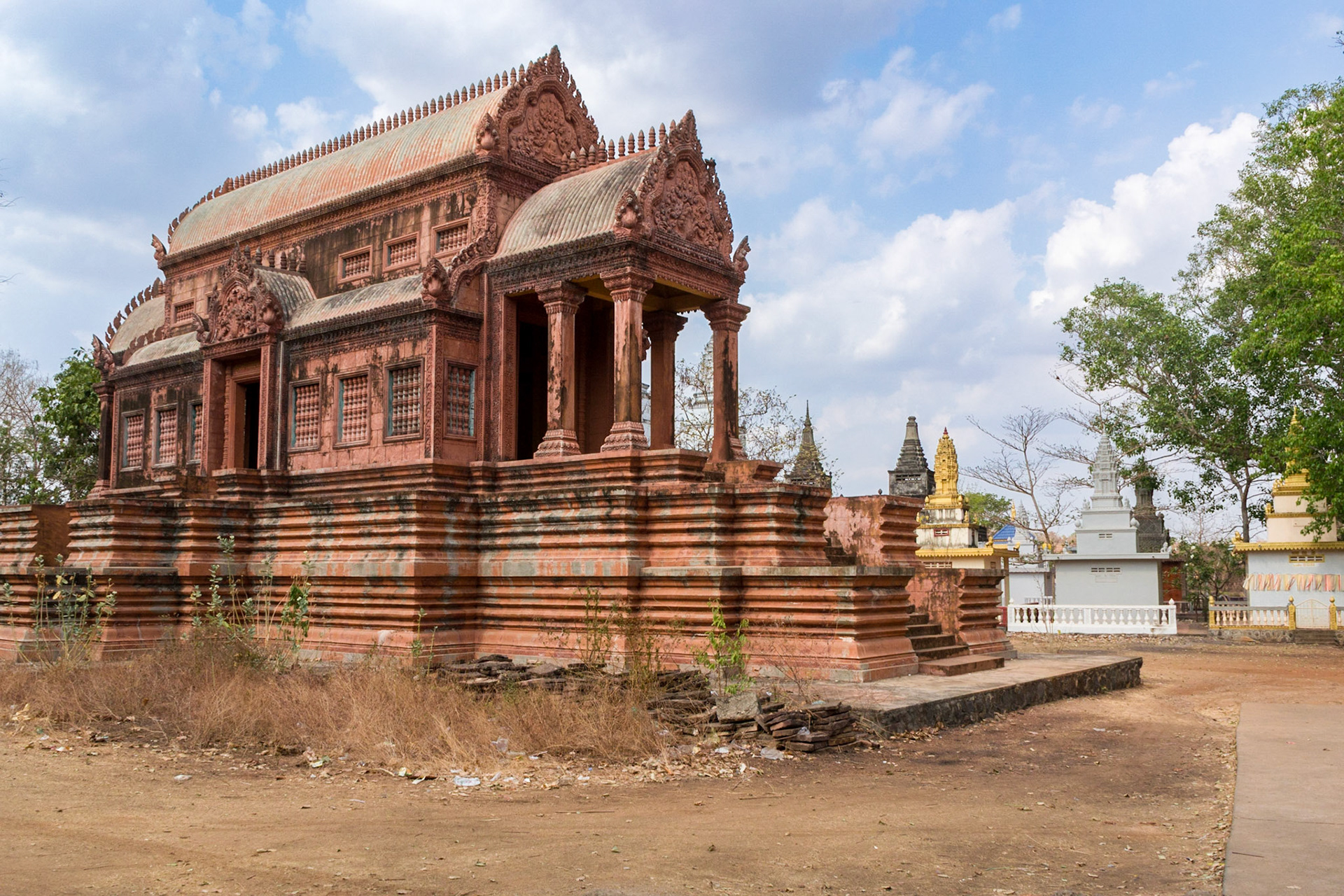
An ancient Khmer Pagoda
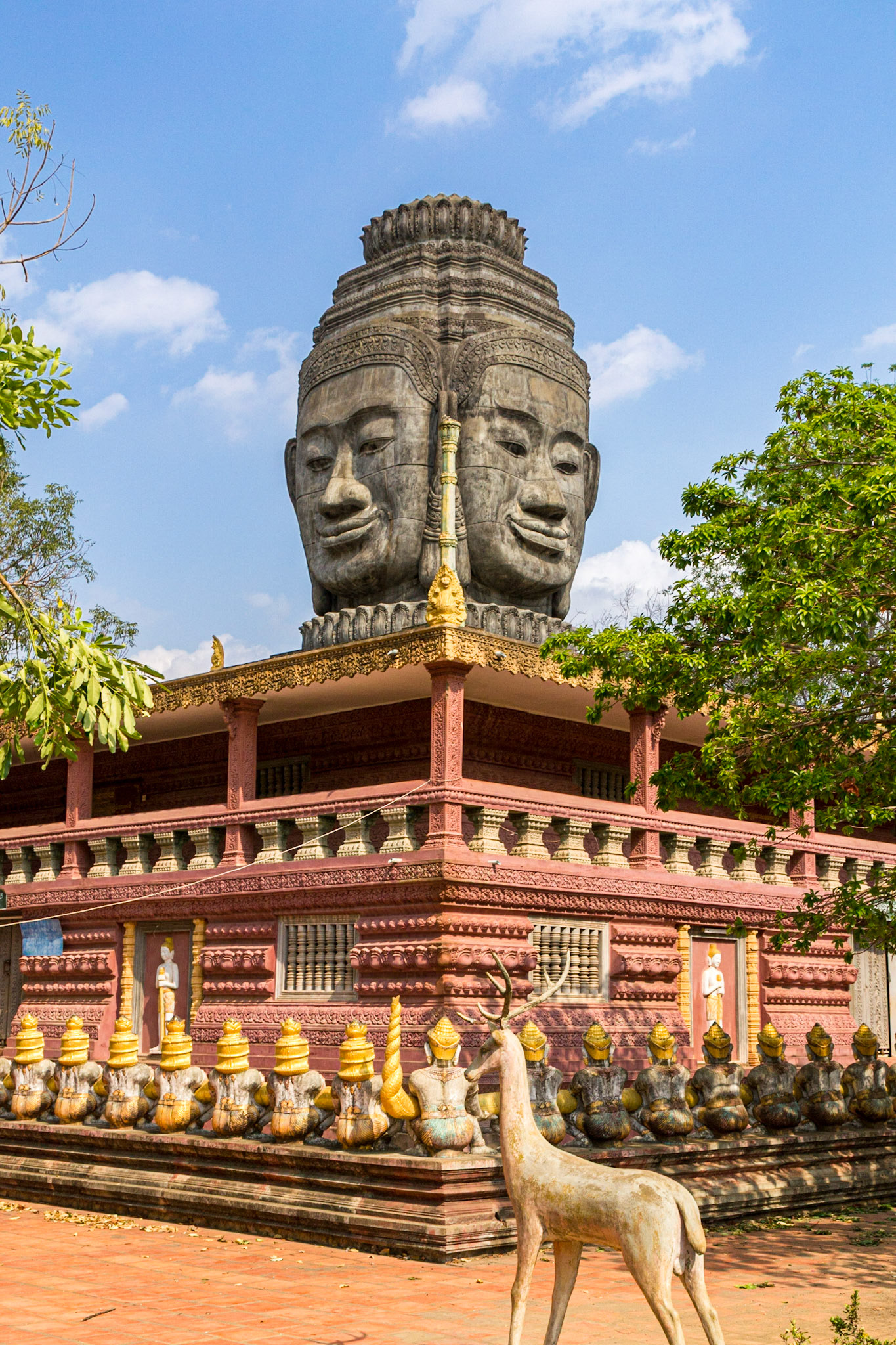
A Bayon-style head sits atop the library at Wat Phnom Pros Pagoda.
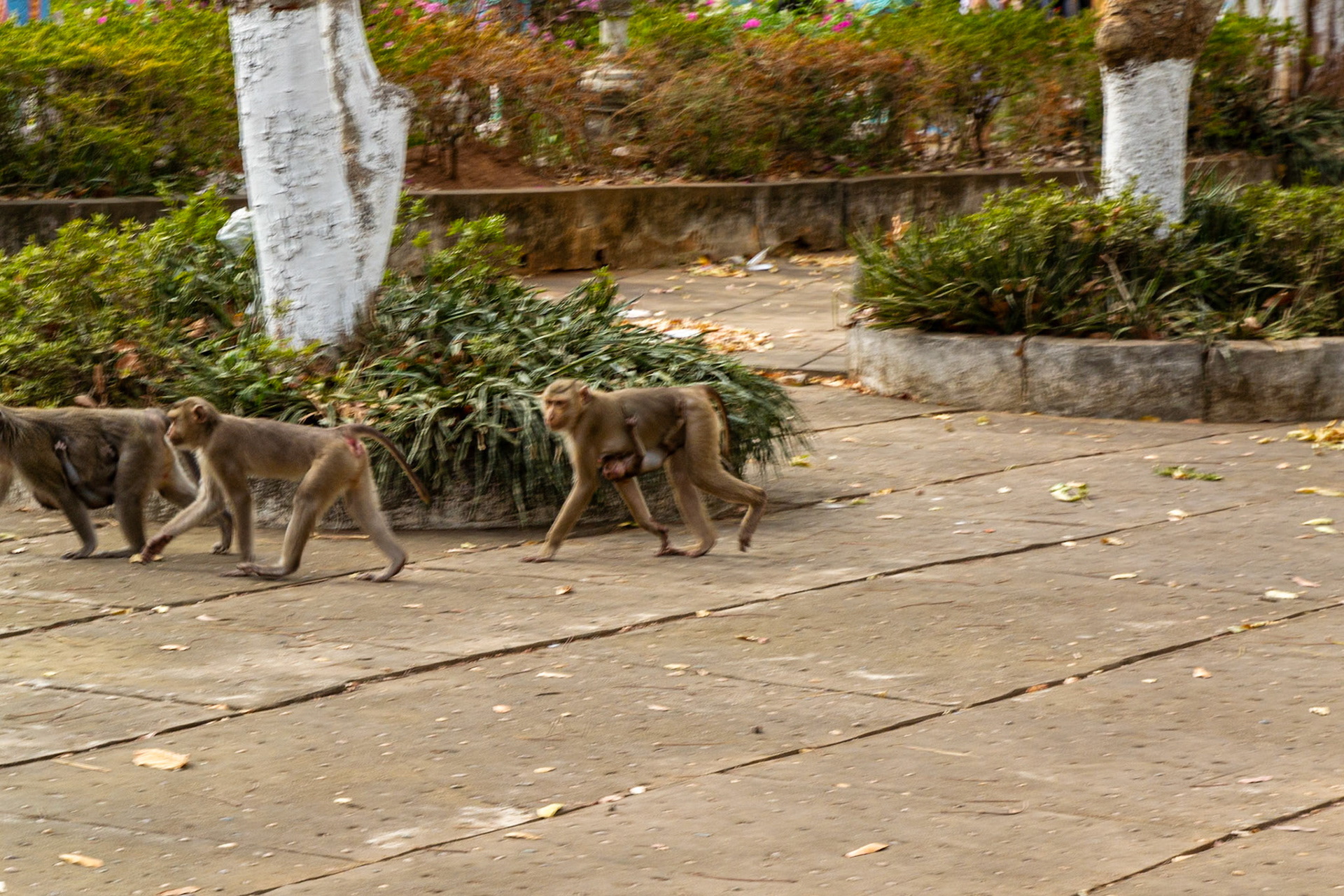
Monkeys patrol the temple grounds.
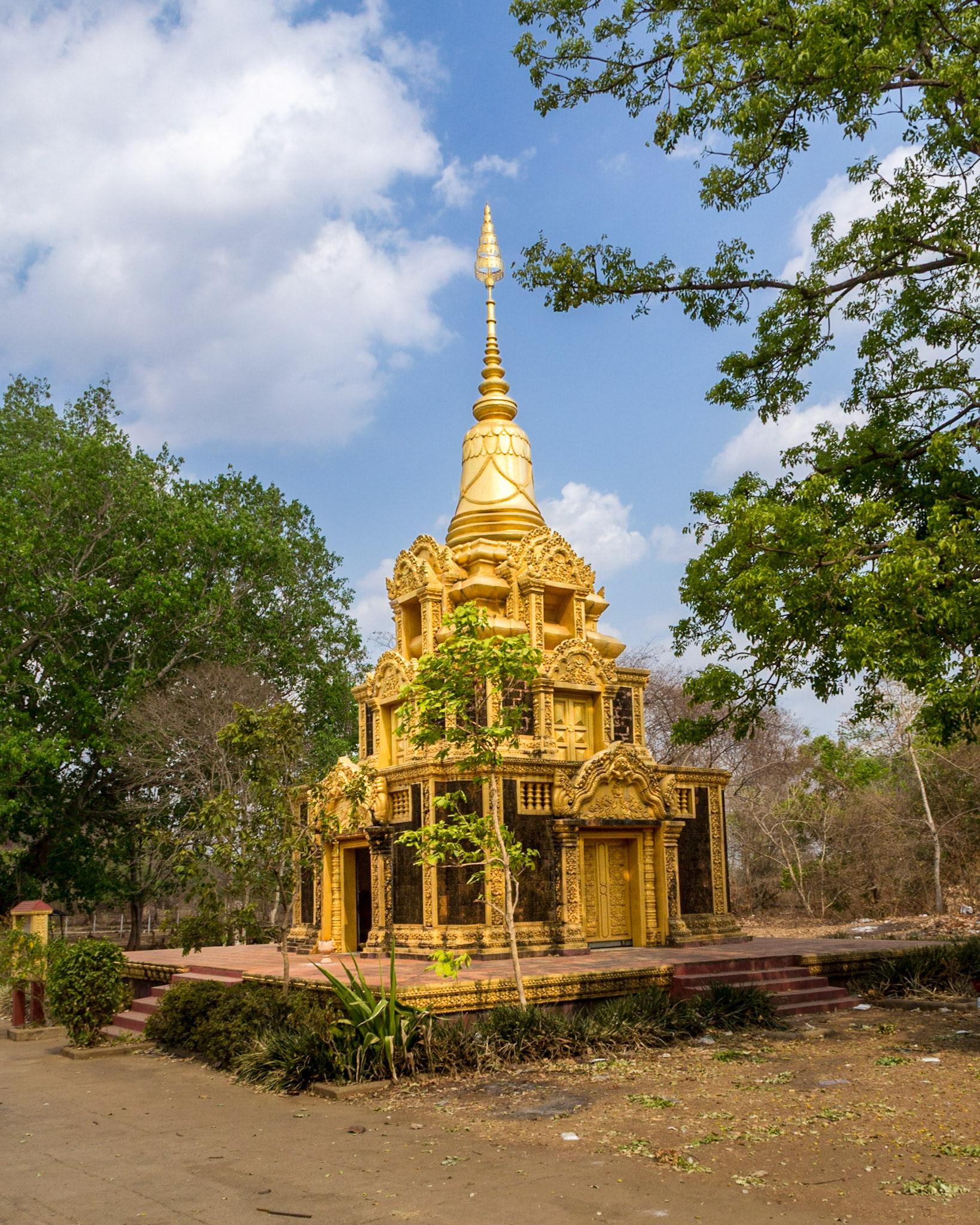
This genocide memorial Stupa is a recent addition.
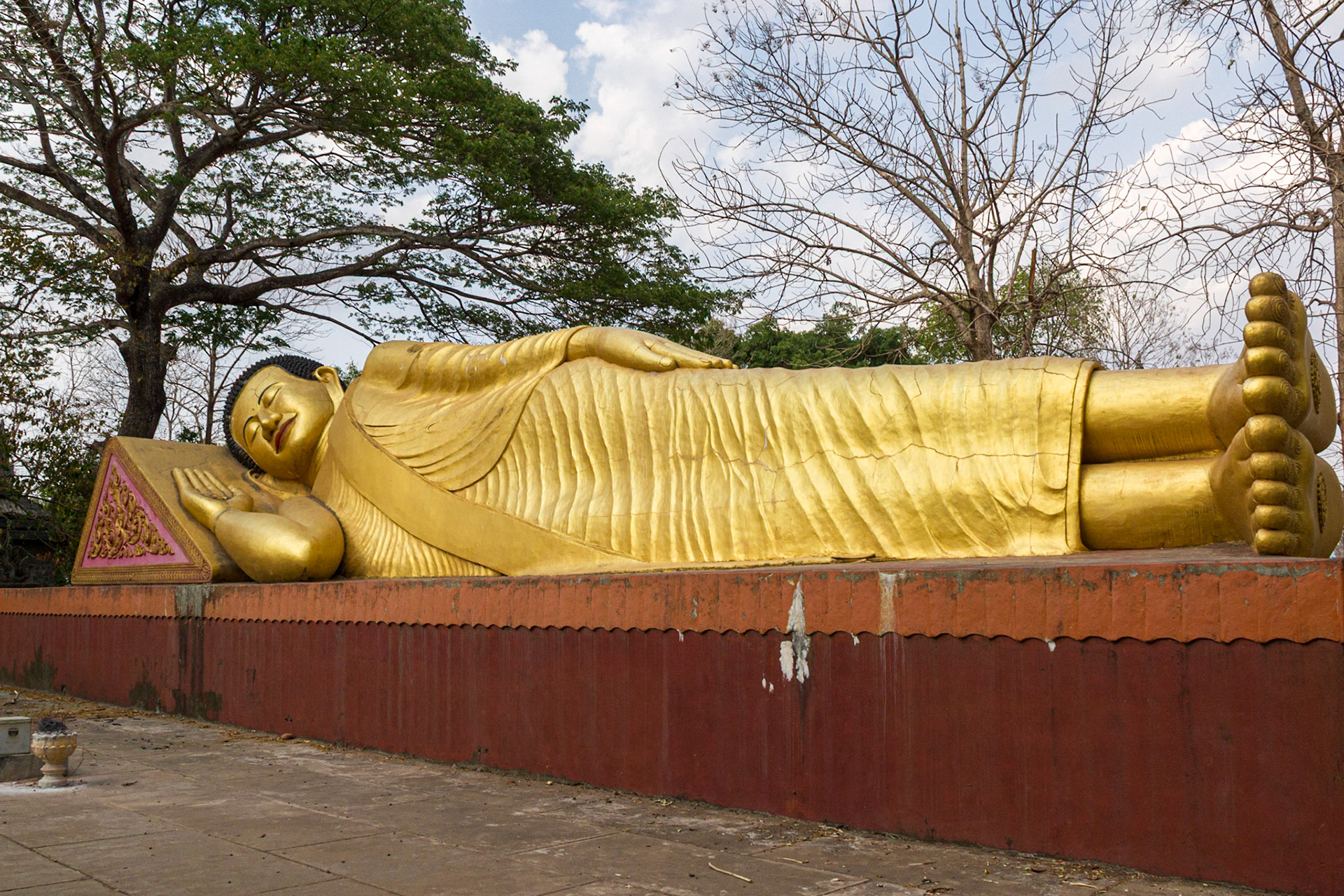
A giant Golden Buddah rests peacefully in the gardens.
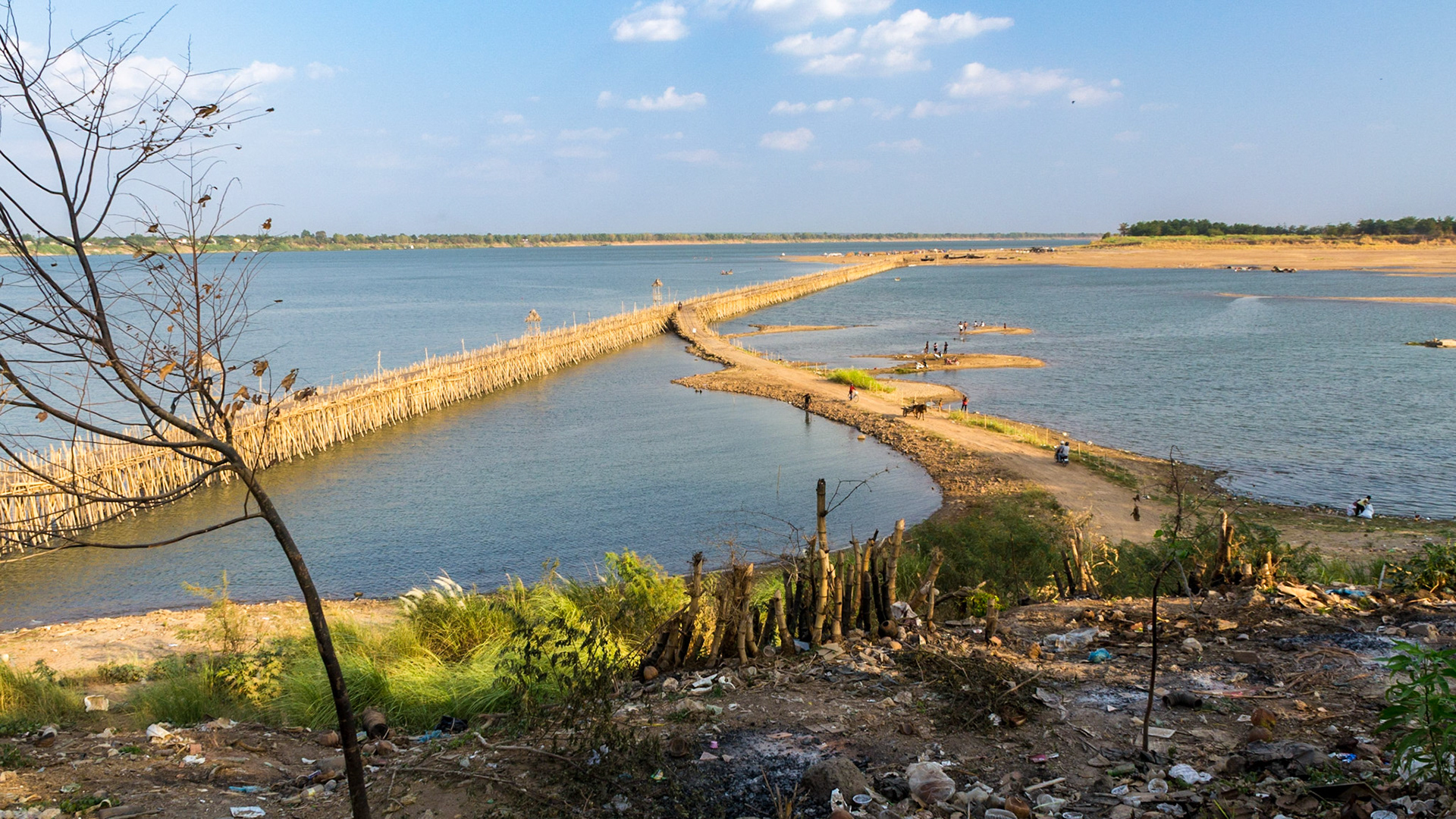
This bamboo bridge stretches across the Mekong to reach Koh Paen Island. It is rebuilt every year in the dry season after being taken down following its removal for the wet season when levels rise in the river.
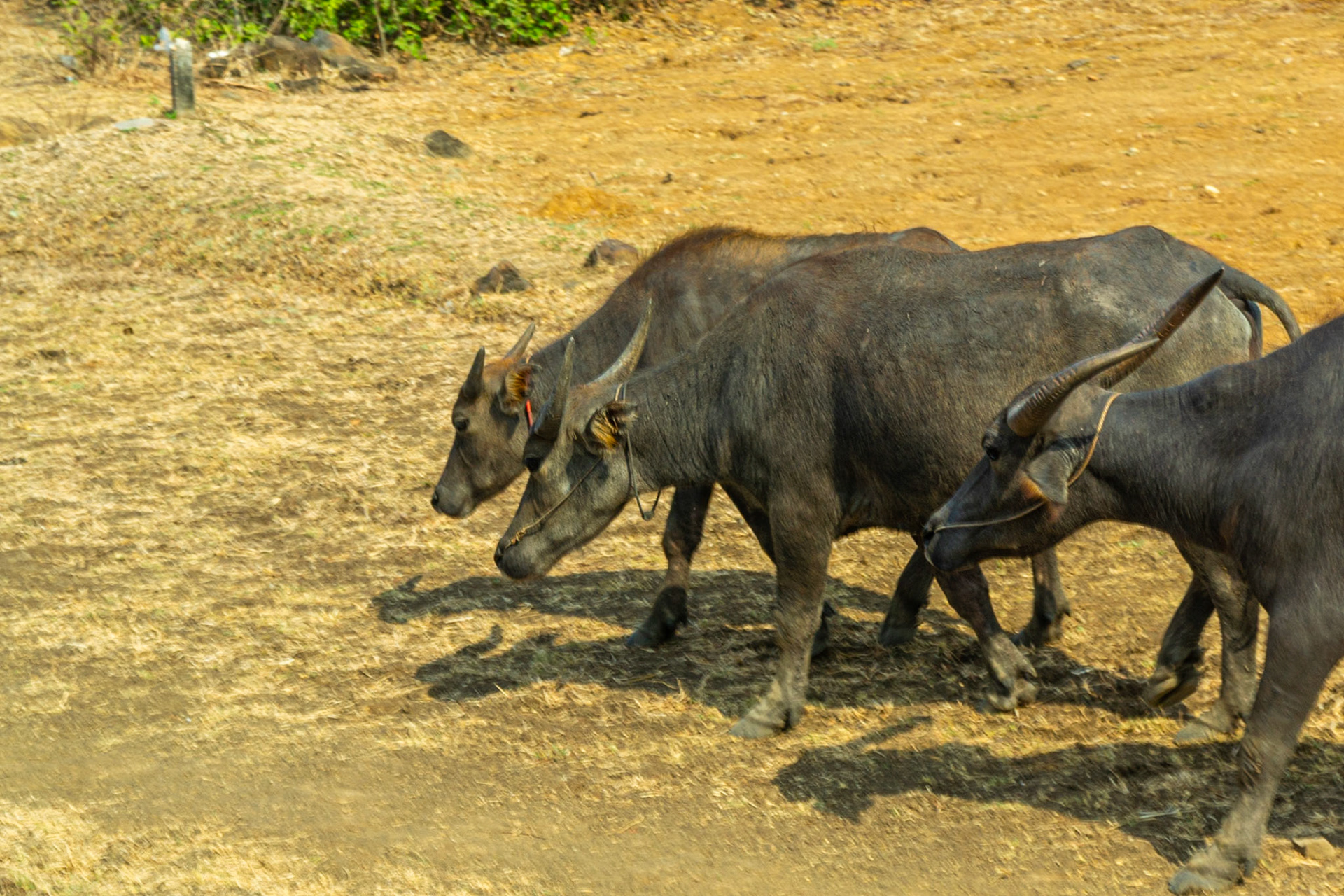
Water buffalo.
Siem Reap
On the road to Siem Reap we encounter several interesting sights including Spean Praptos, a Khmer-era bridge that straddles a small river at Kampong Kdei. This 87-meter bridge is built of laterite and comprises 20 corbelled arches constructed in the late 12th or early 13th centuries and is in such good condition that it continued to carry vehicular traffic well into the 20th century. Today it's restricted to pedestrian and cycle traffic.
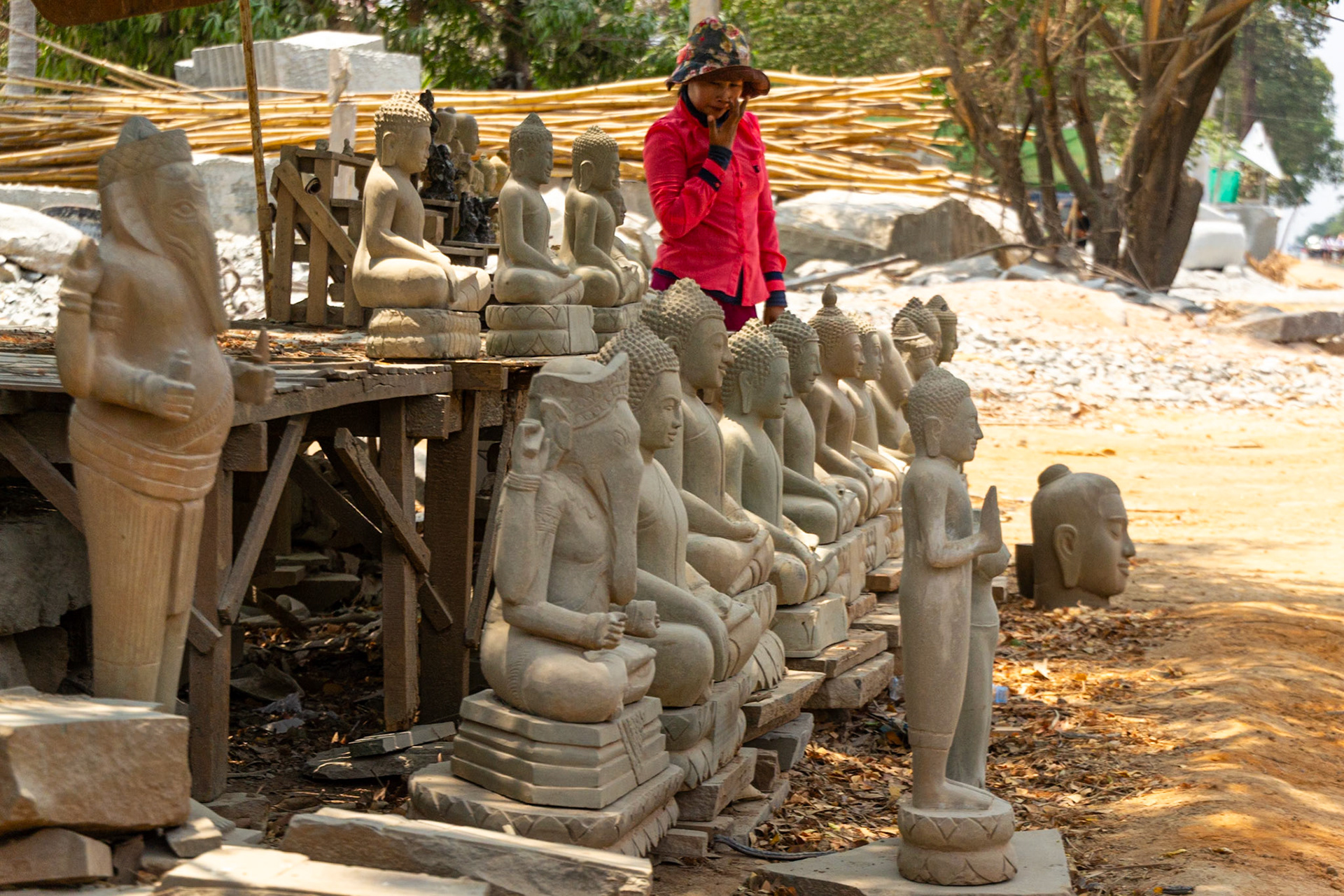
Roadside vendor displaying a range of carved religious busts and statuettes.
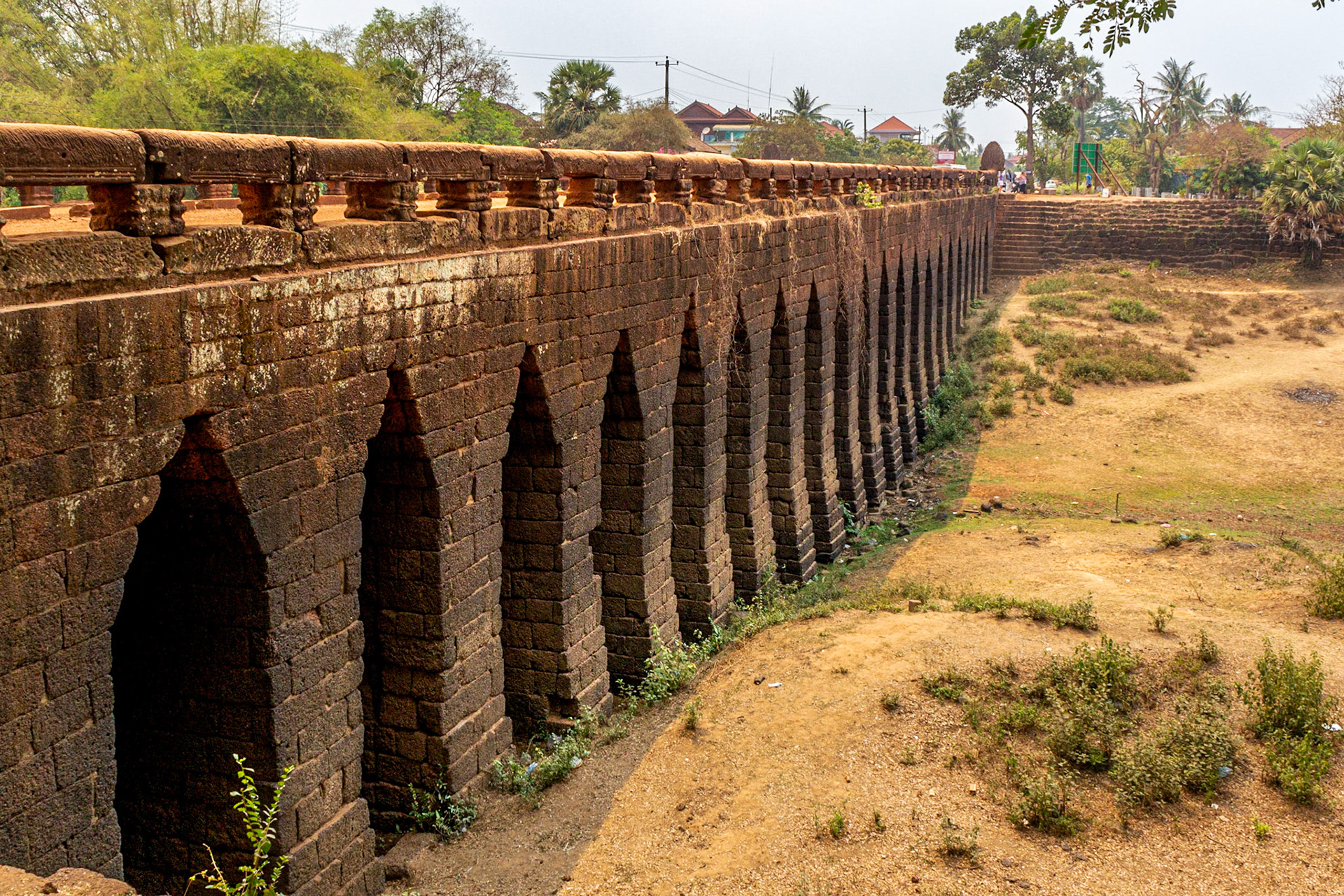
Kampong Kdei bridge is one of the longest corbeled stone-arch bridge in the world spanning 87m. Built in the 12th century it is one of the few Khmer empire era bridges to have survived.
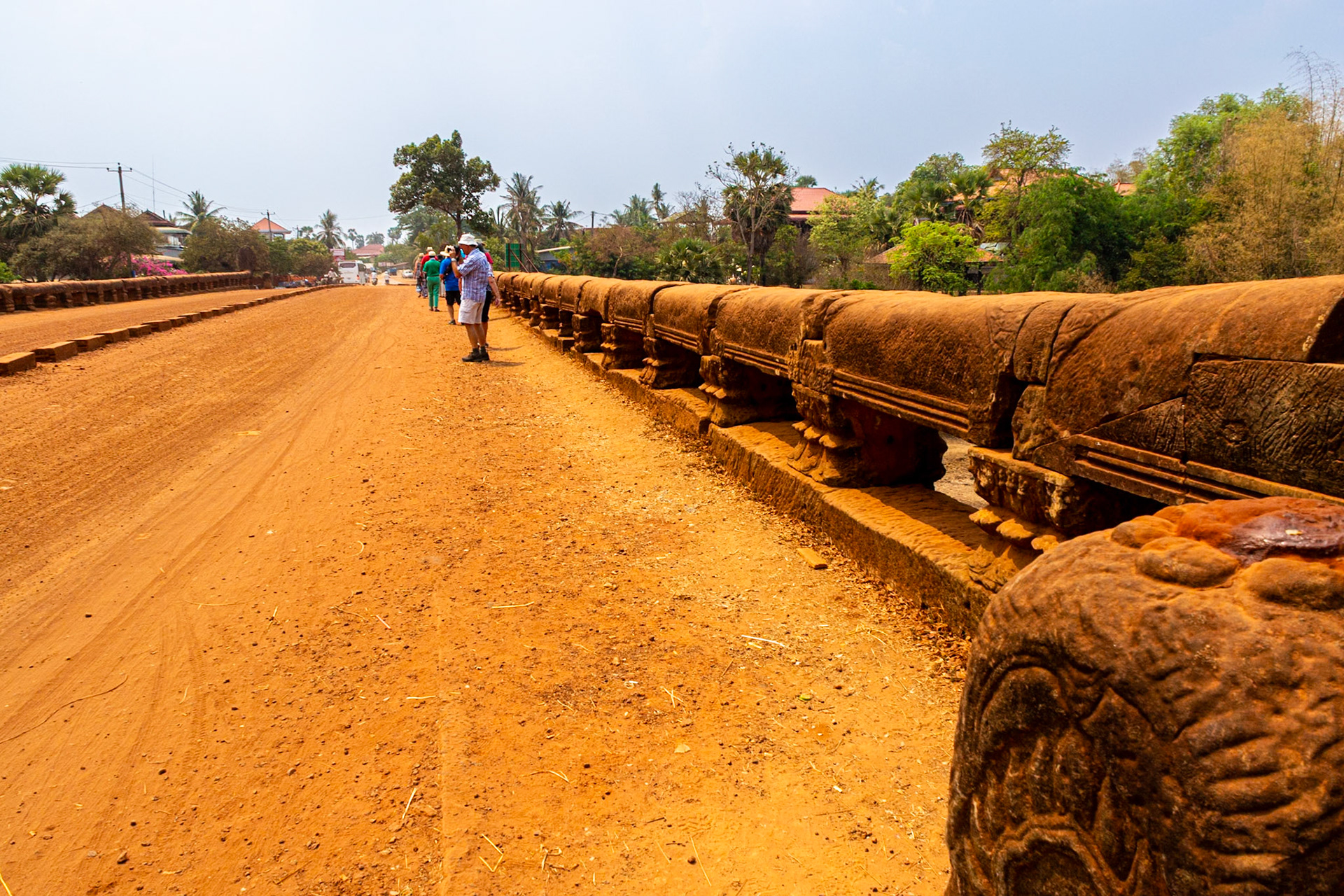
Spean Praptos - Also known as Kampong Kdei bridge.
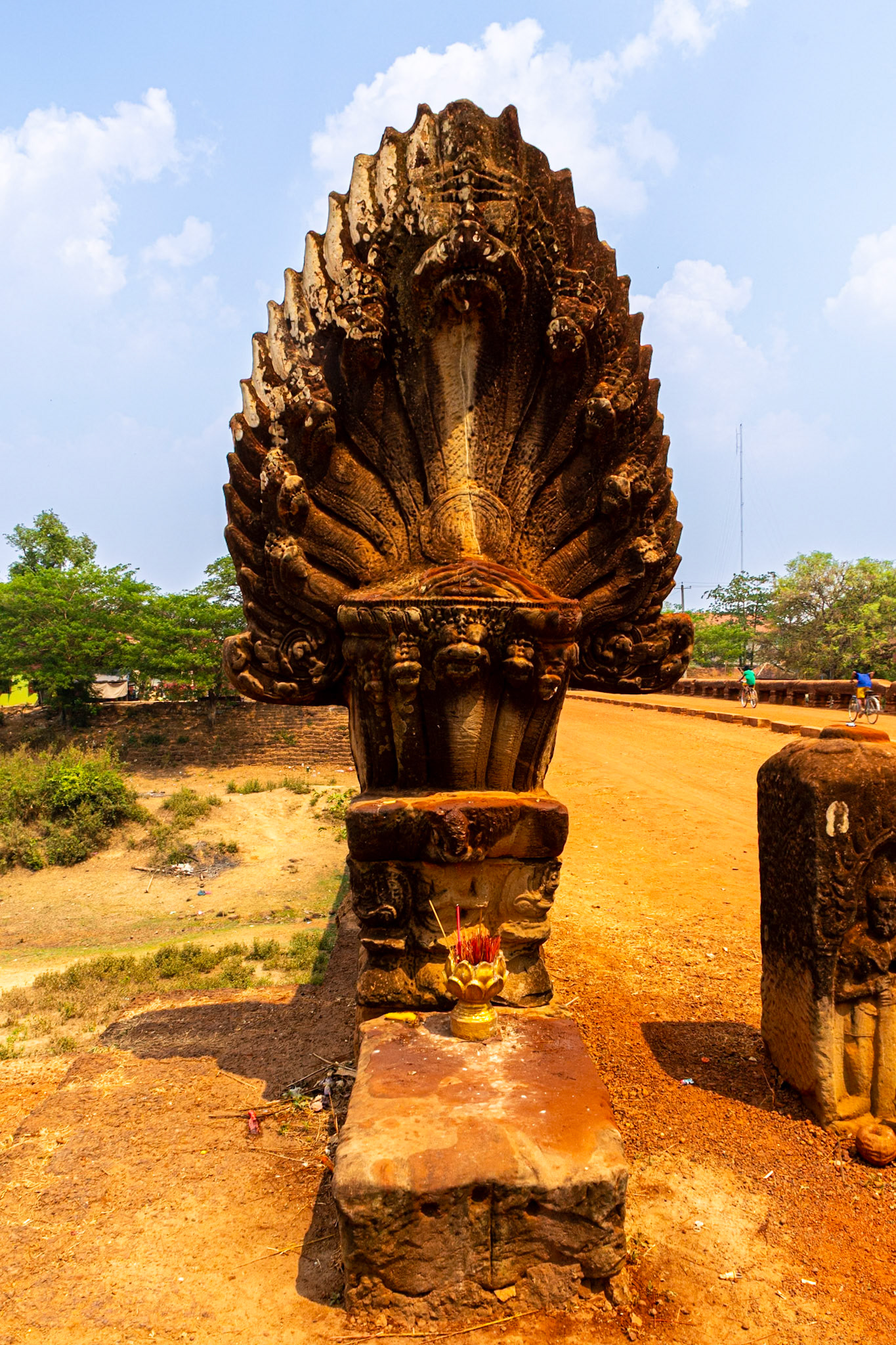
Naga statues at the bridge abutments.
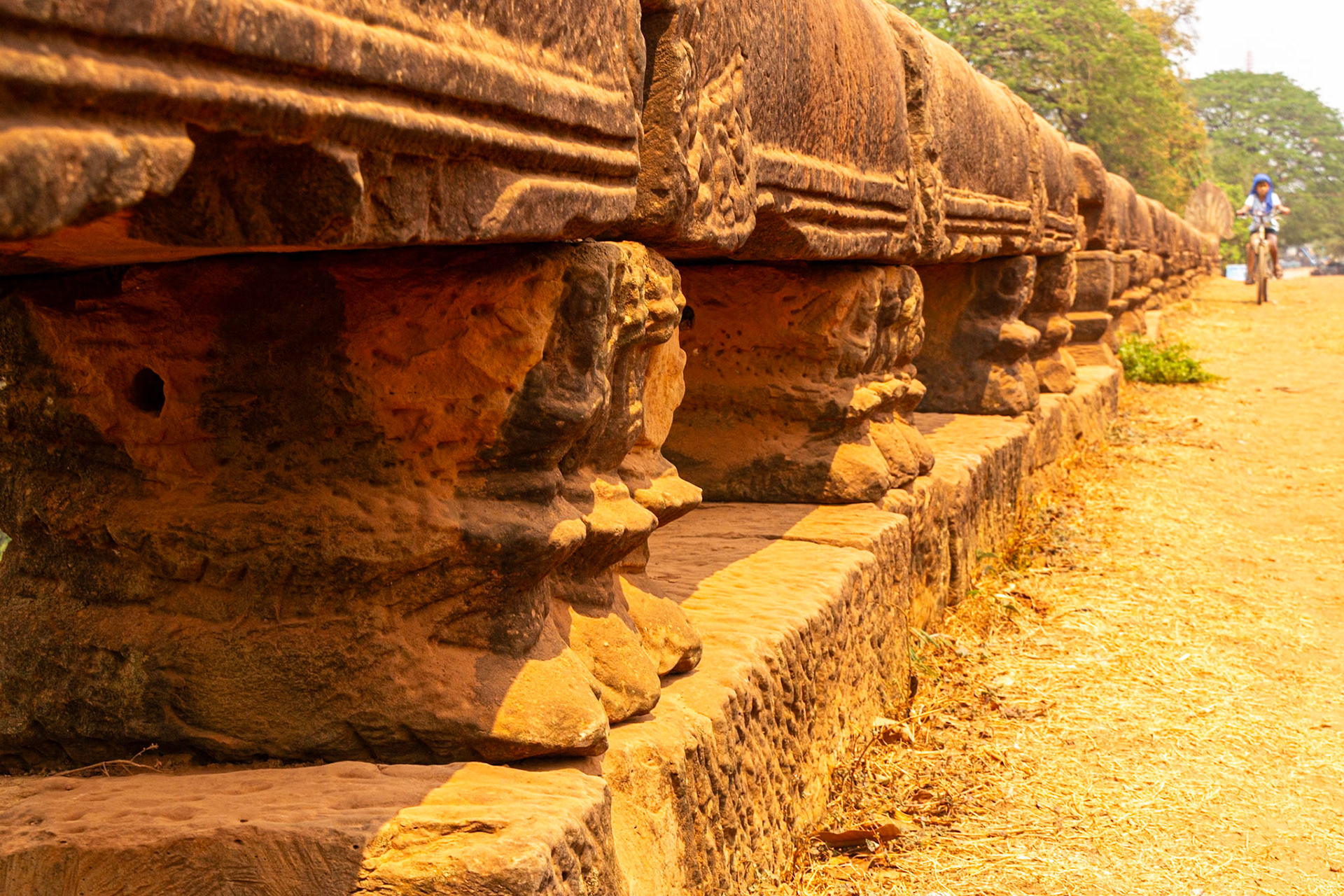
Weathered sandstone balustrading of the bridge.
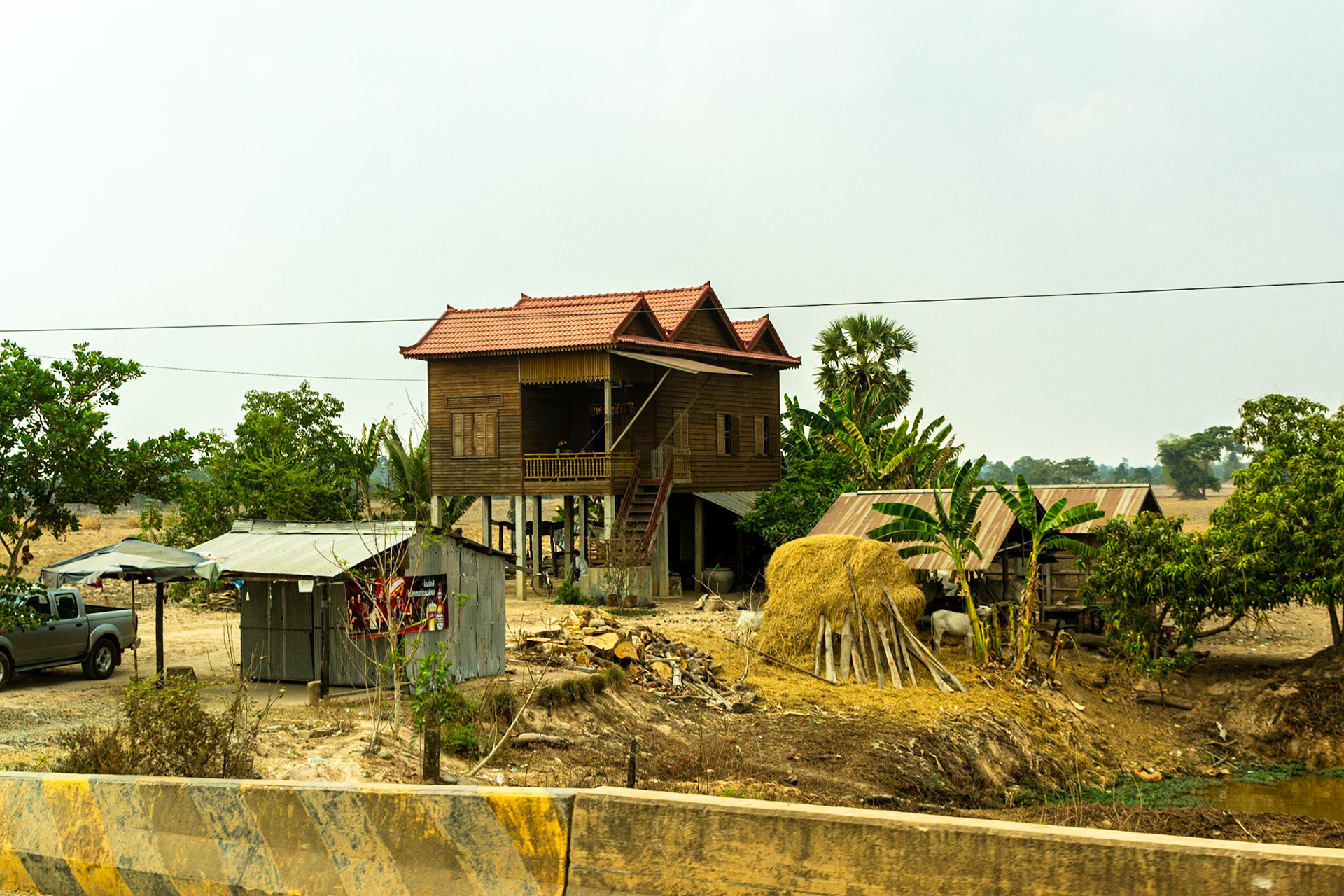
Roadside dwelling.
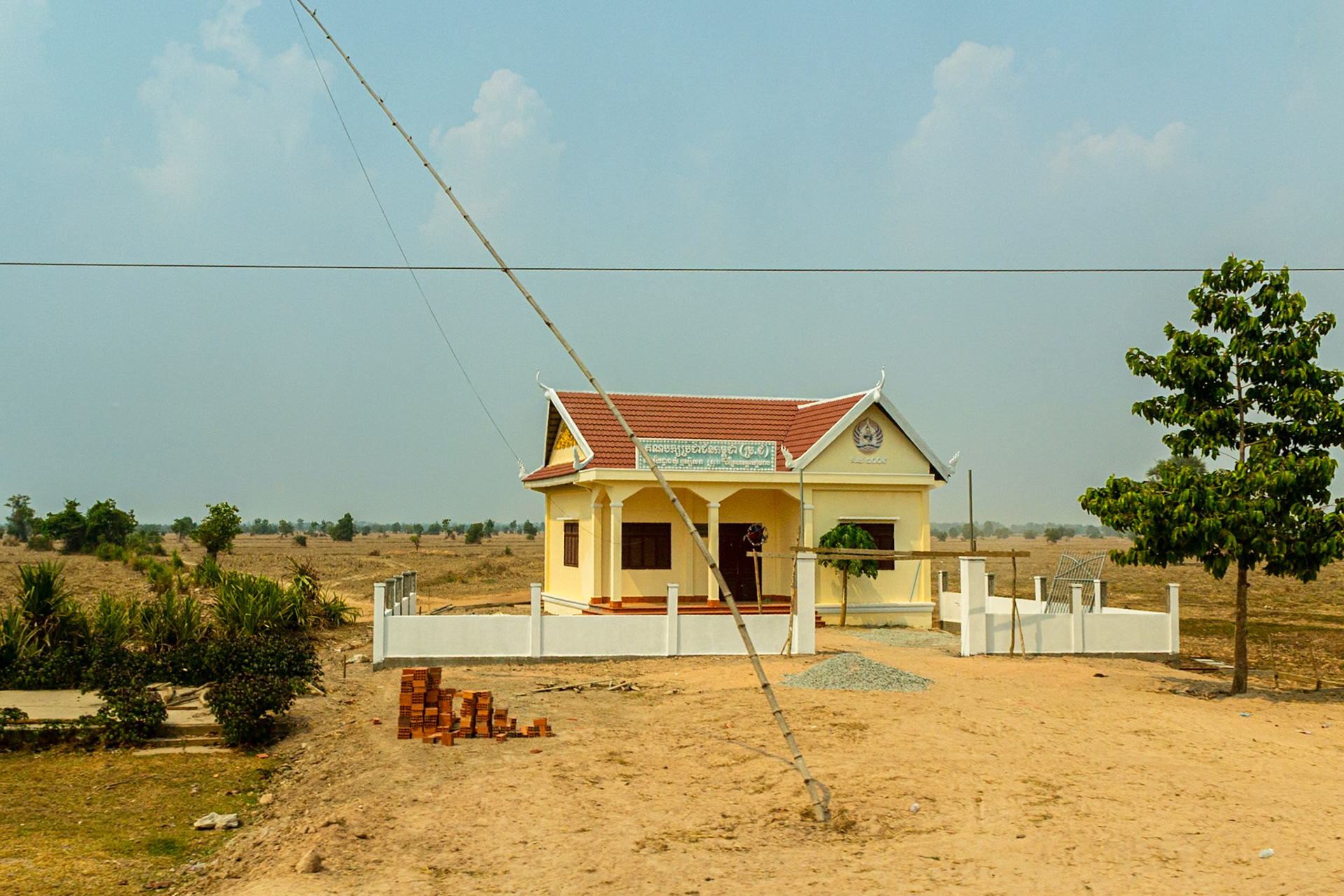
An official looking building in the middle of nowhere.
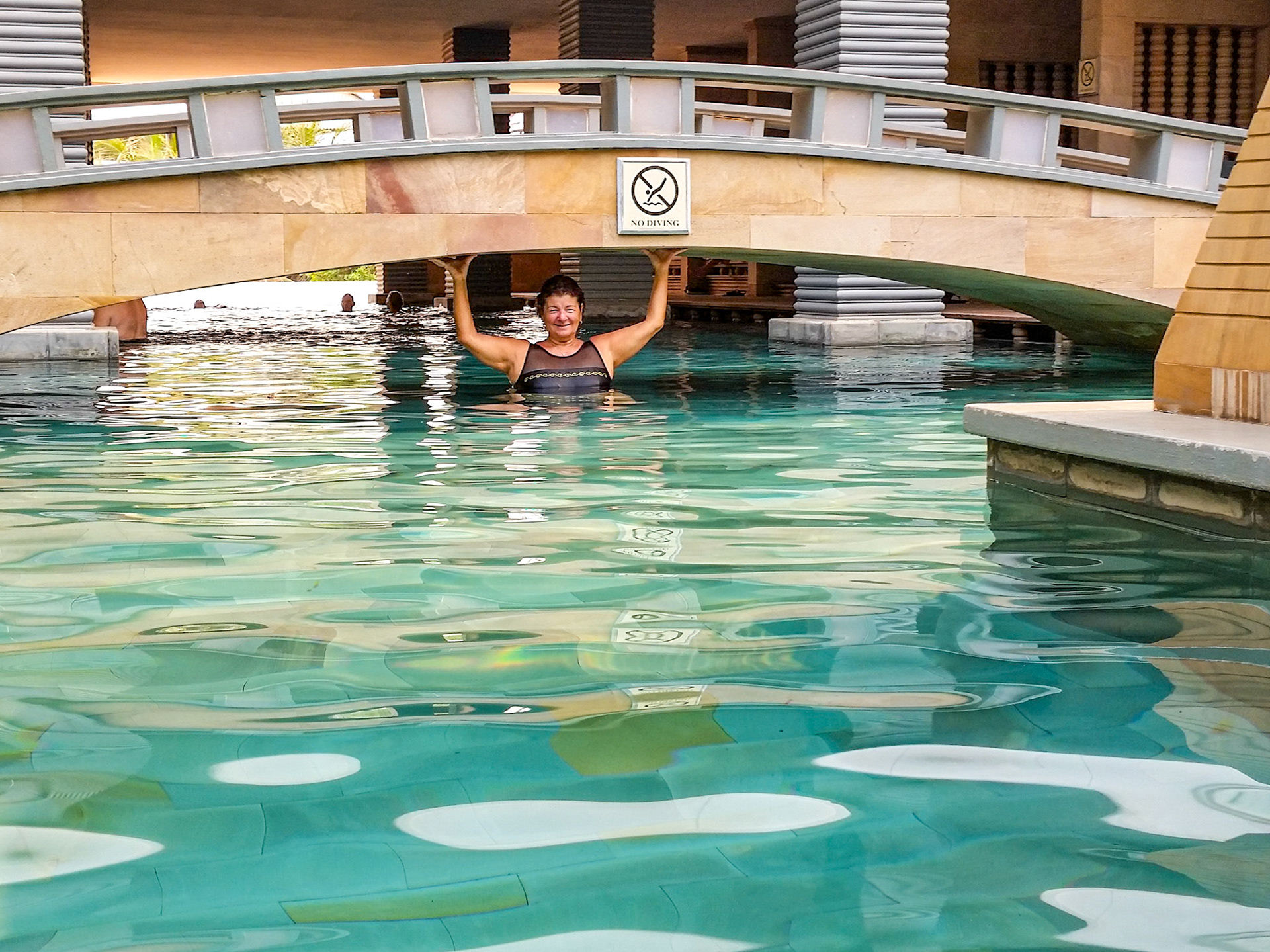
Beating the heat in the hotel's pool.
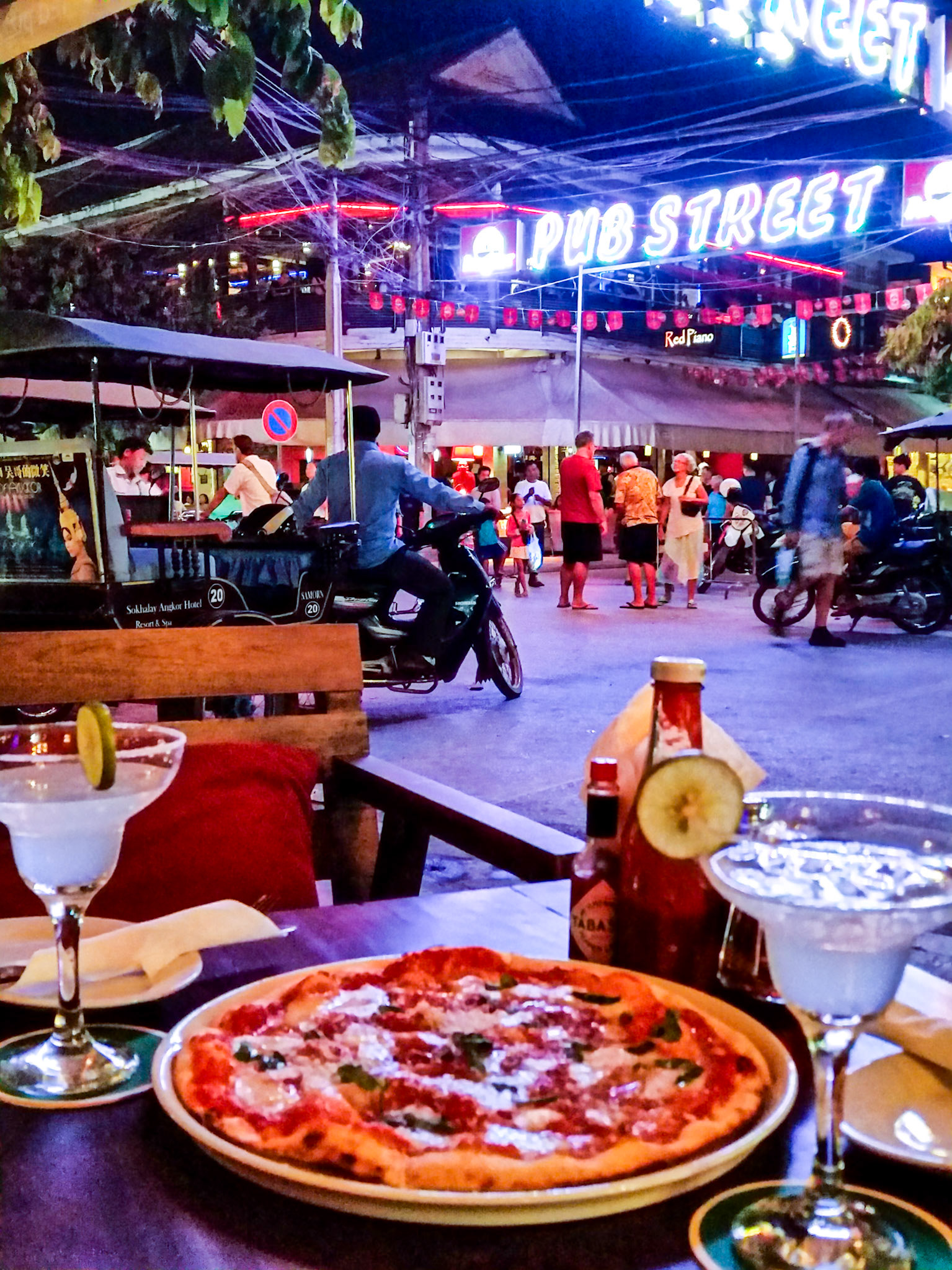
Refreshments on Pub Street.
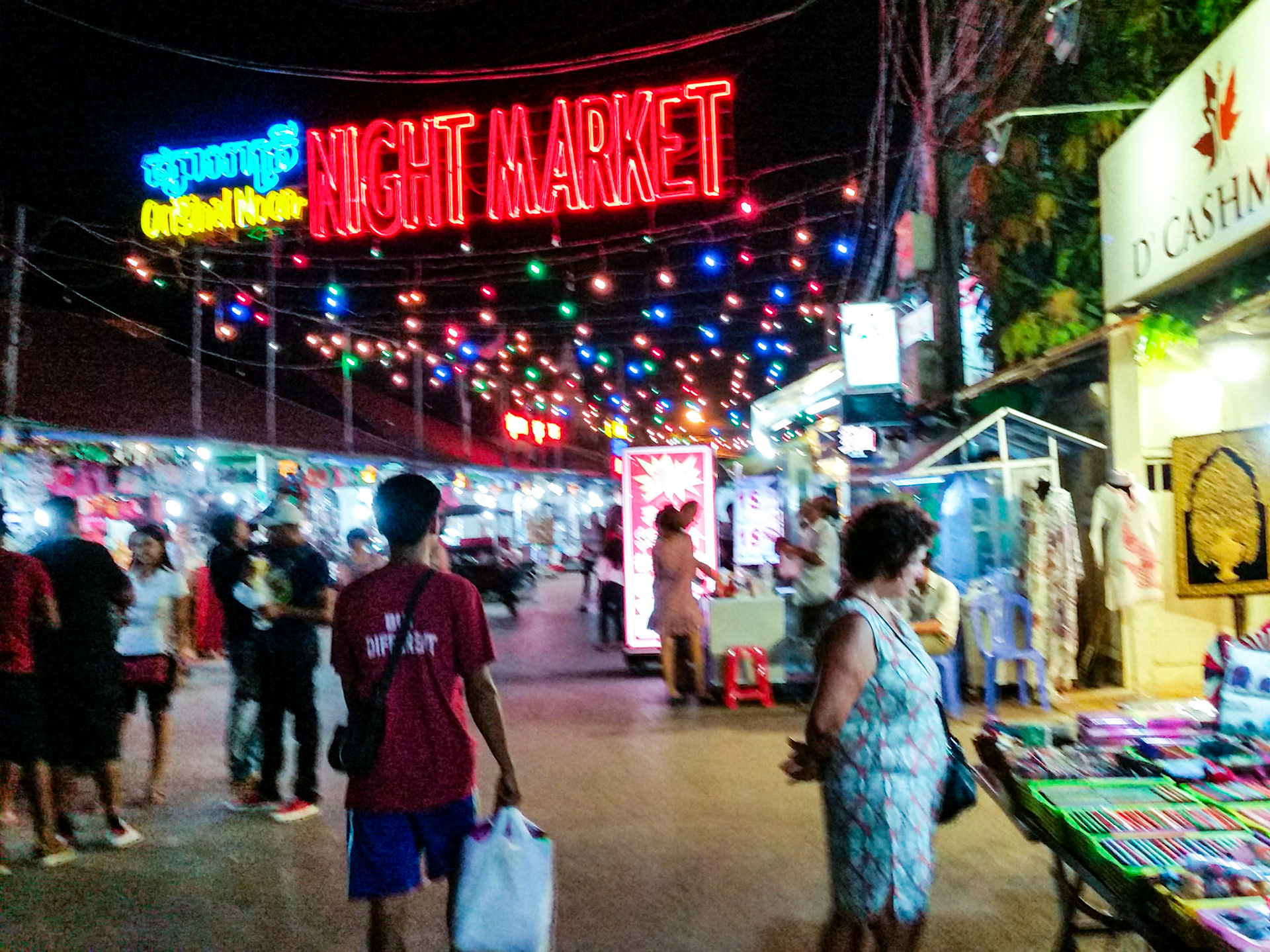
Exploring the night markets.
Angkor
The highlight of our Cambodian adventure was a visit to Angkor (also known as Yasodharapura) which was once the capital city of the Khmer Empire. The city and empire flourished from the 9th to the 15th centuries. The city houses Angkor Wat one of Cambodia's most popular tourist attractions and has many other significant archaeological sites, including Angkor Thom and Ta Prohm.
Angkor Thom
Angkor Thom ("Great City") was the last and most enduring capital city of the Khmer Empire. It was established in the late twelfth century and covers an area of 9 sq km, within are several monuments from earlier eras as well as those established by the ruler Jayavarman and his successors. At the centre of the city is Jayavarman's state temple known as the Bayon.
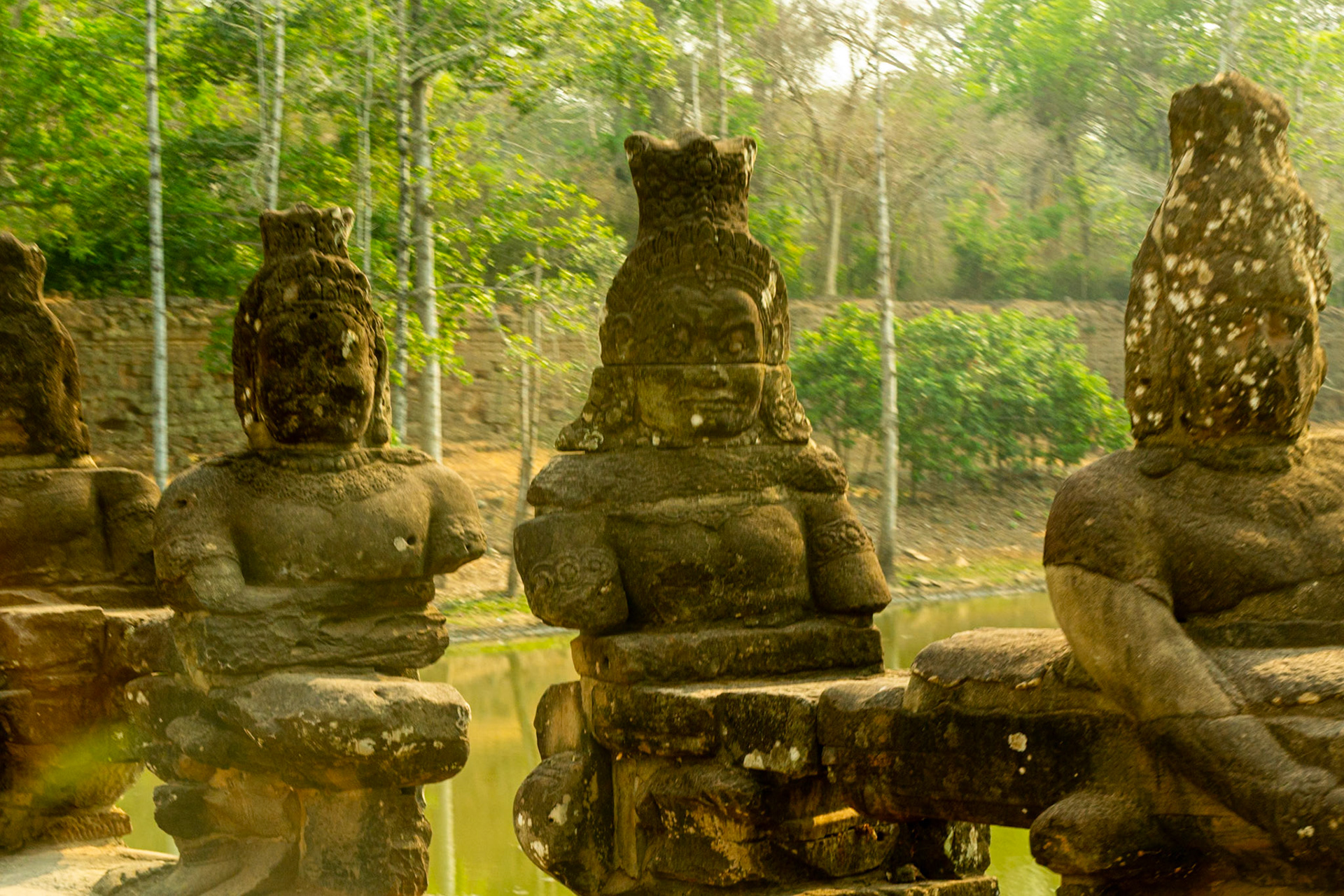
Sandstone statues greet us we cross the moat at the south gate to Angkor Thom.
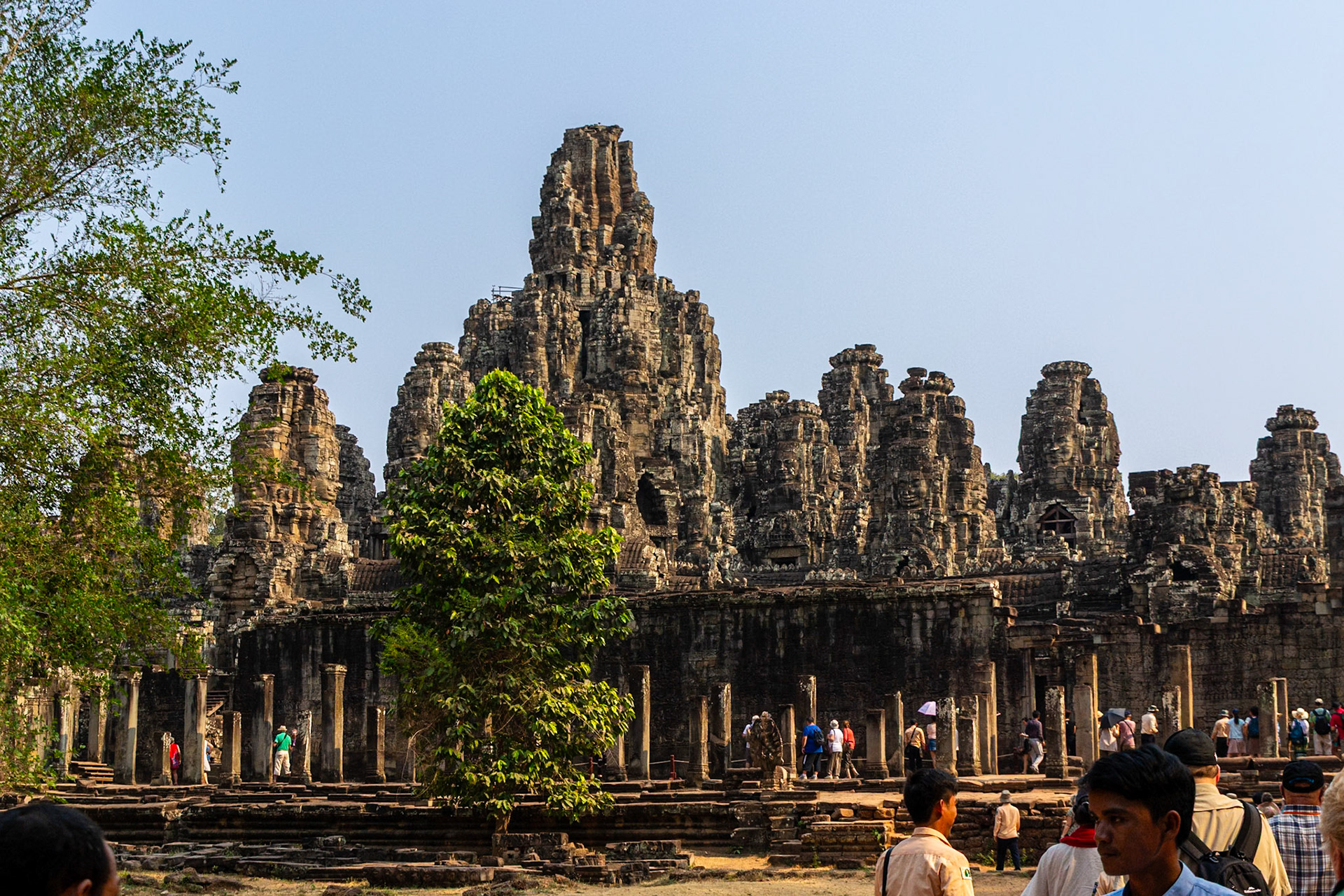
Bayon, the most notable temple at Angkor Thom.
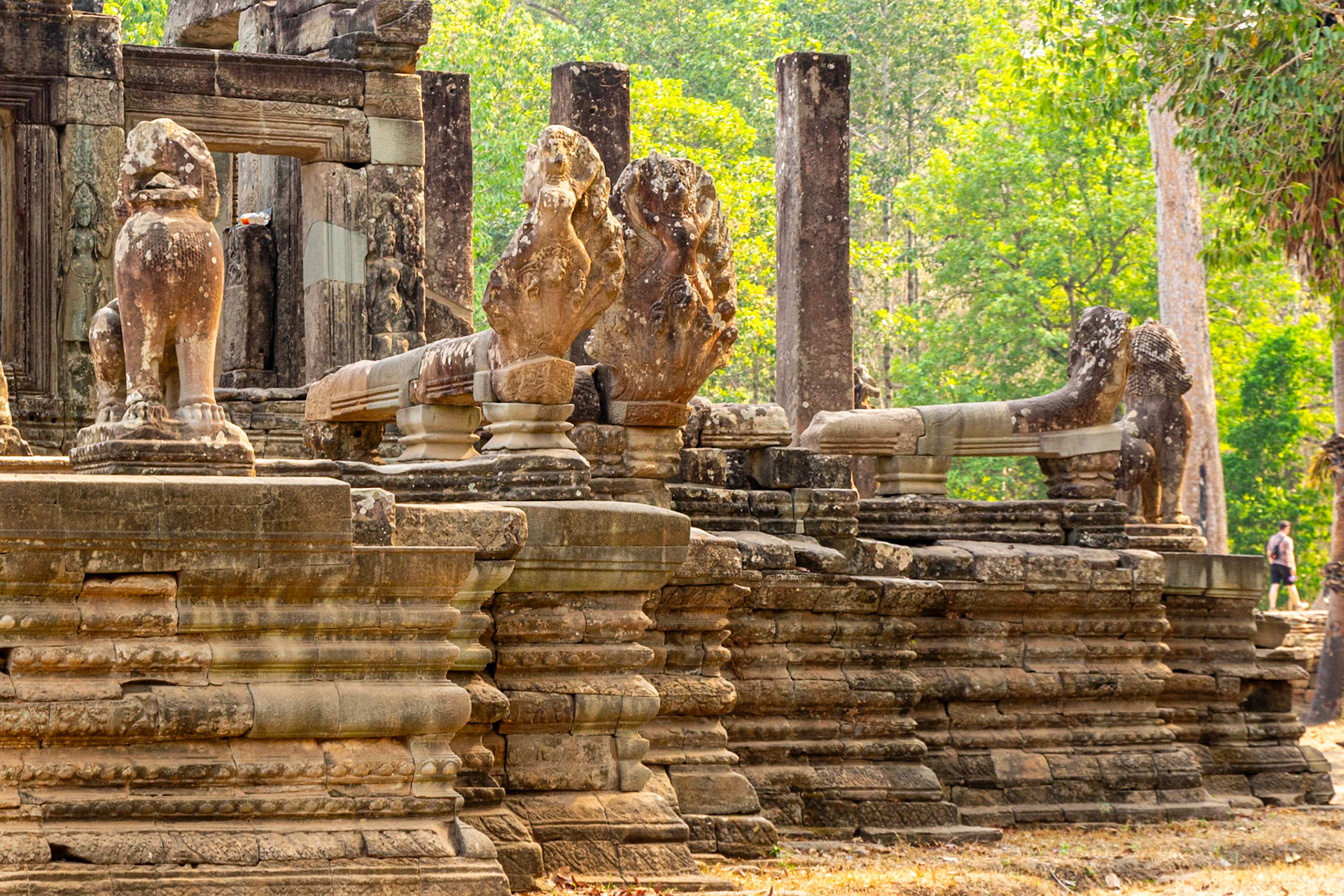
Images of the Bayon.
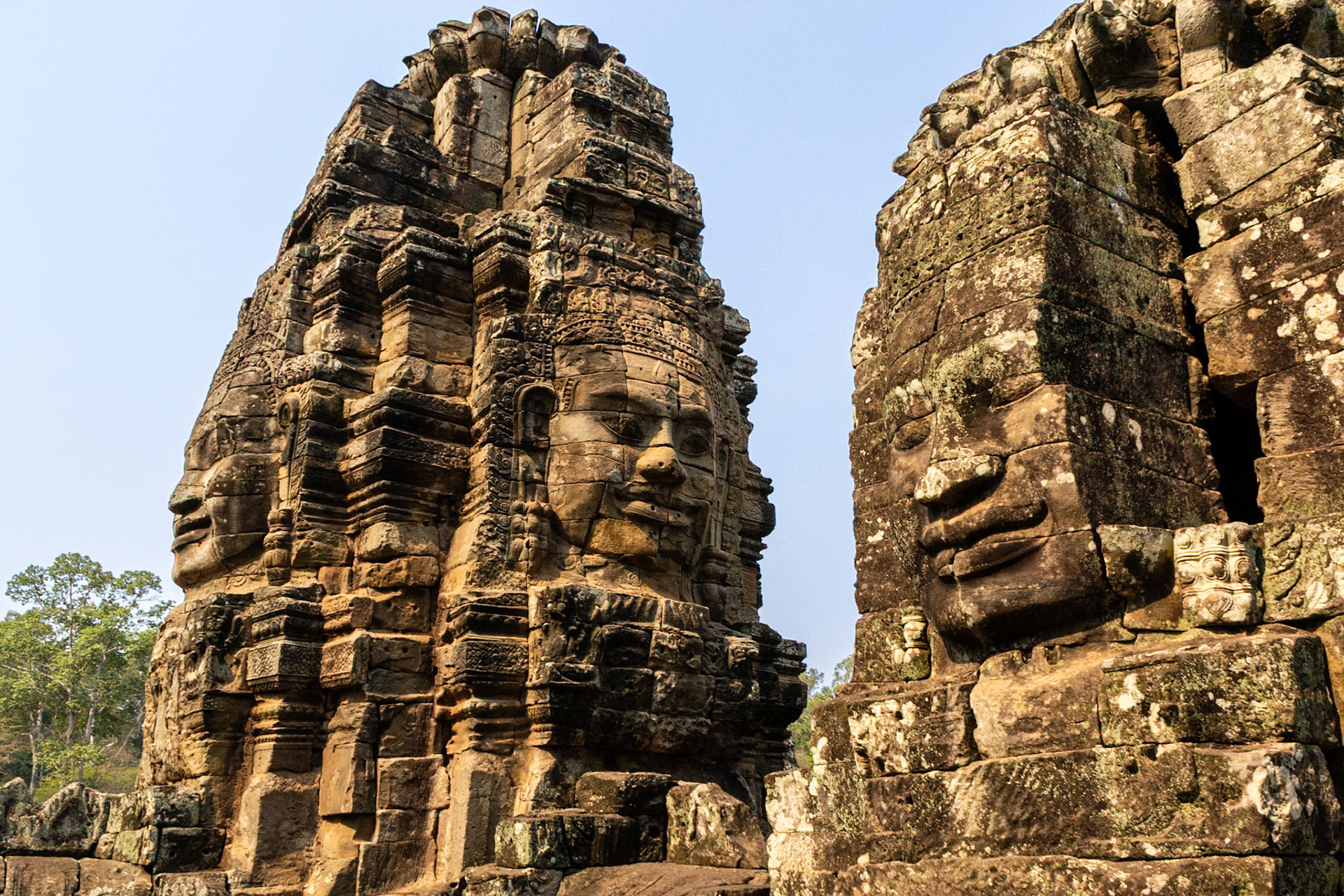
Face towers of the Bayon.
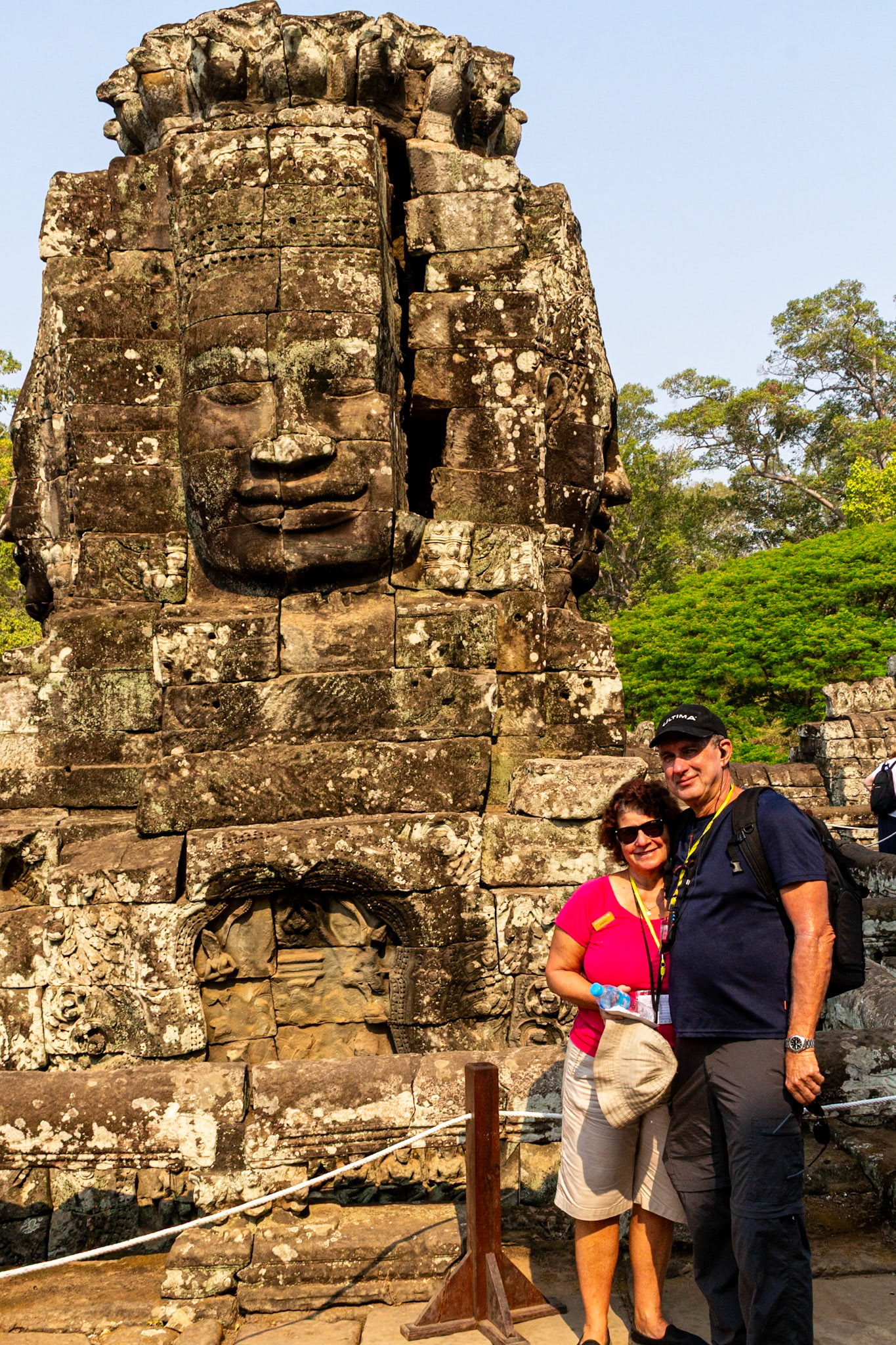
Face towers at the Bayon.
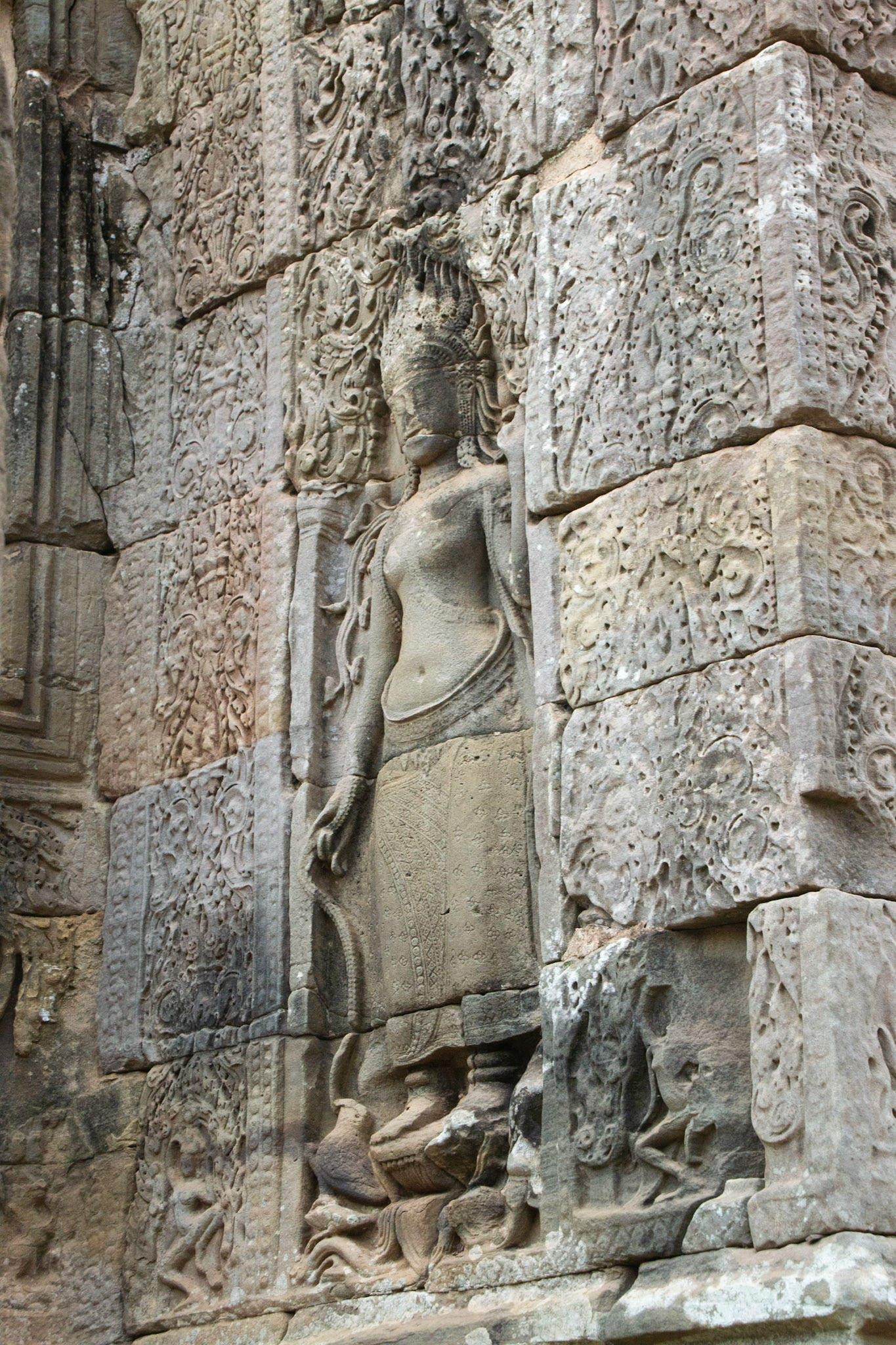
Devatas images at the Bayon.
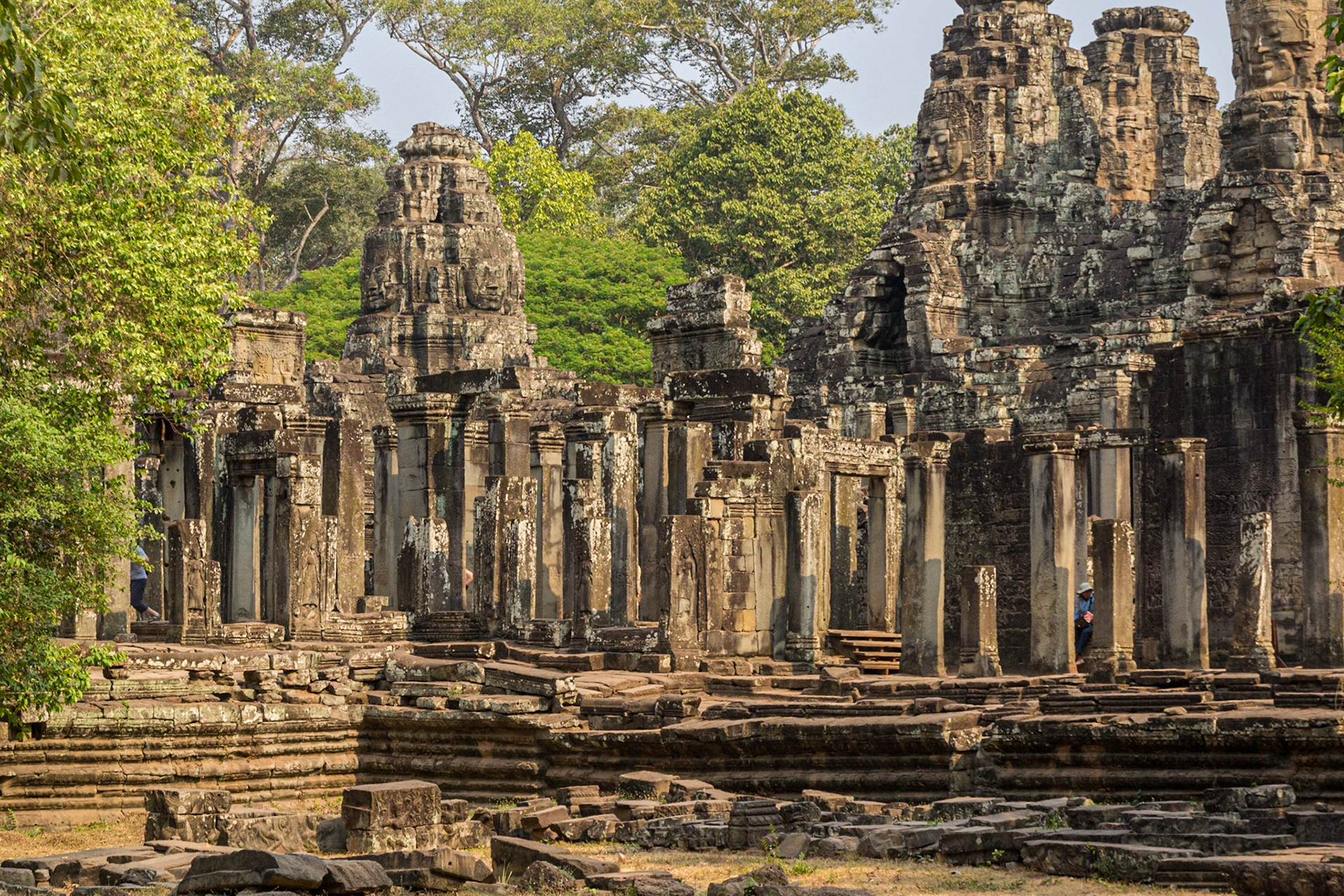
Images of the Bayon.
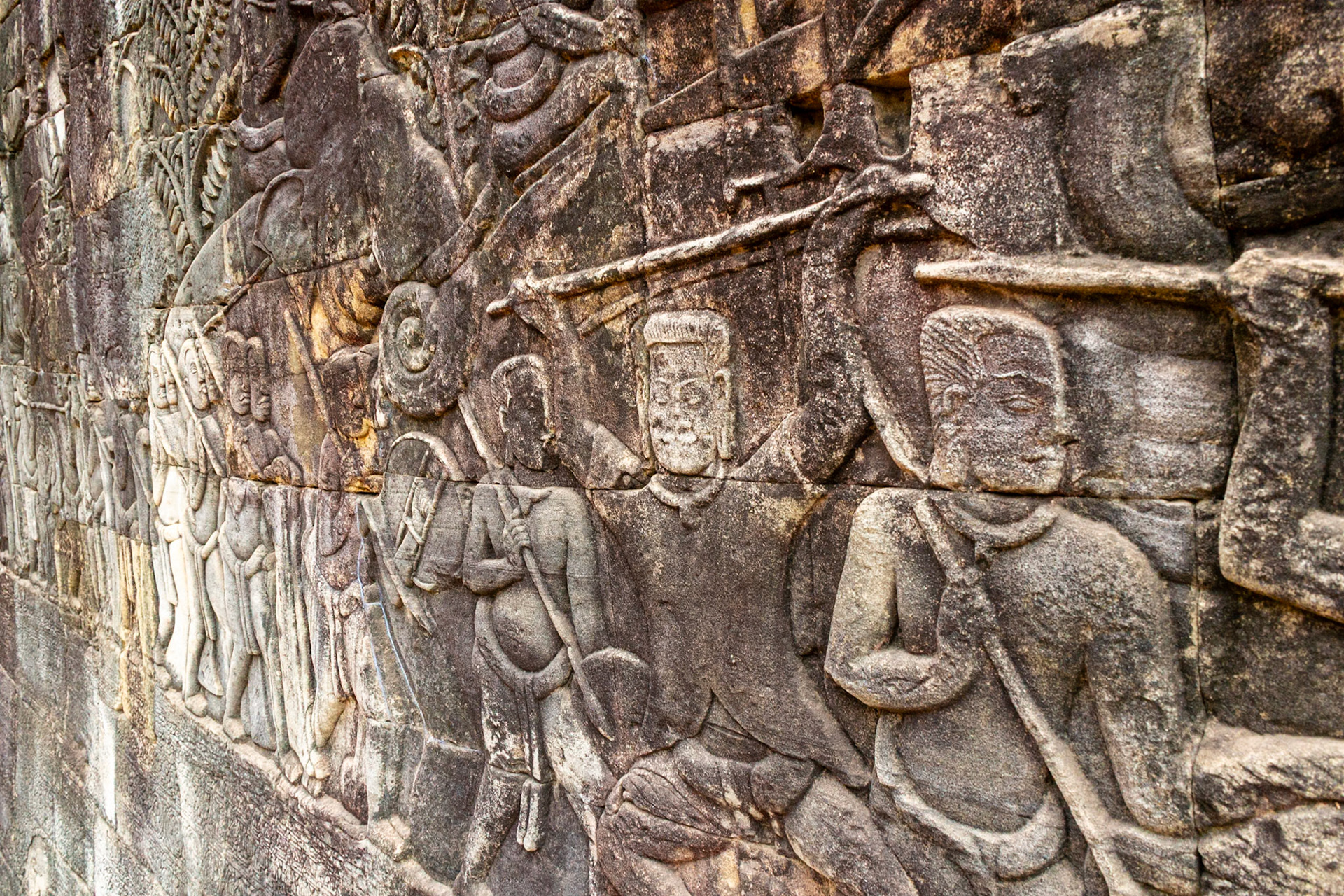
Bas-relief images carved into sandstone blocks depict fearsome battles.
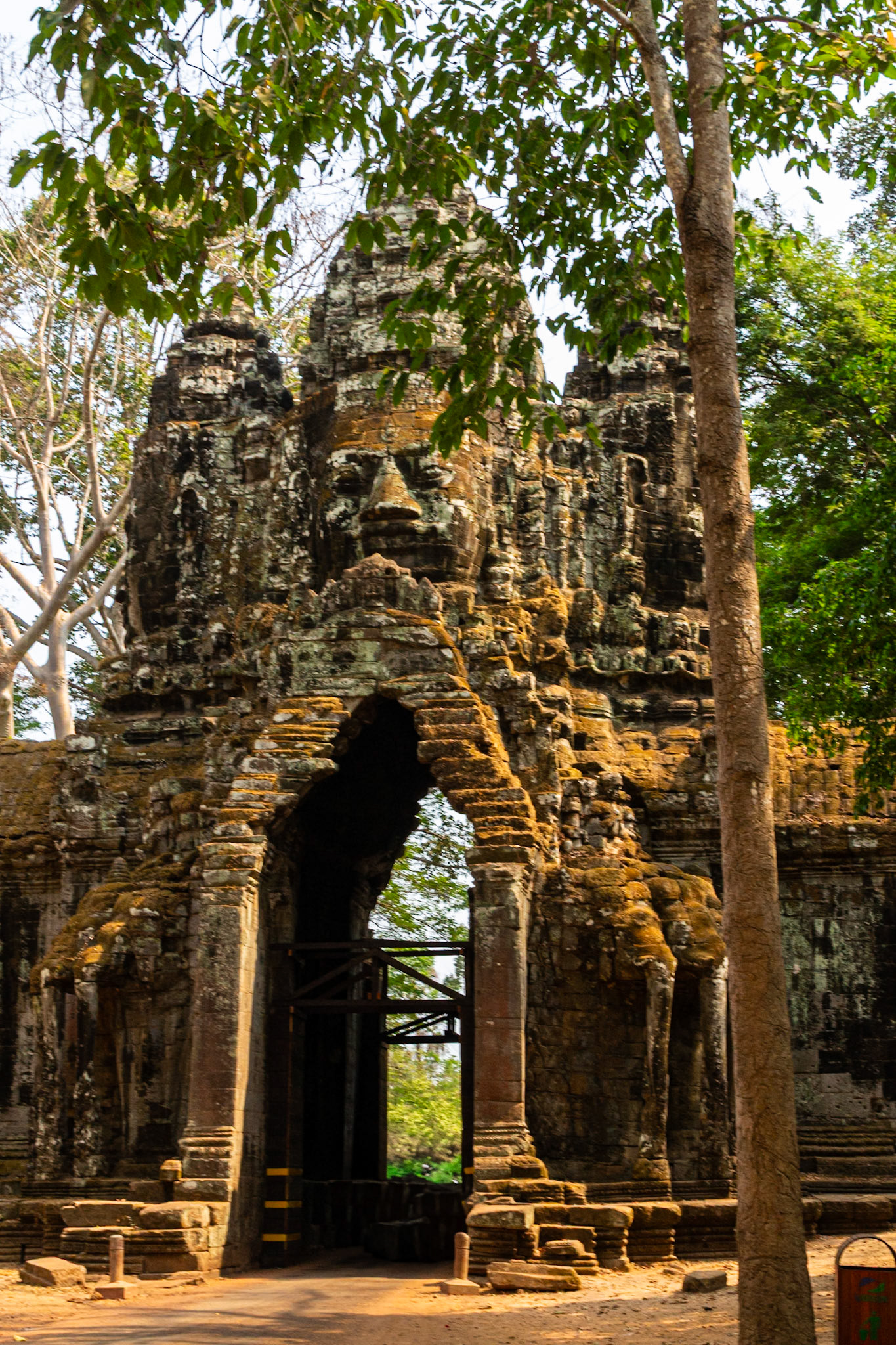
The North Gate of Angkor Thom.
Angkor Wat
Angkor Wat (City/Capital of Temples) was a Hindu-Buddhist temple complex located within the ancient Khmer capital city of Angkor. Considered to be the largest religious structure and one of the best examples of Khmer architecture and a symbol of Cambodia. Its profile is depicted on the Cambodian flag.
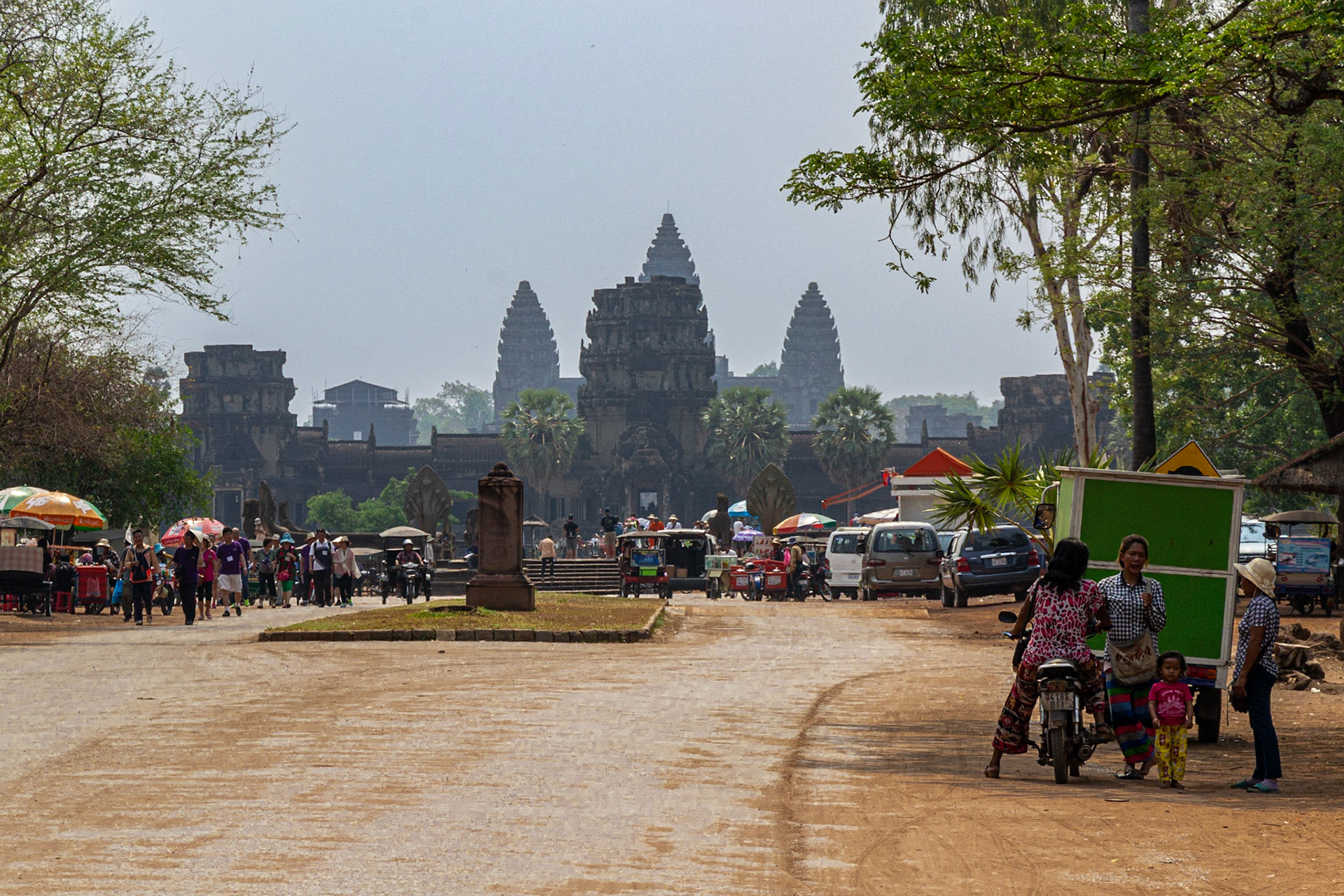
Adjacent the entrance to Angkor Wat a village has been established by locals hoping to sell souvenirs.
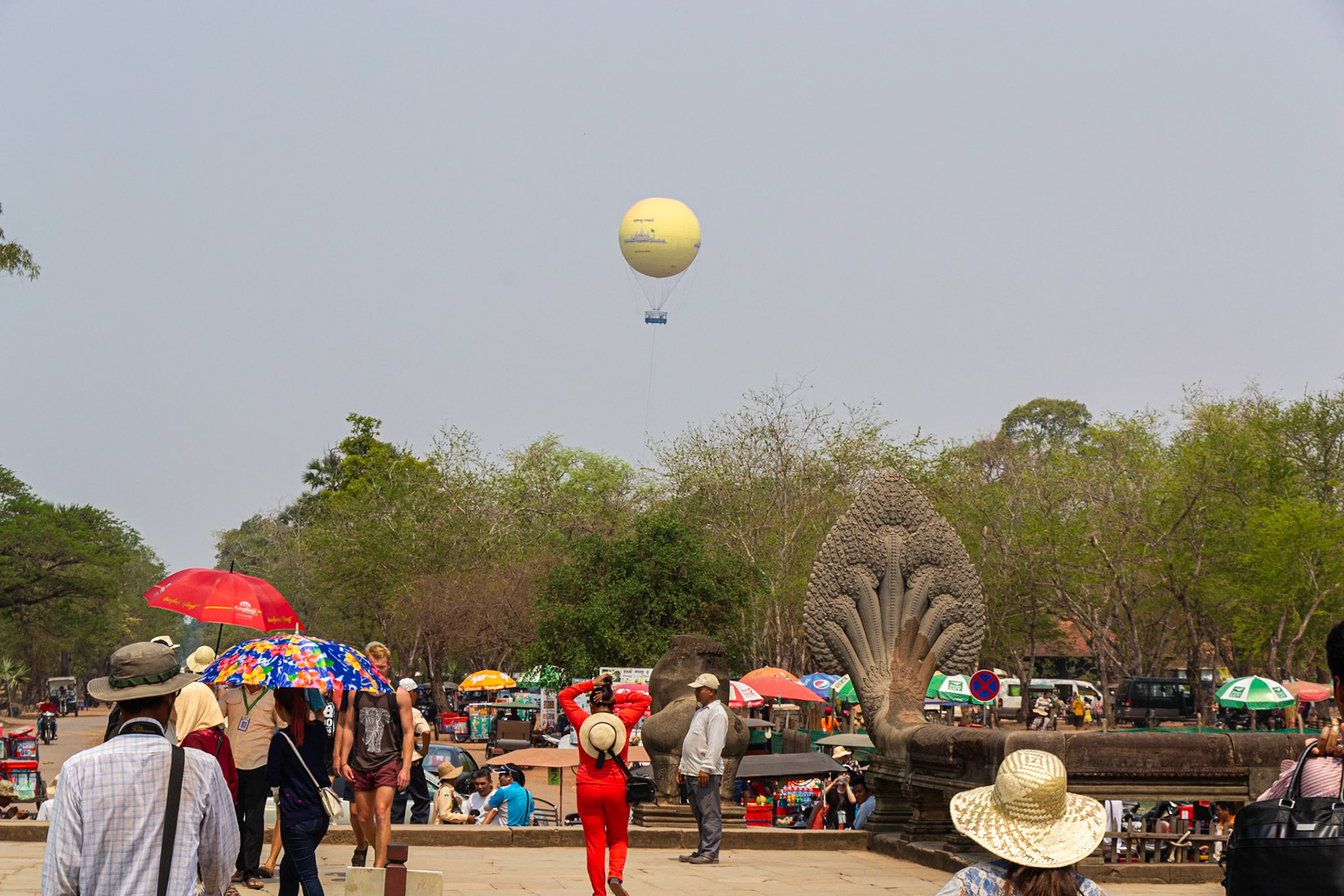
A tethered balloon hovers above affording a birds-eye view of the temple ground.
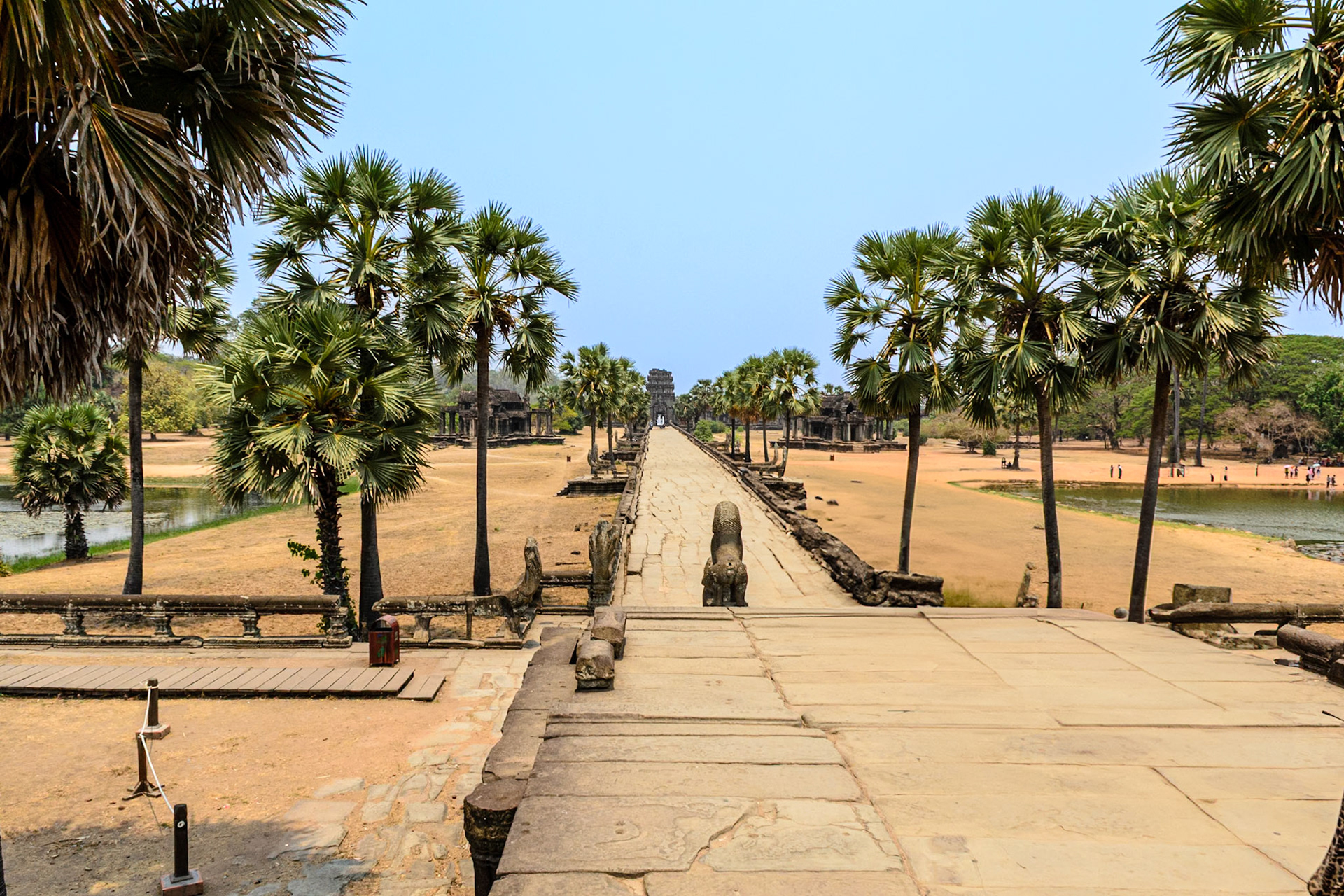
Approaching Angkor Wat via the paved, tree lined avenue and causeway.
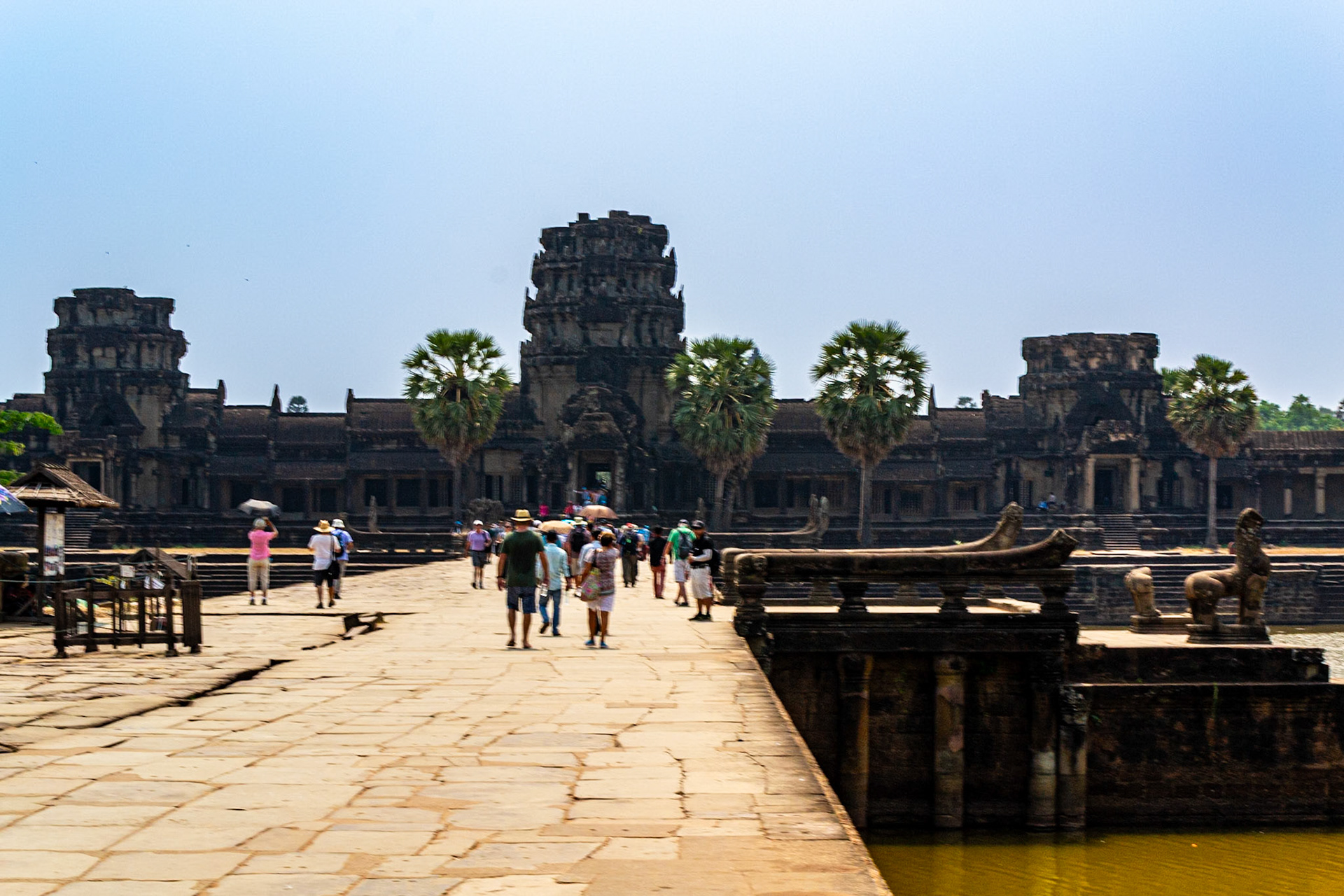
Crossing the moat via a stone causeway.
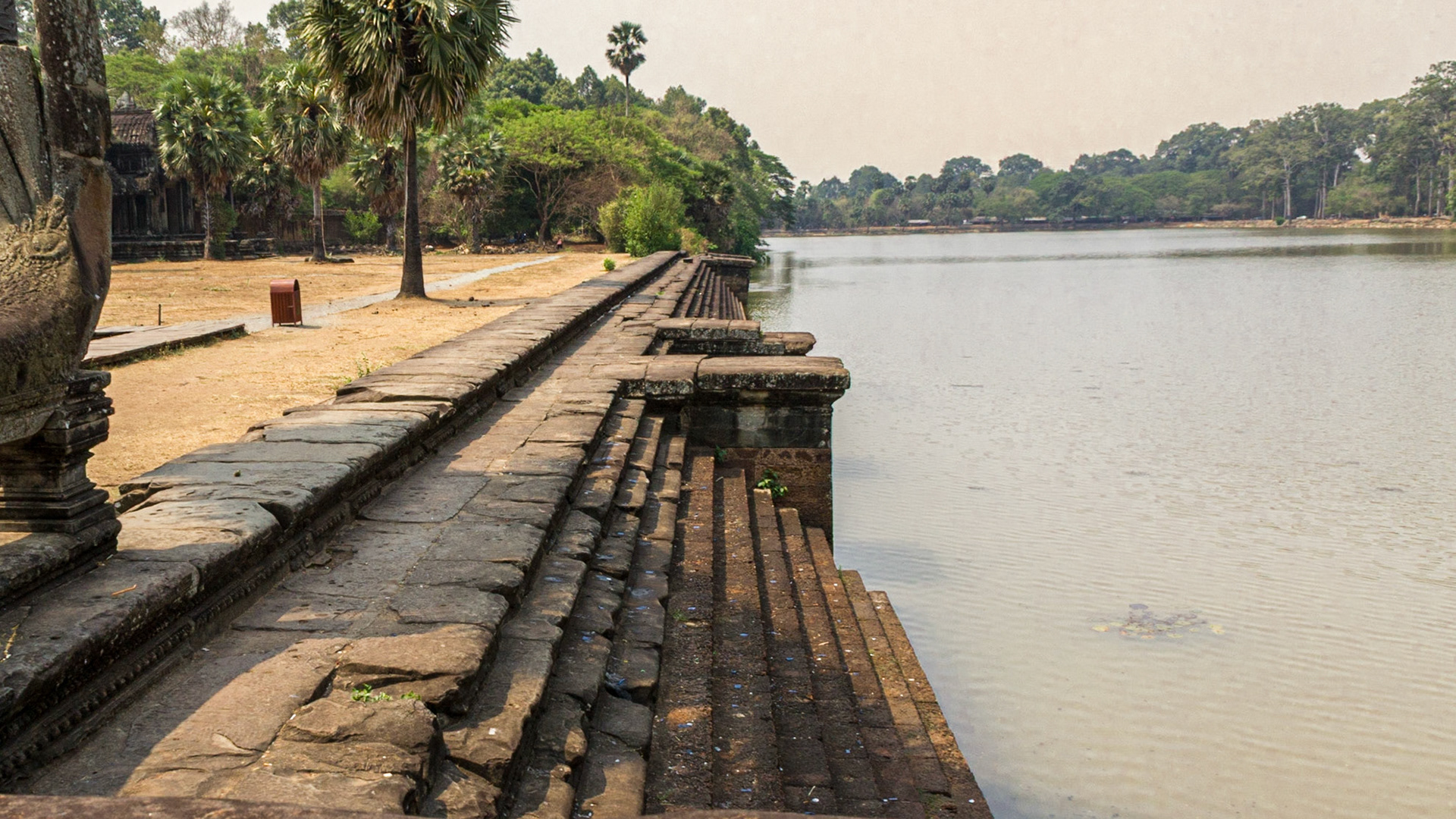
Moat surrounding the temple complex is thought to represent the ocean.
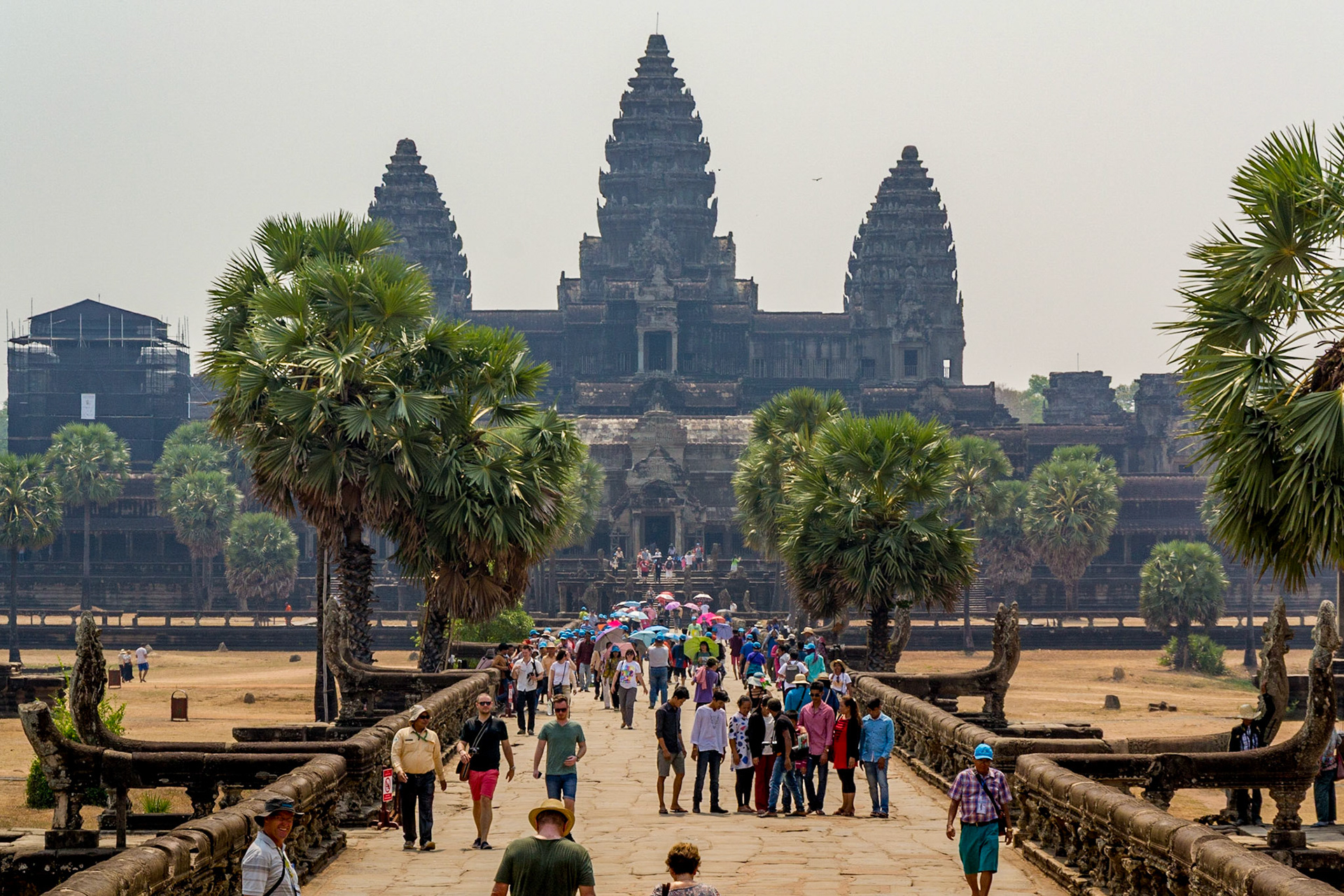
Tourists line the concourse near the entry to the main temple.
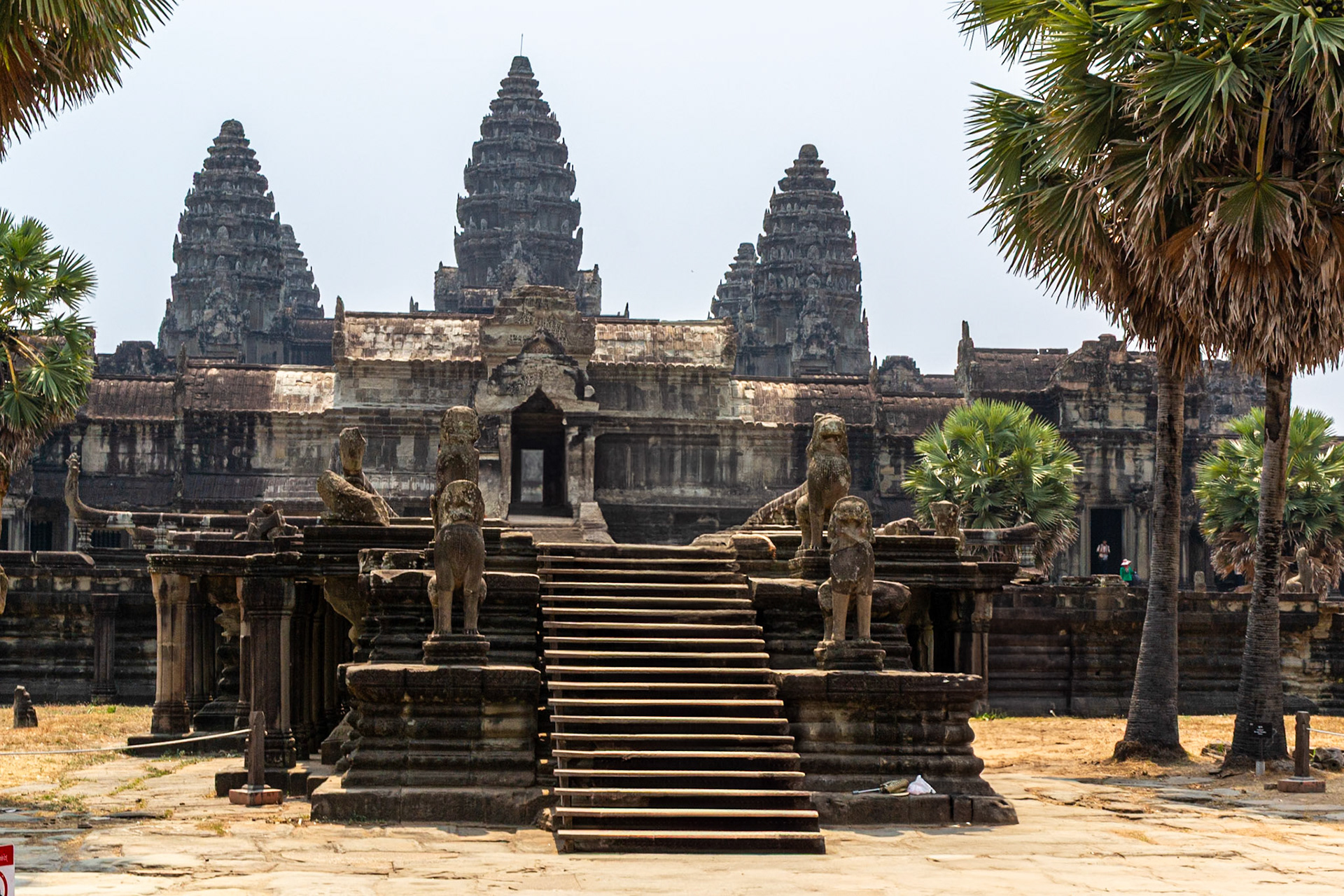
The Gopurams rise above the galleries as we enter Angkor Wat.
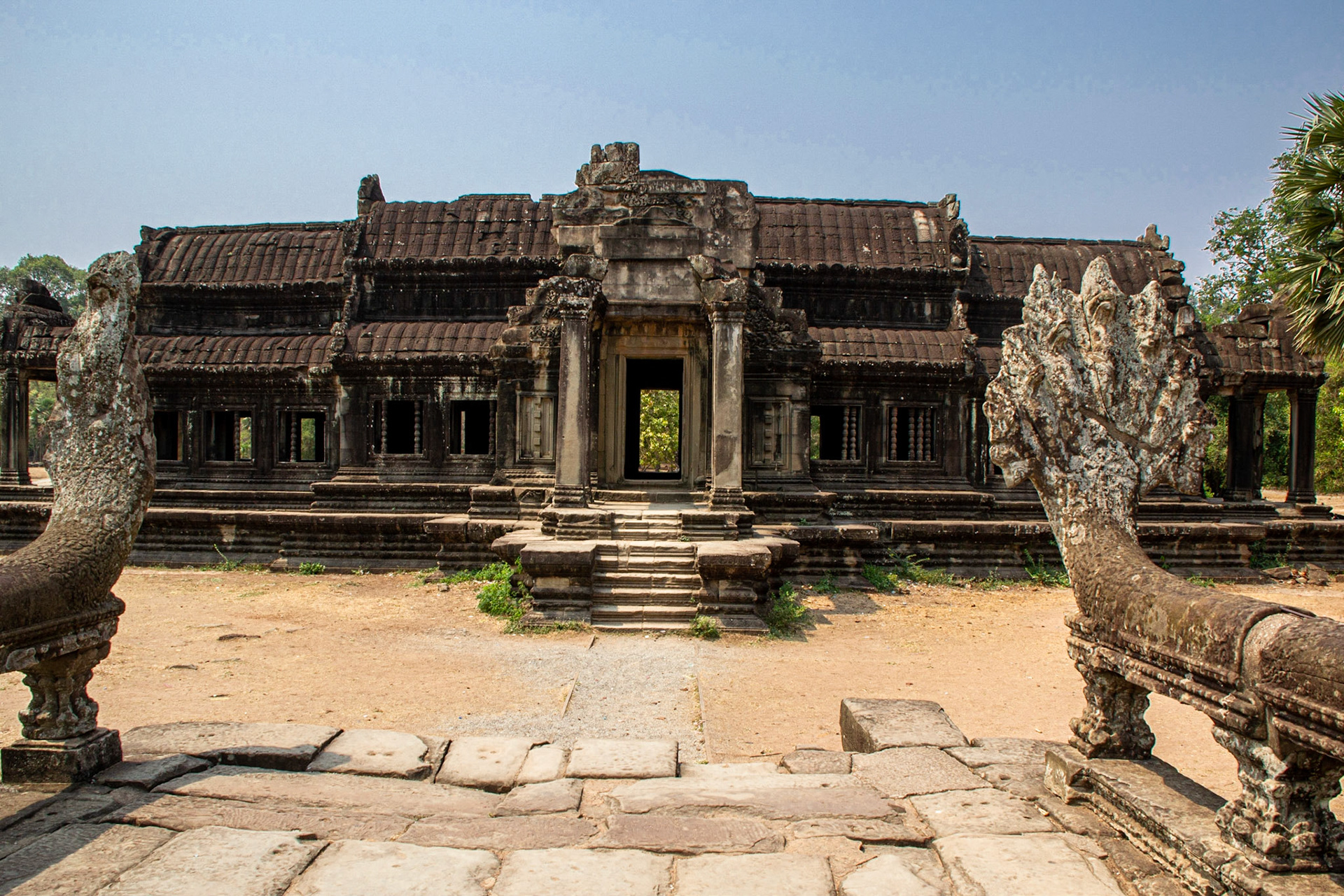
One of the many covered galleries and courtyards linked by pathways.
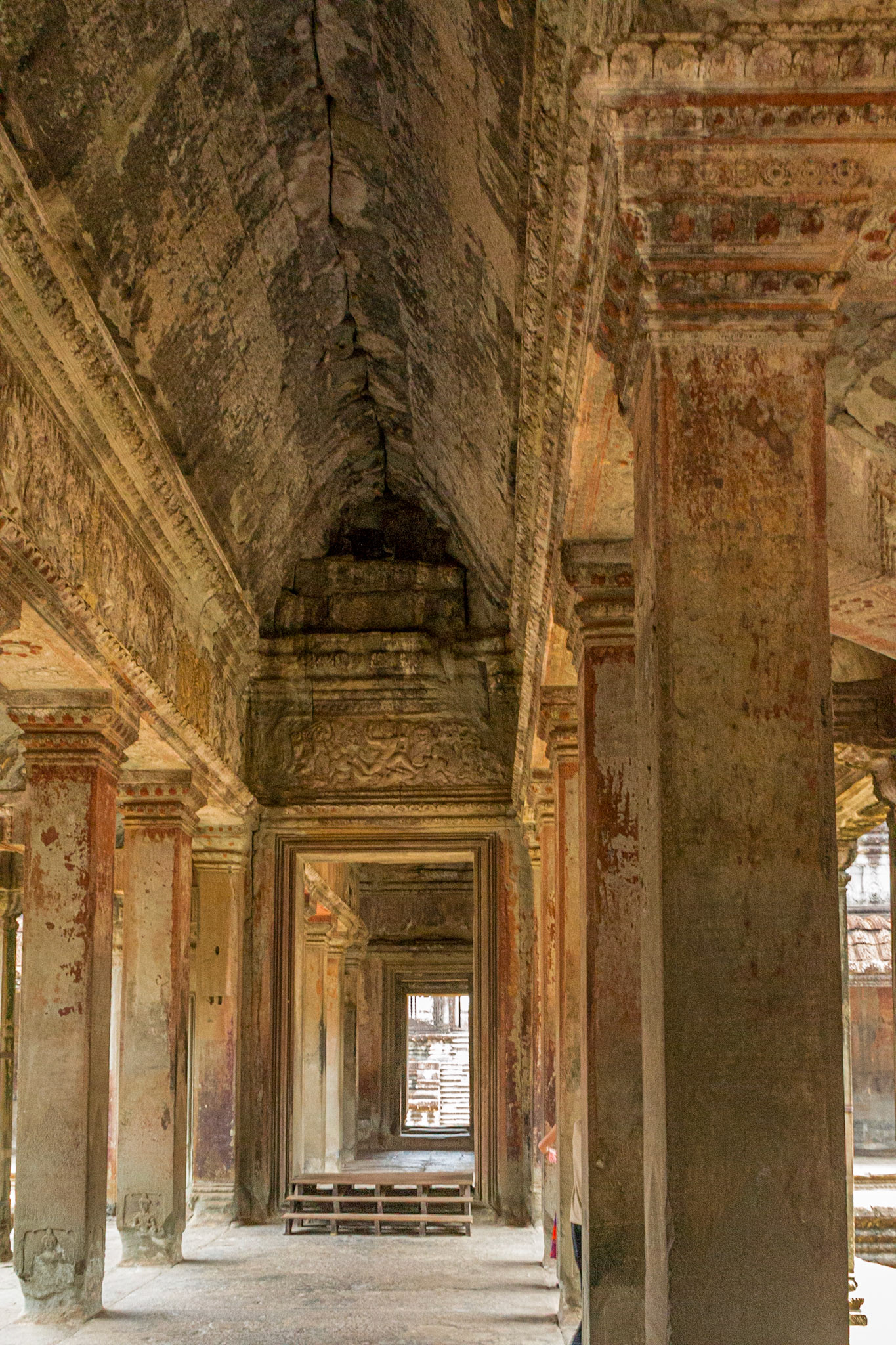
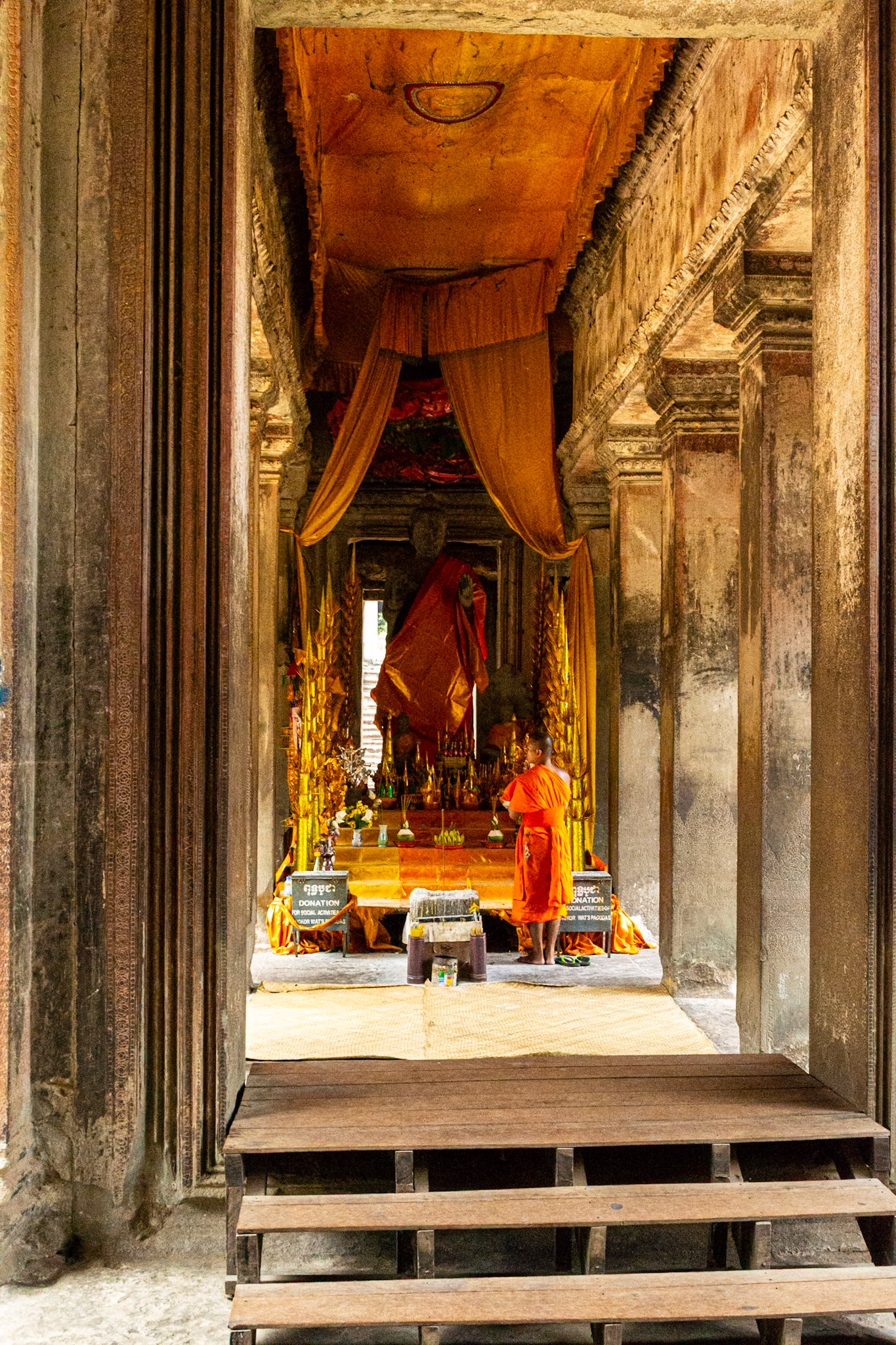
A Buddhist Monk passes in front of a shrine within the complex.
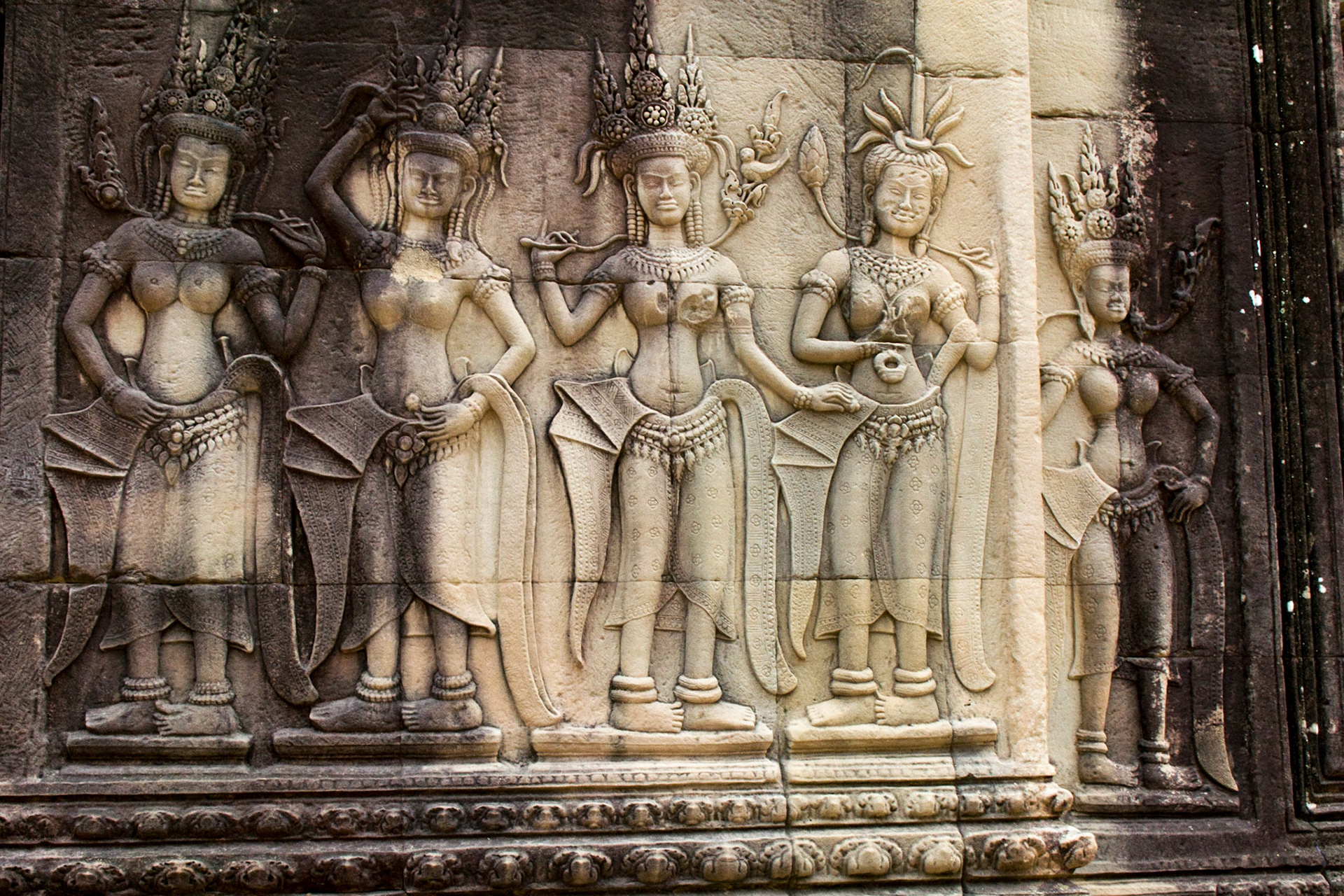
Devatas carvings adorn the columns and walls.
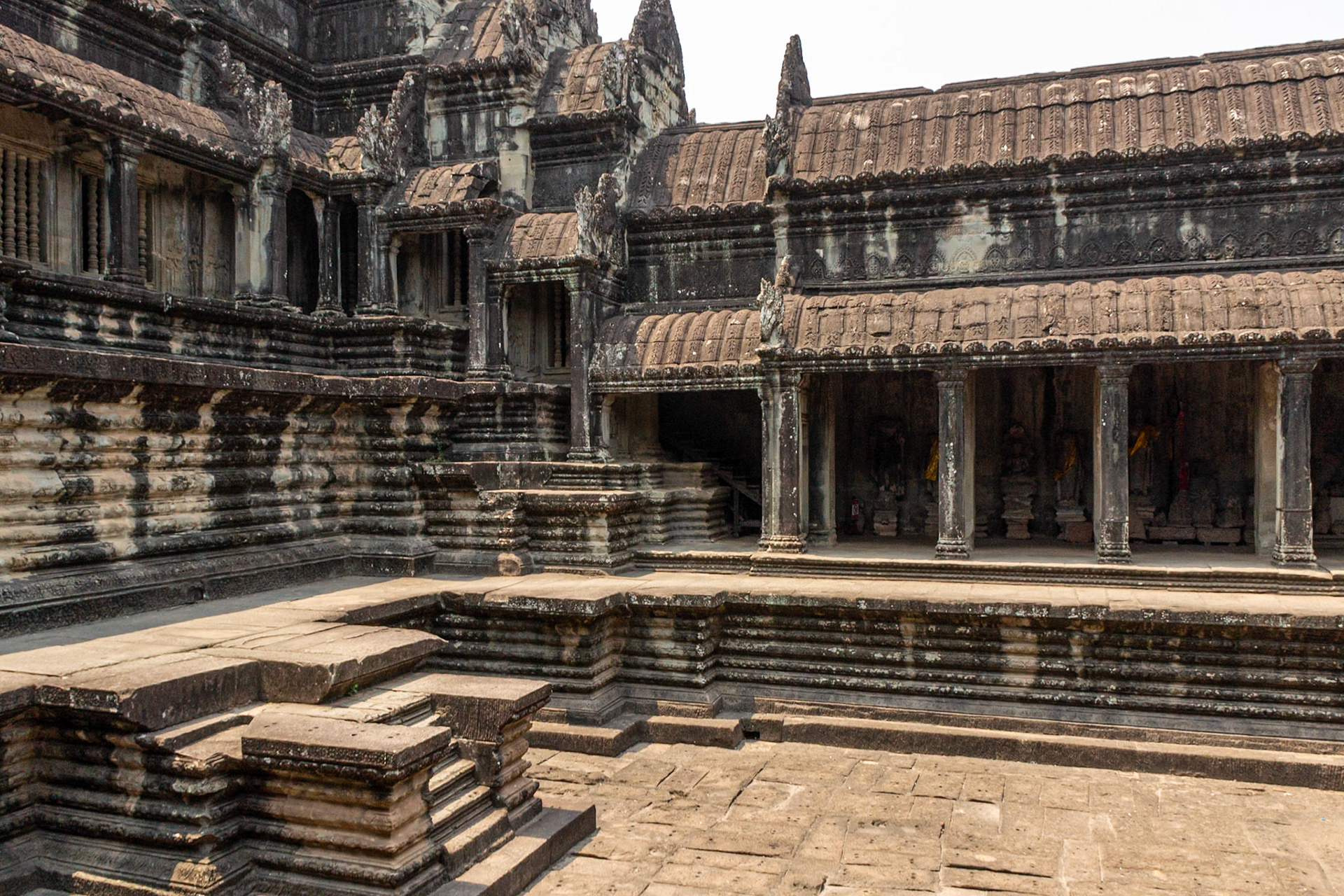
Sunken terraces within the main temple.
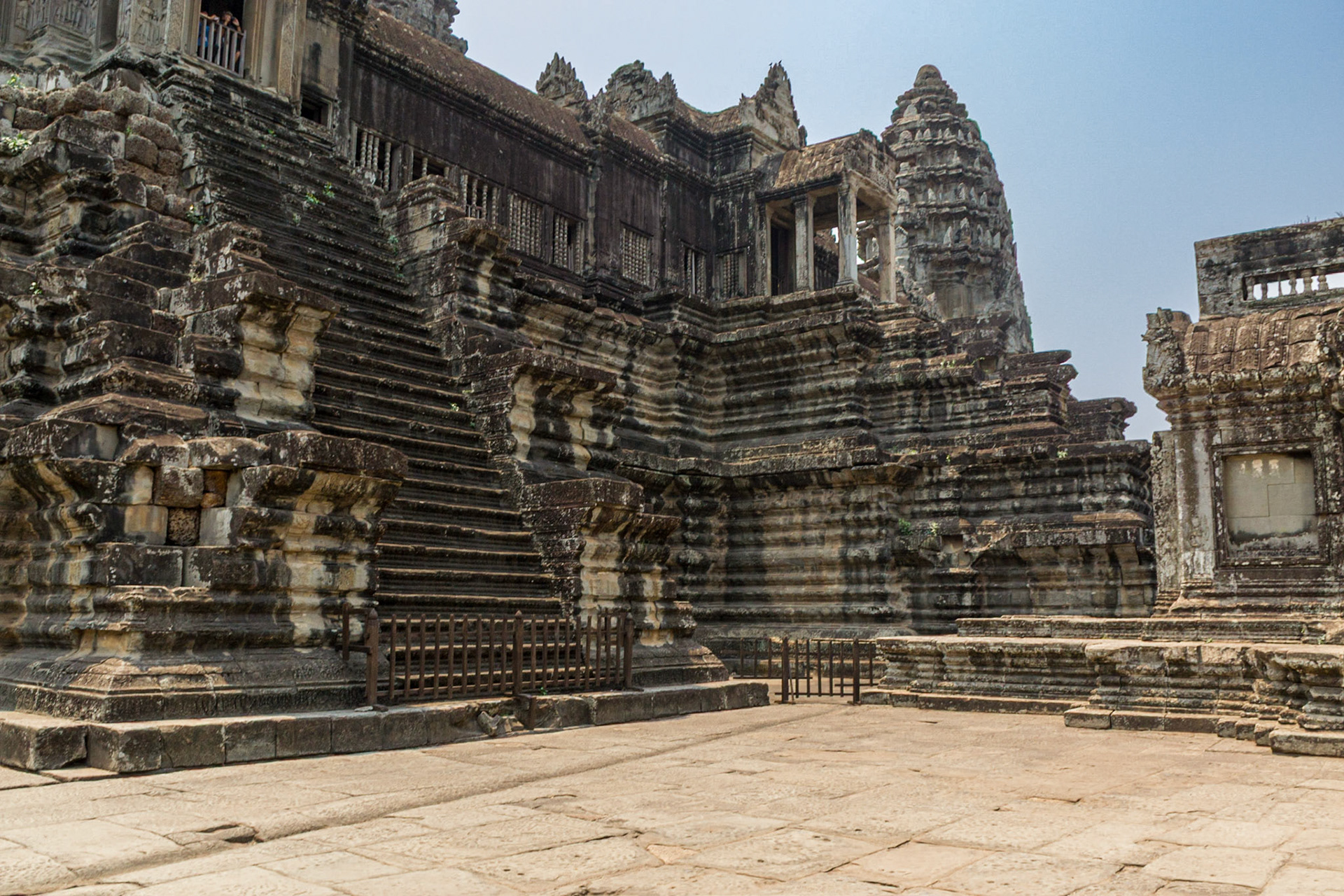
From a distance Angkor Wat appears to be a colossal mass of stone on one level but close up it is a series of elevated towers, covered galleries, chambers, porches and courtyards on different levels linked by stairways.
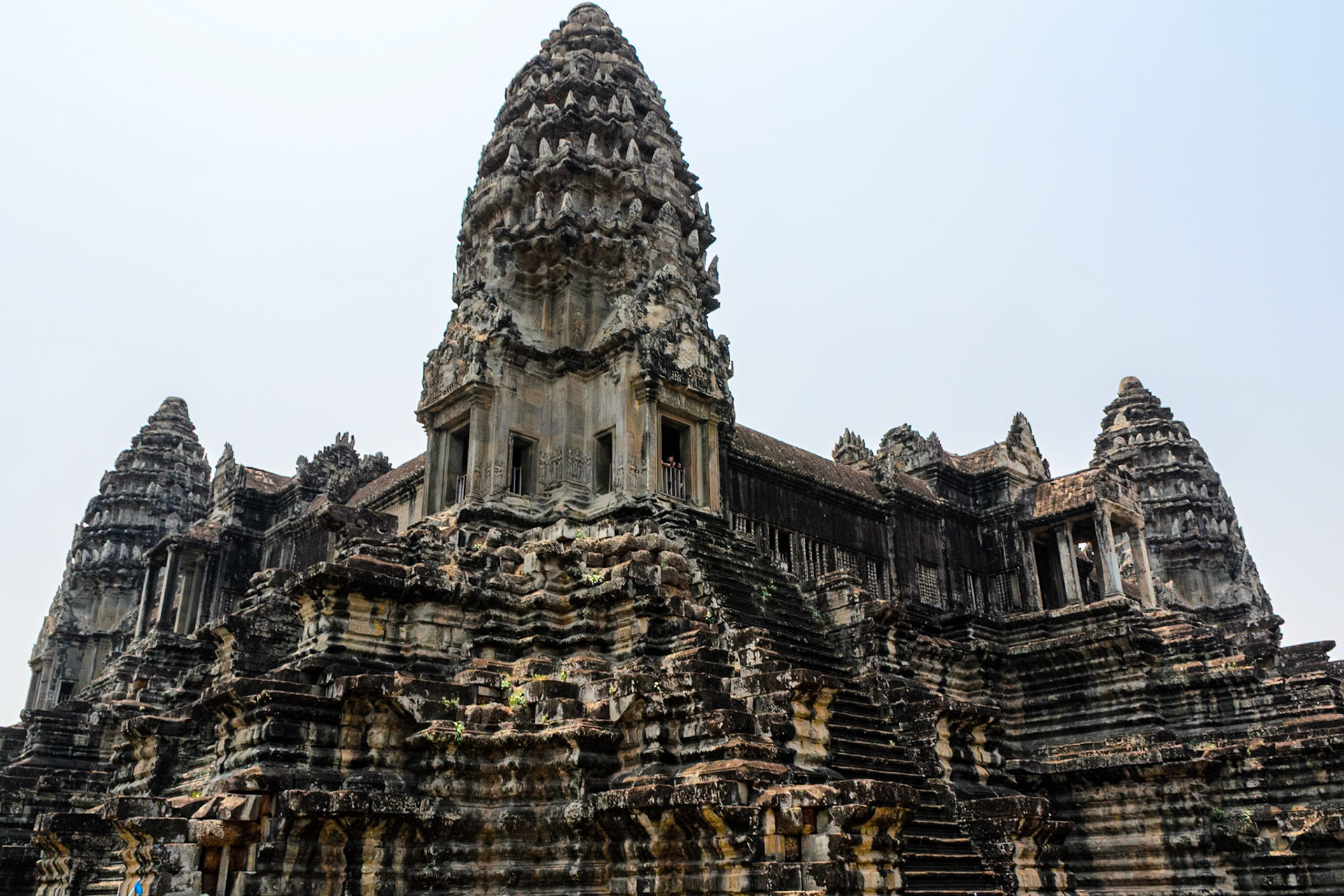
One of the four corner towers of Angkor Wat.
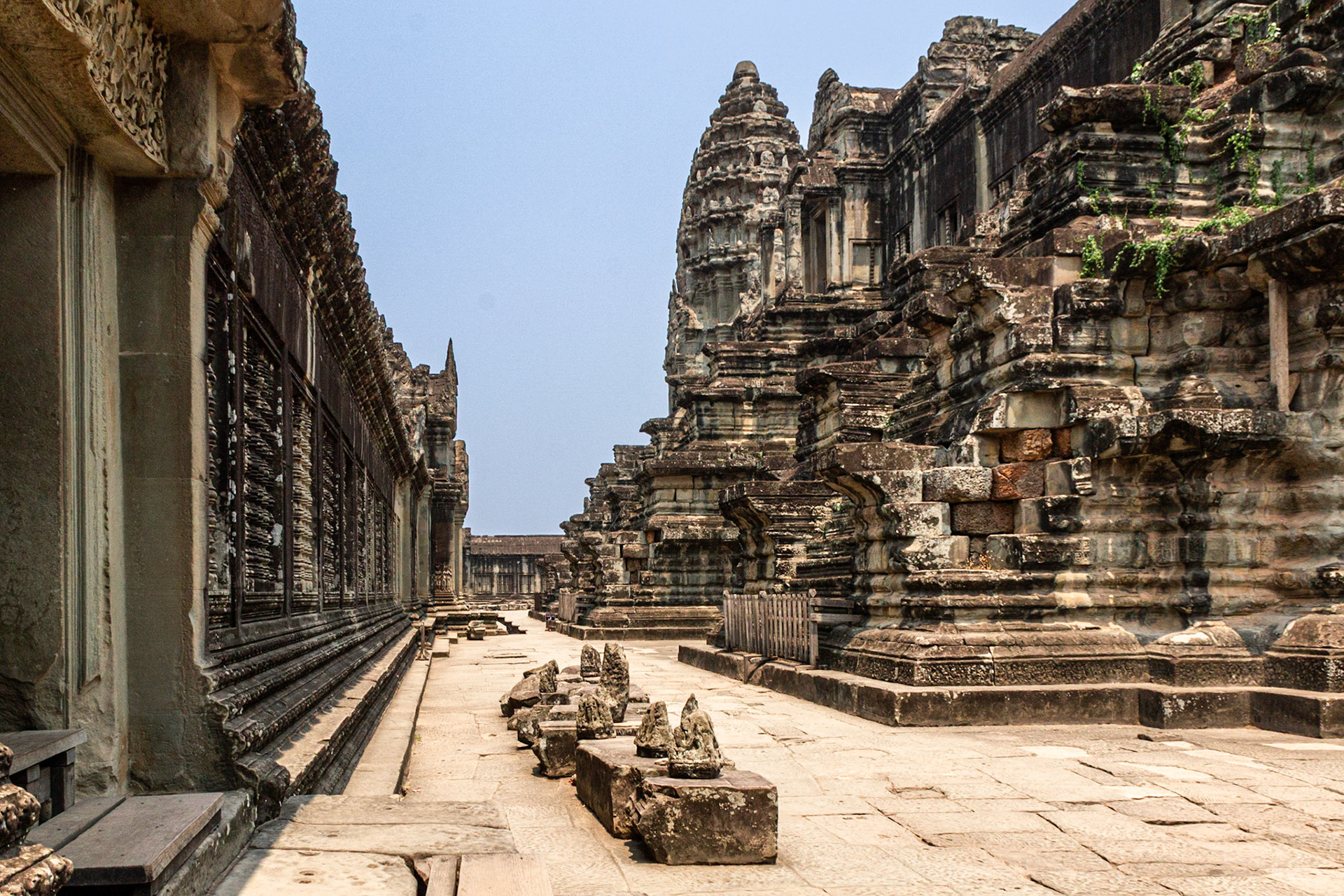
The western perimeter wall of the main monument complex.
Angkor Wat sunrise.
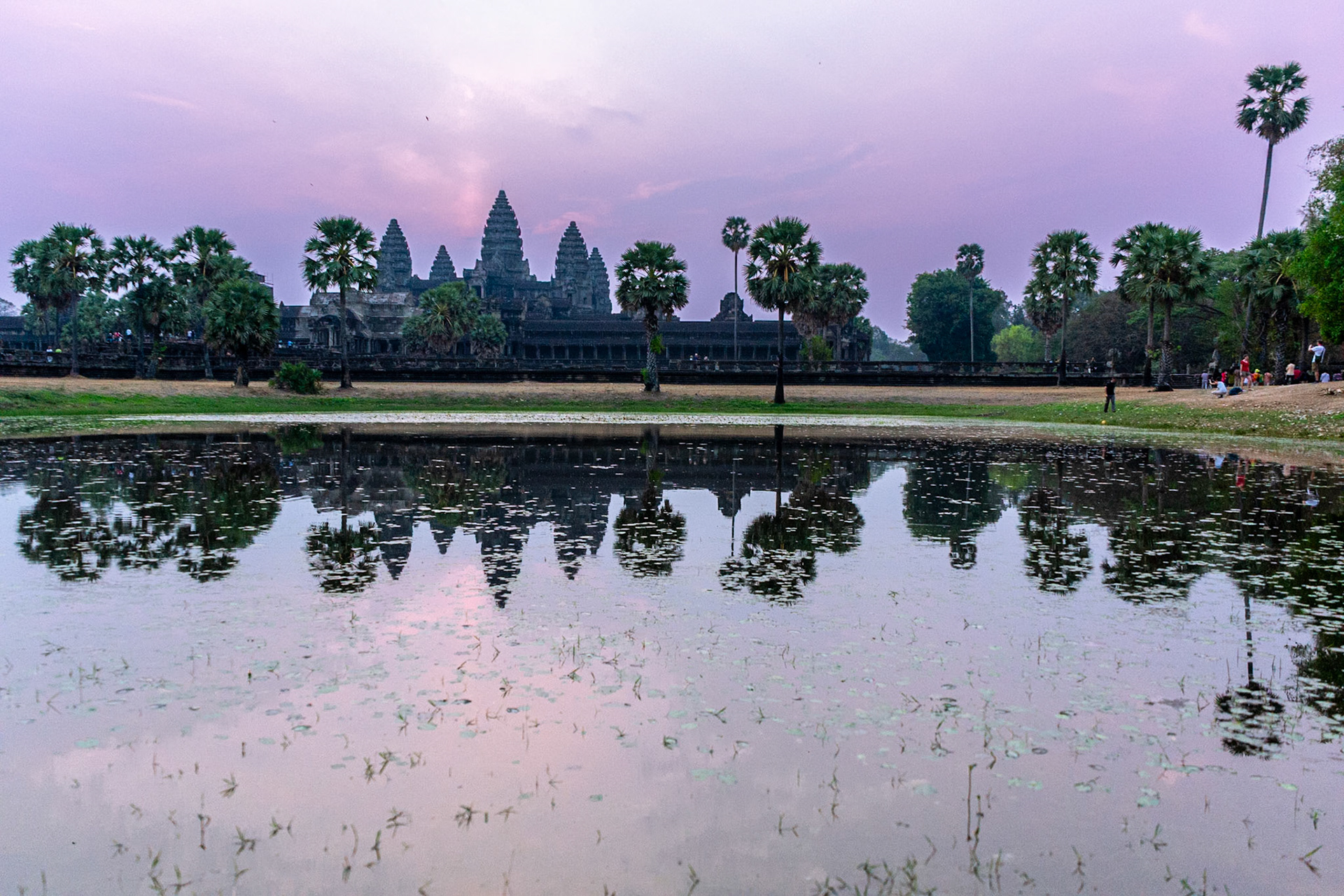
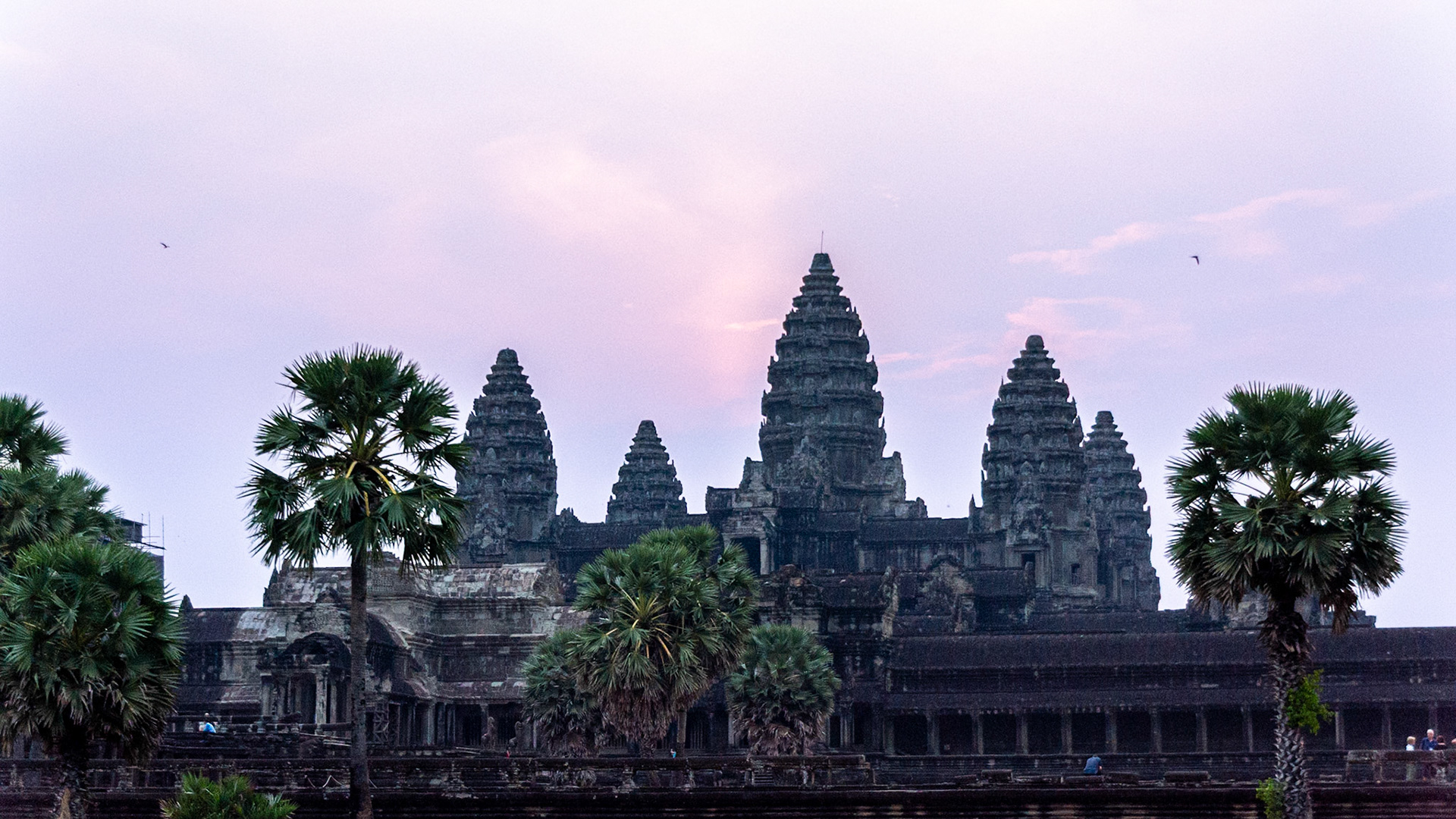
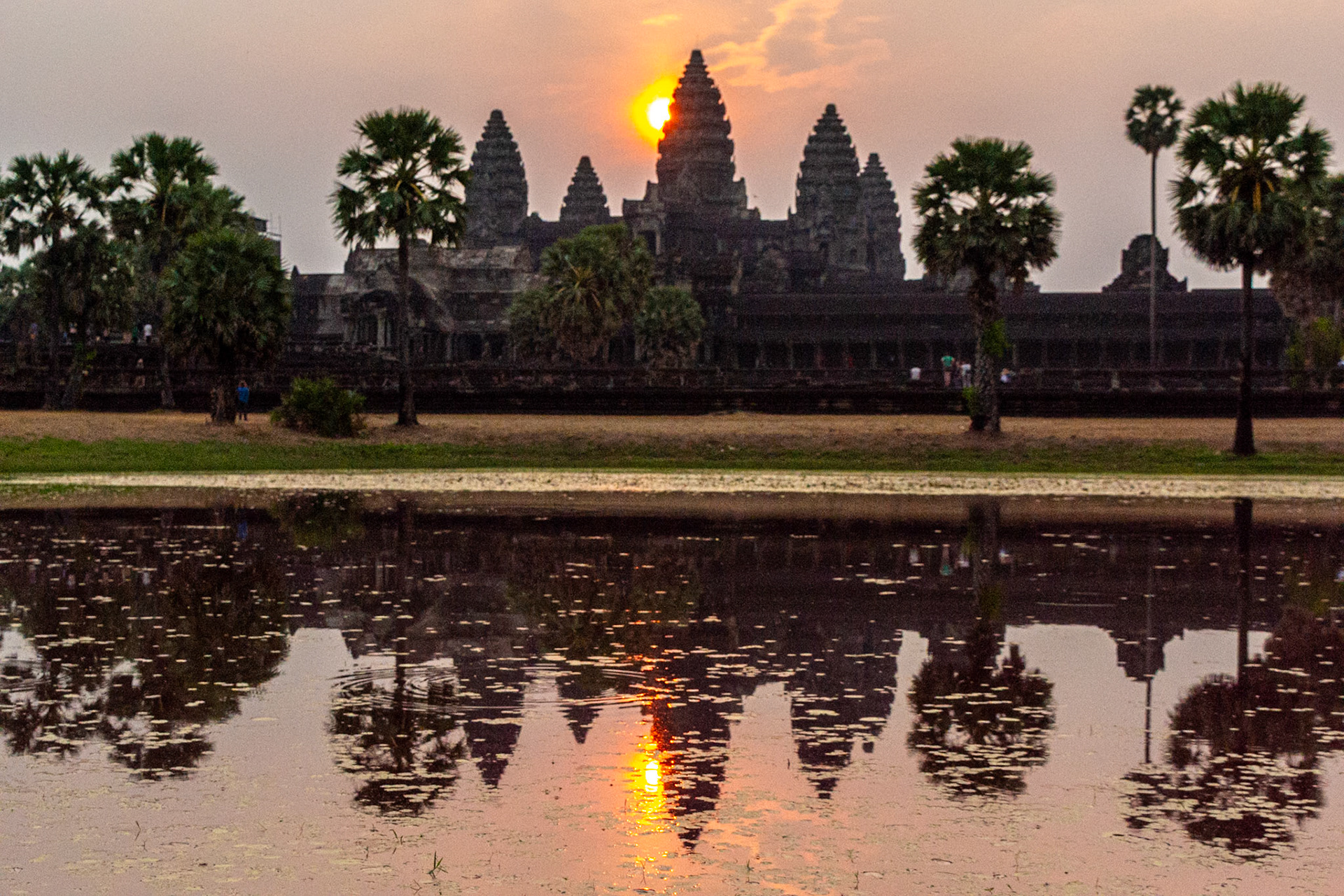
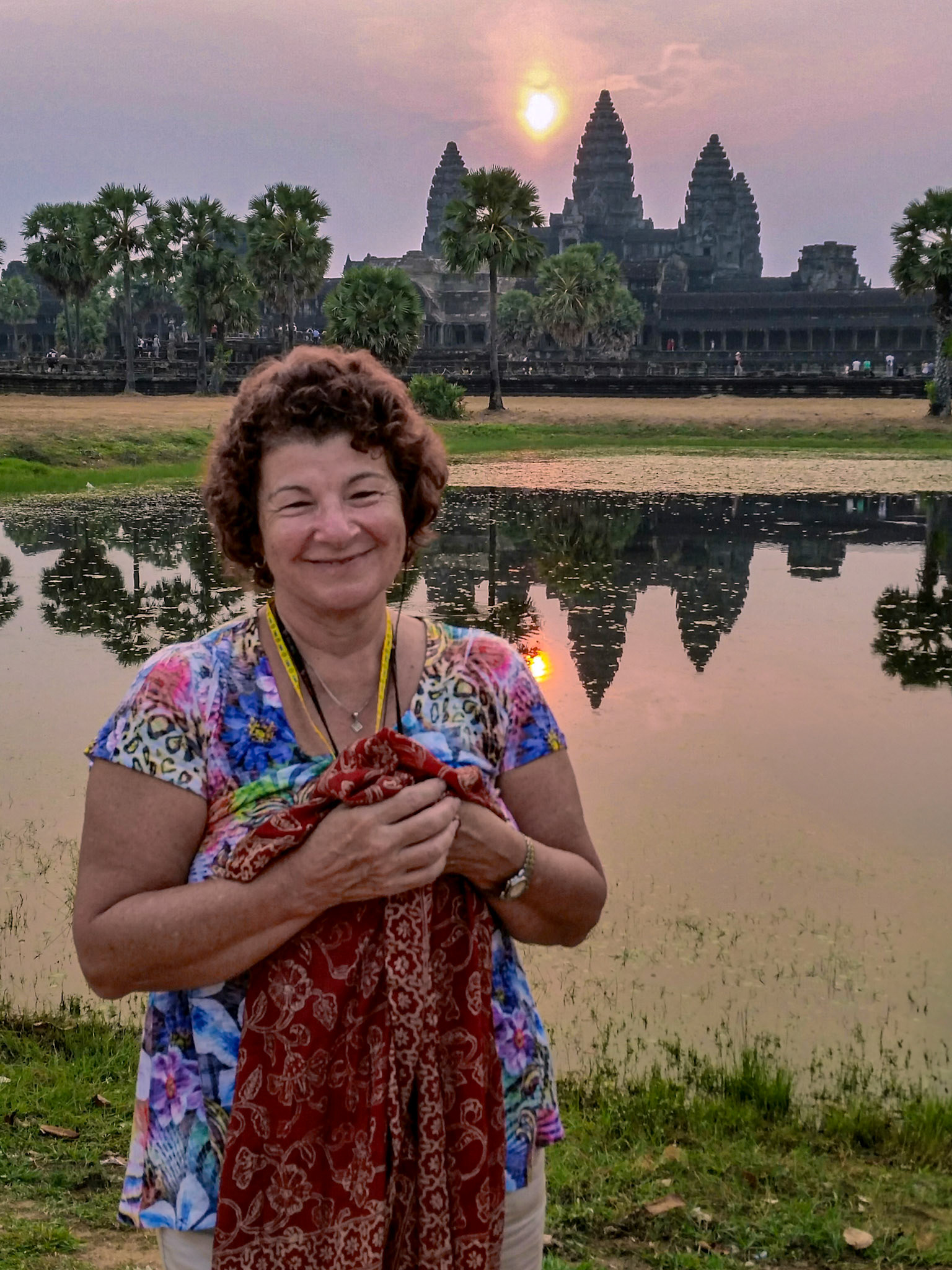
Ta Prohm
Ta Prohm is the modern name of a temple near the city of Seim Reap approximately one kilometer east of Angkor Thom. The temple was built without mortar and after it was abandoned trees took root in the loosened stones. The trees growing out of the ruins and the surrounding jungle have made it one of the most popular sites with visitors to the area. The temple is often referred to as the "Tomb Raider Temple" due to its depiction in the film Lara Croft - Tomb Raider.
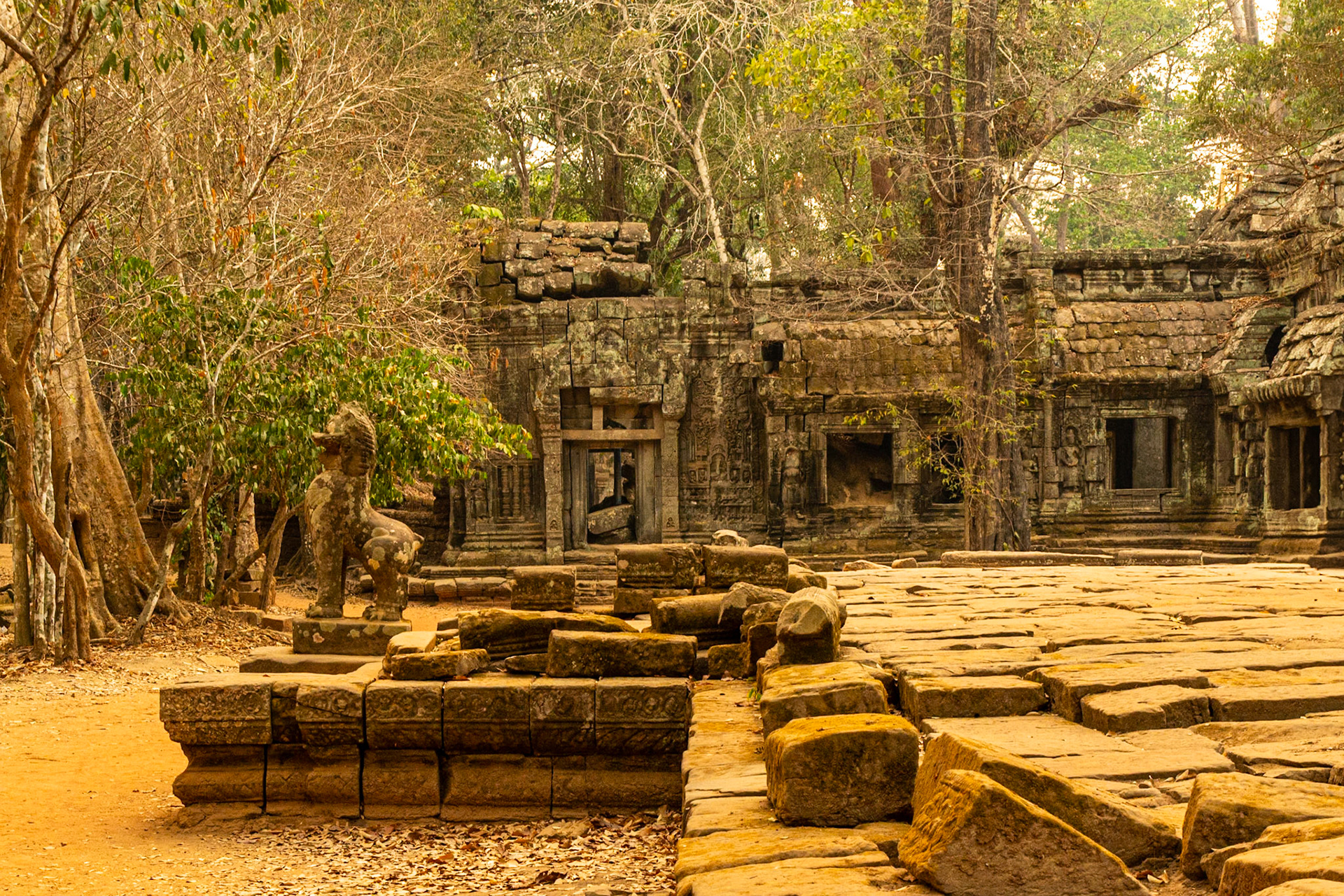
Loose blocks of stone displaced by the ever-encroaching jungle.
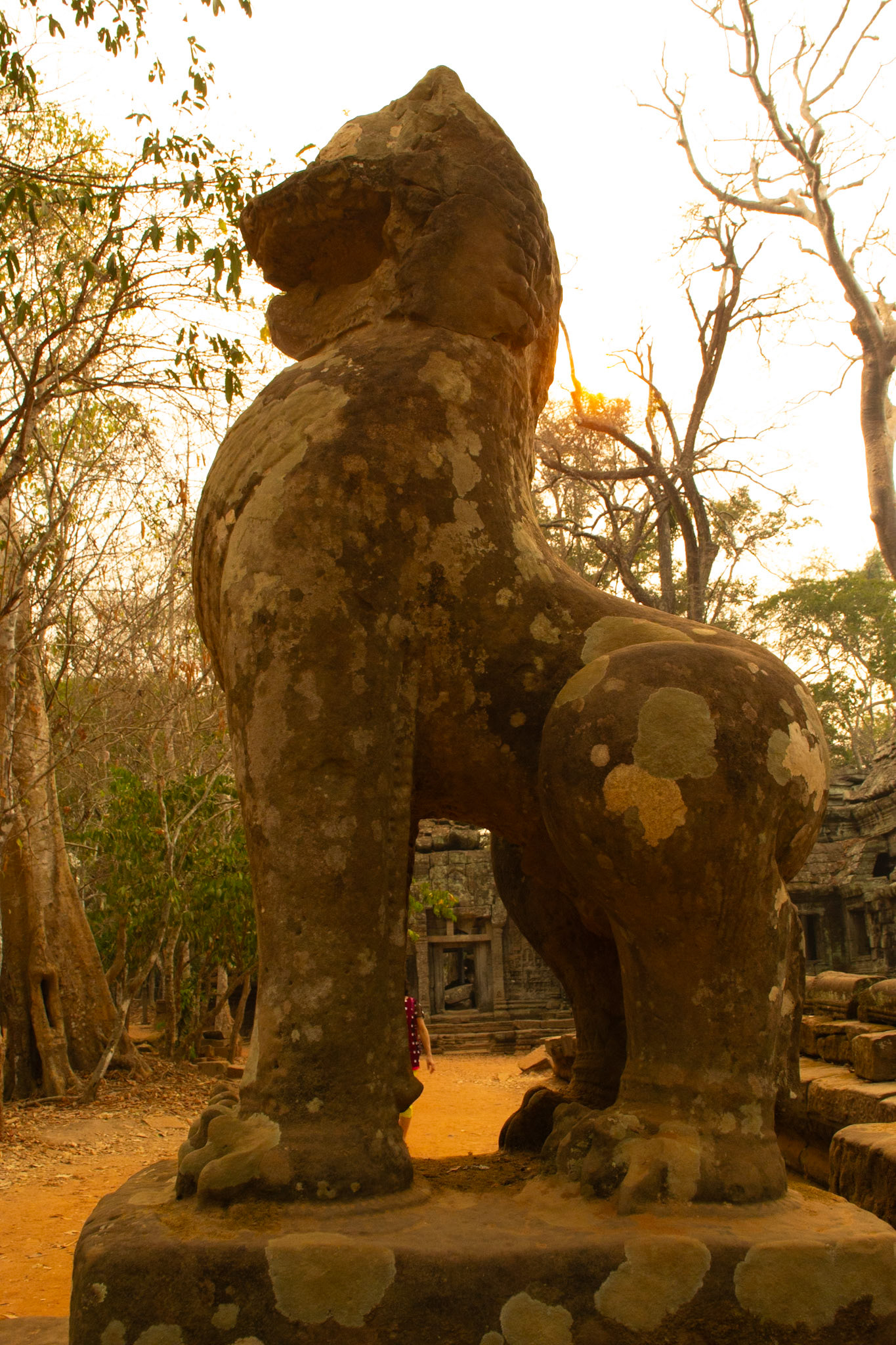
Lion statue.
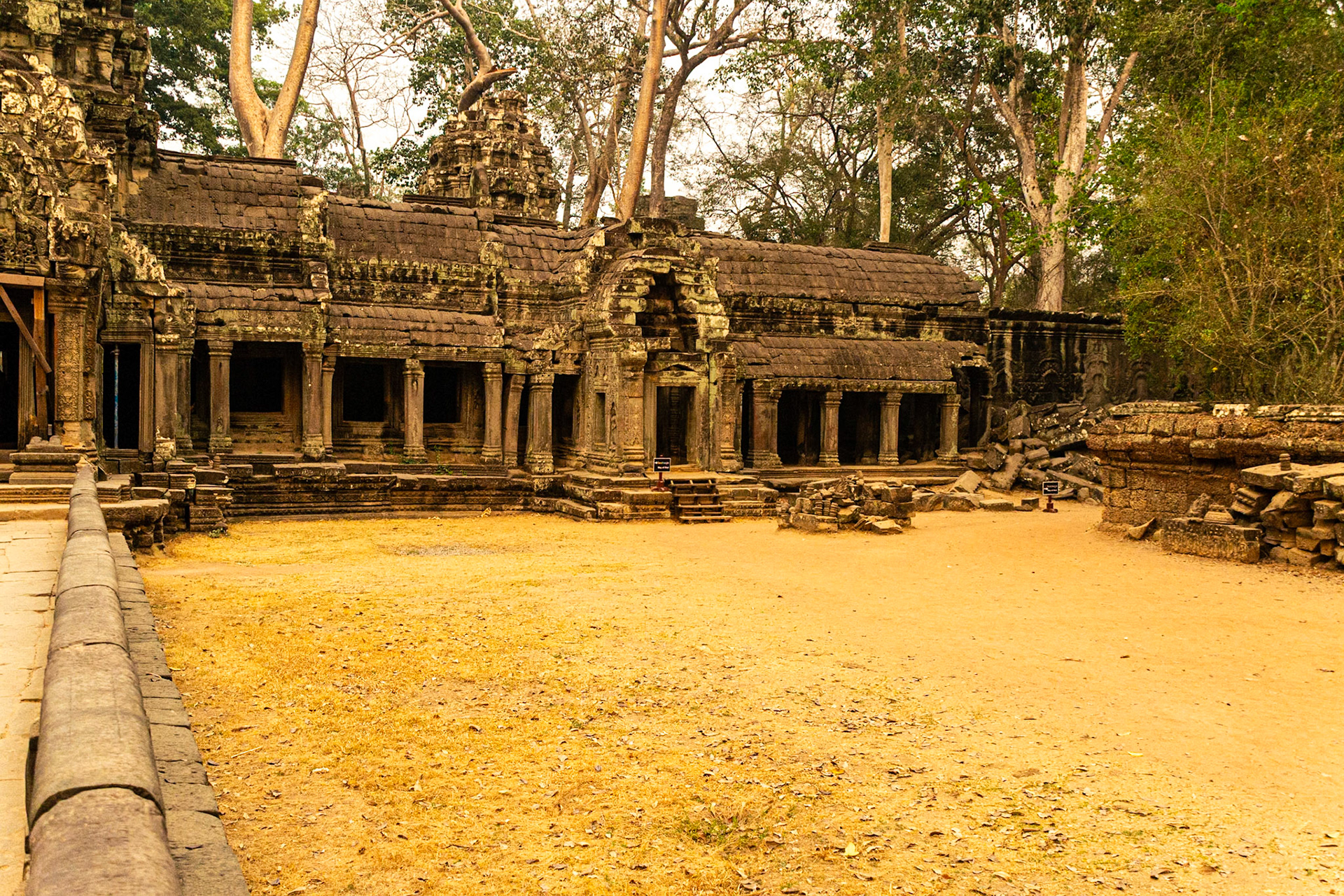
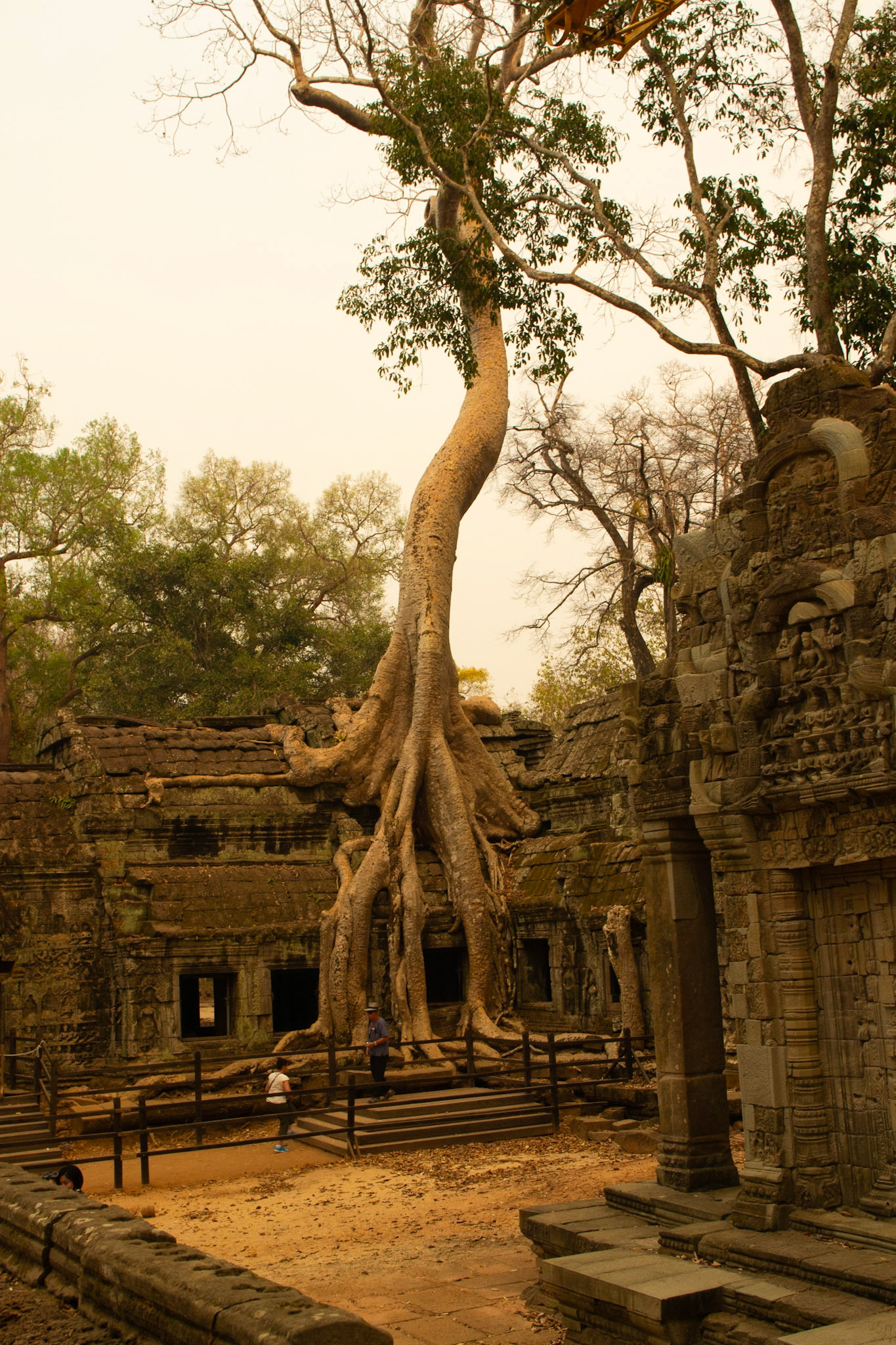
Giants of the jungle straddle the walls.
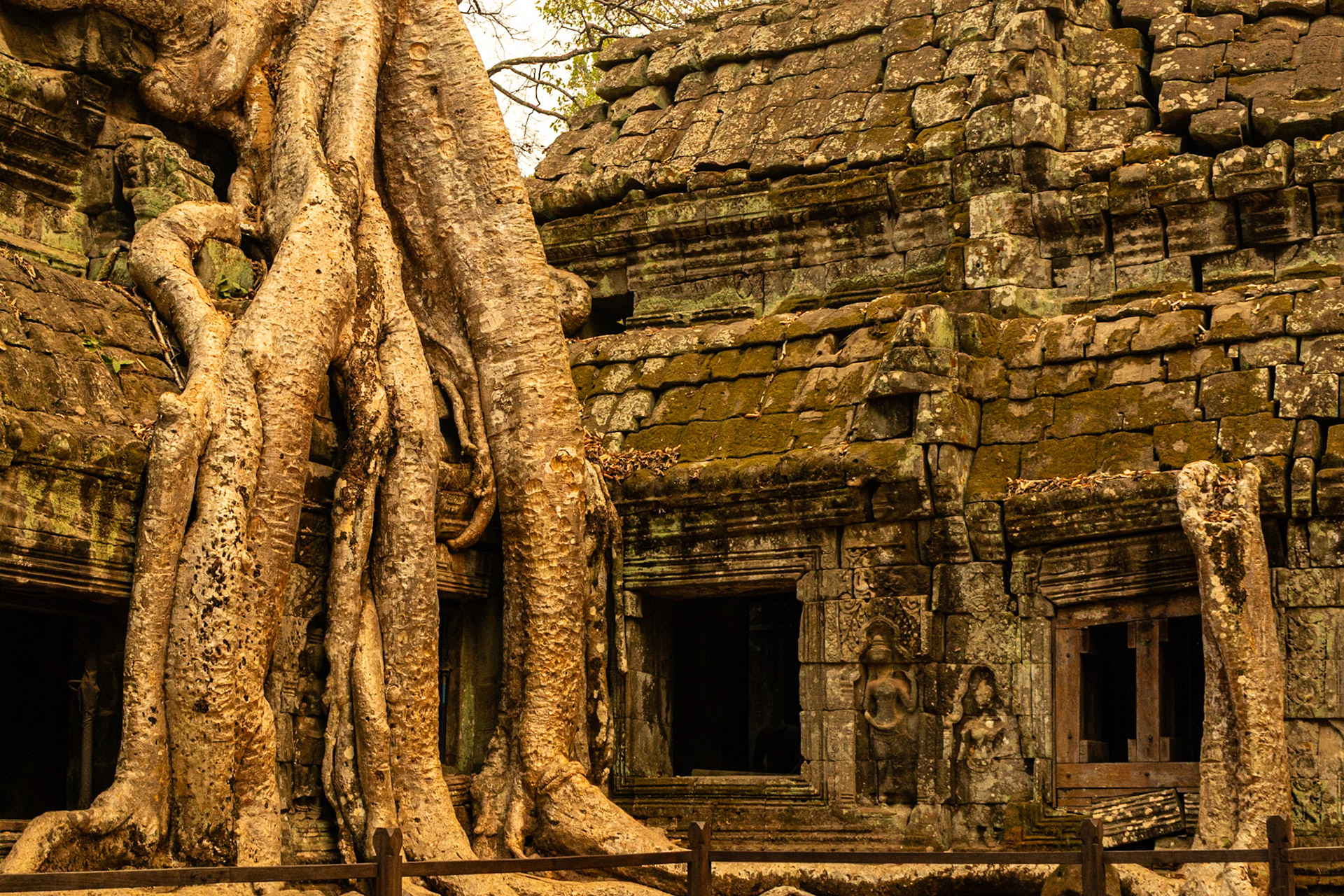
Roots of a Tetrameles, a large deciduous tree found across southern Asia.
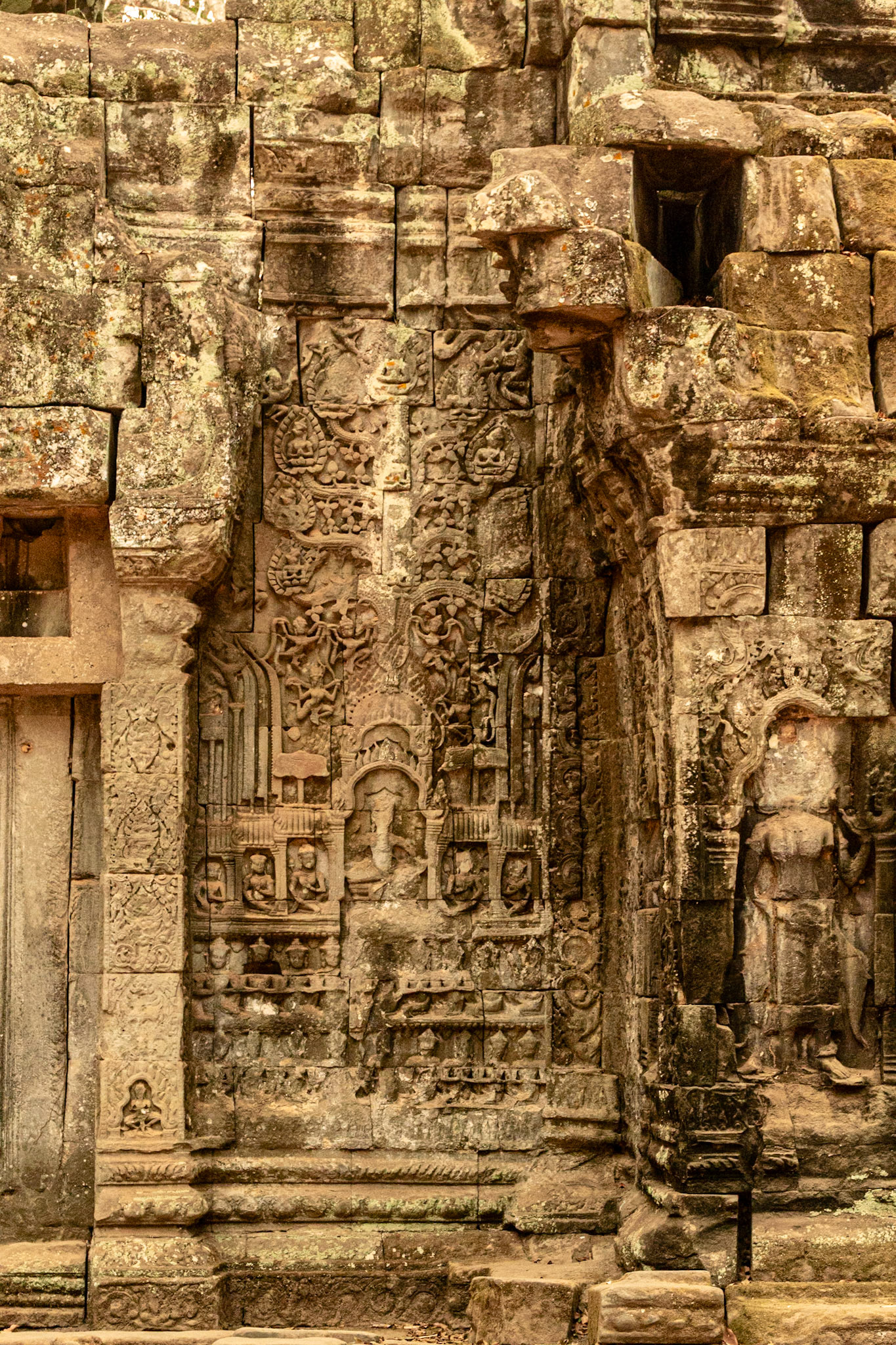
Extensive Bas-relief carvings of the sandstone blocks.
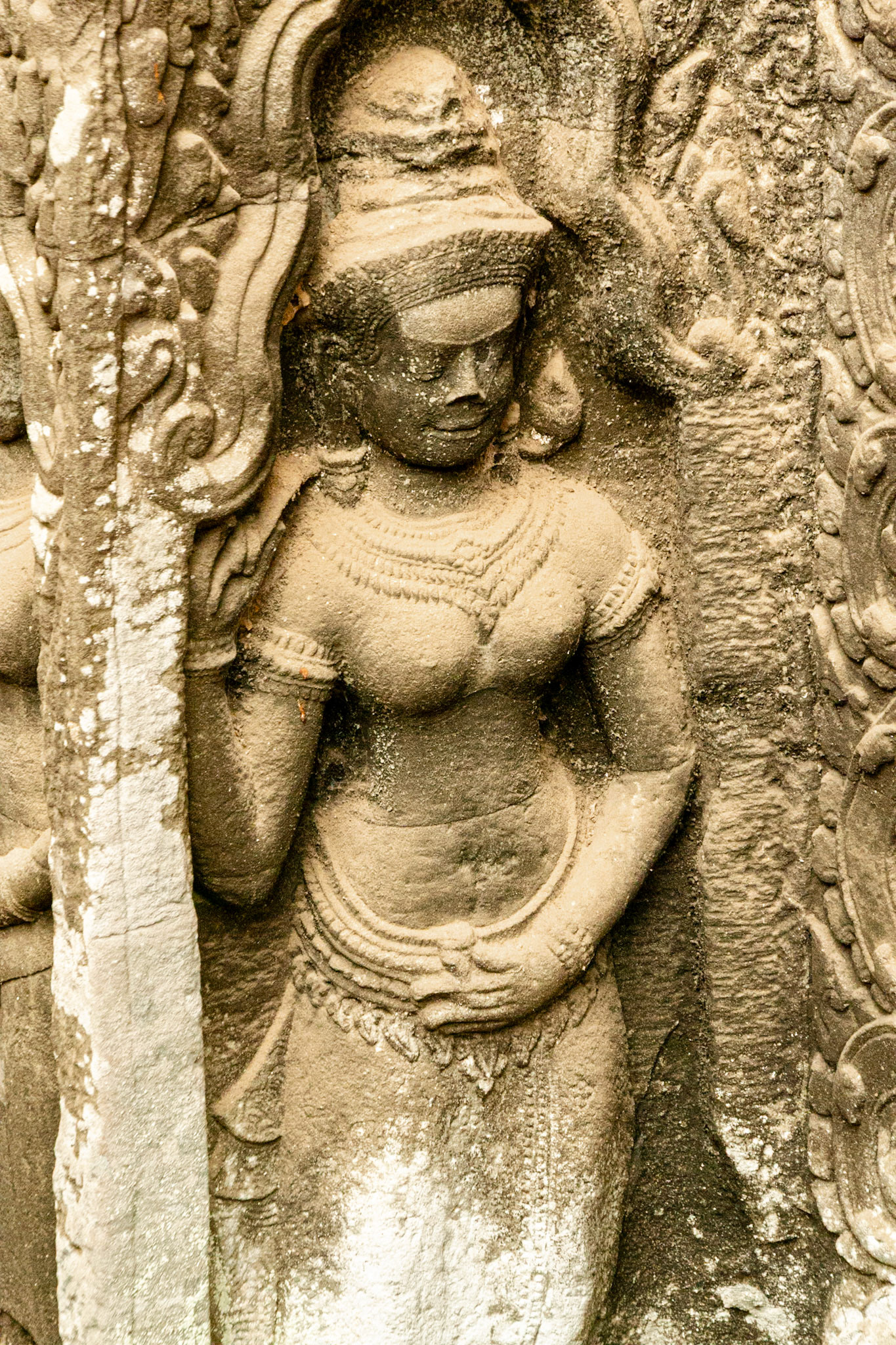
Bas relief carvings in the walls of Ta Prohm.
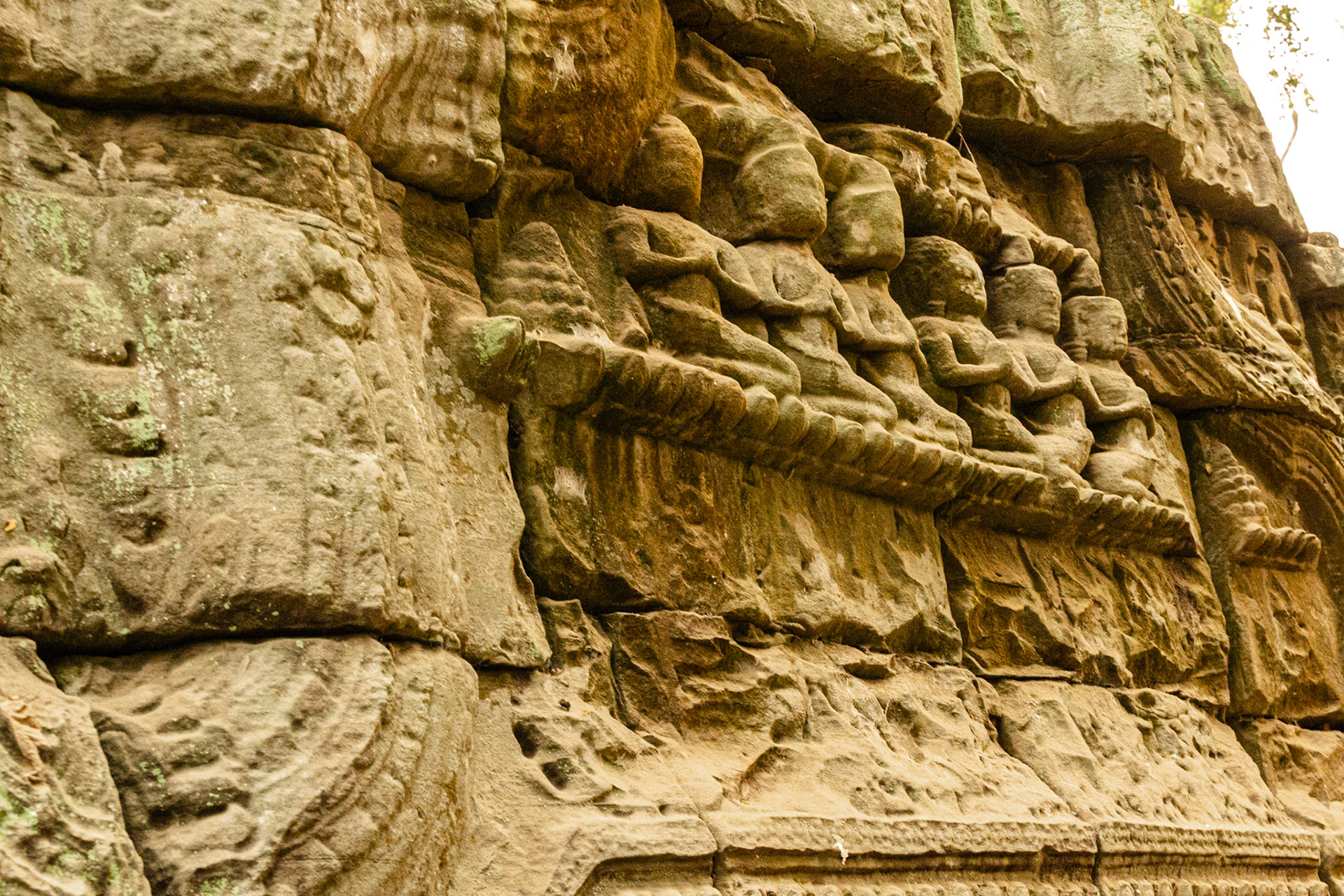
Carved figurines in the sandstone blockwork.
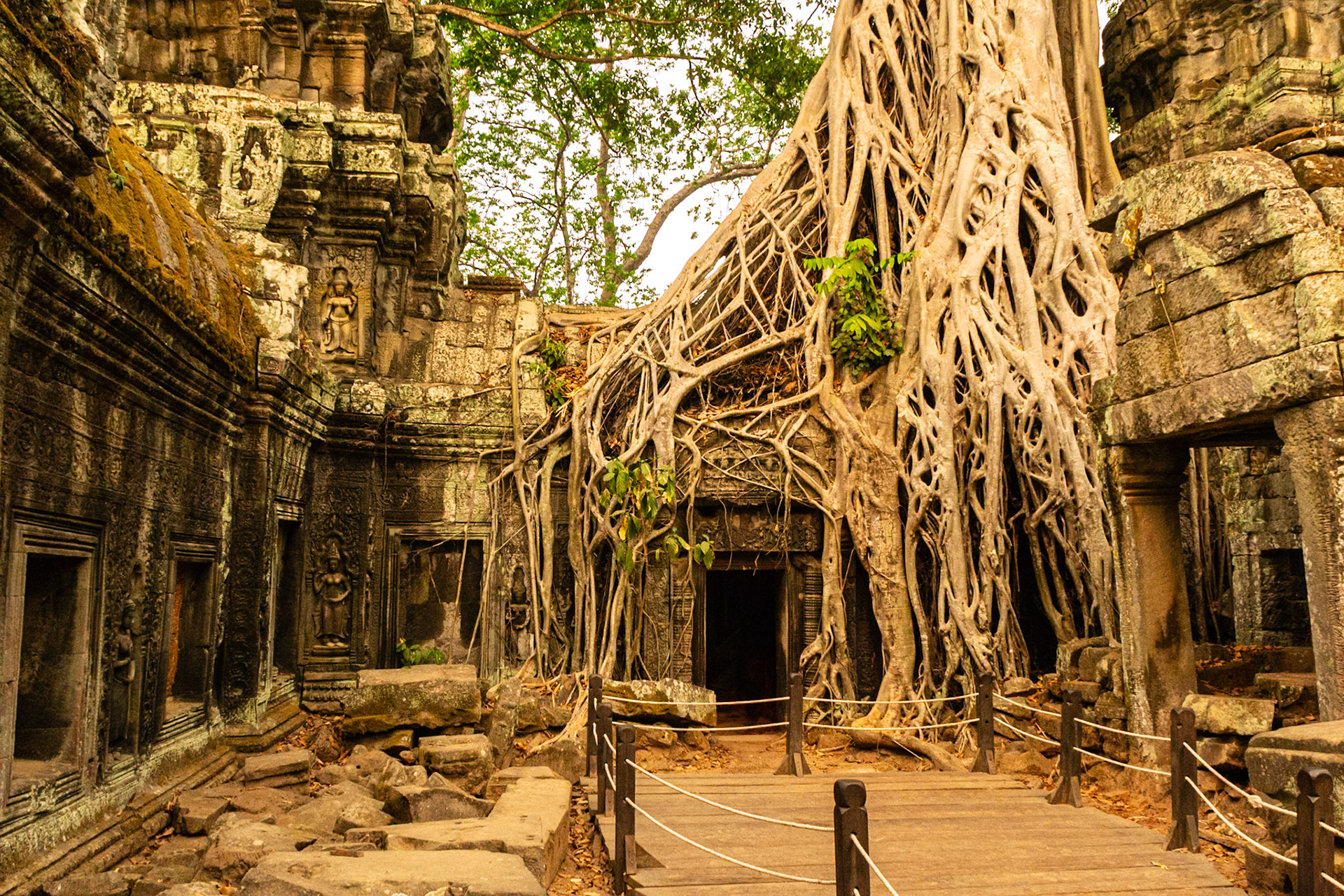
The roped off entrance to a section of the Temple Complex made famous by the movie "Raiders of the Lost Ark". A popular spot for photographs.
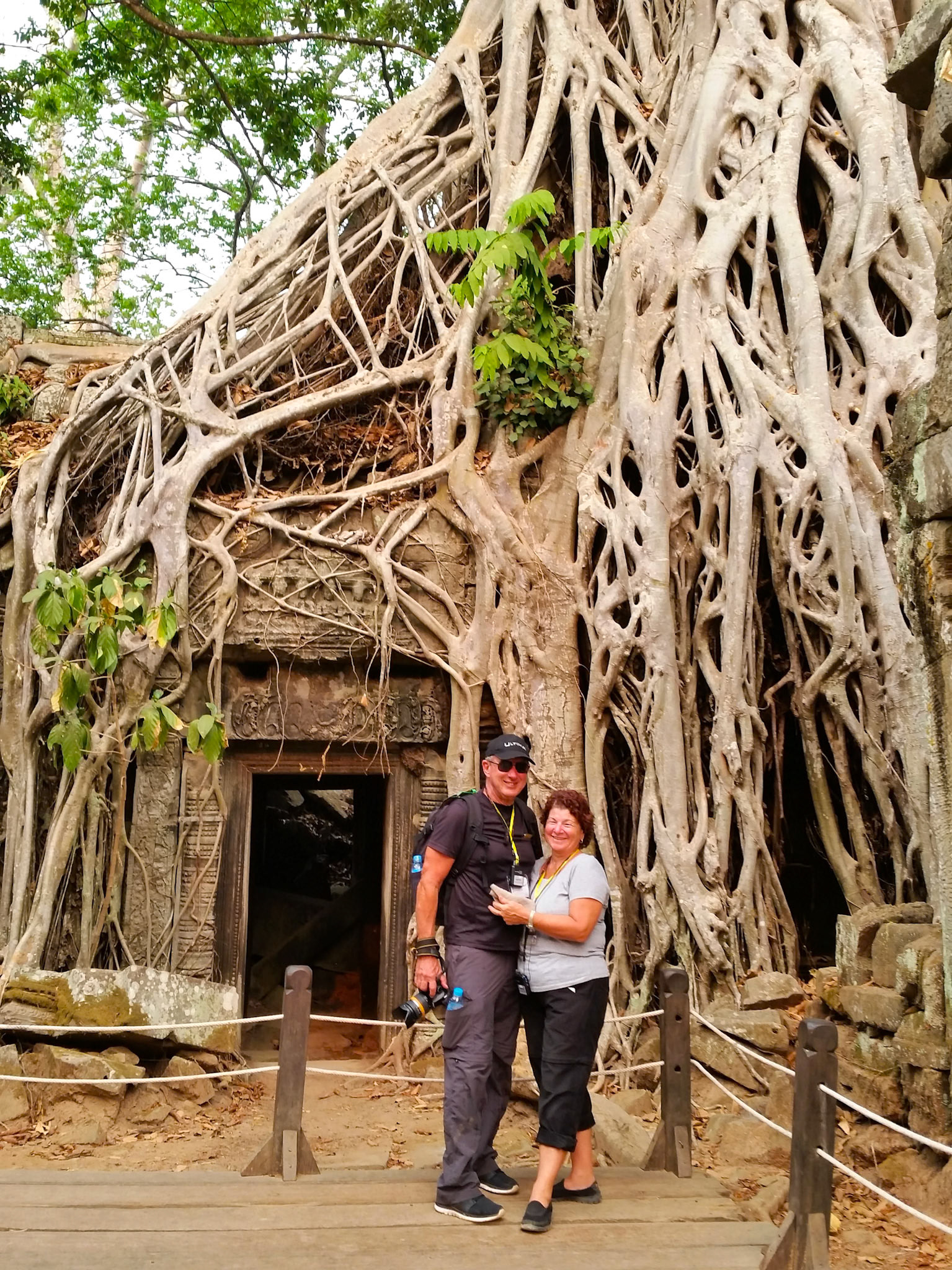
Capturing our memories od Ta Prohm..
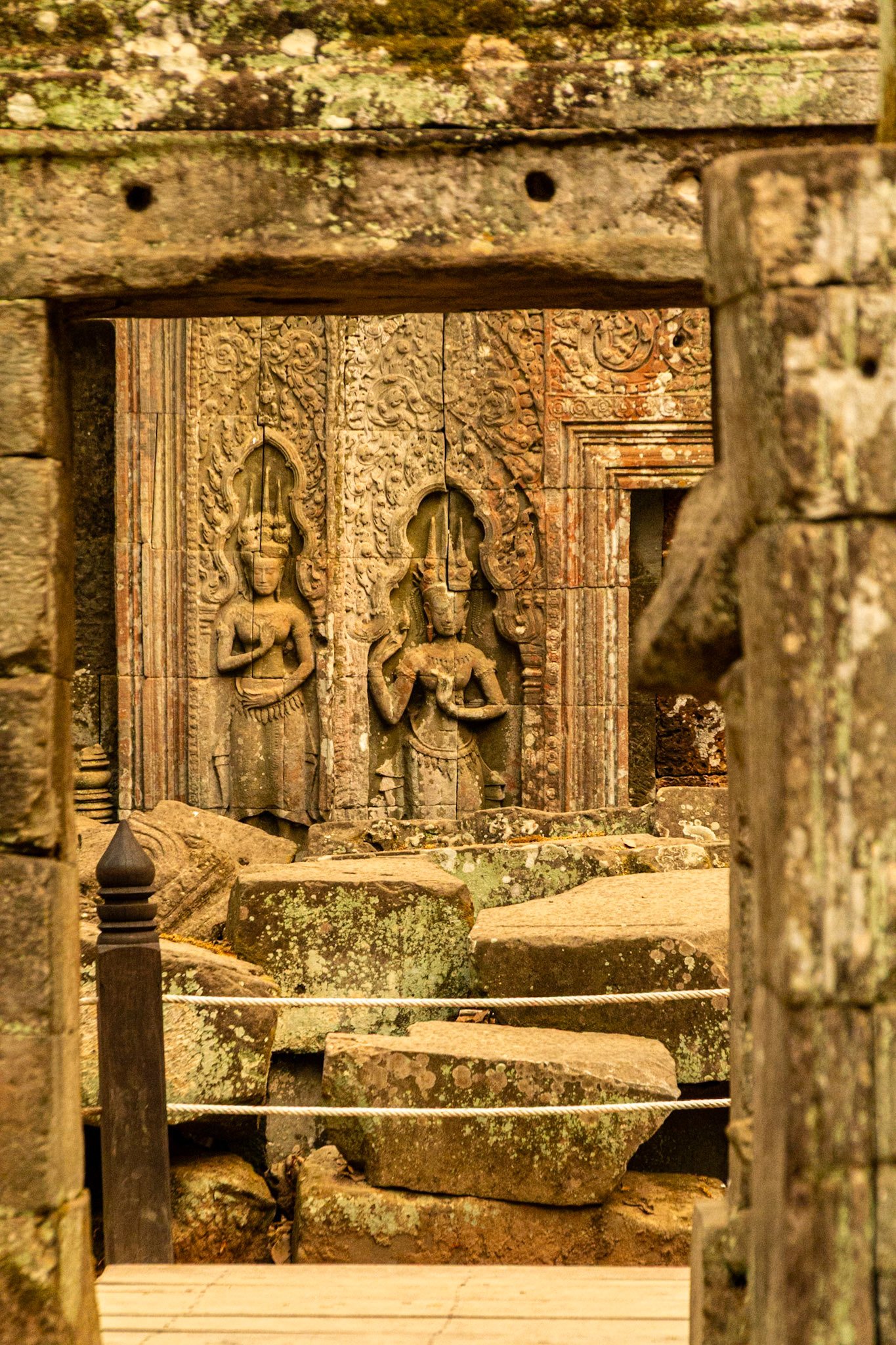
Bas relief Devas intricately carved into sandstone blocks.
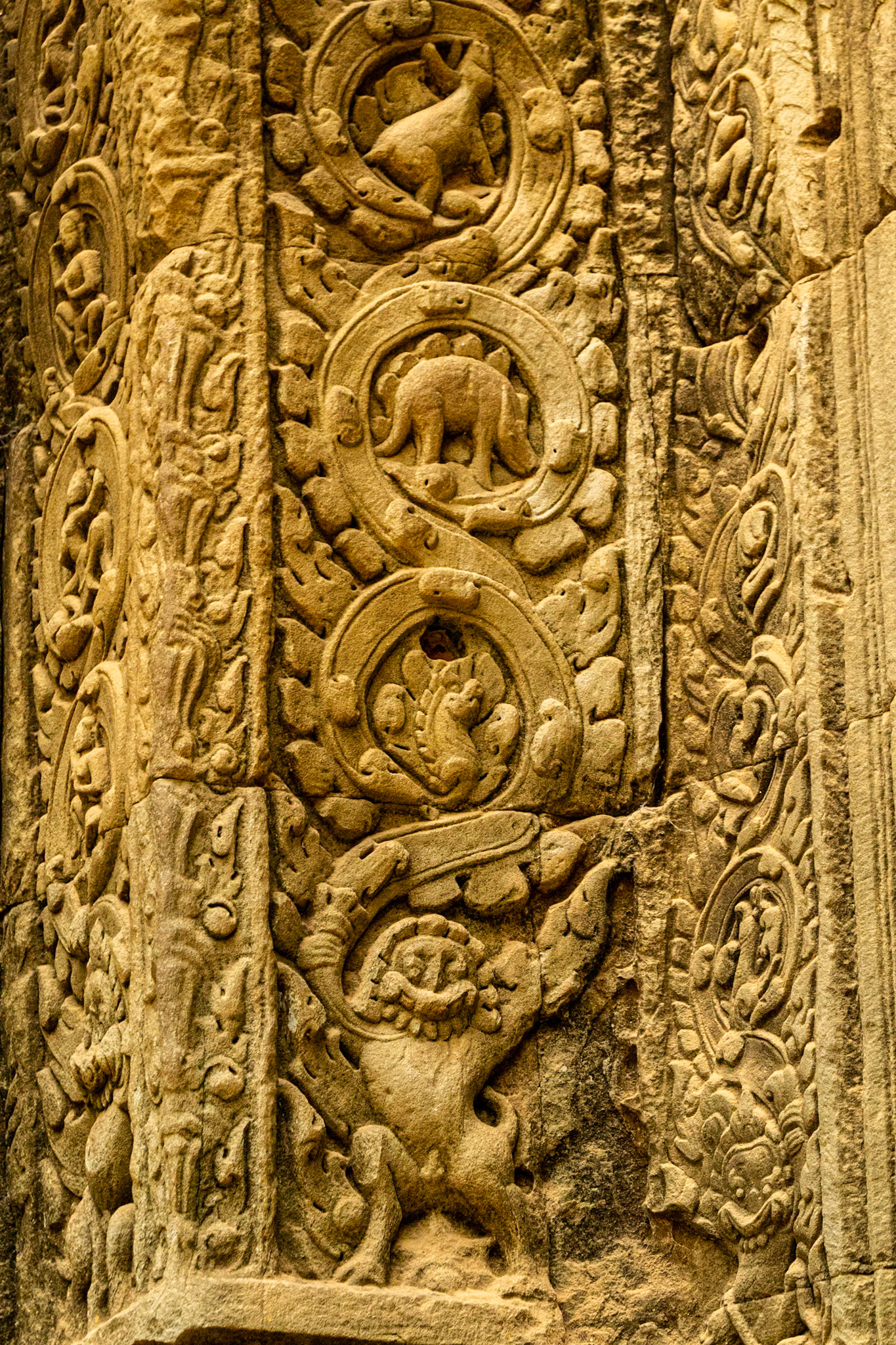
Bas relief figures carved into sandstone blocks.
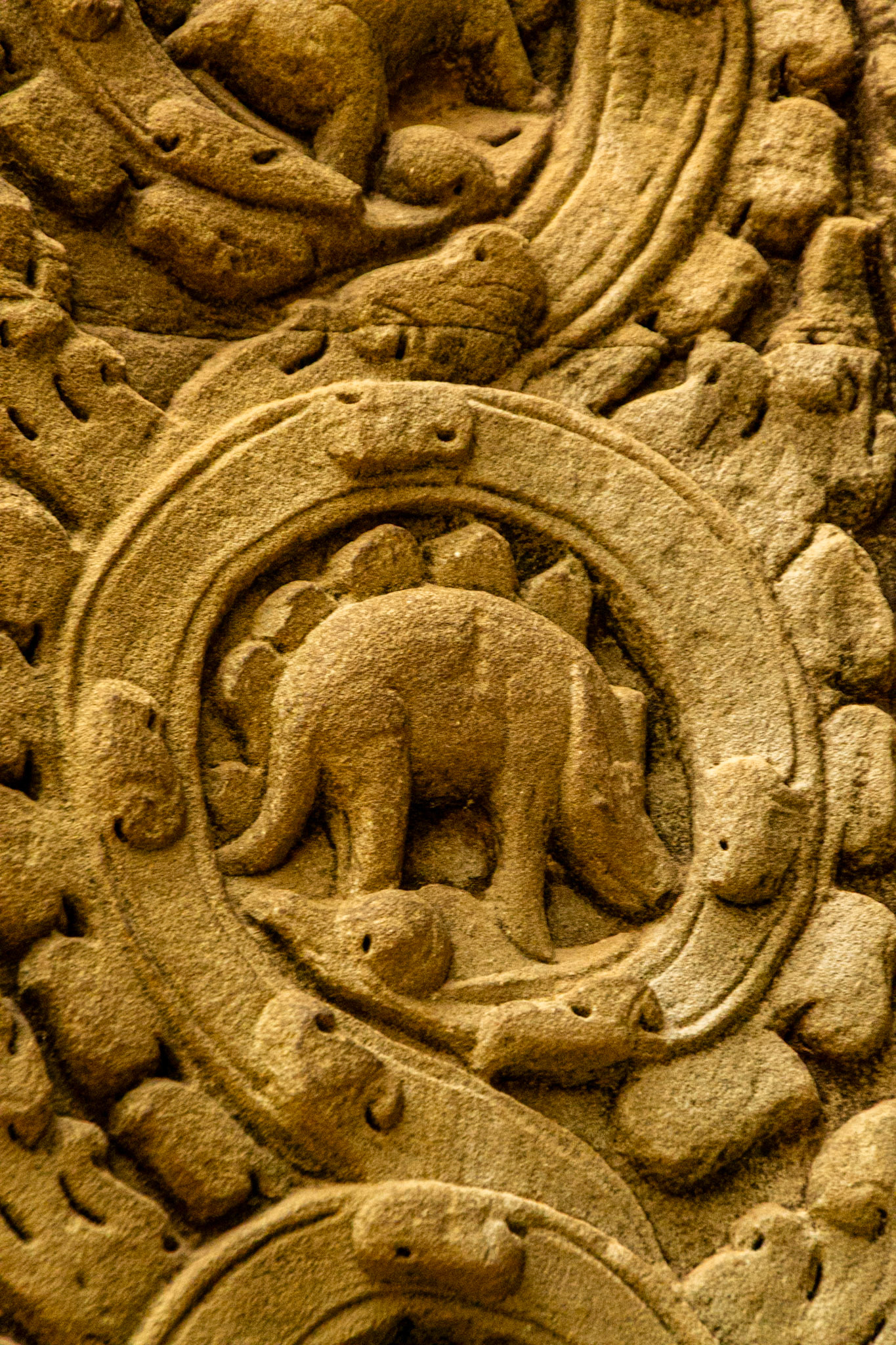
The "dinosaur of Ta Prohm", one of the reliefs of the temple popular in pseudo-science.
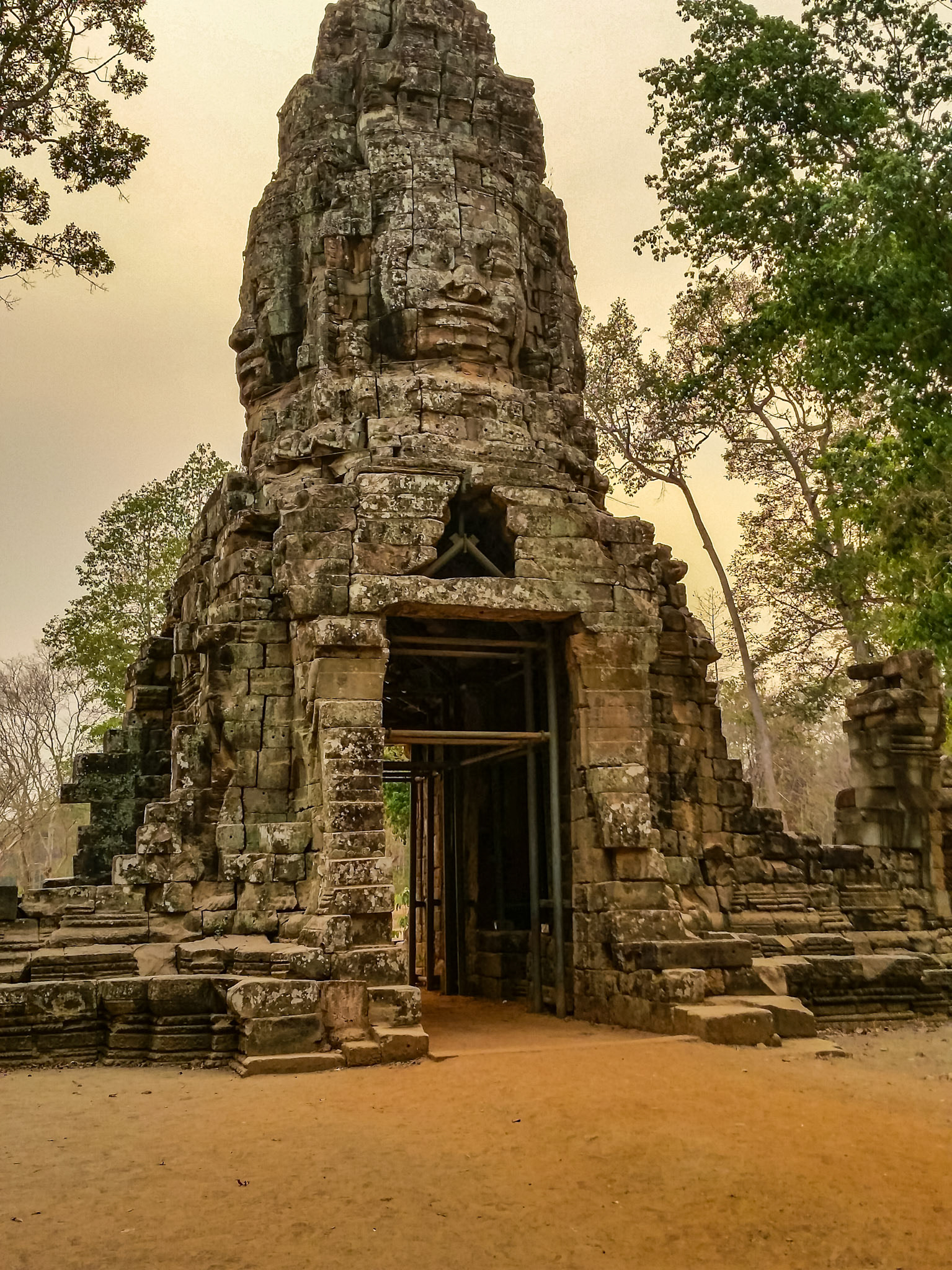
The Western Gate Tower of Ta Prohm backlit by the afternoon sun.
Tonle Sap
Lake Tonle Sap is the largest freshwater lake in South-east Asia. This unique body of water can change drastically in size depending on the seasons. In the rainy season the lake is massive when flooded with water from the Mekong River. In the dry season the lake shrinks to such a degree that its flow reverses to deposit water back into the Mekong via the river Tonle Sap. The lake can be up to 16,000 sq Km in area and nine meters deep however we encountered it during an exceptionally dry period when the water levels were extremely low, somewhere between 1 to 2 meters deep. The fishing families who make their living on the lake live in floating villages which move with the changing water levels.
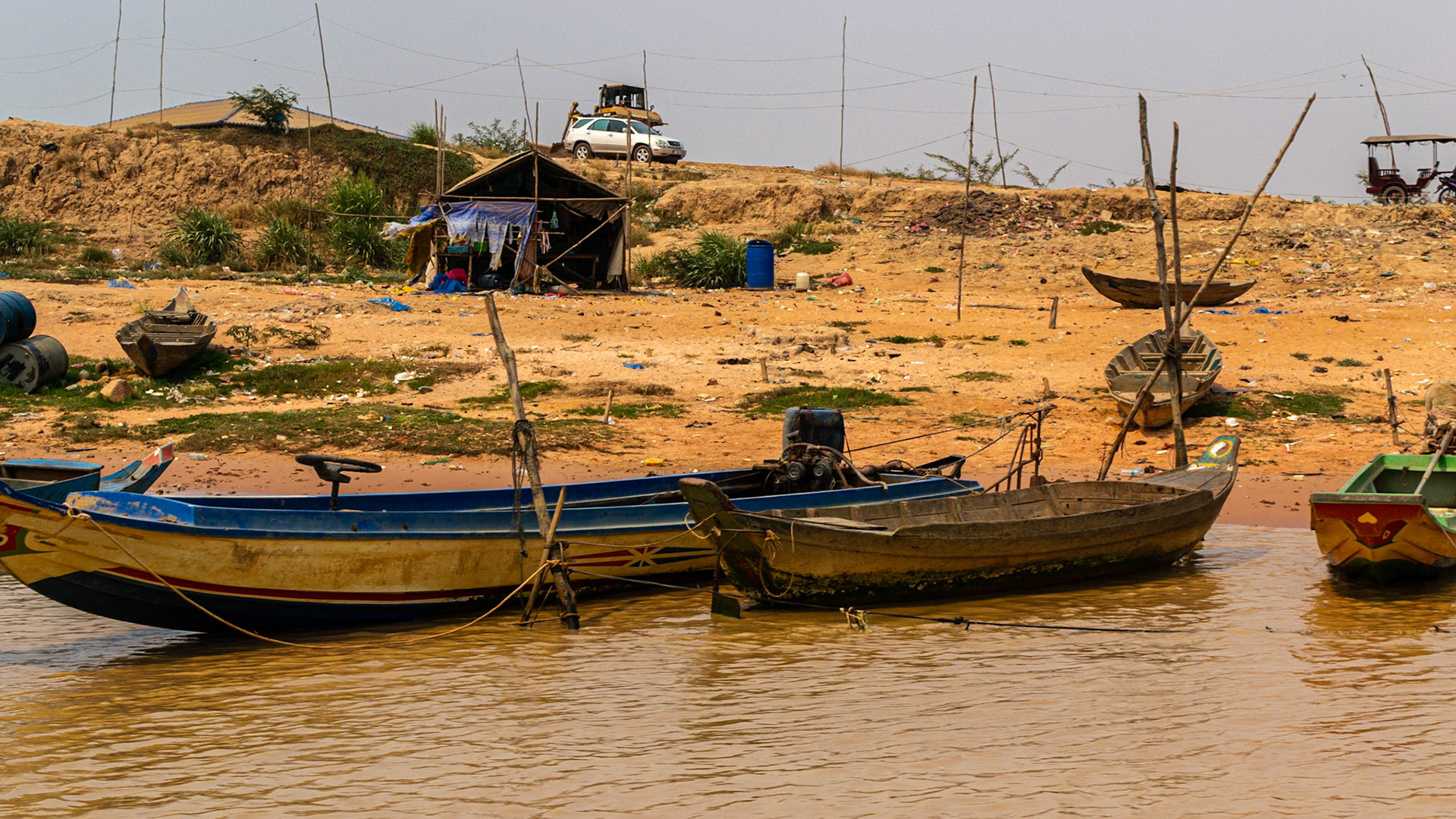
Temporary Shanty houses pop up in what was once the river bed.
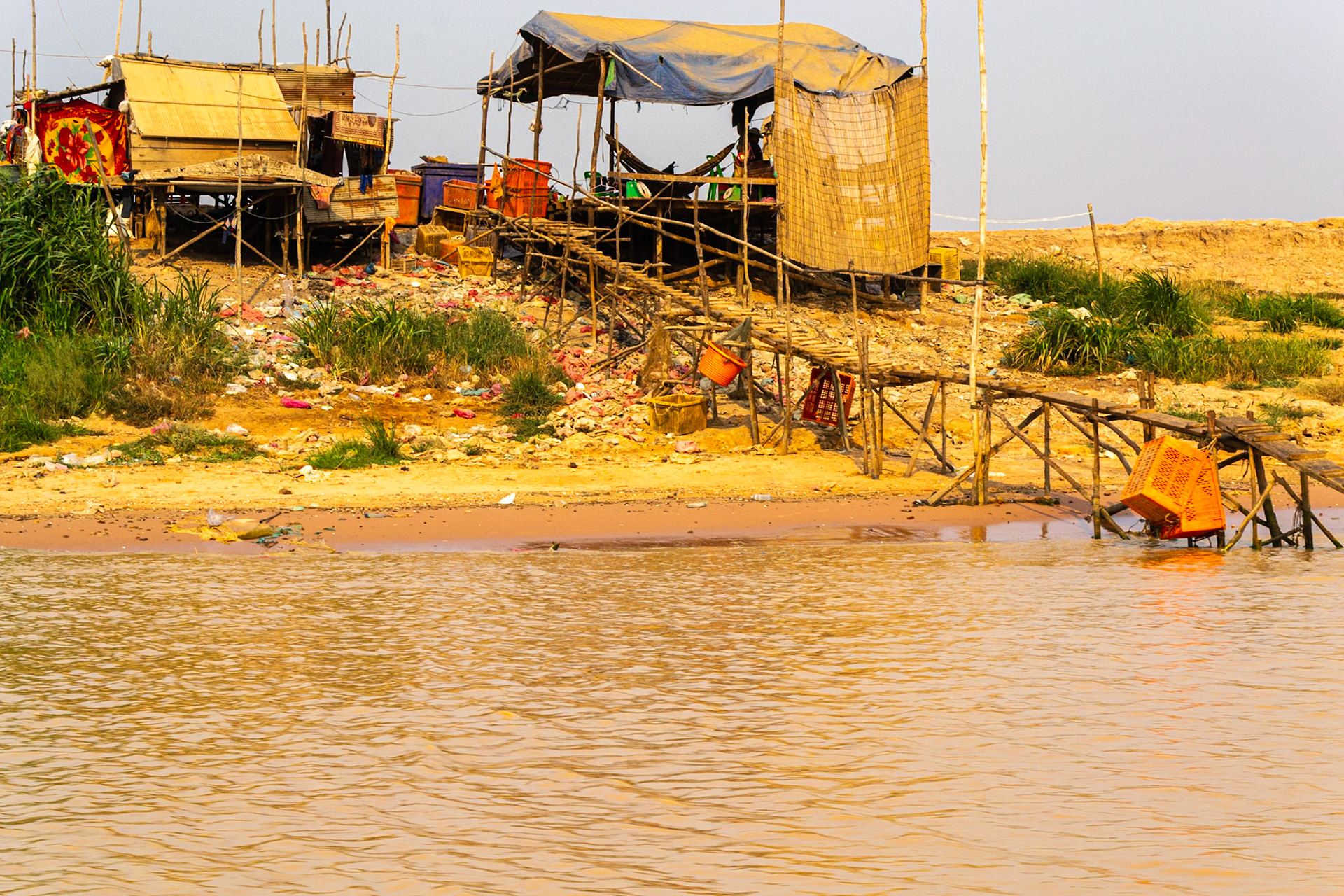
Basic, rickety shelters open to the elements appear to be the norm in this hot, humid environment.
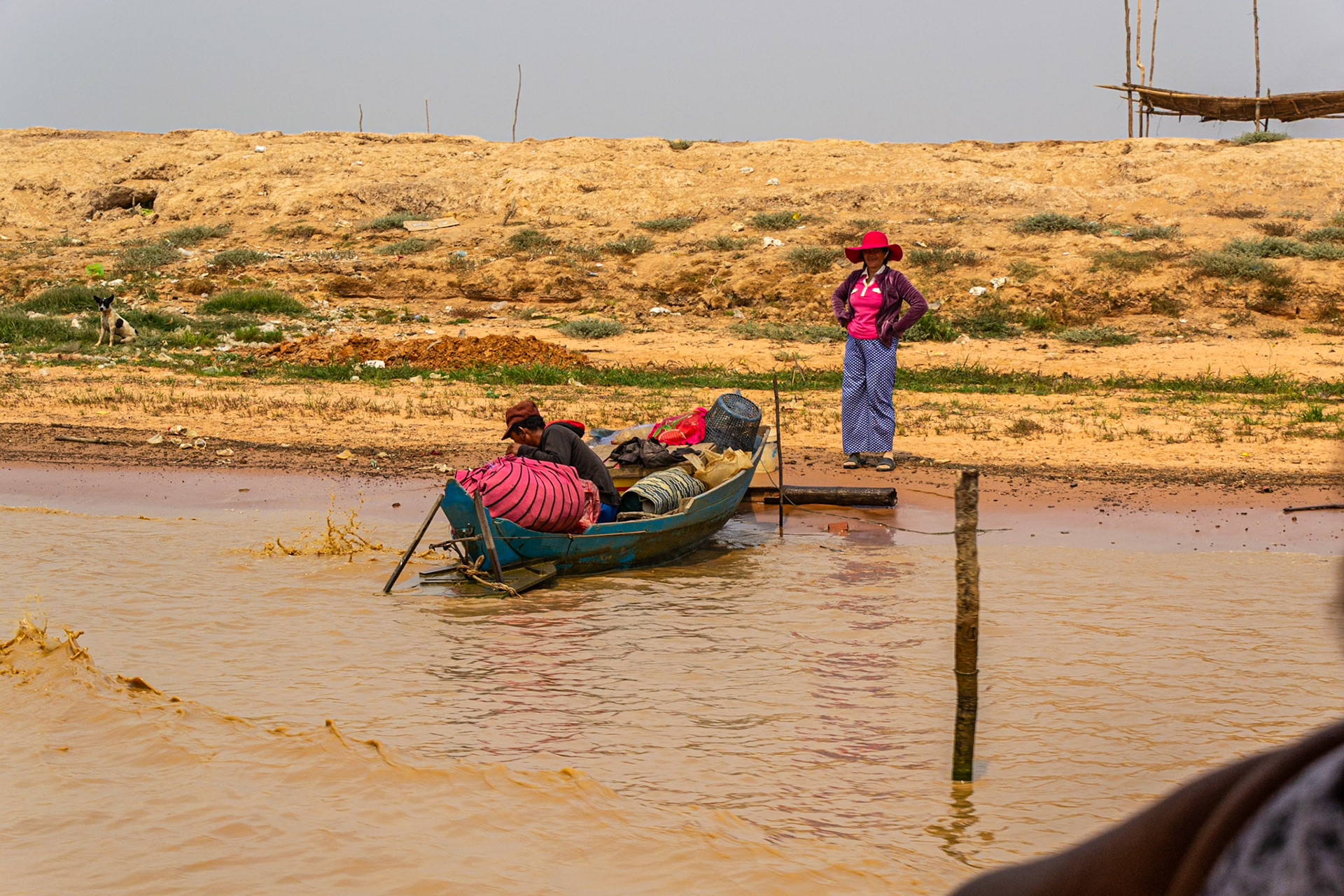
Local people carry on with their lives despite the harsh conditions.
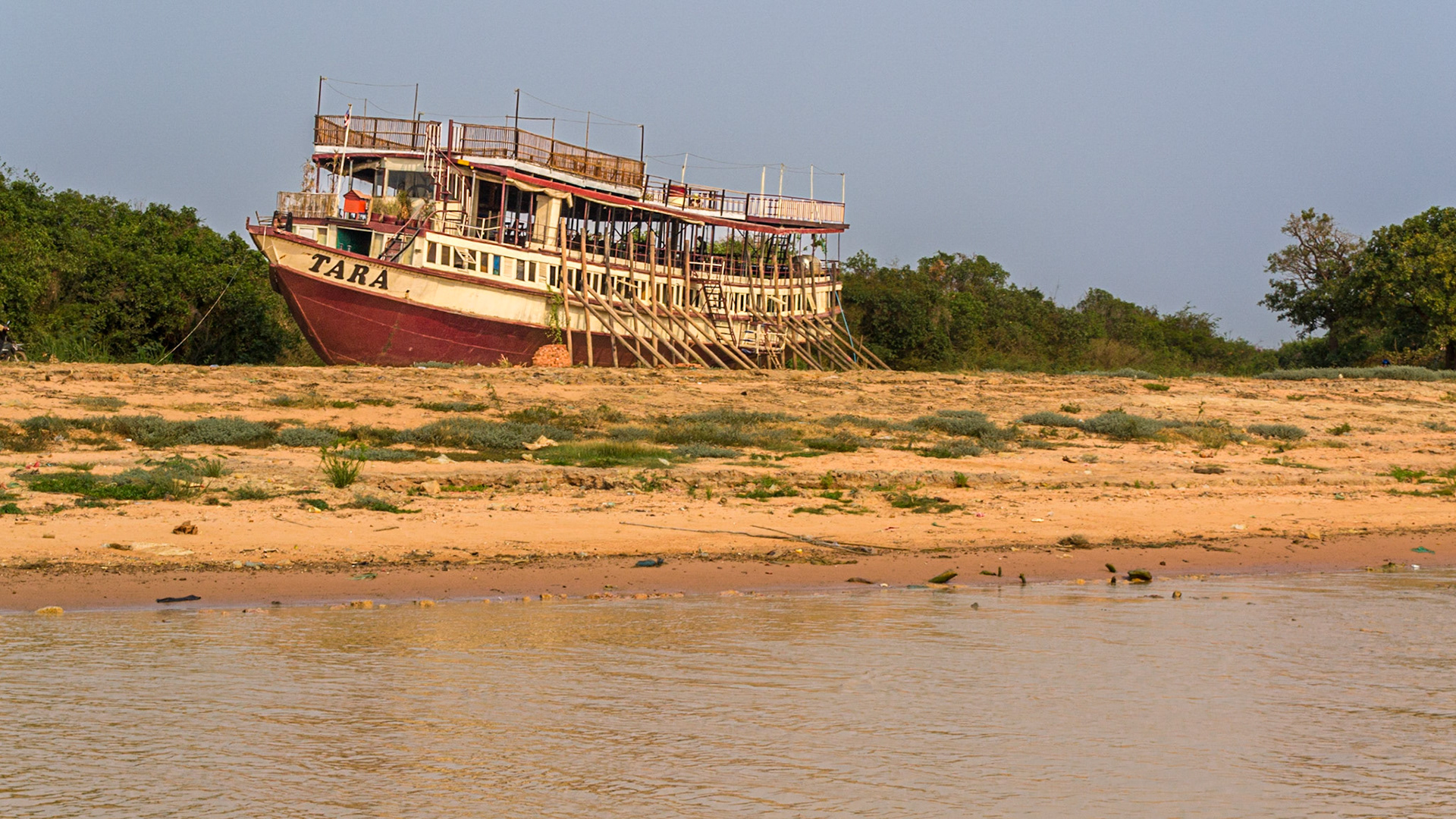
Extreme dry weather has left this large tourist boat high and dry on the riverbed far from the remaining meagre water channel..
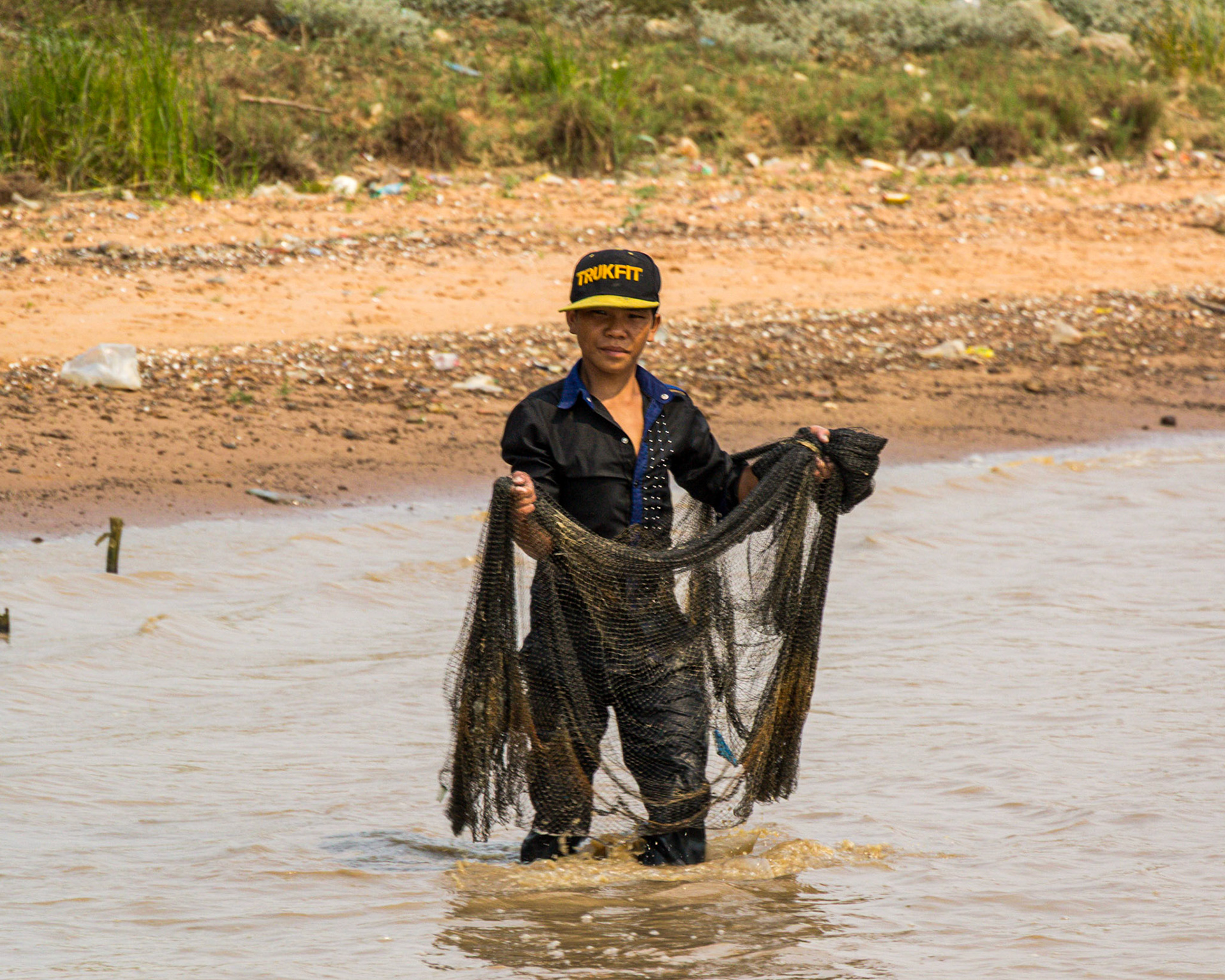
A local fisherman trying his luck in the muddy water.
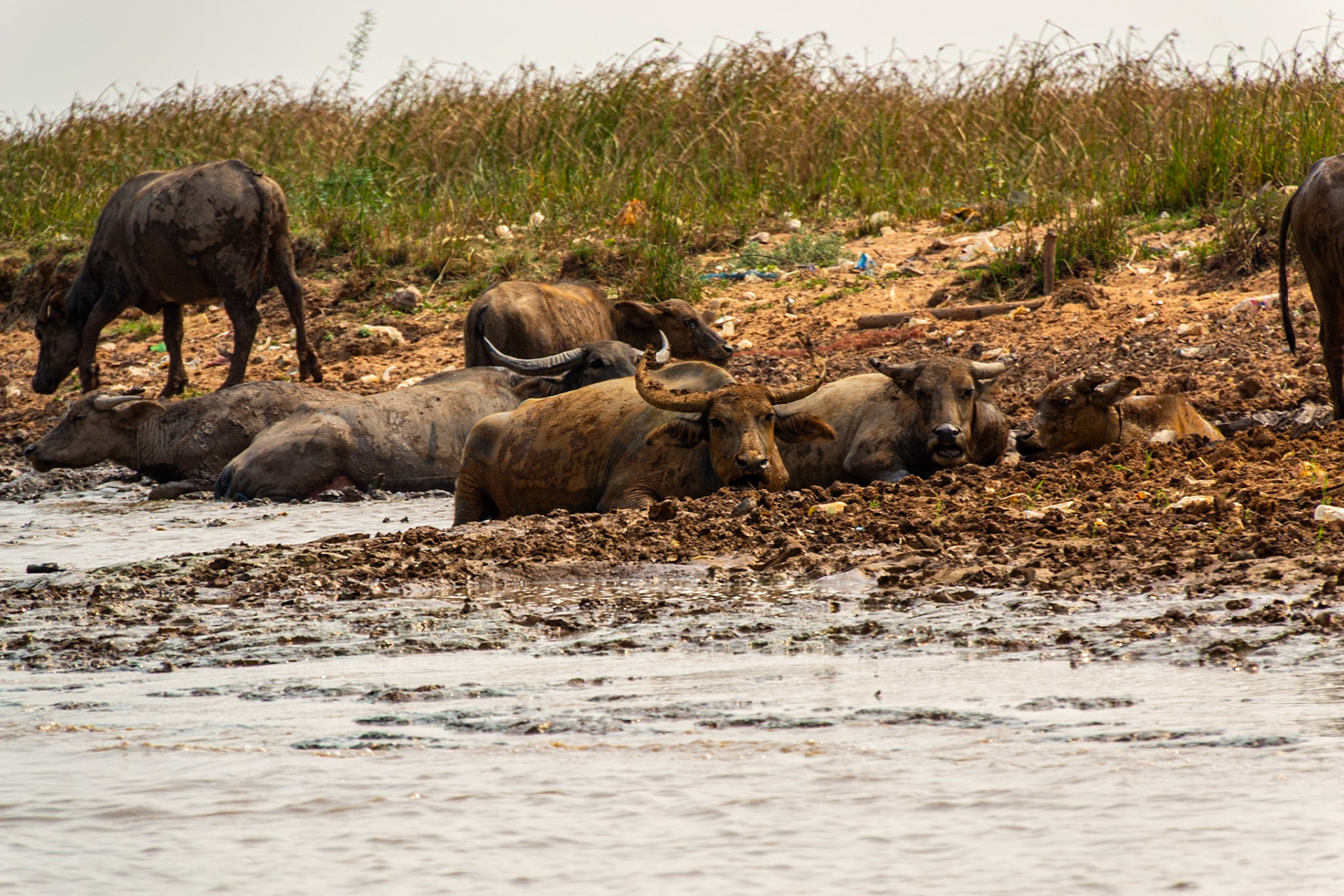
Water buffalo revel in the muddy conditions.
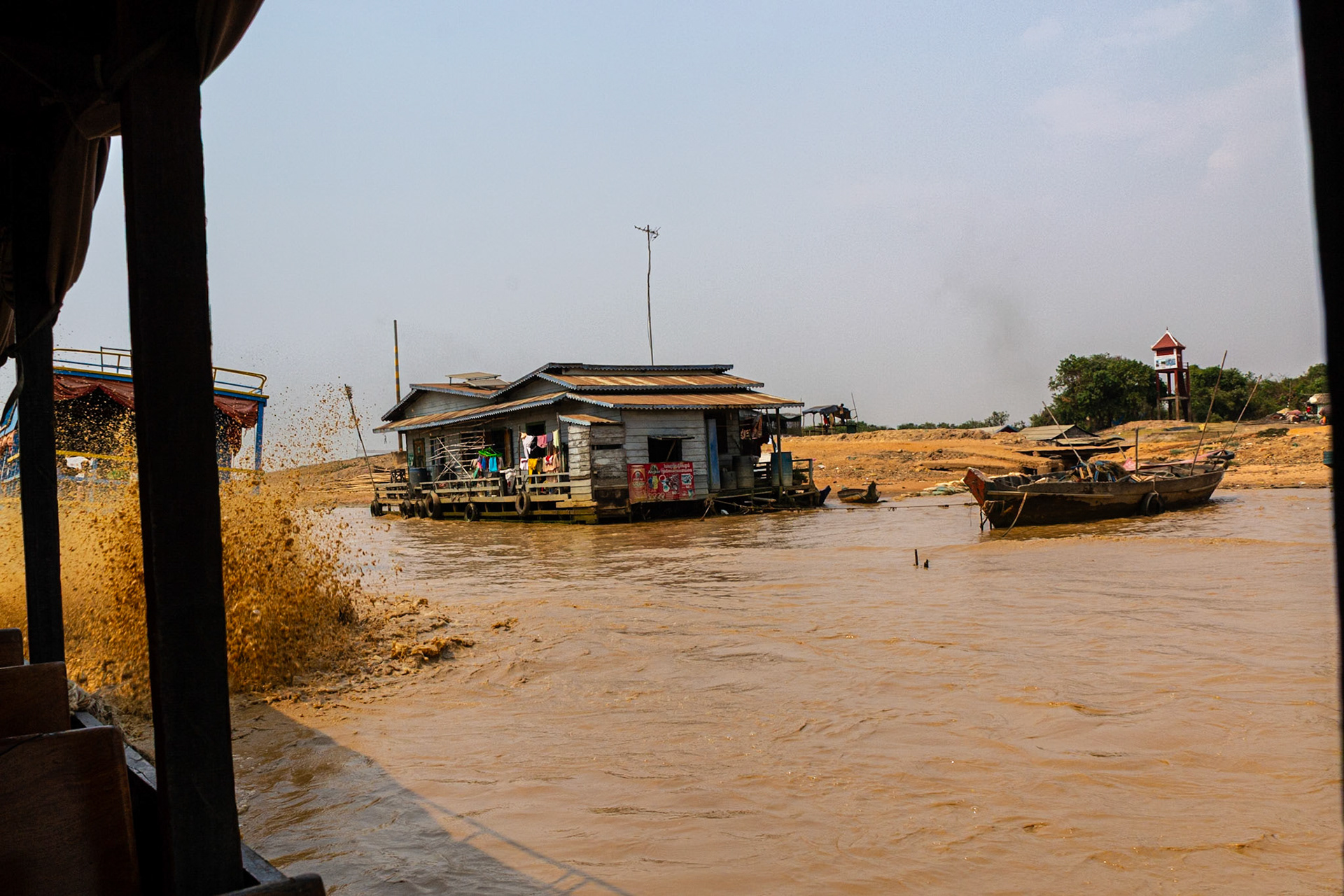
Muddy spray erupts behind us as our boat forces its way through the shallow water.
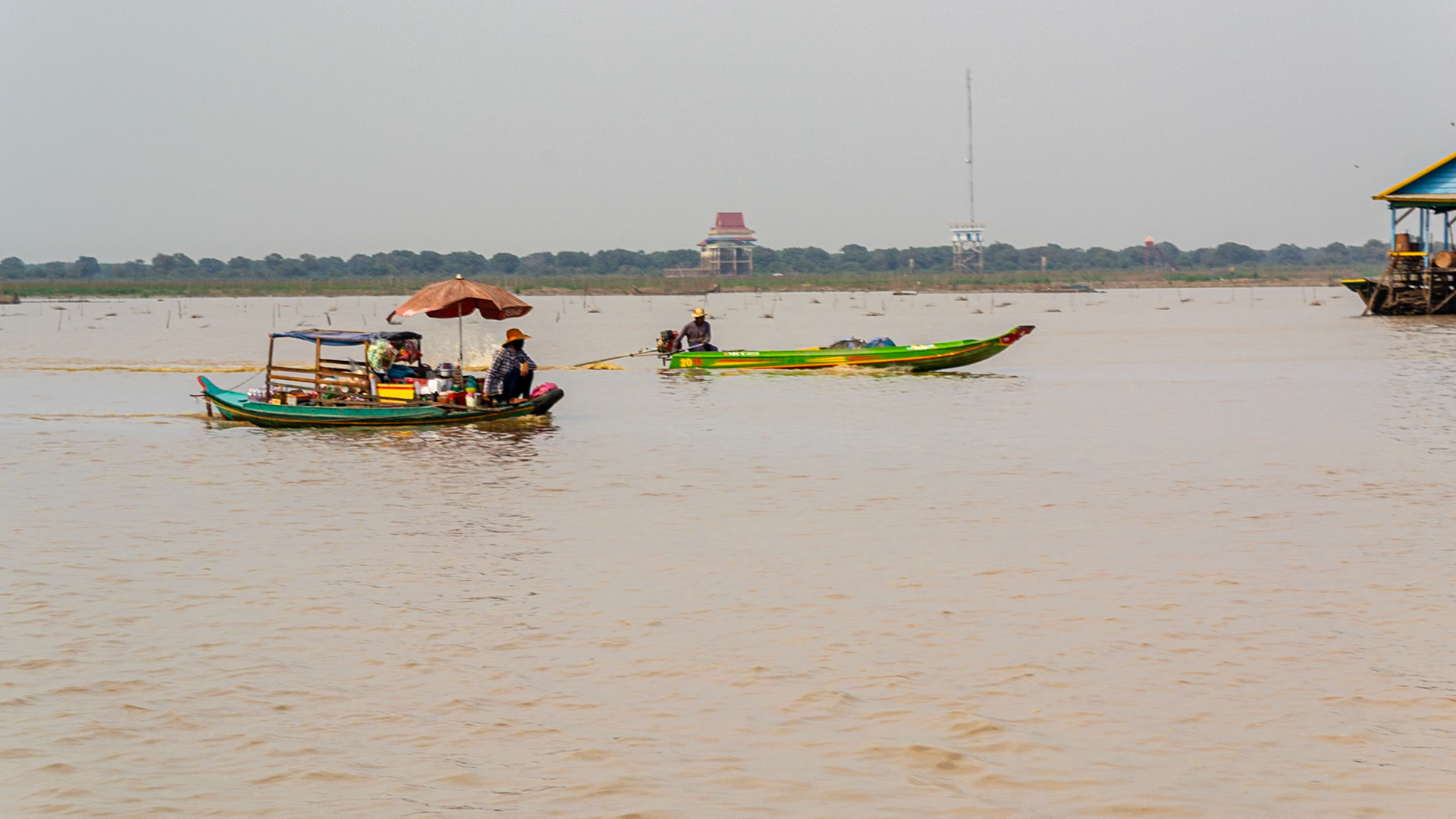
We pass boats of all shapes and sizes as we enter the vast lake system.
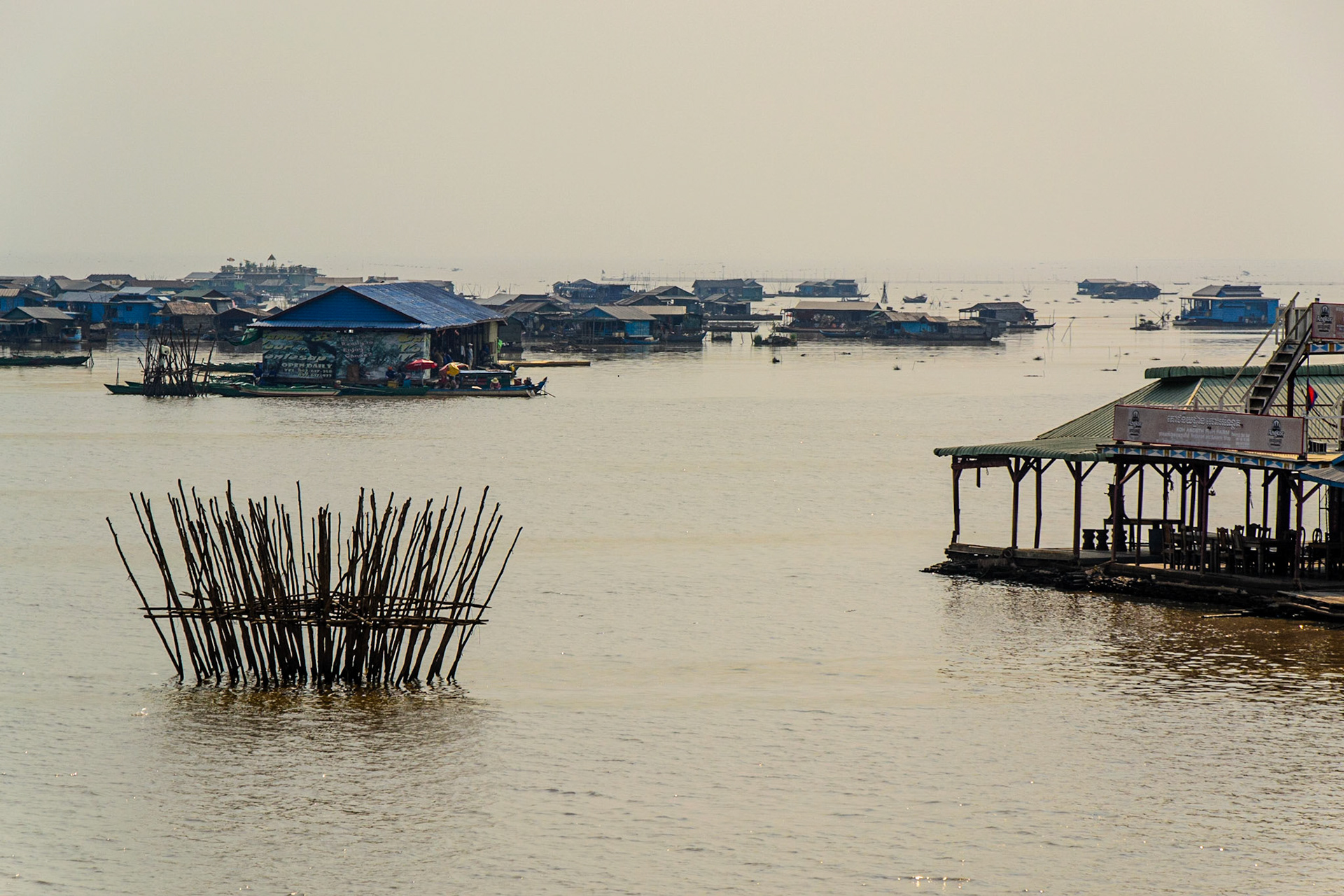
The vast extents of the lake meet the horizon.
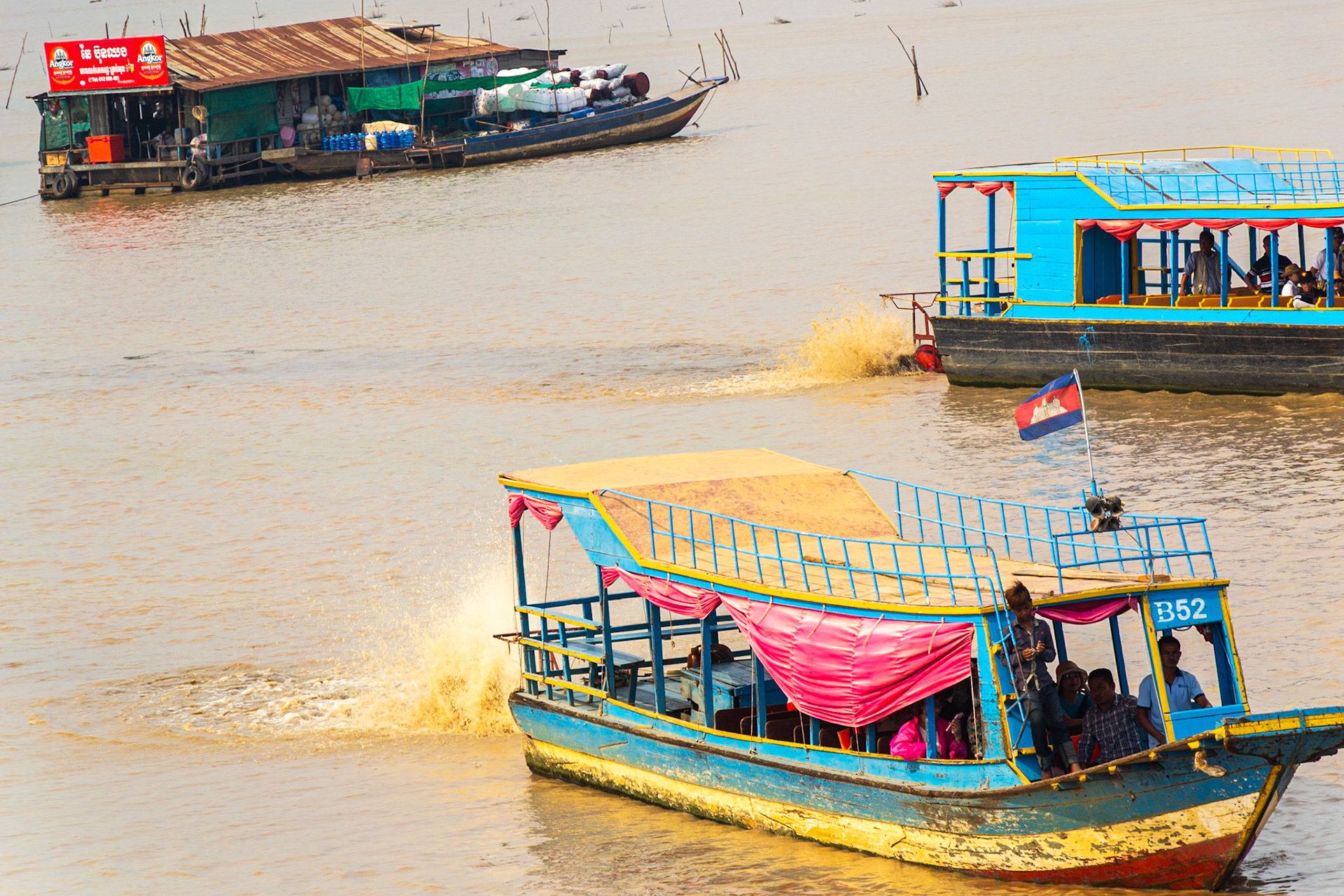
Water ferries transport local families living on the lake.
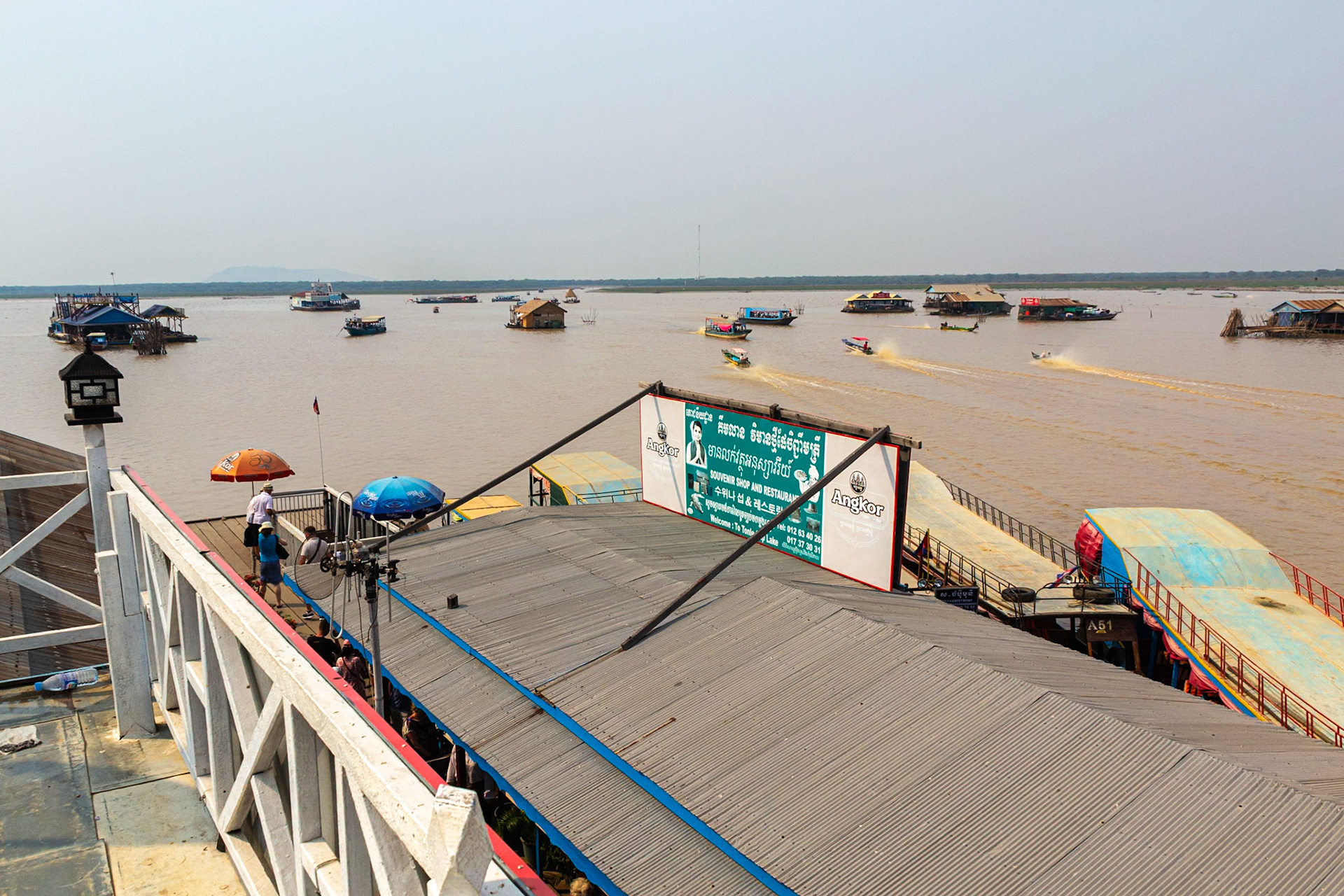
Boats, floating houses and commercial buildings comprise the lakes vibrant community.
